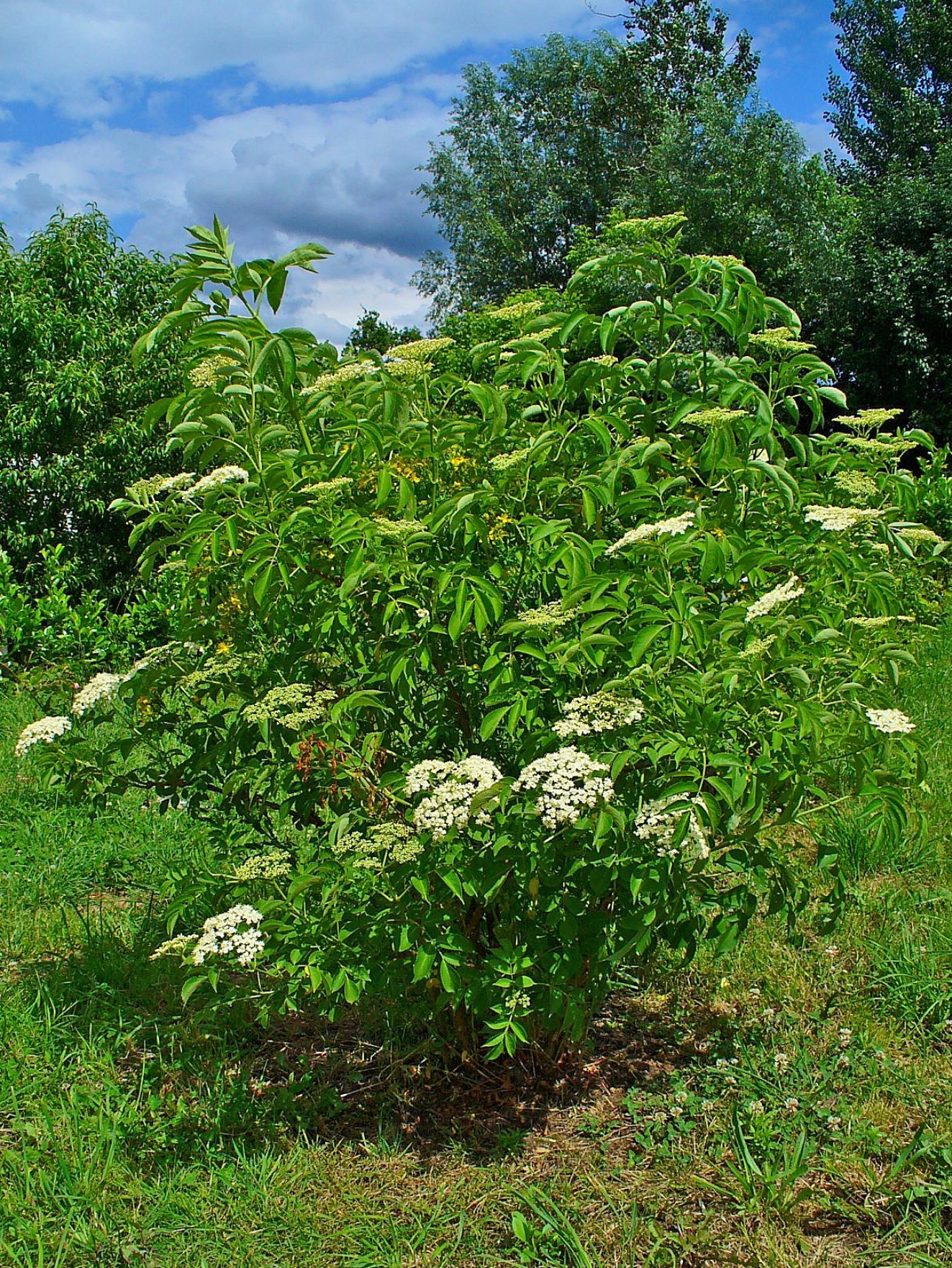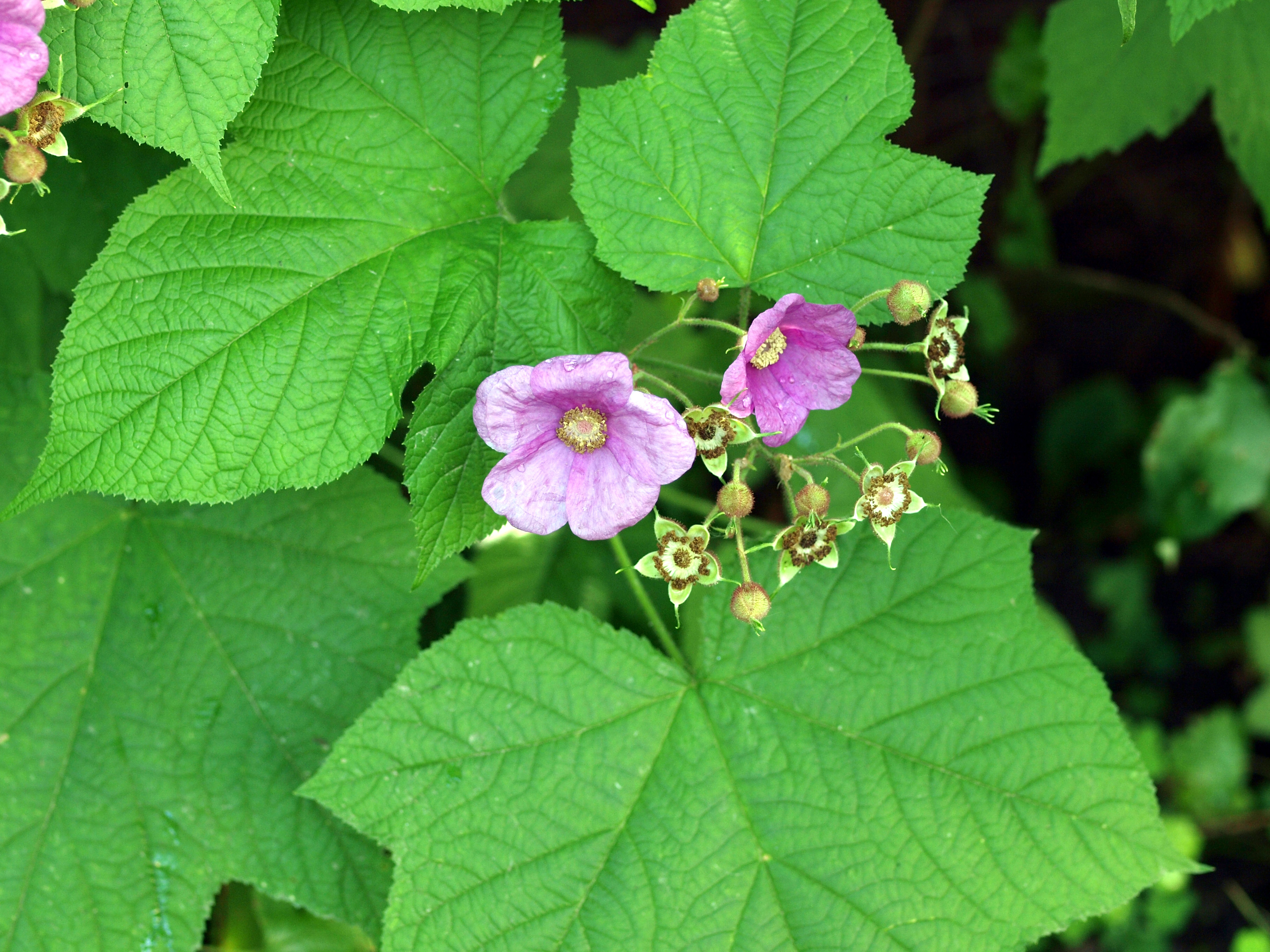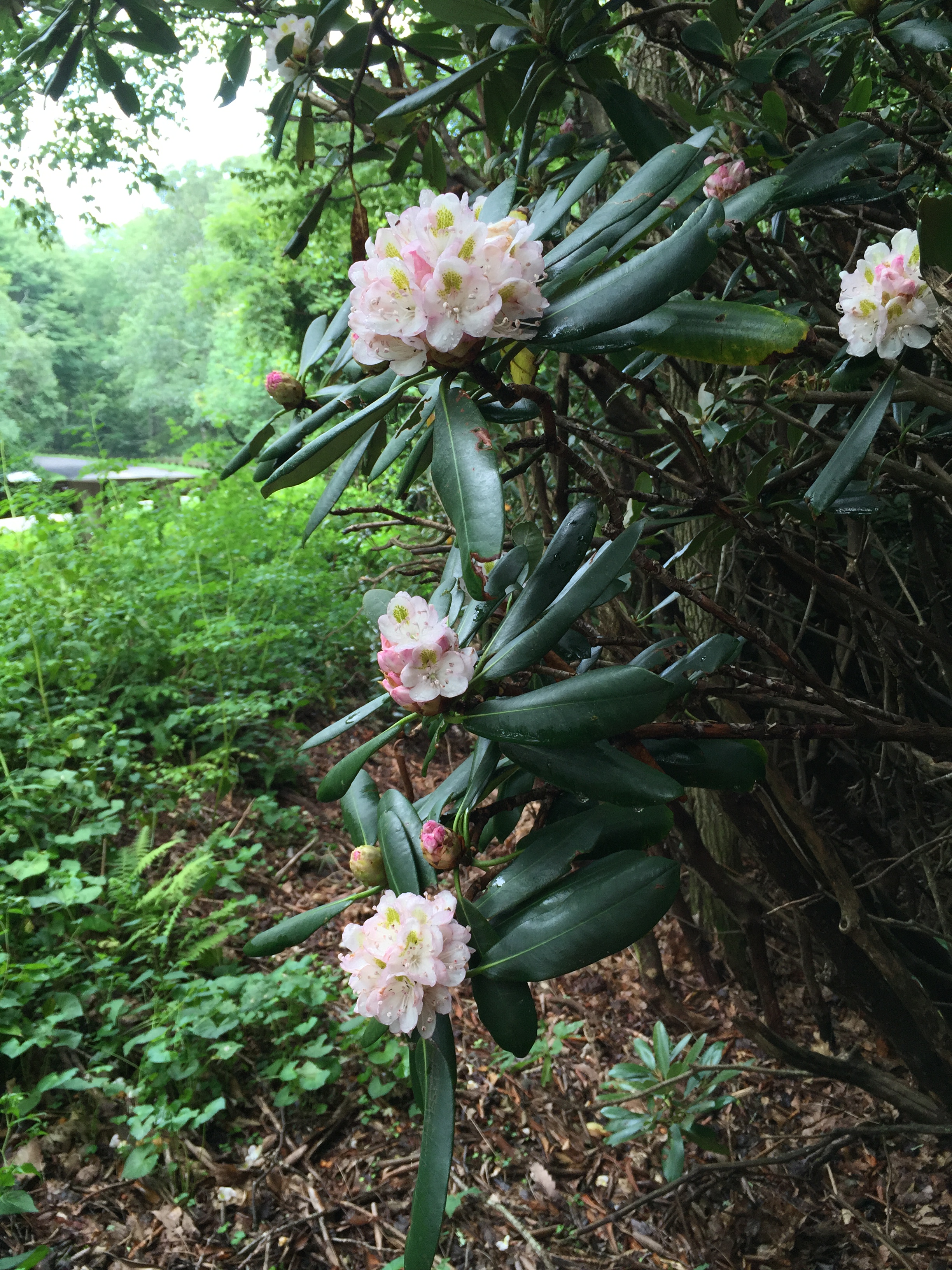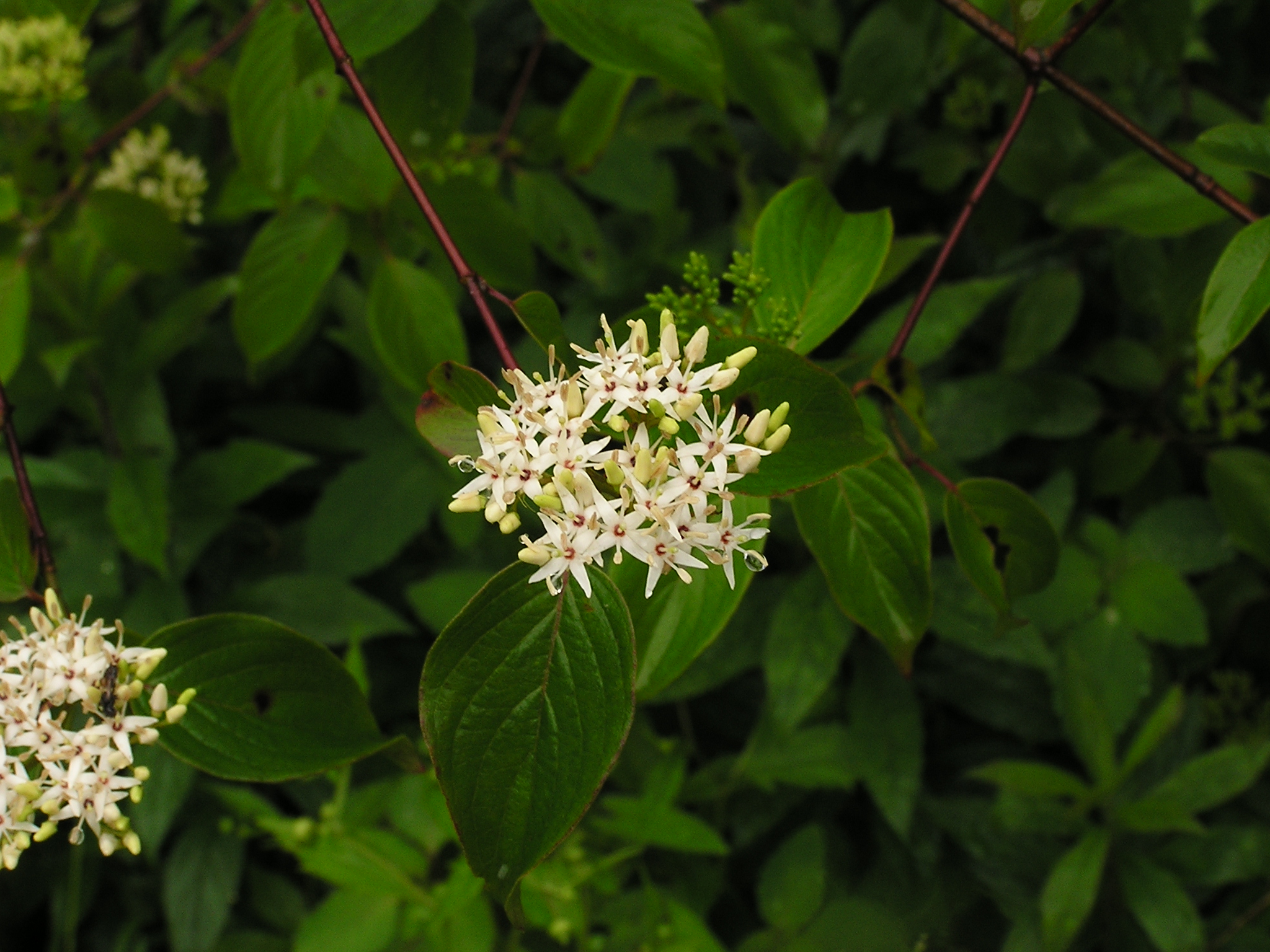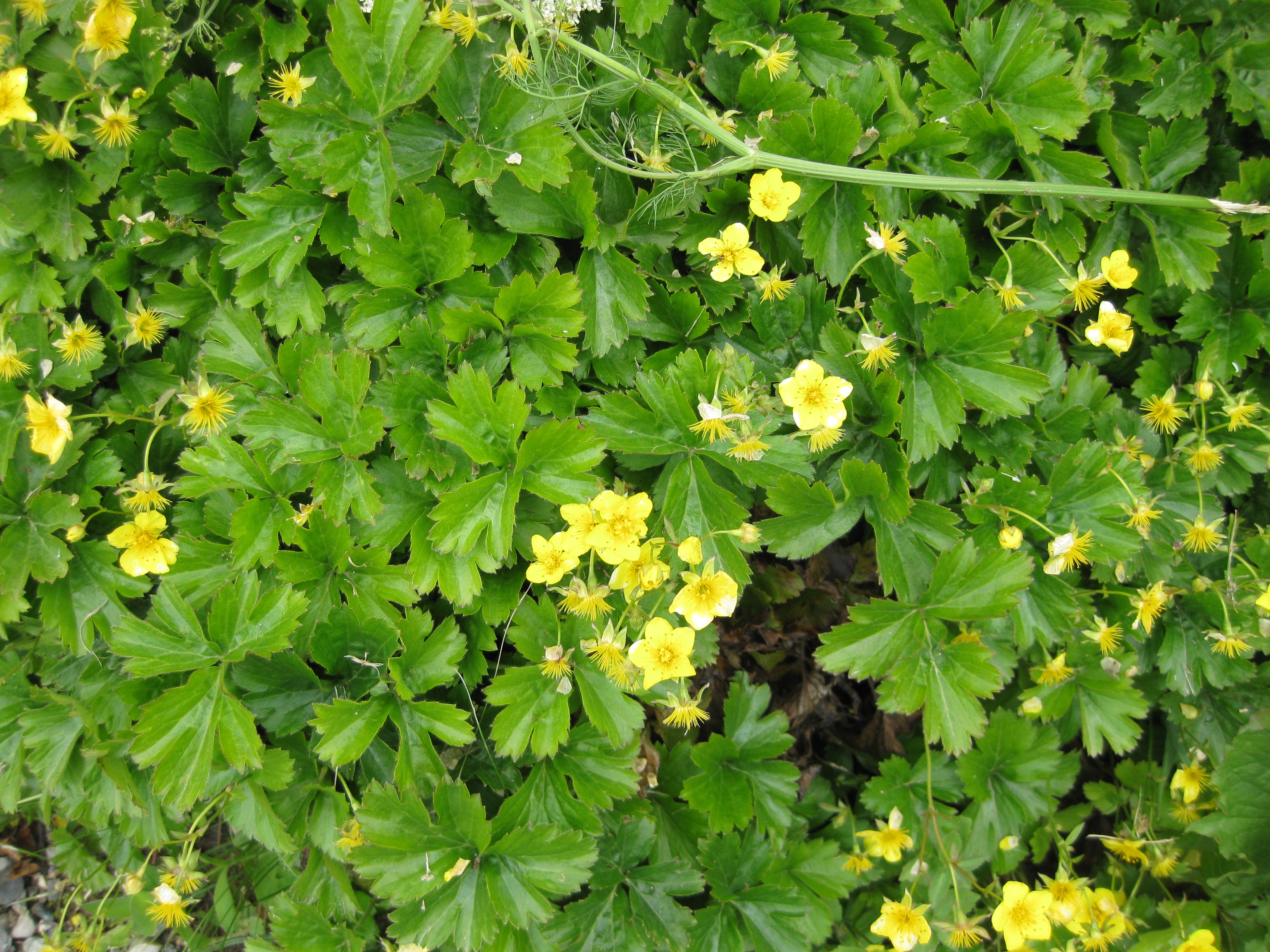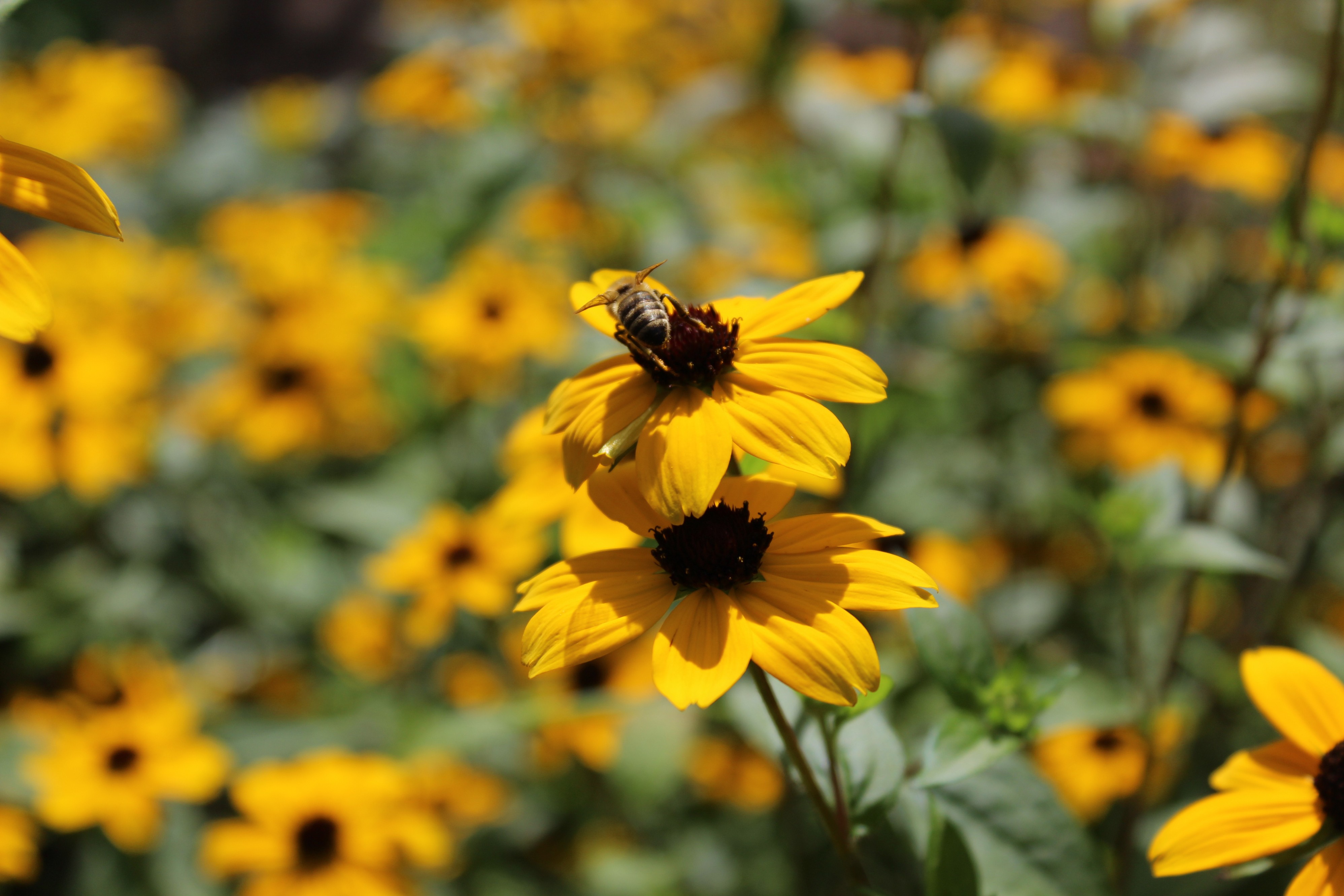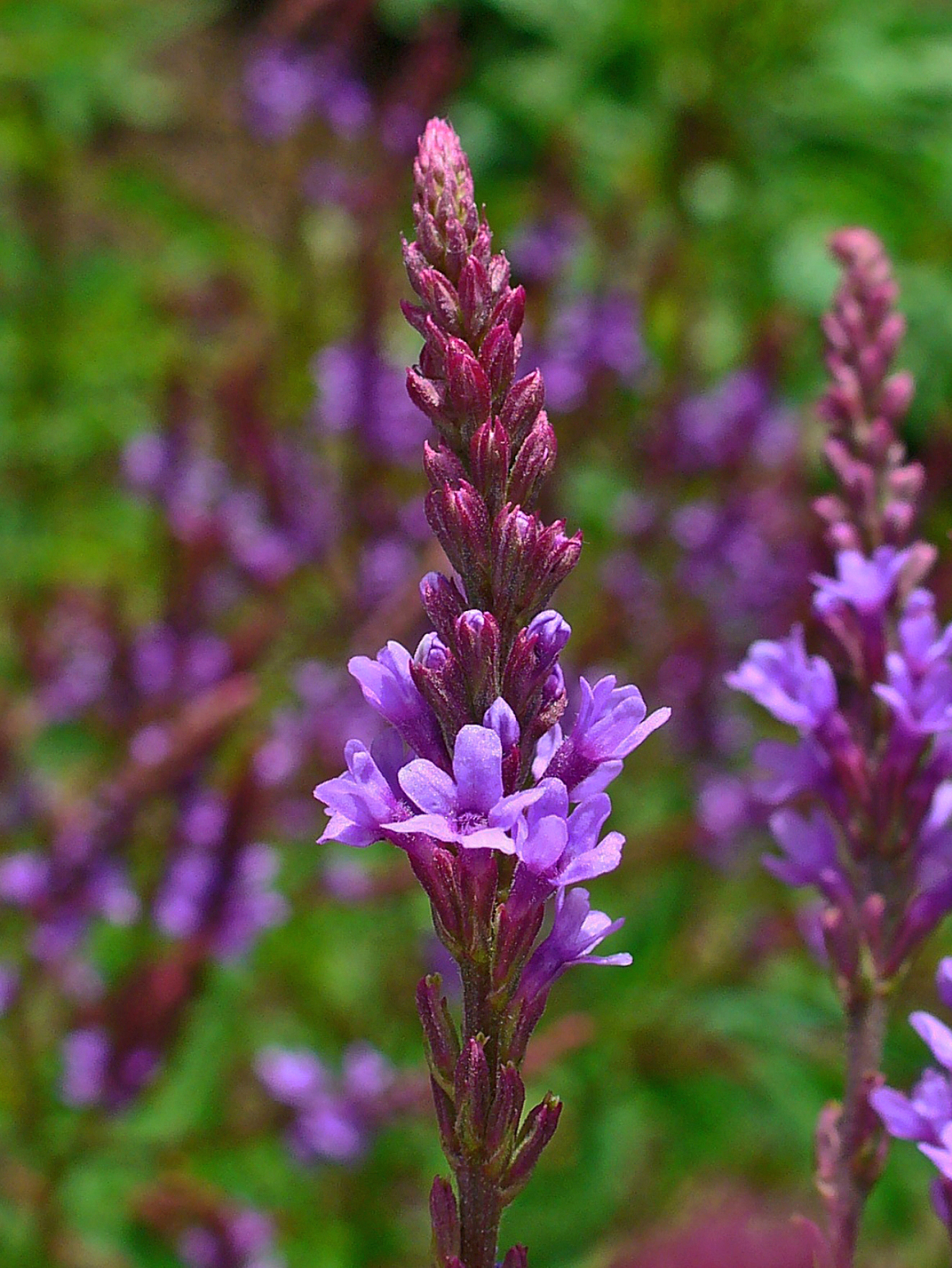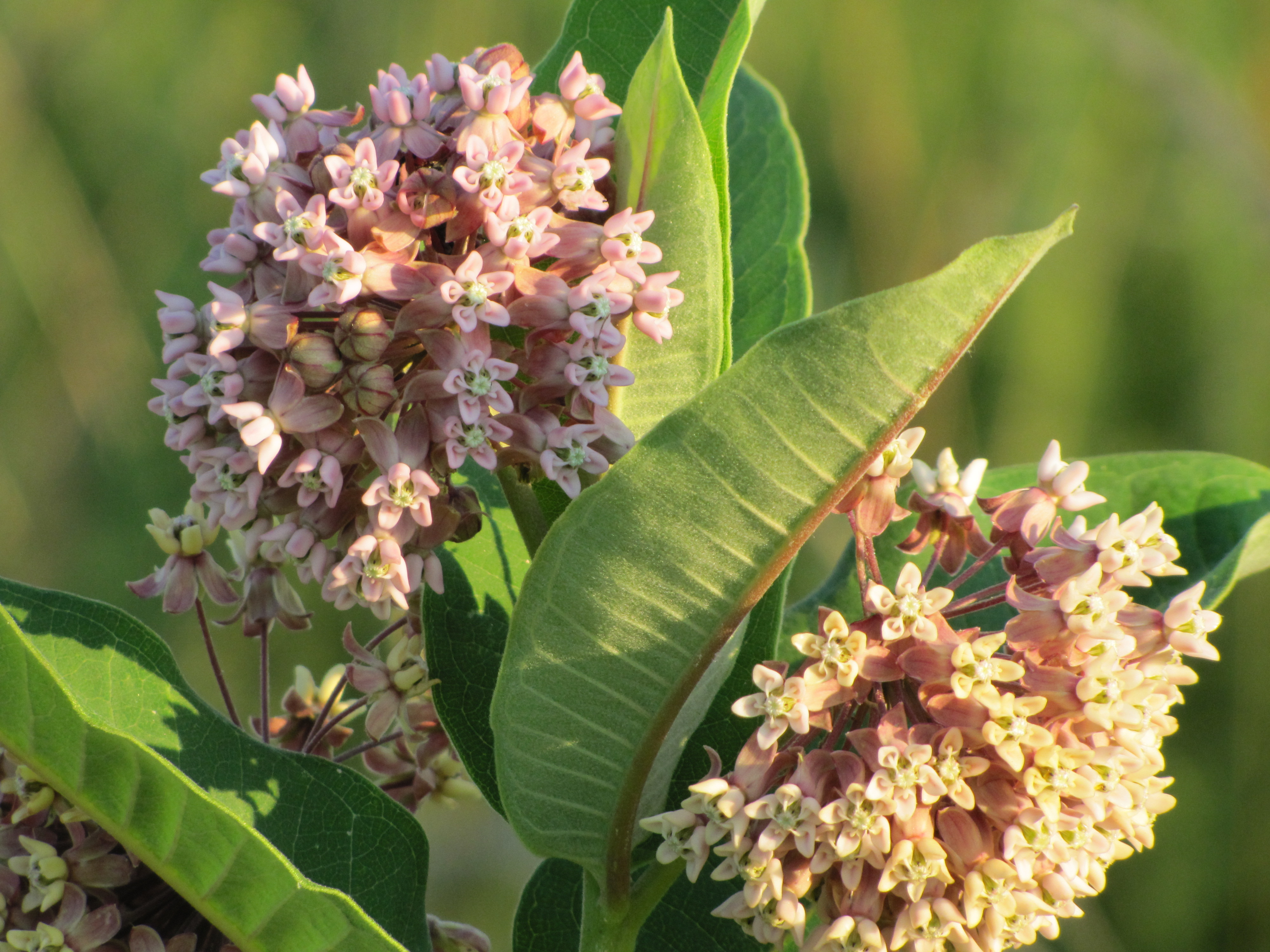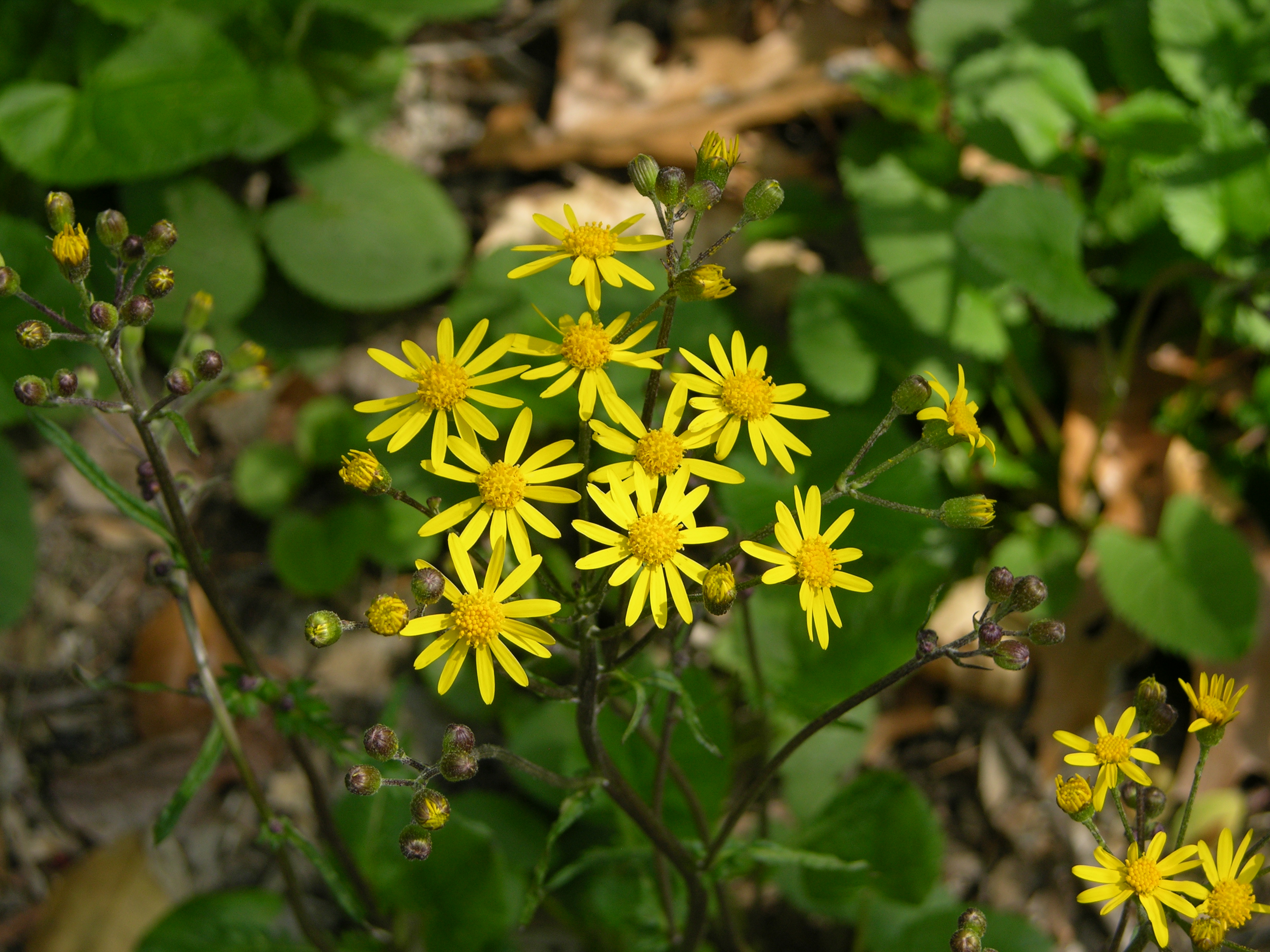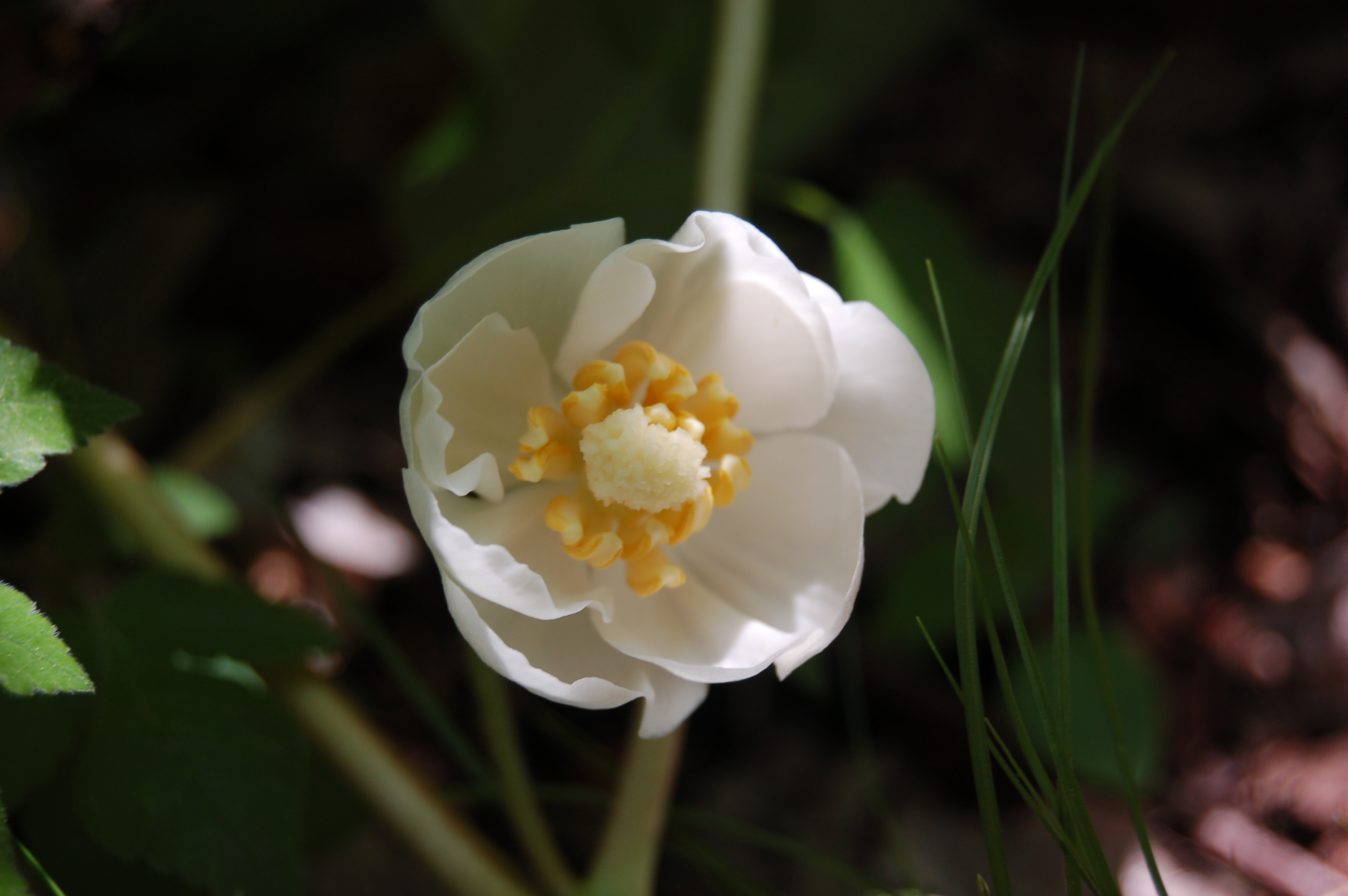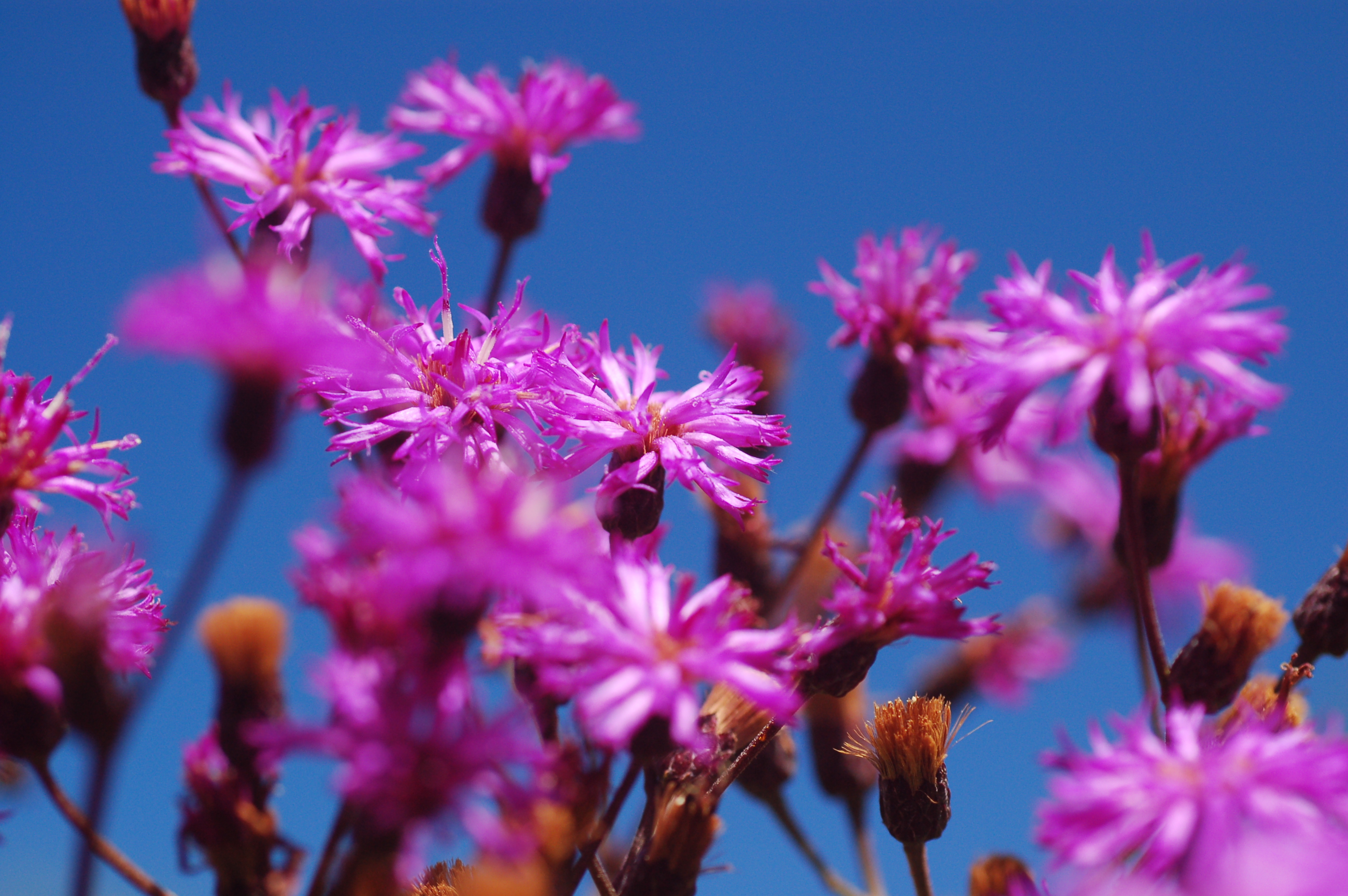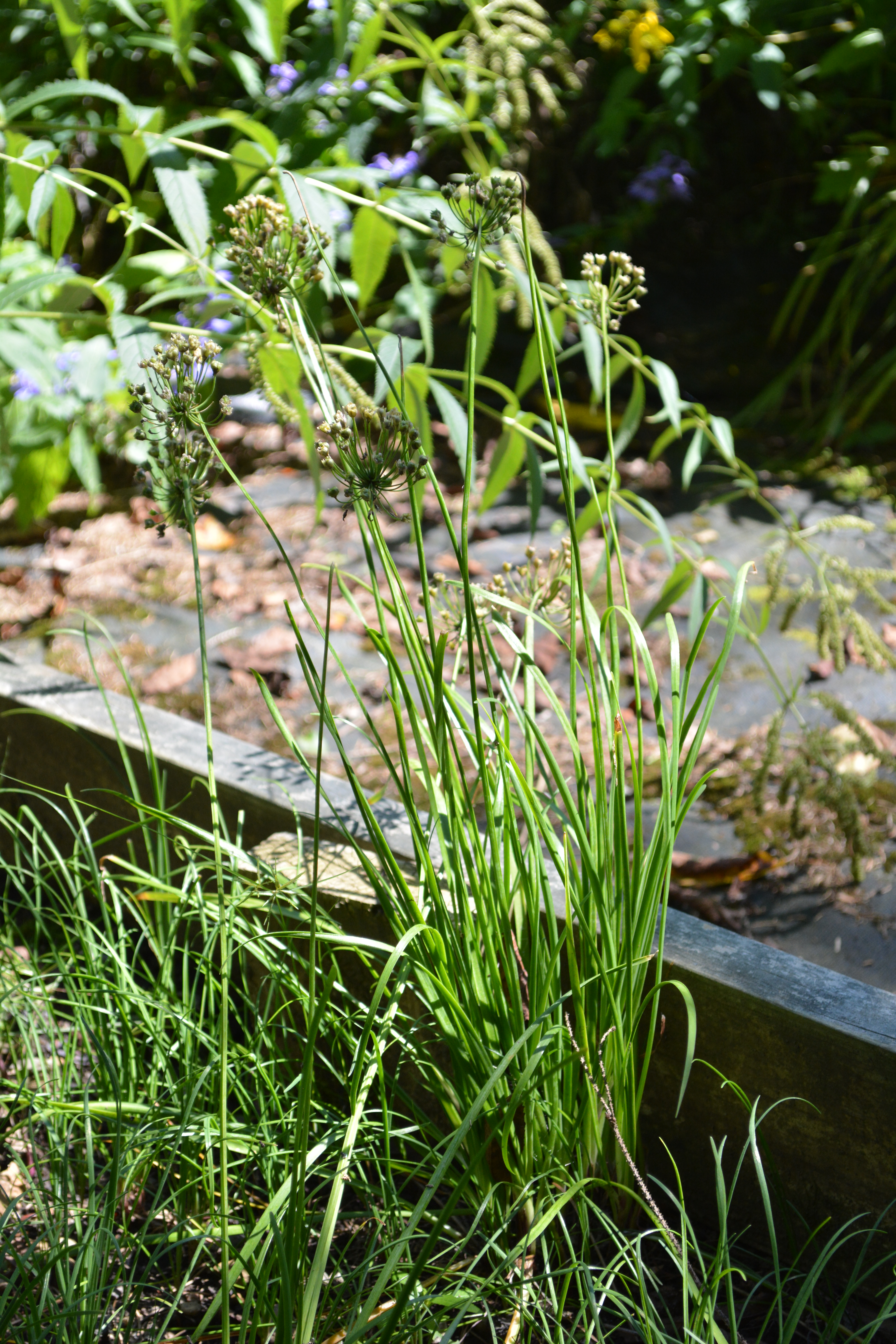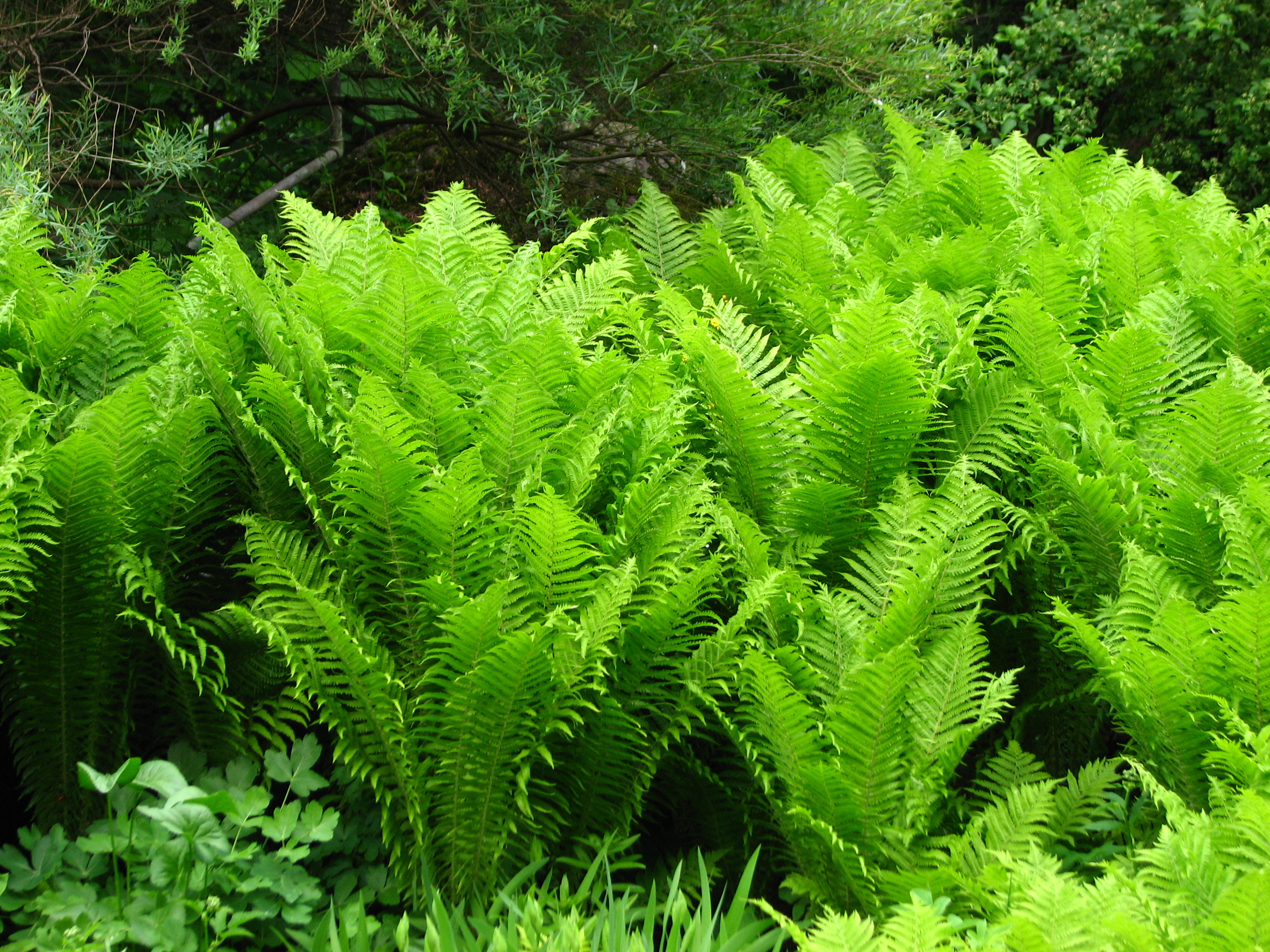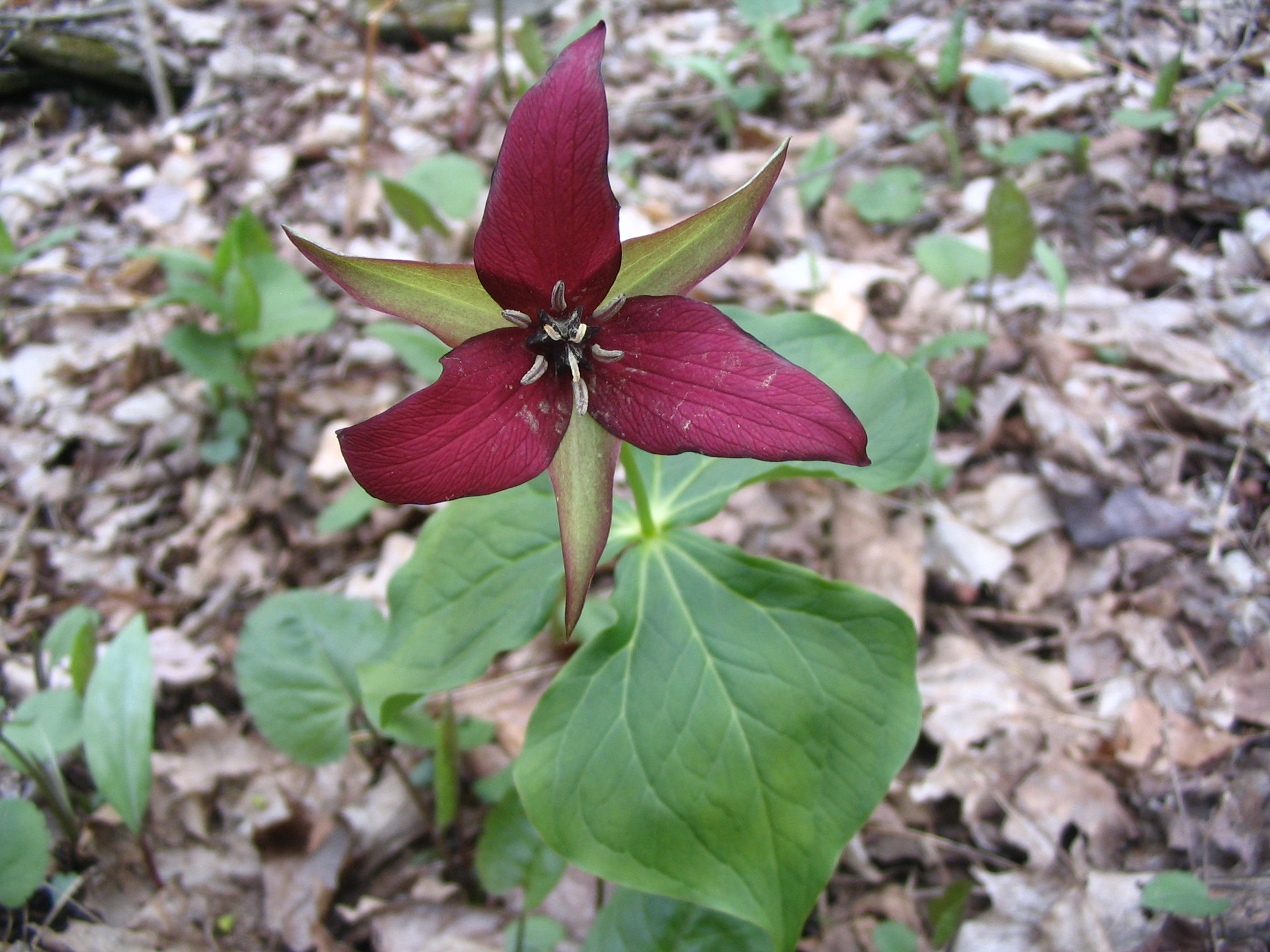Big Bluestem (Andropogon gerardii) - SUN - Also called Turkeyfoot
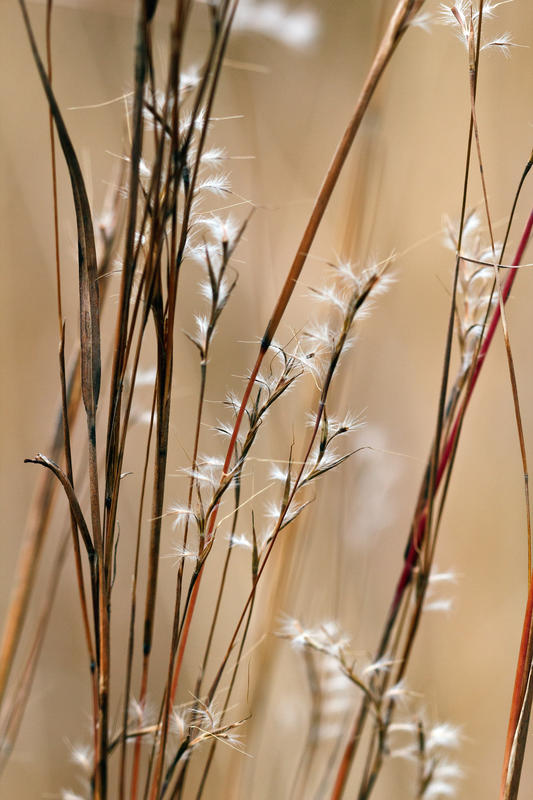
Clump-forming, stronglyvertical grass. Purplish inflorescence in late summer followed by 3-pronged seed head. Plants turn orange-brown in fall. Height: 3-7'. Width: 3-5'. Average, well-drained soil. Keep clump free of weeds until well established. Cut back in March. Combine with Blazing Star, goldenrods, sunflowers, Joe-Pye and ironweeds in meadow and informal plantings. Rain garden plant. Deer resistant.
Blue-eyed Grass (Sisyrinchium angustifolium) - PART SUN
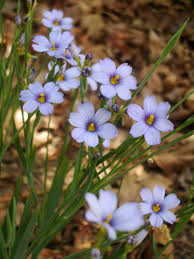
Star-shaped blooms at the tips of grass-like blades in late spring through early summer. Blooms only when in sun. A miniature member of the Iris Family. Height and width: 10-16". Part sun only. Moist, well-drained, rich soil. Individuals may be short-lived but new seedlings may form at the base of mature plants. Also self-sows here and there. Nice among low groundcovers or rocks, in low, moist meadows or as an edger. Also combine with spring or fall-blooming crocus. Shadier rain garden plant.
Bottlebrush Grass (Elymus hystrix) - PART SUN TO SHADE
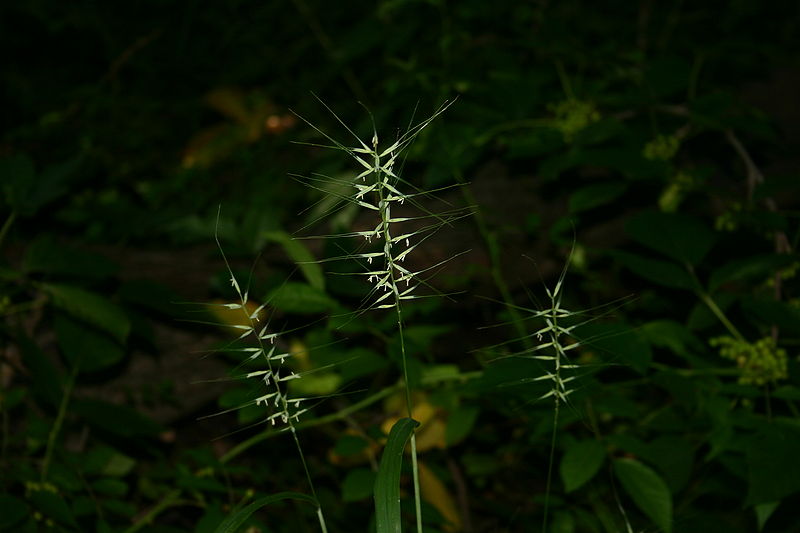
Bristle-like inflorescence in summer. Turns tan in fall. Height: 2-5'. Width: 18". Part sun, but will tolerate quite a bit of shade. Average soil. Keep clump free of weeds until established. Cut back in March. Use in meadow gardens or open woods. Will self-sow, but not aggressively. Rain garden plant. Deer resistant.
Indiangrass (Sorghastrum nutans) - SUN
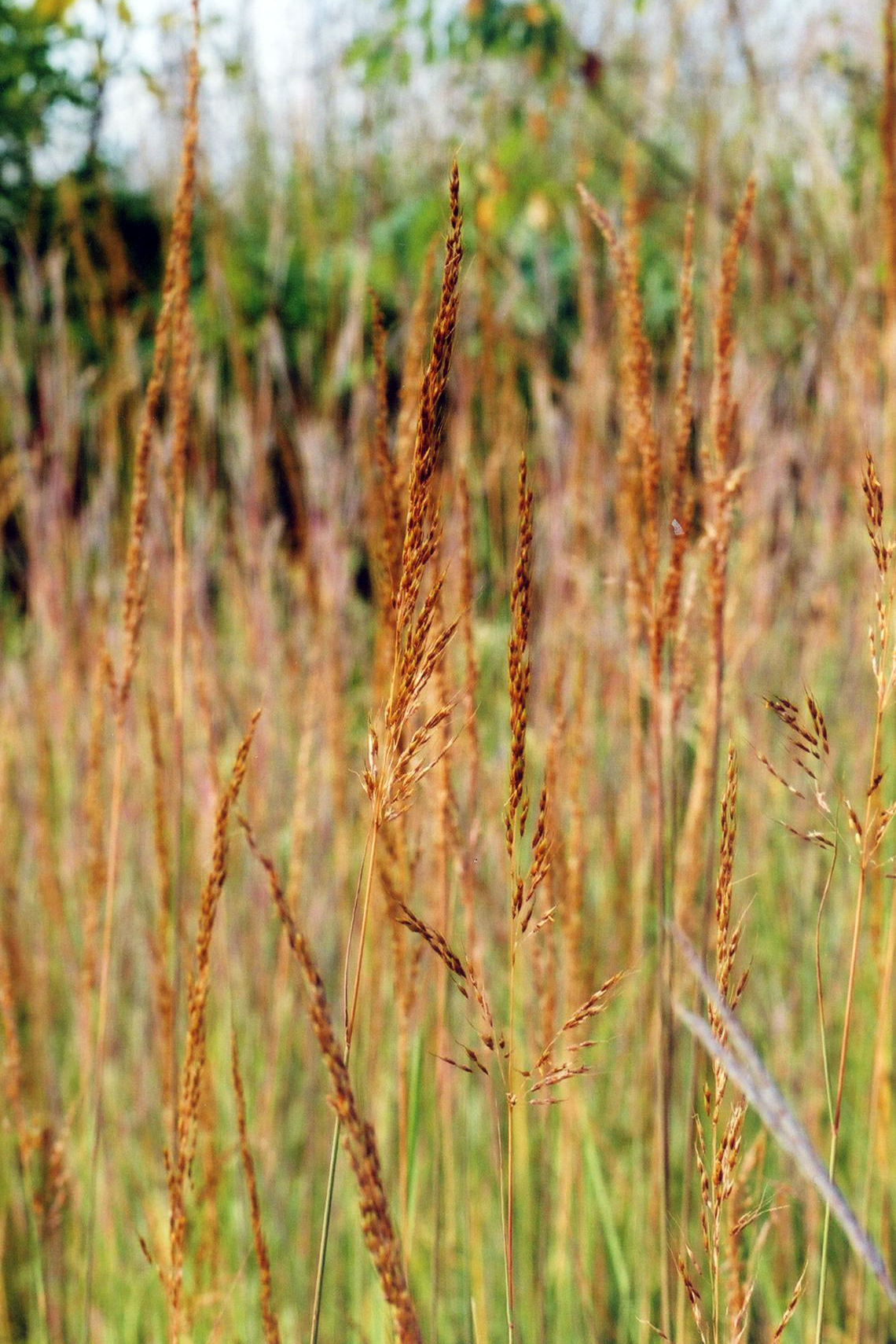
Tall, arching and clump-forming. Coppery colored inflorescence in late summer and fall. Height: 3'. Width: 2-3'. Sun. Average soil. Use as a specimen in borders or in meadows. Self-sows. Cut back in March. Excellent wildlife plant. Deer resistant.
Little Bluestem (Schizachyrium scoparium) - SUN
Clump-forming grass. Emerges blue-gree, turns brownish-red in fall. Height: 2-3'. Width: 1-2'. Sun. Average soil. Keep clump free of weeds until well-established. Use as a vertical accent in a border or in mass between wild and cultivated areas, especially on hillsides. Mixes micely with yellow composites. Cut back to 6" in late March. Seeds attract birds. Deer resistant.
Pennsylvania Sedge (Carex pensylvanica) - PART TO FULL SHADE
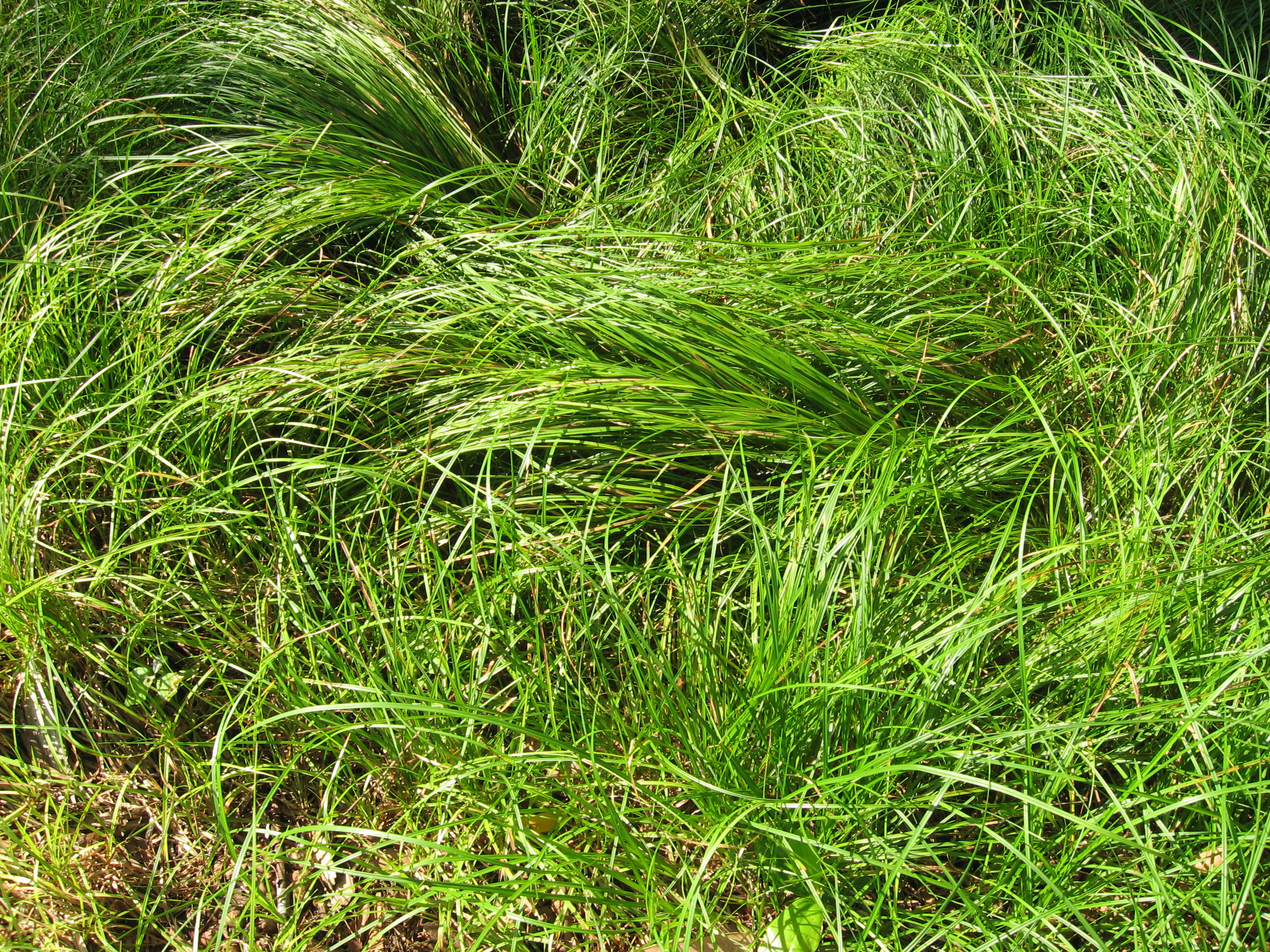
Inflorescence red-purple in very early spring. Appears as a tuft of grass. Height: 8-16". Width: 1-2'. Part to full shade. Spreads by underground stolons and self-sows. A grass substitute for dry, shady areas under trees. Never needs cutting unless to tidy. Spaces between tufts can be planted with bulbs such as fall or spring blooming crocus. Also nice in shady rock gardens or on rocky slopes. Deer resistant.
Riverbank Wildrye (Elymus riparius) - PART SUN
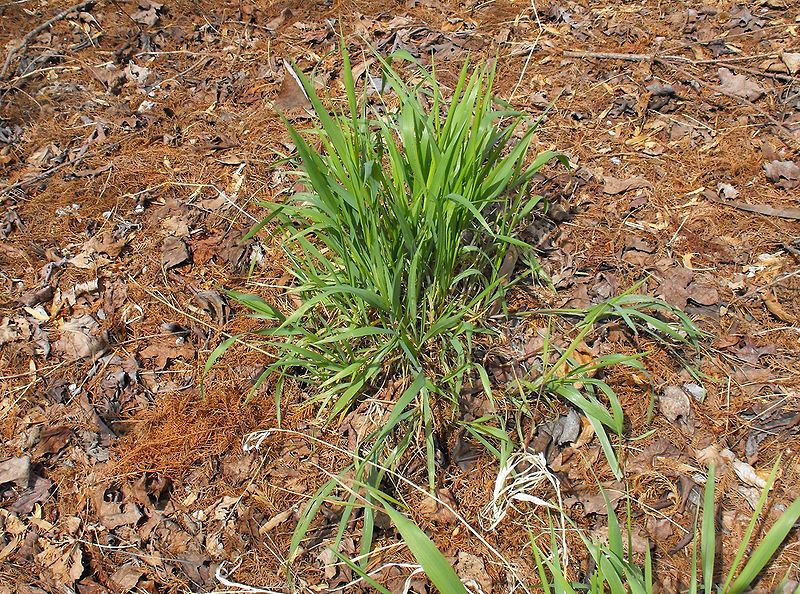
Grass. Wide-leaved tufts. Short, bristle-like inflorescences in mid-summer. Turns tan in fall. Height: 4-5'. Part sun. Moist soils only. Cut back in March. Best for naturalizing by a pond or stream. Self-sows. Rain garden plant. Deer resistant.
Switchgrass (Panicum virgatum) - SUN TO PART SUN - Also called Panic Grass
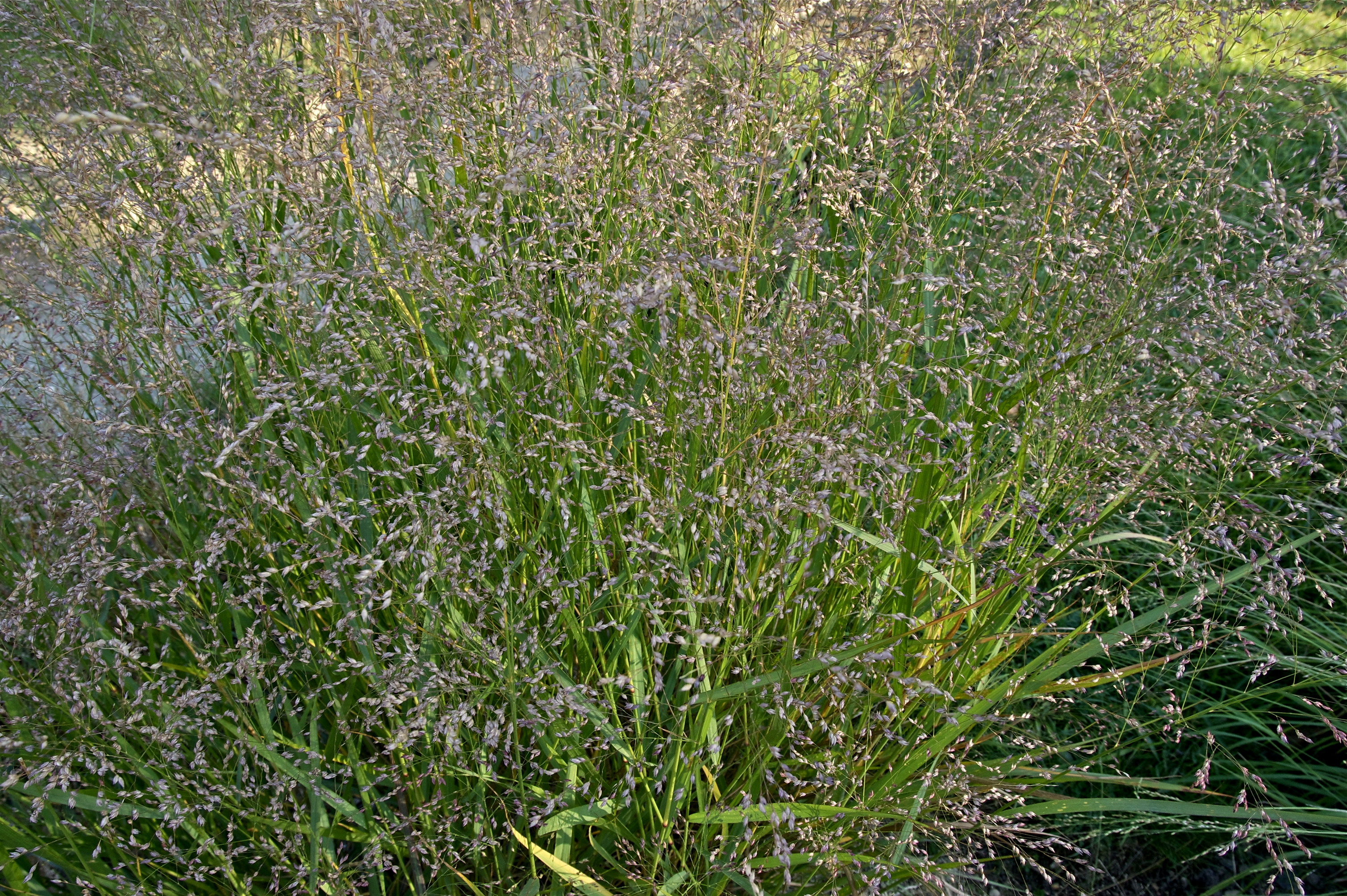
Clump-forming, with much natural color and size variation. Airy, elegant seedheads turn tan in fall. Height: 3-6'. Width: 2-5'. Sun to part sun. Average soil. Divide clumps every 5 years. Use for massing or as a specimen plant in a border. Allow stems to remain up through winter to provide food and cover for birds. Cut back in March. Easy. Rain garden plant. Deer resistant.
Wild Rye (Elymus virginicus) - SUN TO PART SUN
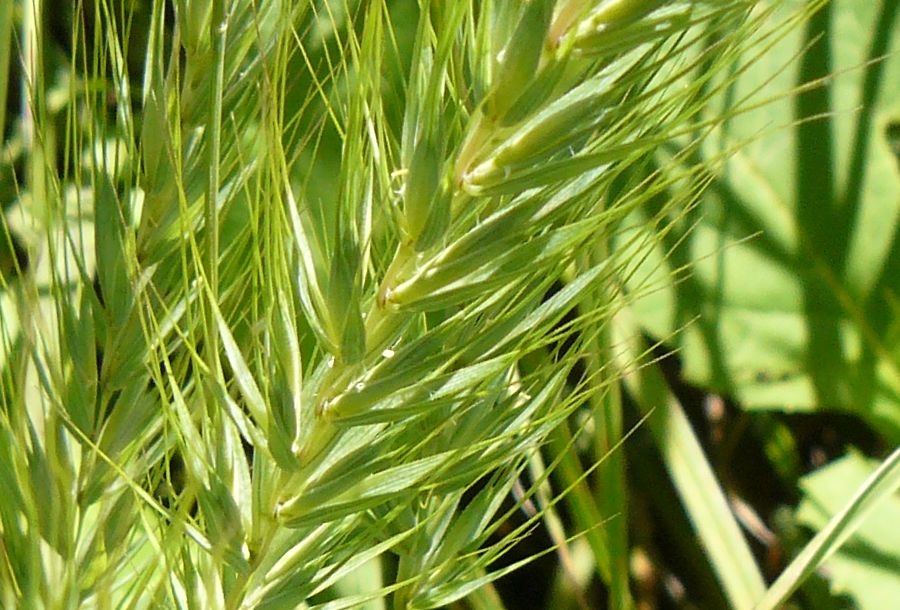
Grass. Grows in tufts. Height: 2-5'. Width: 1'. Stiff and straight. Turns tan in fall. Sun to part sun. Moist, average soil. Nice near ponds and streams. Self-sows. Rain garden plant. Deer resistant.
Wool Grass (Scirpus cyperinus) - PART TO FULL SUN - Also called Rush
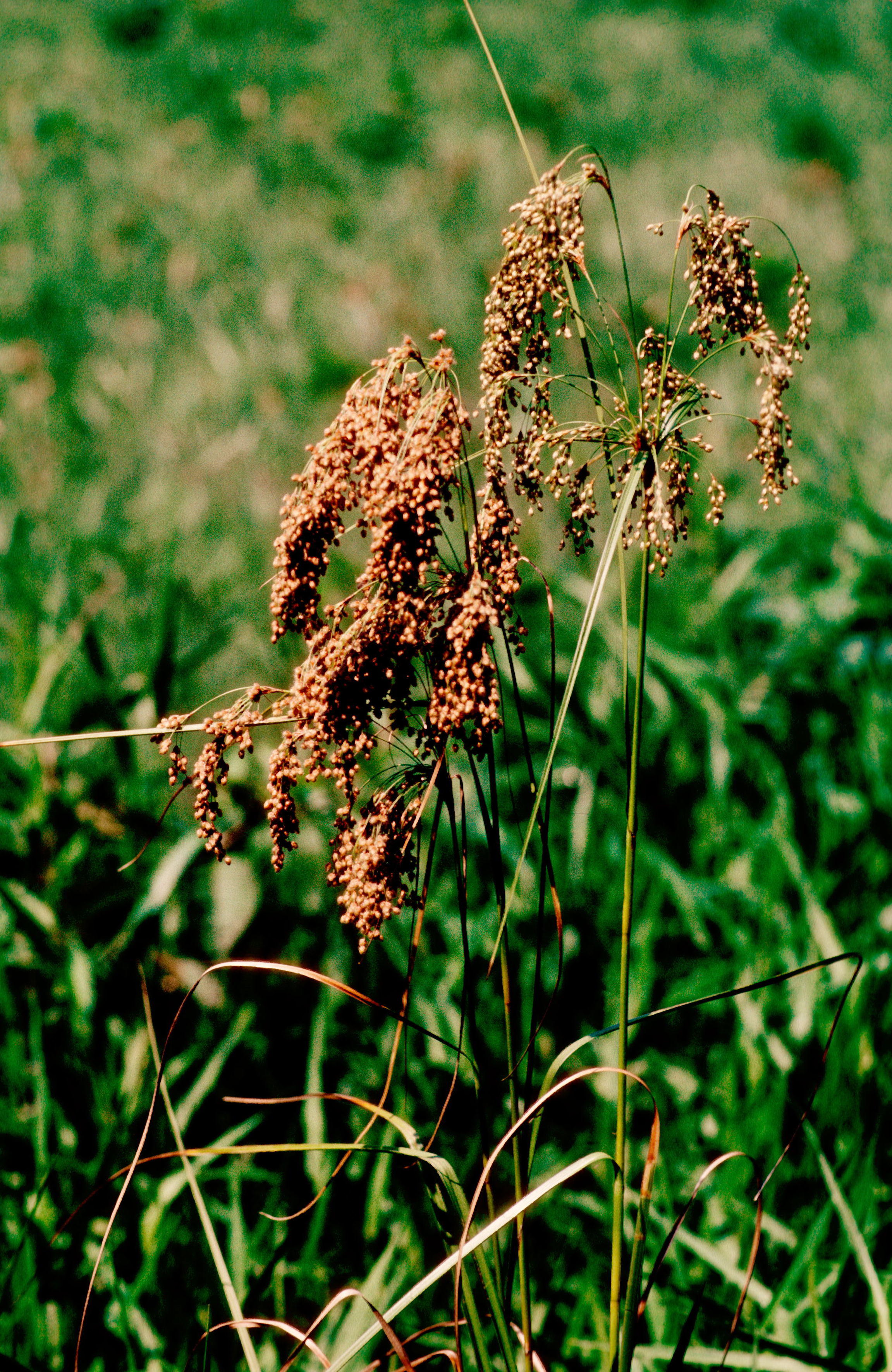
Strongly vertical. Inflorescence radiates out from one point, then radiates again, like an exploding firework. Matures to fuzzy, brown, dangling seed balls late summer to fall. Height: 3-5'. Width: 2'. Part to full sun. Moist to wet soil, but quite adaptable to damp, open areas. Grows naturally in clumps in wet places. Deer resistant.
American Bladdernut (Staphylea trifolia) - PART SHADE
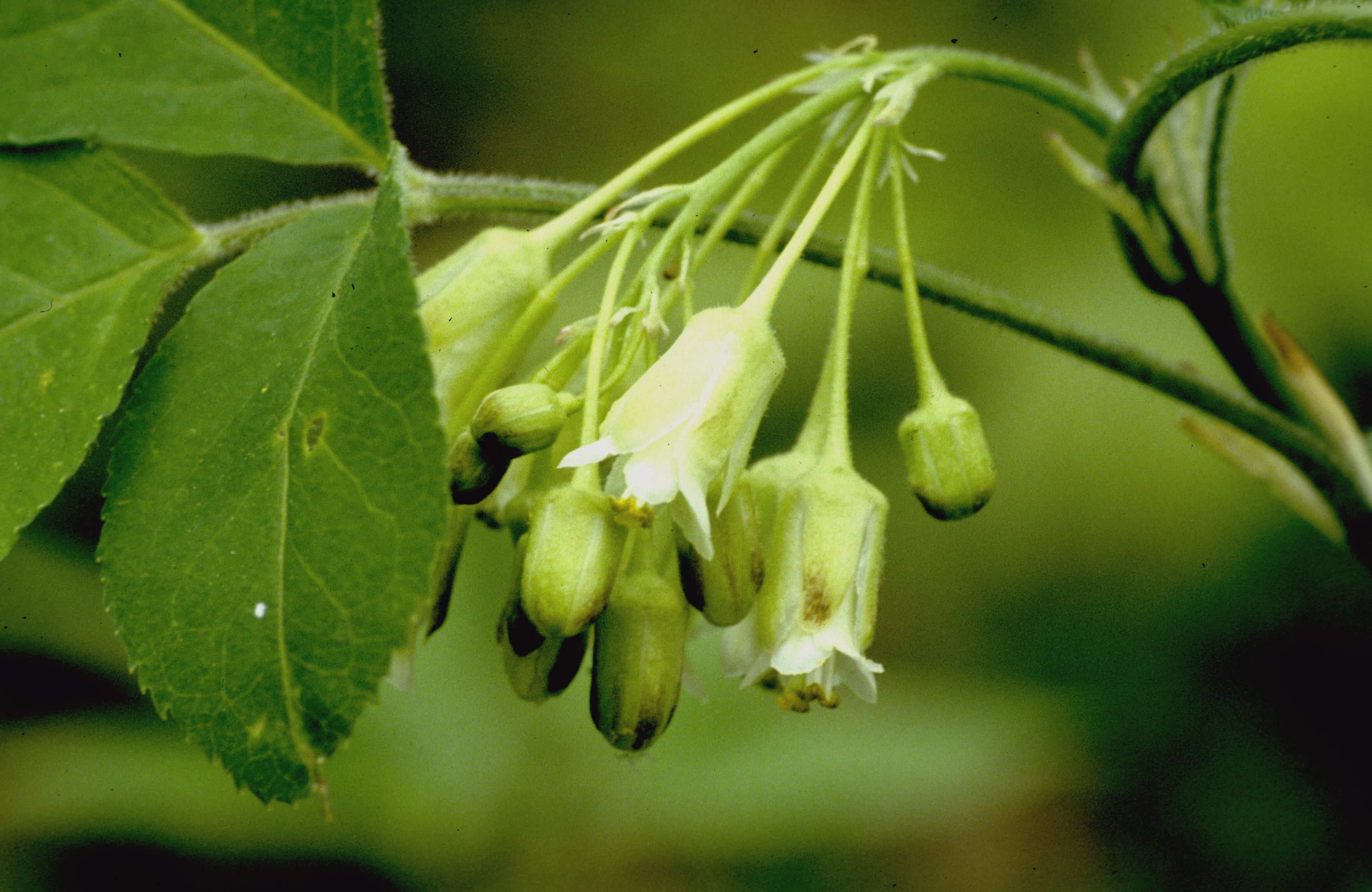
Deciduous, suckering shrub/small tree. Drooping clusters of white, bell-shaped flowers in spring. Interesting, 2-3" long, inflated papery pods containing large seeds which rattle inside when dry. Height: 4-15'. Part shade. Moist, rich soil. Use at shady pond edge or on stream or riverbank. Shadier rain garden plant.
Buttonbush (Cephalanthus occidentalis) - PART TO FULL SUN
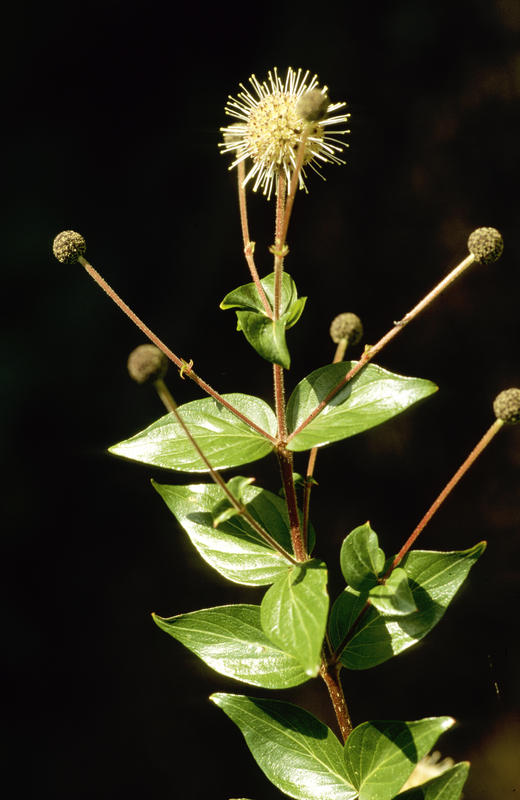
Deciduous shrub. Creamy white flower balls in summer. Large, bold foliage. Height: 3-10'. Width: 3-6'. Part to full sun. Moist to wet soil. Plant in standing water, at the very edge of a pond or stream or in soil that stays moist. Will not tolerate drought. Apply a little balanced fertilizer in spring. Cut back to 1' in winter for lower, rounded growth, pruning to one or two trunks and removing dead twigs, or allow to die back naturally for a rougher, more natural appearance. Butterfly plant.
Carolina Rose (Rosa carolina) - SUN TO PART SUN
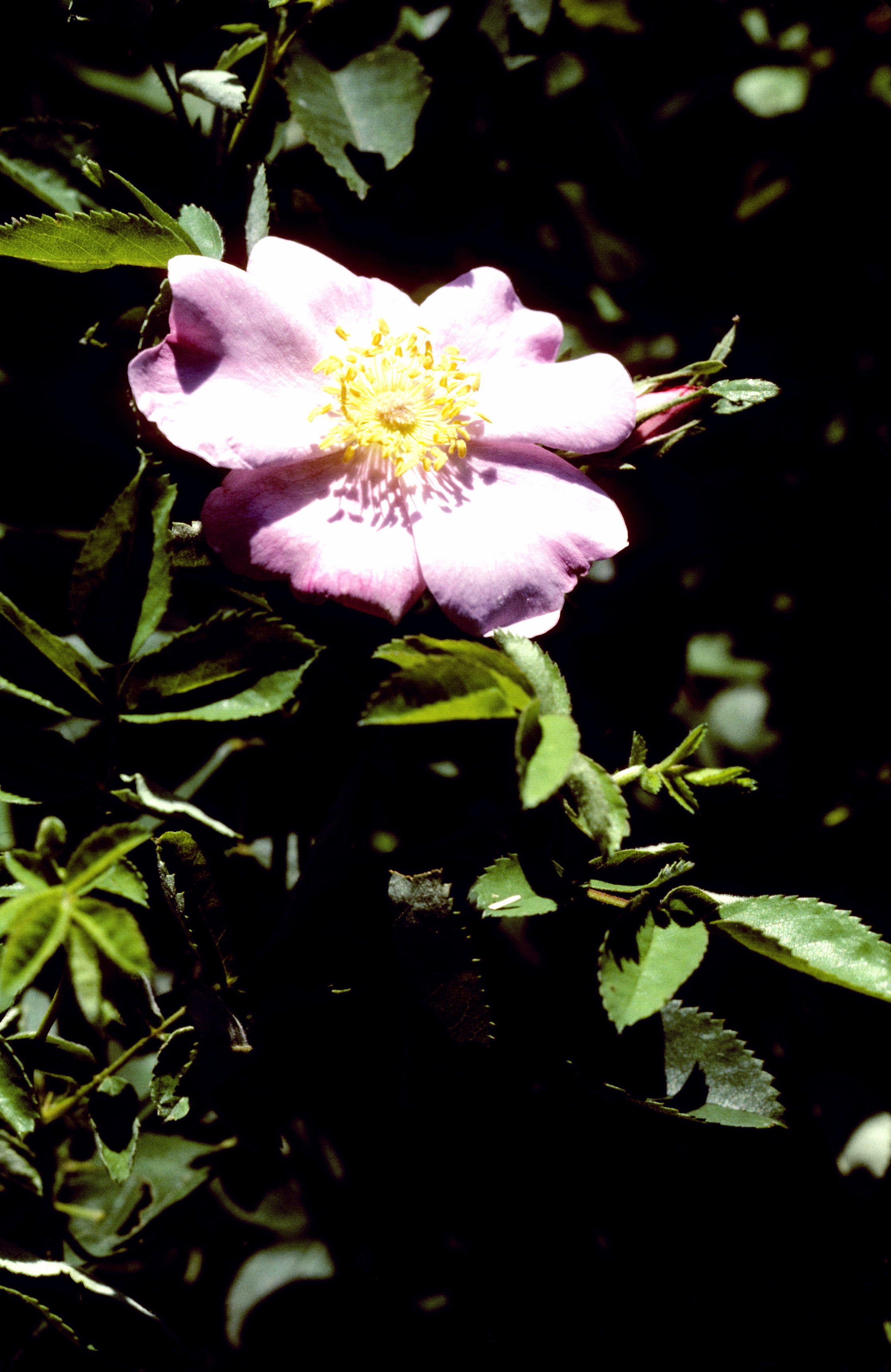
Deciduous shrub. Fragrant, pink blooms in summer followed by dark red hips. Height: 3'. Spreading, but easily controlled by circling clump with a sharp spade in spring. Sun to part sun. Well-drained, average, even rocky soil. Apply a little organic fertilizer in spring. Prune just after bloom, as flowers are produced on older canes. Provides important winter food for birds. Drought tolerant. Deer resistant.
Common Elderberry (Sambuca candensis) - PART SUN
Deciduous, fast-growing, suckering shrub. Flat-topped, creamy white flower clusters in early summer followed by edible, deep purple berries. Height: 5-12'. Spread: to 12' or more. Part sun. Moist, average soil. Best used in informal garden situations and for naturalizing, especially at the wood or meadow edge. Prune back old or weak canes to trunk near the ground in winter every few years. Flowers provide nectar and birds love the fruit. Rain garden plant.
Deerberry (Vaccinium staminium)- PART SUN
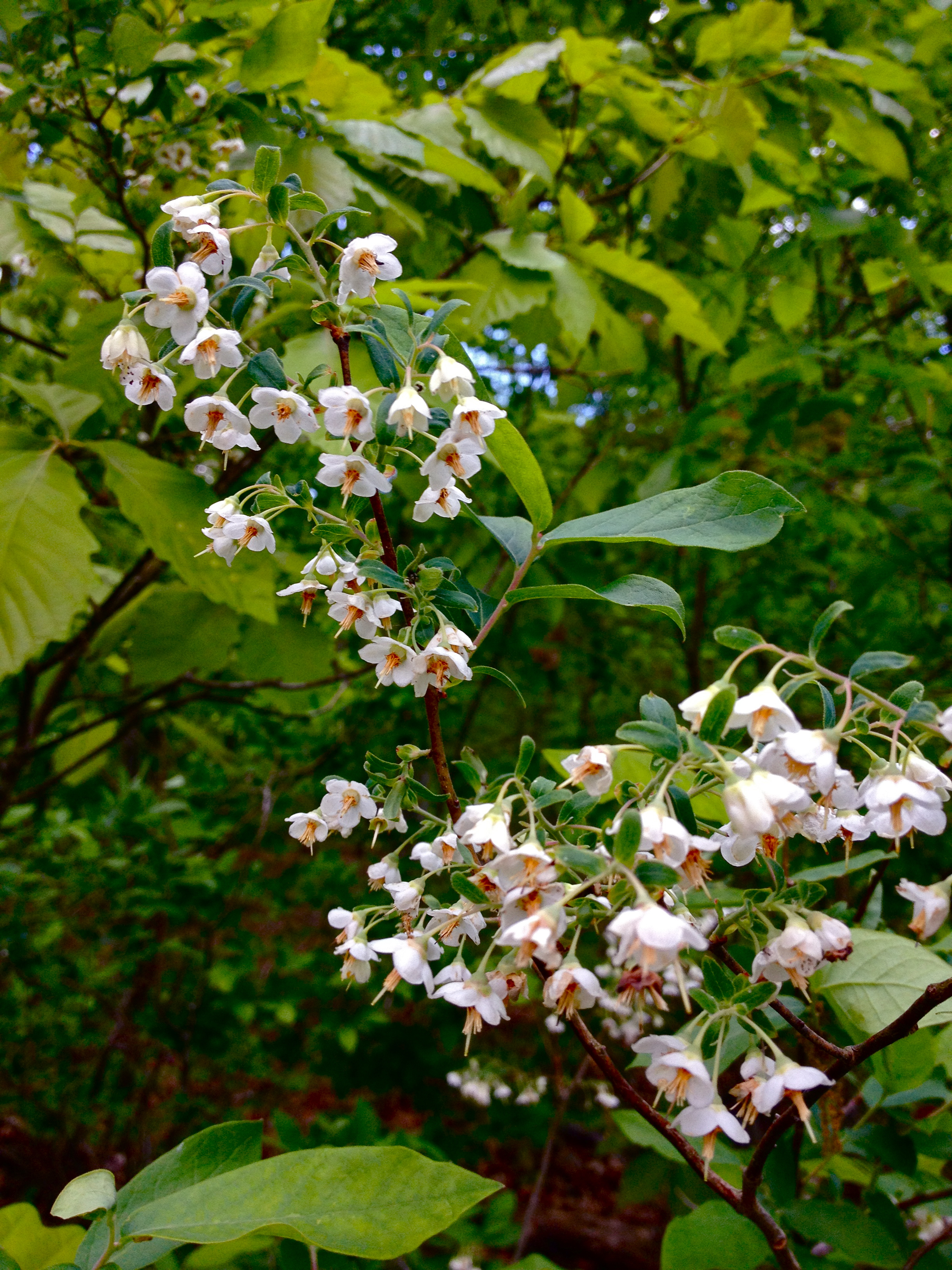
Deciduous shrub. Clusters of greenish-white bells with flared edges in spring. Height and width: 3-6'. Bluish berries which may be somewhat bitter in mid-summer. Open, airy growth habit. Well-drained, acidic soil. Mix plenty of well-moistened sphagnum peat, compost and pine needles into planting soil. Part sun. Found in open woods in wild areas. Excellent wildlife plant.
Gray Dogwood (Cornus racemosa) - SUN TO BRIGHT SHADE
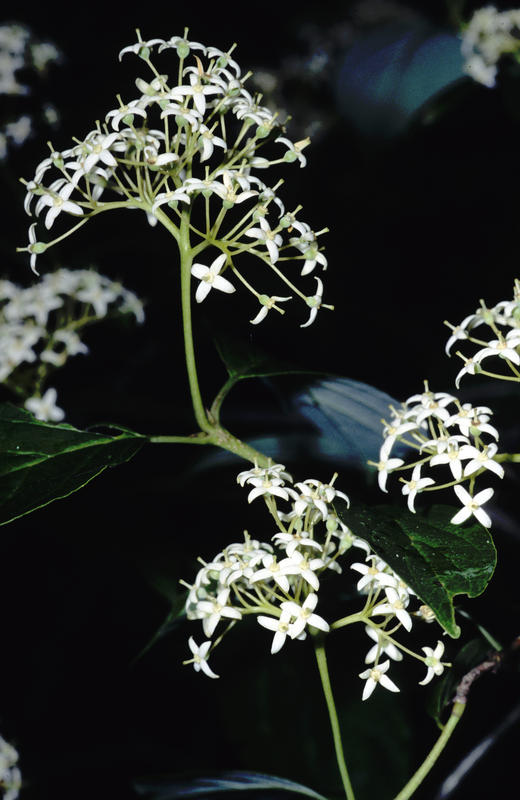
Deciduous, suckering shrub. Similar to Cornus amomum, above, but with white berries with red stems in late summer. Will tolerate somewhat drier soils. Culture and use information the same. Wildlife plant. Rain garden plant.
Lowbush Blueberry (Vaccinium angustifolium) - SUN TO BRIGHT SHADE

Deciduous shrub. White-tinged-pink, bell-shaped blooms in spring. Edible, blue fruits in mid-summer. Leaves turn reddish in fall. Forms colonies. Height: to 2'. Spread: to 3'. Well-drained, acidic soil. Mix plenty of well-moistened sphagnum peat, compost and pine needles into planting soil. Sun to bright shade. Mulch yearly with acidic, organic material. Feed lightly in spring with a balanced, organic fertilizer. Take divisions from edges of clump in early spring before growth begins. Plant several for more fruit. Excellent wildlife plant.
Meadowsweet (Spiraea alba) - PART SUN
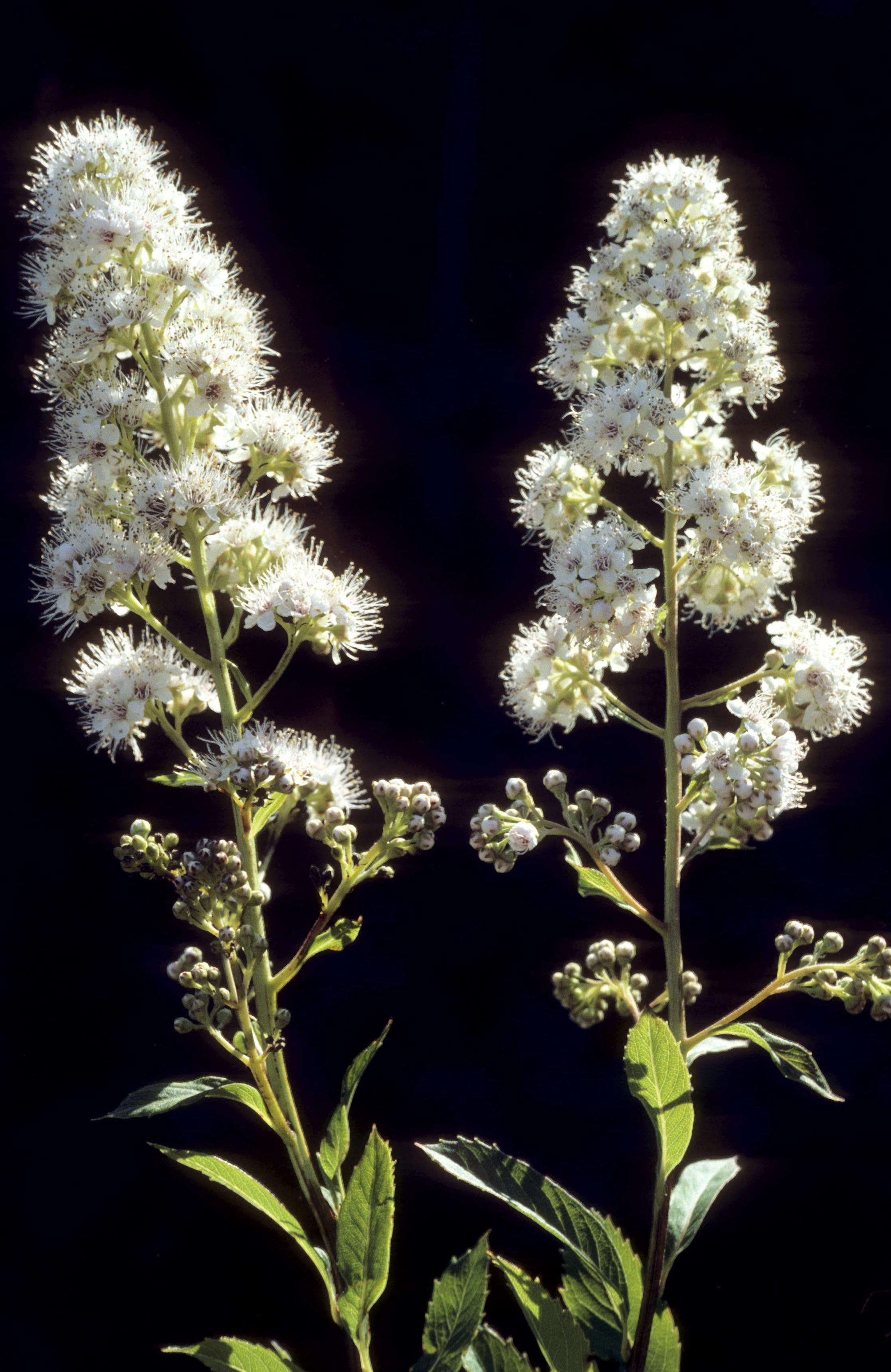
Shrub. Frothy clusters of white blooms in mid- to late summer. Height and width: 2-5'. Width: 2-5'. Part sun. Medium to moist, average soil. Best for naturalizing in meadows or for mixed plantings. May be cut back yearly when dormant. Excellent nectar source. Rain garden plant. Deer resistant.
Ninebark (Physocarpus opulifolius) - PART SUN
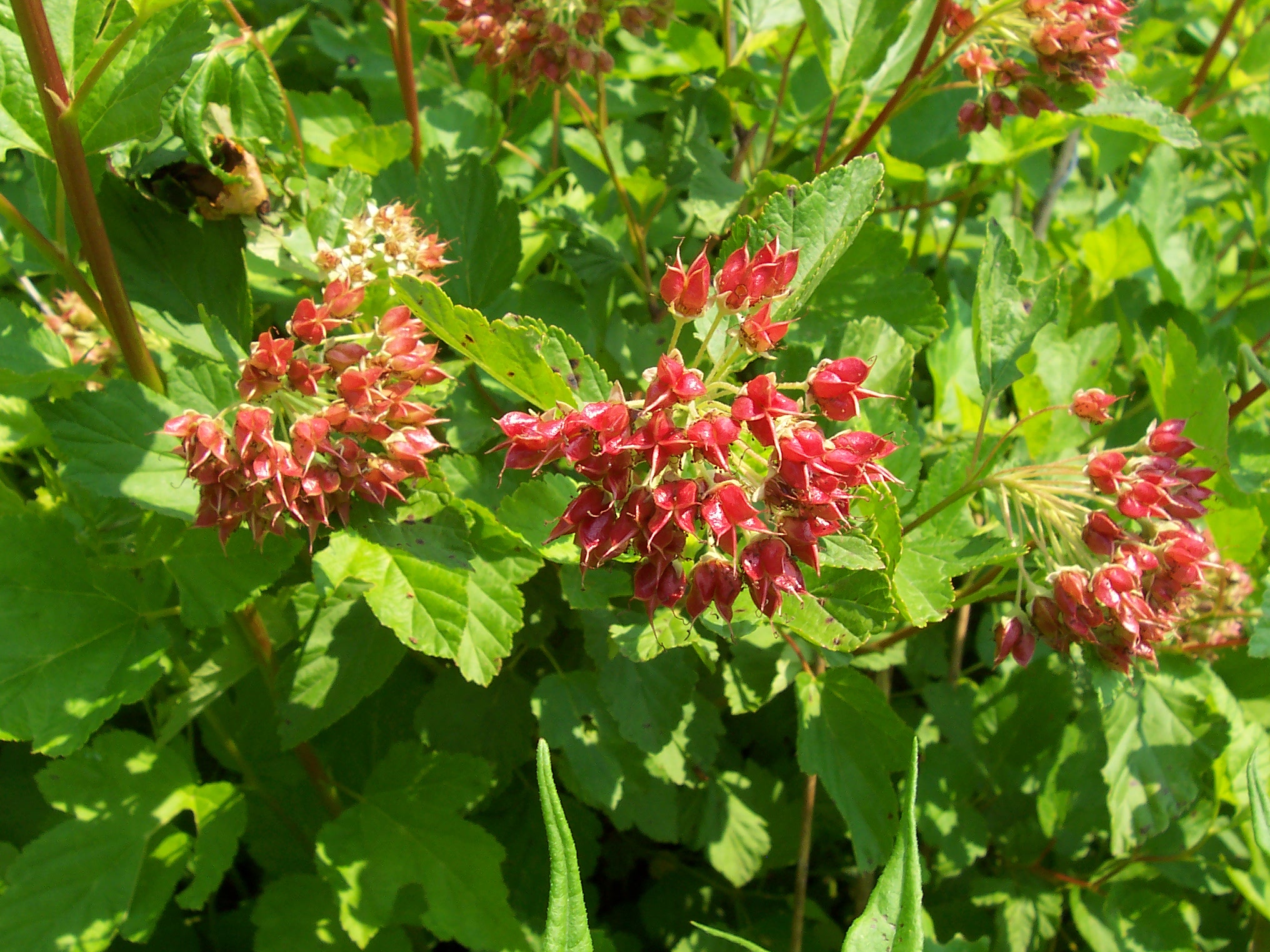
Deciduous, suckering shrub. White flower heads in late spring to early summer. Layers of peeling bark, attractive if plant is pruned to expose. Attracts many pollinators. Height: 6-12'. Spread: 6-10'. Part sun. Average to moist soil. Very adaptable. Best used for naturalizing, screening or to stabilize soil. Provides good protection and nesting sites for birds. Cut back hard in winter once every few years for fresh growth. Rain garden plant.
Purple-Flowering Raspberry (Rubus odoratus) - PART SHADE
Deciduous, suckering shrub. Fragrant, 2", rose-purple blooms in summer followed by edible, red fruits. Large leaves shaped like those of a maple tree. Height: 3-6'. Width: 3-8'. Part shade, especially in the afternoon. Moist, rich soil. Use at wood edge or streamside. Prune occasionally to remove dead canes (which have no thorns). Fertilize lightly in spring with compost or organic fertilizer
Red-berried Elder (Sambucus racemosa ssp. Pubens) - PART SUN
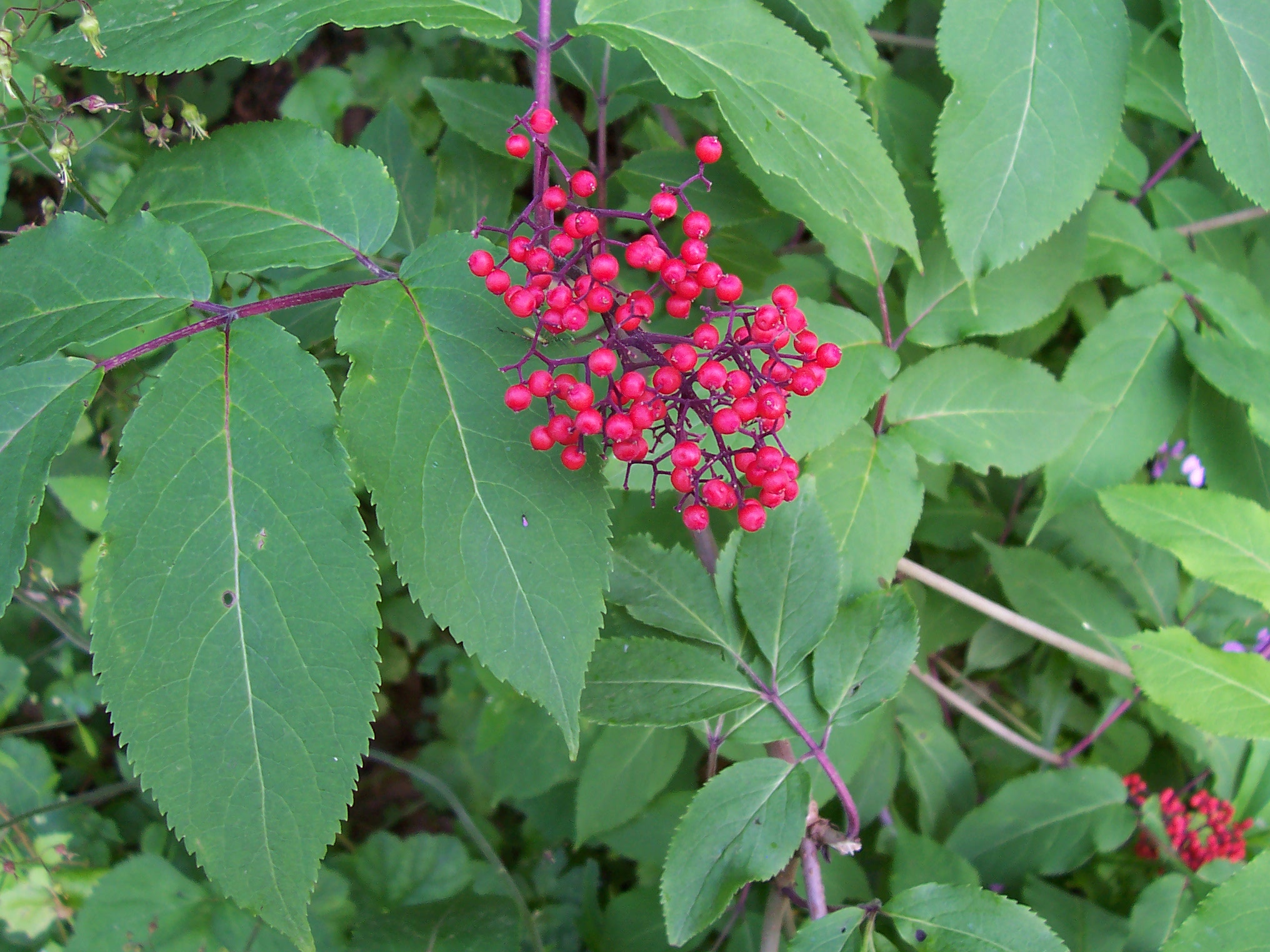
Deciduous, fast-growing, suckering shrub. Similar in leaf to Sambucus canadensis, but blooms earlier in spring and produces bright red fruits in early summer. Height: 4-10'. Spread: 3-8' or more. Cultural requirements same as for Sambucus canadensis. Quite showy in fruit which, though edible, needs to be well-cooked. Flowers provide nectar and birds love the fruit. Rain garden plant.
Rosebay (Rhododendron maximum) - MORNING SUN, DAPPLED LIGHT, PART SHADE
Massive, slow-growing, evergreen shrub. Blooms light pink in early summer. Height: 6-15'. Width: 4-15'. Cultural requirements similar to those of Rhododendron arborescens, but will tolerate somewhat drier soils. Often found growing on steep, rocky, wooded slopes or stream banks in wild areas. Best used for naturalizing on larger properties. Shadier rain garden plant.
Shrubby St. Johns-Wort (Hypericum prolificum) - PART SHADE
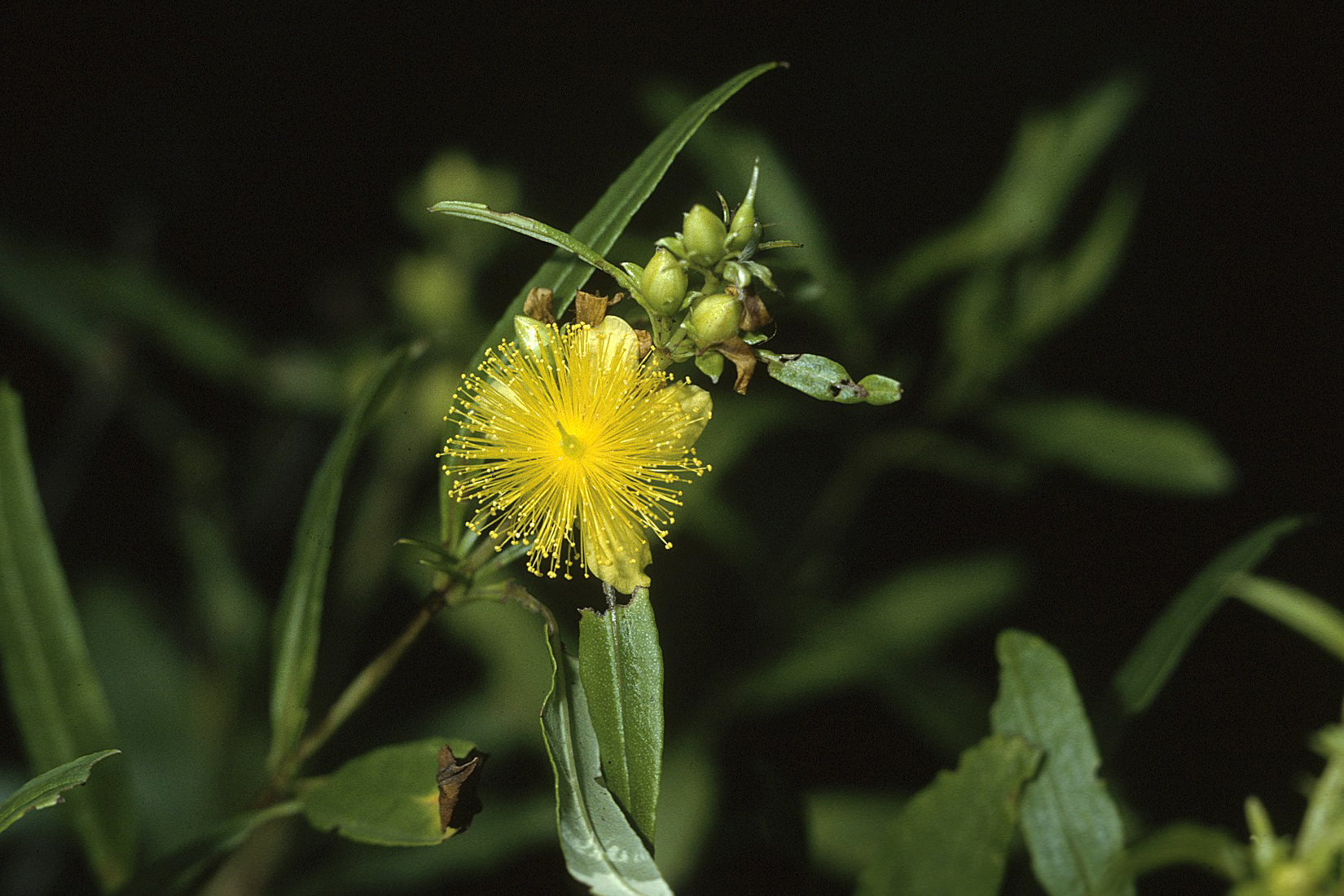
Deciduous shrub. Yellow flowers with many stamens in summer give blooms the look of little exploding fireworks. Twiggy, with blue-green foliage. Height and width: 3-6'. Part sun. Well-drained soil. Will tolerate drought after well established. Fertilize lightly in spring. Remove ¼ of outer twigs in winter. Self-sows readily. Deadhead to prevent. Excellent nectar source. Rain garden plant. Deer resistant.
SilkyDogwood (Cornus amomum) - SUN TO BRIGHT SHADE
Deciduous, suckering shrub. Blooms creamy white in flat-topped clusters in spring. Bright blue berries in late summer. Foliage turns deep red in fall. Height: 3-10'. Part sun to bright shade. Moist to wet, average soil. Forms colonies and may be aggressive, so best used for naturalizing in wetter areas. Clumps can be rejuvenated with hard pruning. Divide when dormant by cutting back to 6" and digging sections from clump edge. Dense stands provide cover and food for birds and other wildlife. Rain garden plant.
Spicebush (Lindera benzoin) - PART SHADE
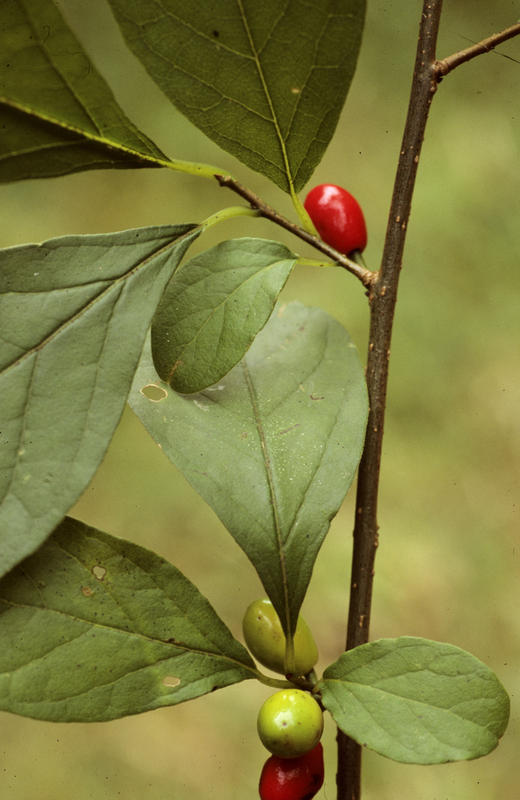
Multi-stemmed, deciduous, understory shrub. Subtle yellow blooms along stems in spring. Red berries on female plants in fall. Exudes spicy scent when bark is scratched or leaves are crushed. Height: 8-15'. Spread: 6-15'. Part shade. Best in moist, fertile soil, but adaptable. Butterfly plant. Rain garden plant. Deer resistant, but protect until well-established and sizeable.
Sweet Azalea (Rhododendron arborescens) - MORNING SUN, DAPPLED LIGHT, PART SHADE
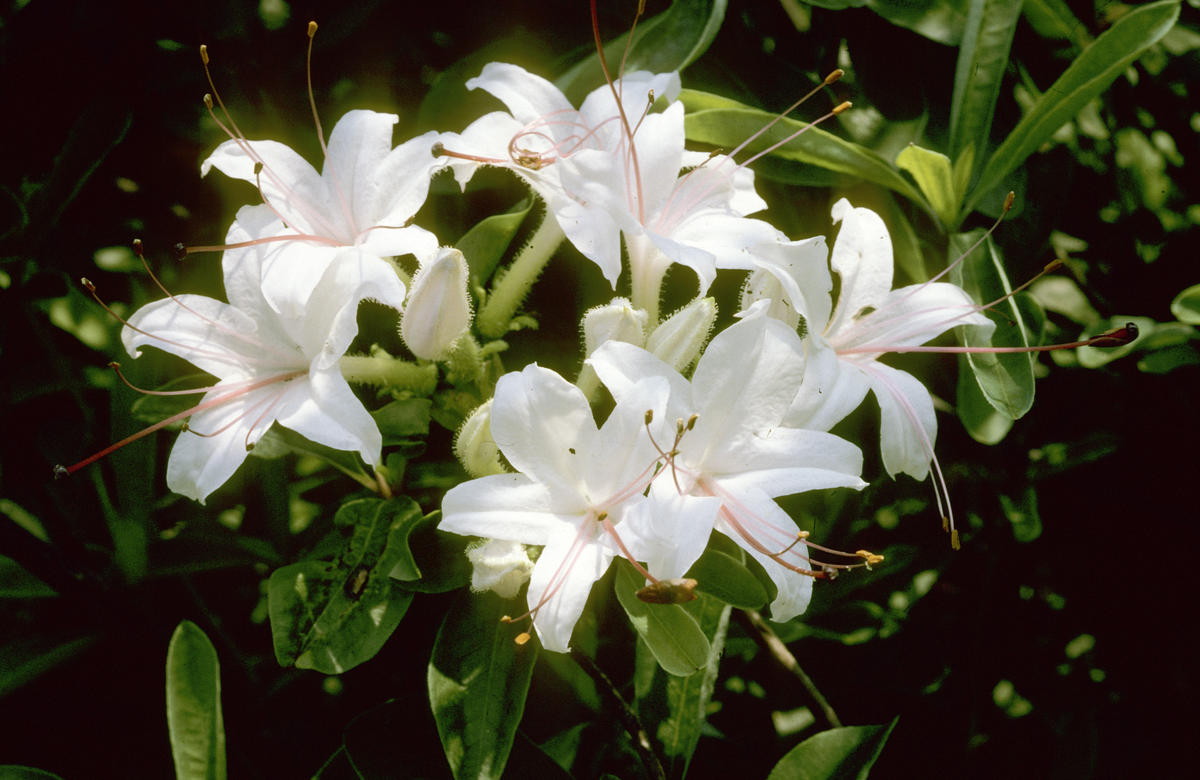
Deciduous shrub. White, fragrant, tubular blossoms with red styles in early summer. Glossy, dark green leaves. Rounded growth habit. Height: 5-10'. Width: 4-8'. Moist, humusy, acidic soil. Morning sun, dappled light or bright shade. Add plenty of well-moistened sphagnum peat, compost and pine needles to soil when planting. Yearly mulching with acidic, organic material is the only fertilization recommended. Remove dead stems when dormant. Use as a specimen, in a shrub border, as a foundation planting or at the wood edge.
Allegheny Serviceberry (Amelanchier laevis) - FULL SUN TO PART SHADE
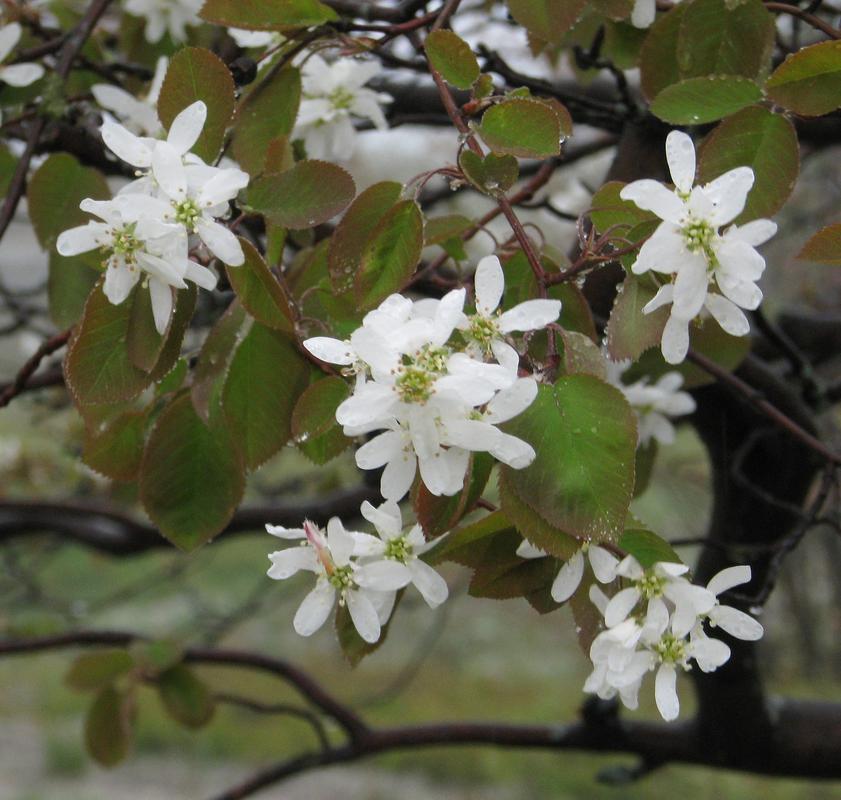
Largest type of Serviceberry. Height up to 40'. Fruits are eaten by variety of birds and small and large mammals. Larval host for Red-spotted Purple and Viceroy butterflies. Provide nectar for pollinators in spring.
Chokeberry (Prunus virginiana) - FULL SUN TO PART SHADE
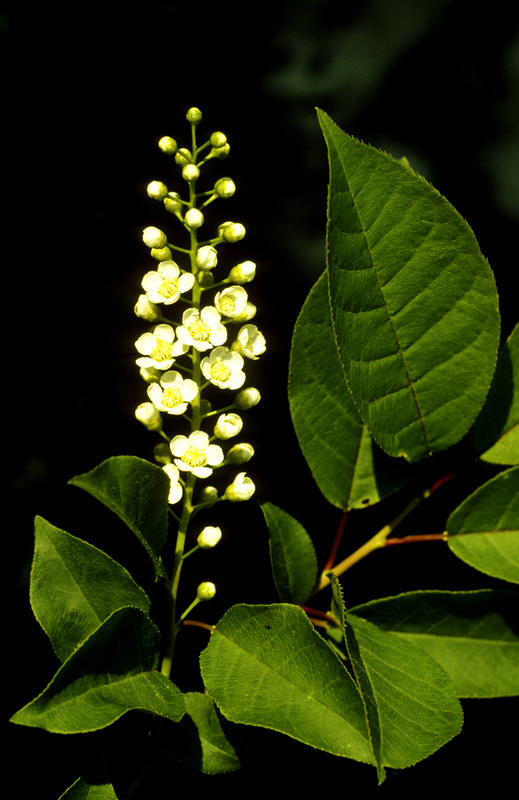
Grows rapidly. Height up to 25'. Provides food and cover for songbirds; supports small and large mammals. Fruit supports a variety of species. Early spring flowers provide nectar for butterflies, ants, and honeybees. Can spread aggressively so remove suckers regularly to prevent spread if desired.
Eastern Redbud (Cercis canadensis) - PART SUN
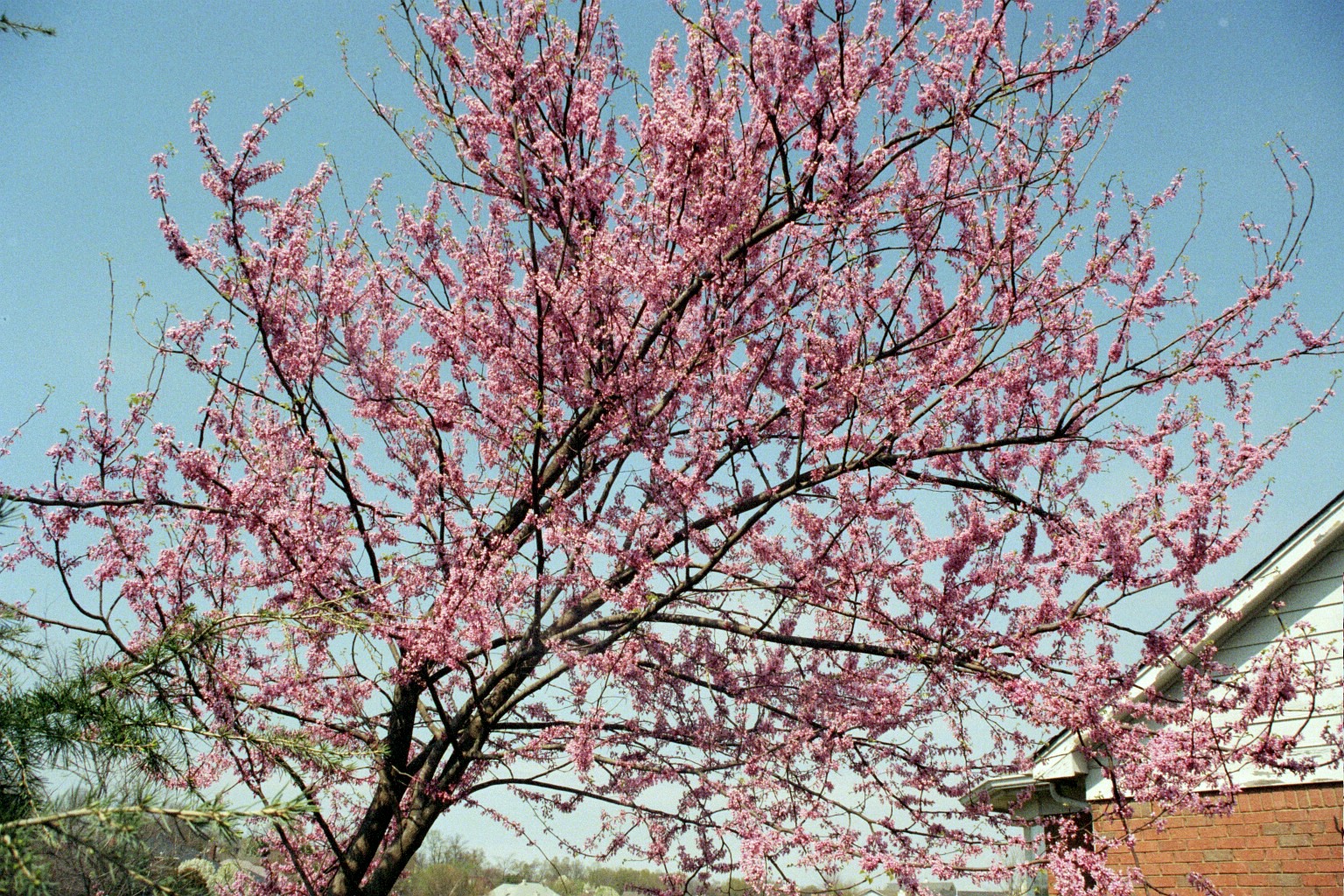
Small tree for understory or wood edge. Bright pink blooms all along branches in spring before large, heart-shaped leaves emerge. Height: 12-25'. Spread: 10-20'. Part sun. Moist, average soil. Fast grower. Leaves turn yellow in fall. Nice near a patio or second story window. Rain garden plant. Deer resistant, but protect until well-established and sizeable.
Flowering Dogwood (Cornus florida) - FULL SUNTO PART SHADE
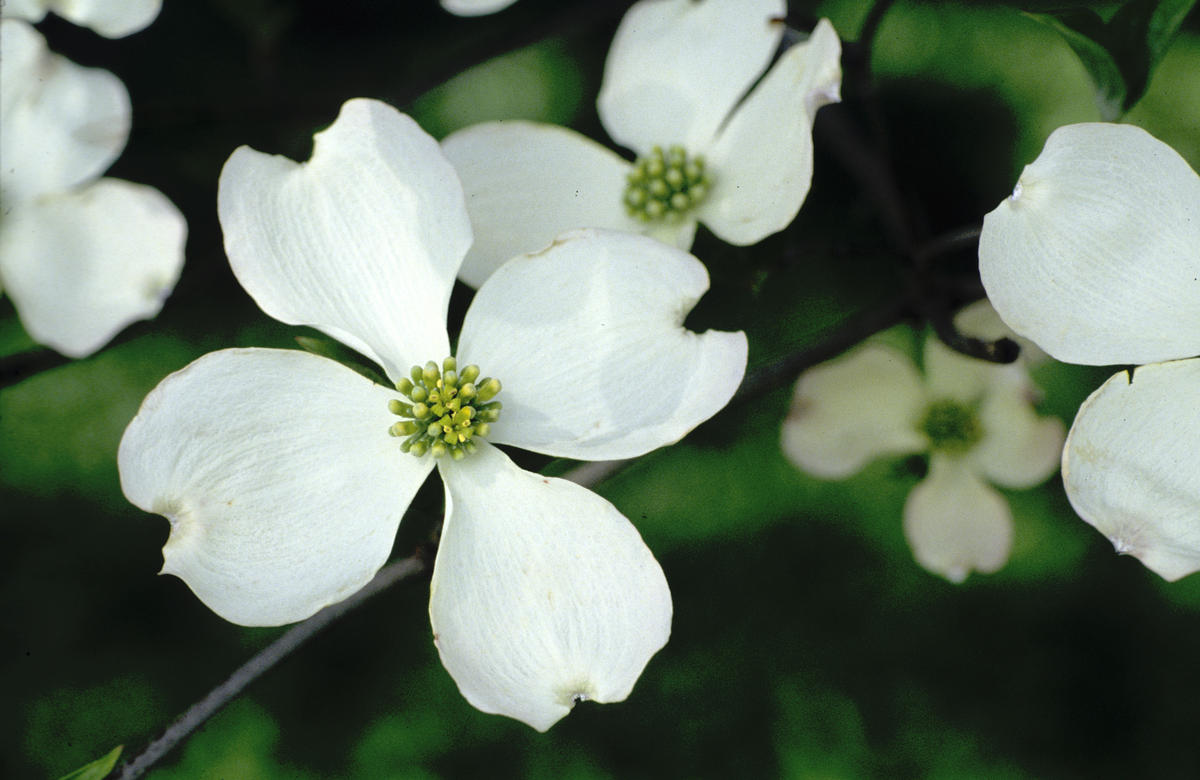
Moderate growth. Height up to 30'. Provides fall and winter food for Cedar Waxwing, Mockingbird, Cardinal, Piliated Woodpecker, other birds, squirrels, and deer. Beautiful, iconic white flowers in spring.
Pawpaw (Asimina triloba) - FULL SUN TO BRIGHT SHADE
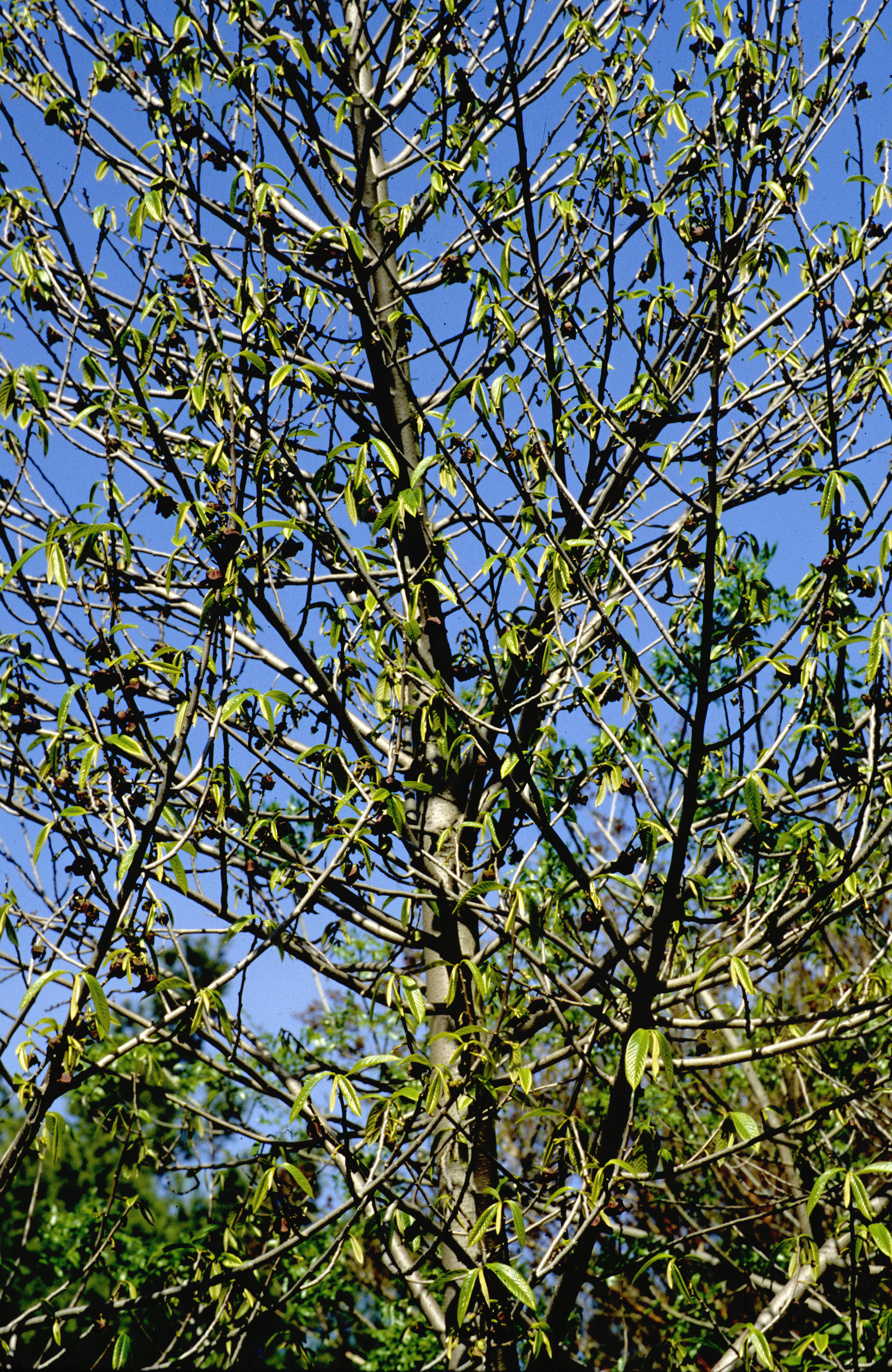
Deciduous, suckering, multi-stemmed, small tree. Blooms maroon in spring. Flowers foul-smelling. Large, edible fruits in fall when long, drooping leaves turn yellow. Height: to 30'. Width: to 10'. Taproot makes transplanting large specimens difficult. Best when contain-grown and 3-6' in height. Full sun to bright shade. Suckers less and produces more fruit if grown in sun. Forms loose colonies in shade. Moist, rich soil. Best sited a distance from the house in sun, or by a pond or stream or in moist woods. Butterfly and wildlife plant. Deer resistant, but protect until well-established and sizeable.
Black Birch (Betula lenta) - FULL SUN TO PART SUN
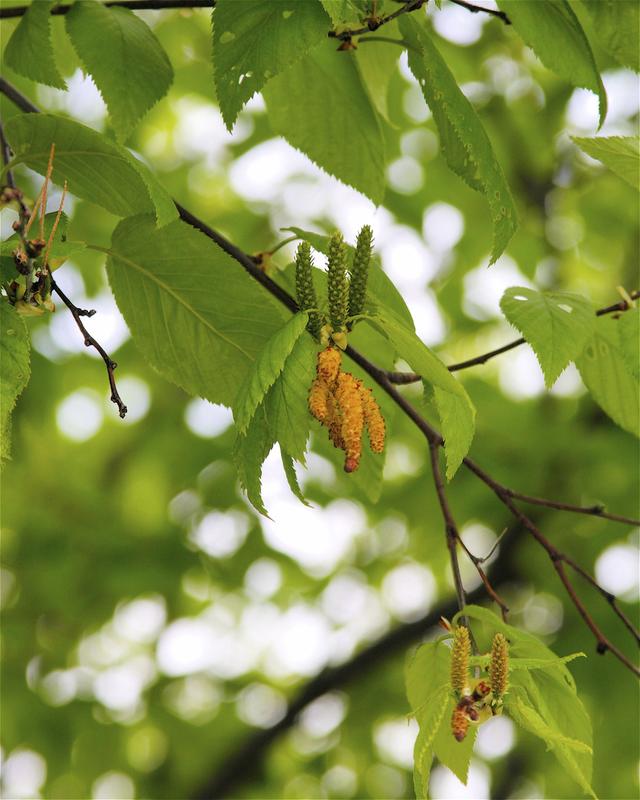
Moderate growth rate up to 60' and 40' wide. Seeds, buds, and catkins support a variety of birds and small mammals. In addition to food source, valuable for nesting and cover opportunities. Prefers rich, well-drained acidic soils.
Black Cherry (Prunus serotina) - FULL SUN TO PART SUN
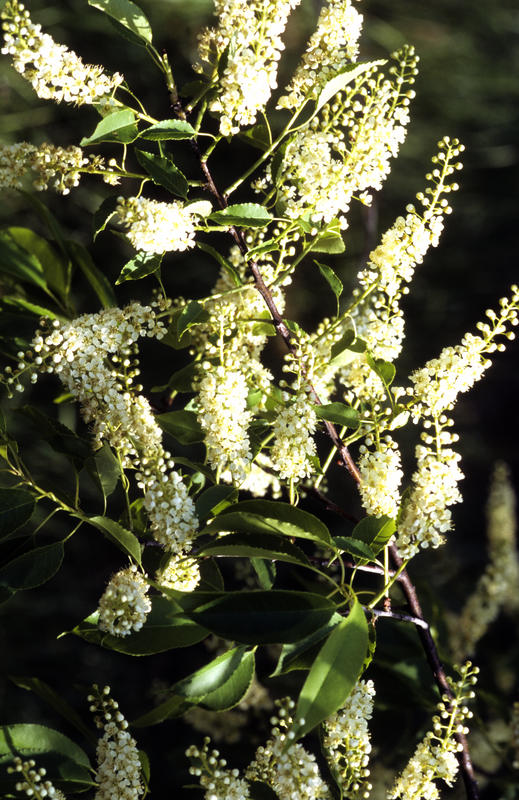
Rapid growth up to 50 - 80' tall and 30' - 60' wide. Fruits are important for many birds such as wrens, mockingbirds, thrashers, waxwings, and woodpeckers, and small and large mammals. A total of 456 moth and butterfly species are support by Black cherry trees.
Black Oak (Quercus velutina) - FULL SUN
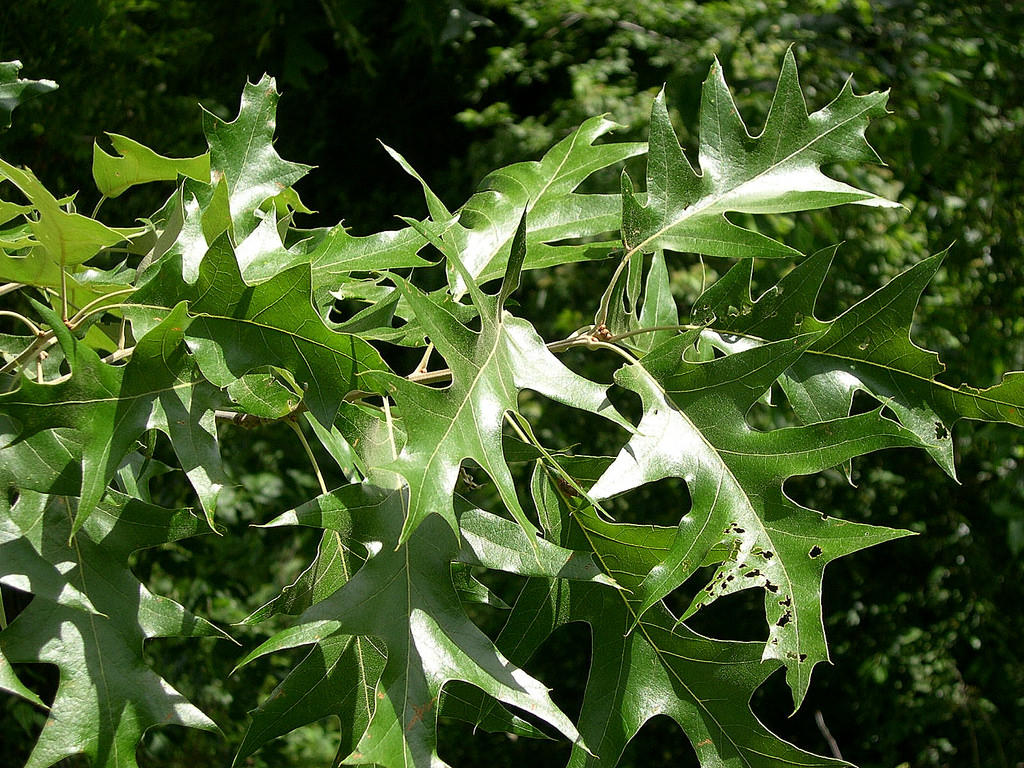
Oaks have exceptional wildlife value. Moderate growth rate to 50'-60' high and 50'-60' wide. Acorns provide food for variety of birds and mammals and cavities provide den, nesting, and roosting sites for birds. A total of 534 moth and butterfly species are supported by oaks. Good medium-sized shade tree.
Eastern White Pine (Pinus strobus) - SUN TO PART SUN
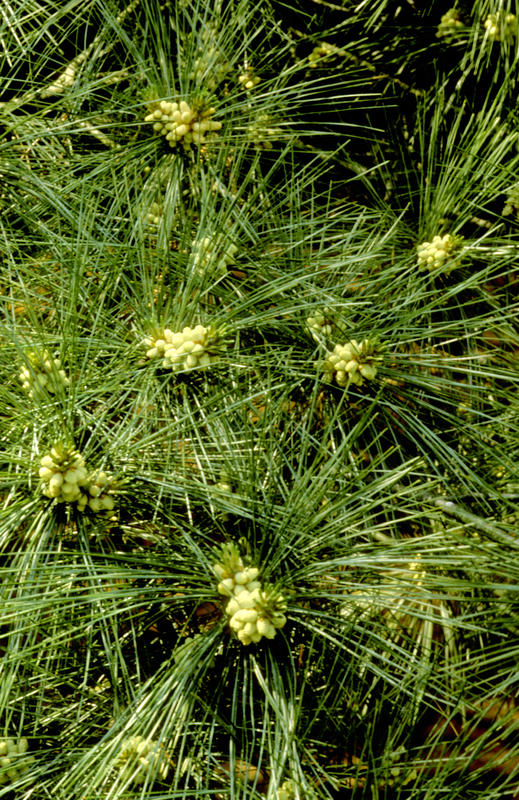
Evergreen tree. Long, soft needles. Fine-textured. Height: to 90'. Width: to 40'. Sun to part sun. Average soil. Adaptable. Provides food and shelter for birds and small mammals.
Hackberry (Celtis occidentalis) - FULL TO PART SUN
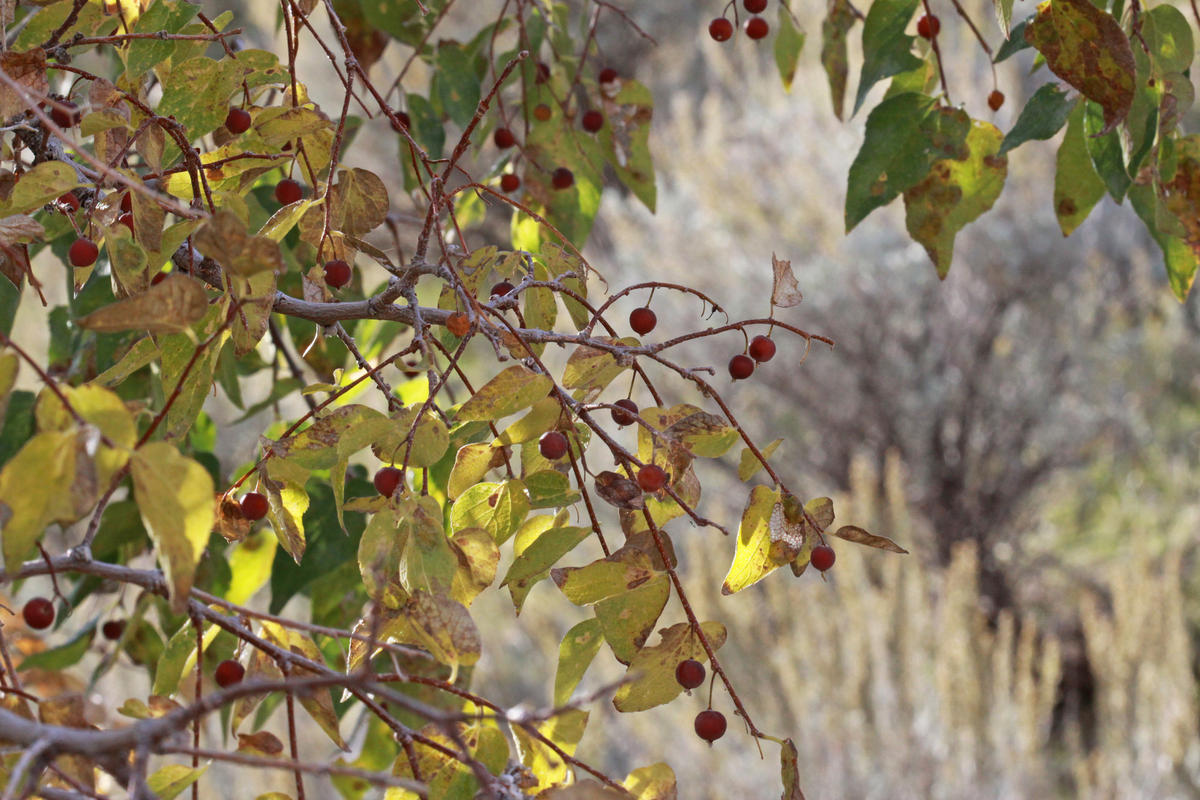
Also called Sugarberry. Medium to large tree. Inconspicuous blooms in early spring. Green fruits ripen to purple berries in fall. Height: 40-60'. Similar spread. Part to full sun. Average soil. Important provider of food and shelter for birds and mammals. Attracts many butterflies. Mites may cause twig clusters to form at branch ends, but this does not kill the tree. An adaptable species and a good choice for difficult sites. Protect from deer until well-established and sizeable. Rain garden plant.
Red Maple (Acer rubrum) - FULL SUN TO PART SHADE
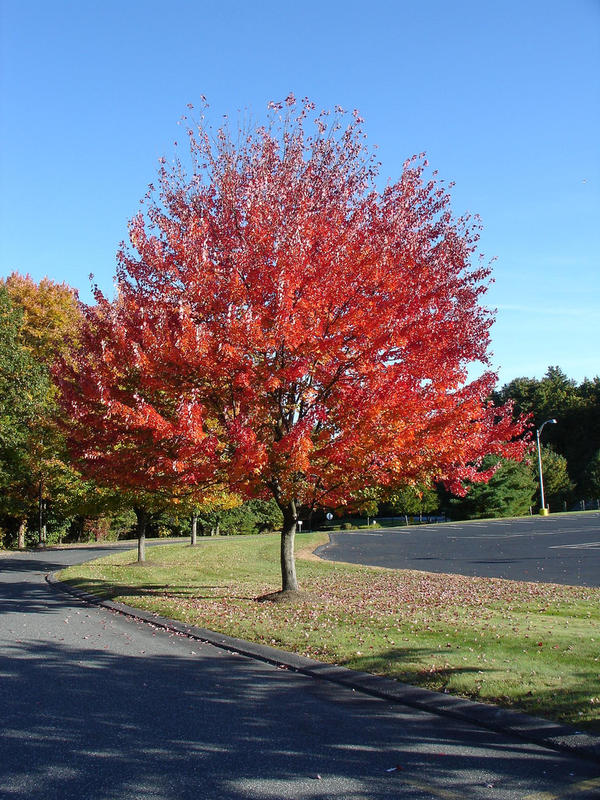
Fast-growing tree. Height: 40'-70'. Width: 30'-50'. Provides cover and cavities for birds such as Screech Owl, Pileated Woodpecker, and Northern Flicker. A total of 285 moth and butterfly species are support by maples. Can survive in a variety of conditions but prefers well-drained, moist, slighly acidic soil.
Red Oak (Quercus rubra) - FULL SUN
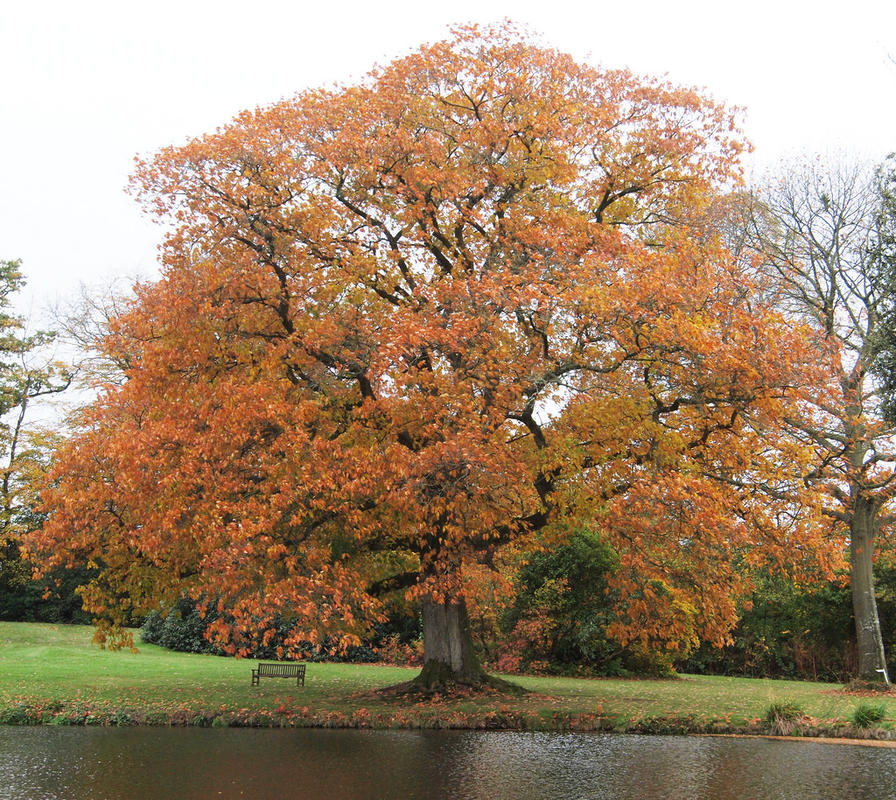
Oaks have exceptional wildlife value. Height: 50'-75'. Width: 50'-75'. Acorns provide food for variety of birds and mammals and cavities provide den, nesting, and roosting sites for birds. A total of 534 moth and butterfly species are supported by oaks. Relatively simple to grow.
Shagbark Hickory (Carya ovata) - FULL TO PART SUN
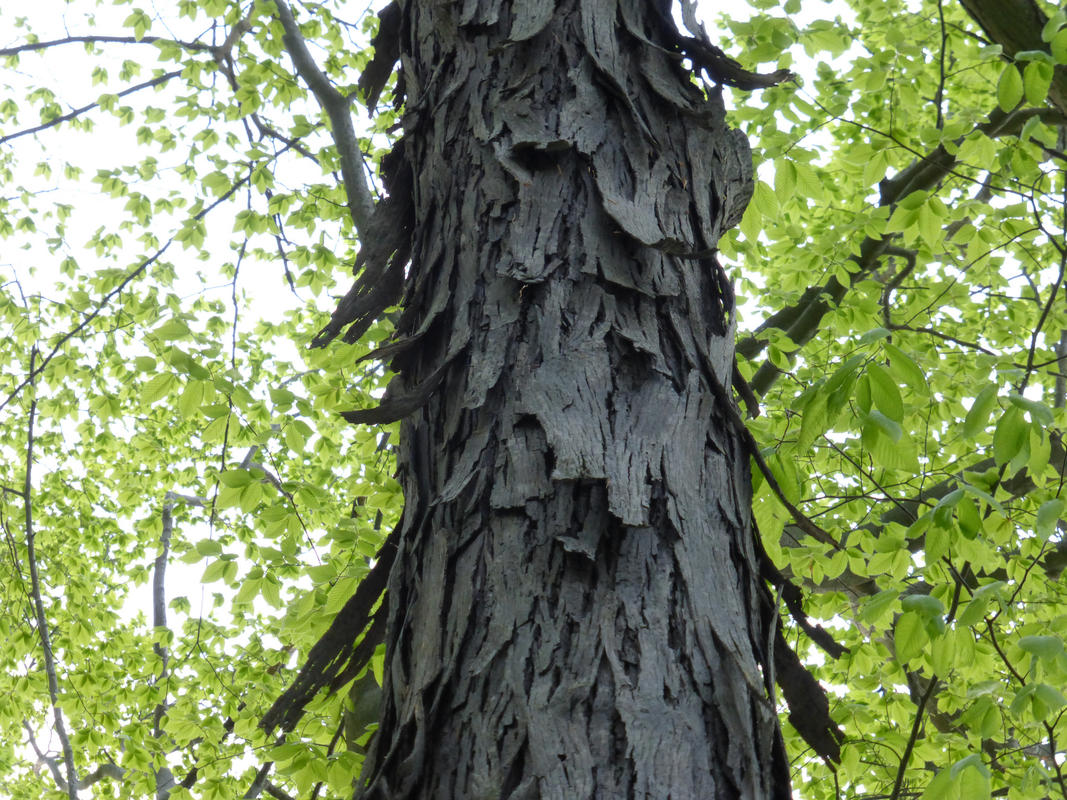
Medium to large tree. Blooms yellow-green in spring. Edible nuts and gold leaves in fall. Distinctive, peeling, gray bark. Trunk typically narrow and straight with branching that begins half-way up. Height: to 70'. Width: to 35'. Full to part sun. Rich, moist soil, but adaptable. Must have good drainage. Site carefully. Deep taproot makes transplanting of all but young seedlings impossible. Butterfly and wildlife plant. Nipped seedlings will resprout vigorously, but protect until well-established and sizeable.
Tupelo (Nyssa sylvatica) - SUN
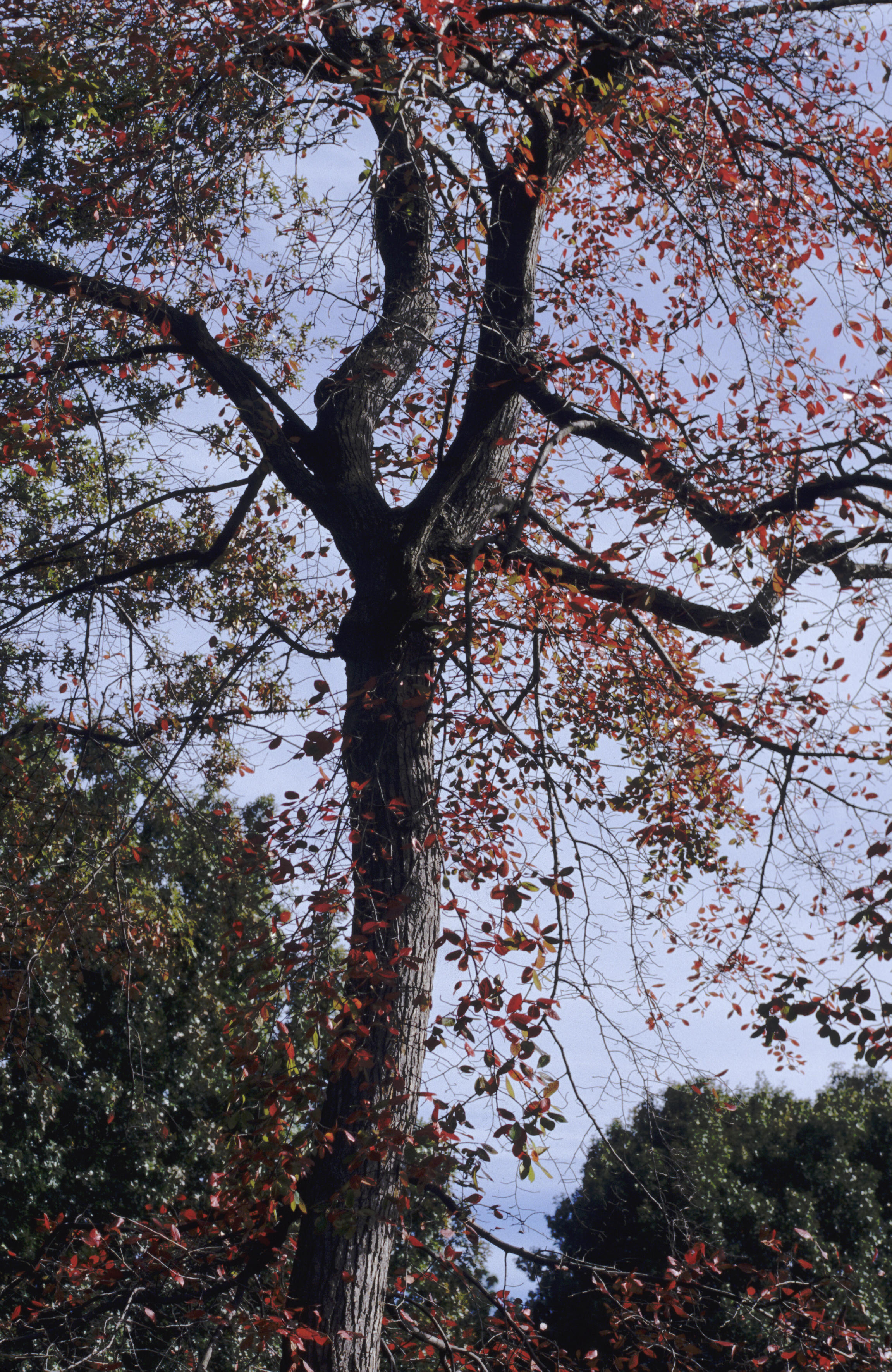
Inconspicuous greenish blooms in spring attract bees. Leafs out late. Glossy, dark green foliage turns shades of deep red in early fall. Blue-black fruits on female individuals. Height: 30-60'. Spread: 20-35'. Sun. Moist soil. Fertilize lightly in spring with a balanced, organic fertilizer while tree is young. Deep roots allow for underplantings of shrubs and wildflowers. Specimen or street tree. Berries attract birds. Rain garden plant. Protect from deer until well- established and sizeable.
Aniseroot (Osmorhiza longistylis) - PART SHADE
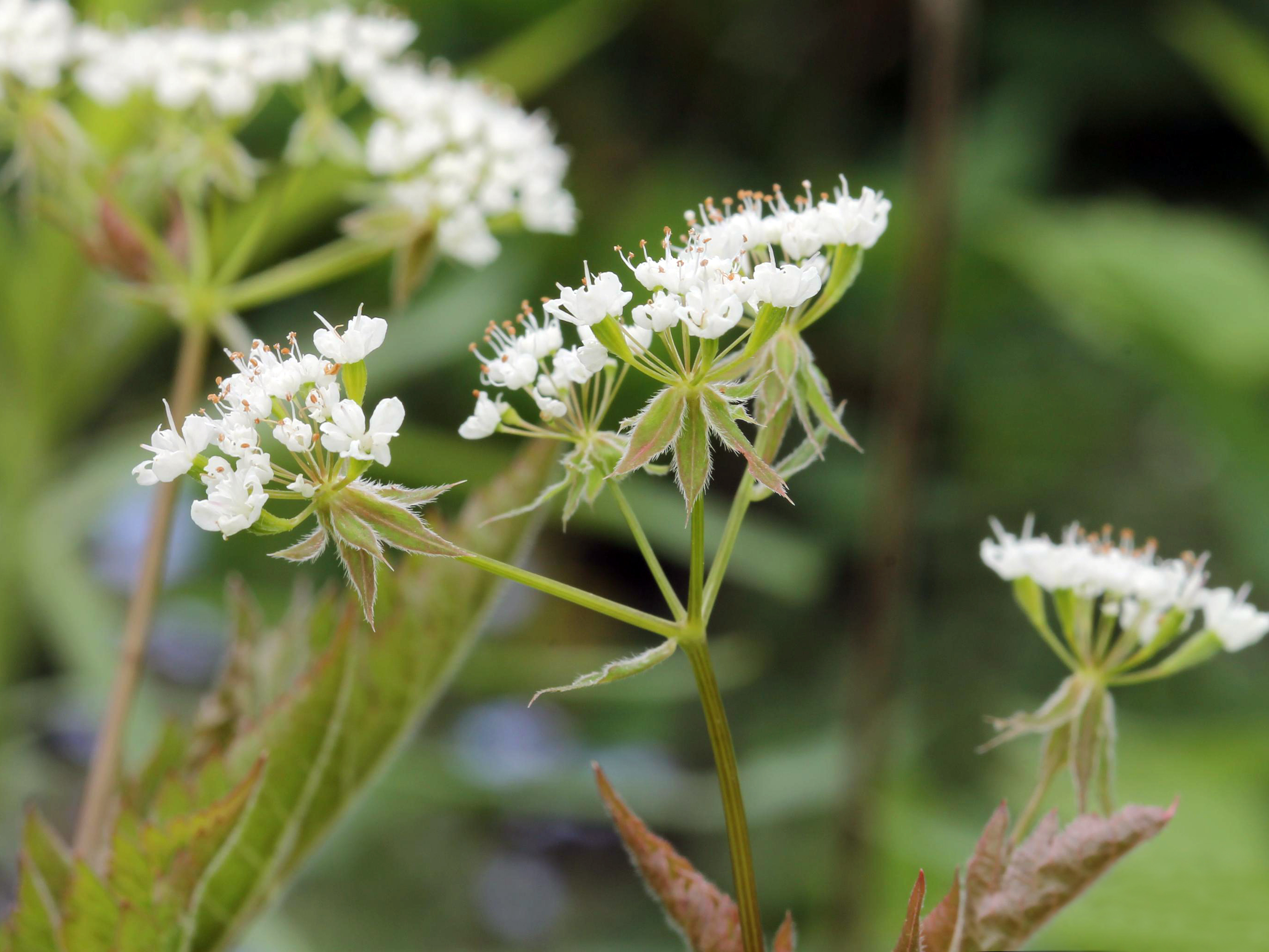
Small, white flowers from spring to early summer. Leaves fern-like. Height: 1-3'. Part shade. Moist, rich soil. A lovely filler to mix with showier woodland plants. Self-sows, but easy to control. Deer resistant.
Barren Strawberry (Waldsteinia fragarioides) - MORNING SUN TO BRIGHT SHADE
Blooms yellow in spring. Strawberry-like, semi-evergreen foliage. Height: 3-7". Spread: 12" or more. Morning sun to bright shade. Moist to dry, rich soil. Fertilize in spring by top-dressing soil with compost. Water regularly during the first year to establish. Excellent groundcover, spreading about one foot per year. An option for dry shade. Nice on open, wooded slopes, under shrubs or in rock gardens.
Basil Balm (Monarda clinopodia) - MORNING SUN TO BRIGHT SHADE
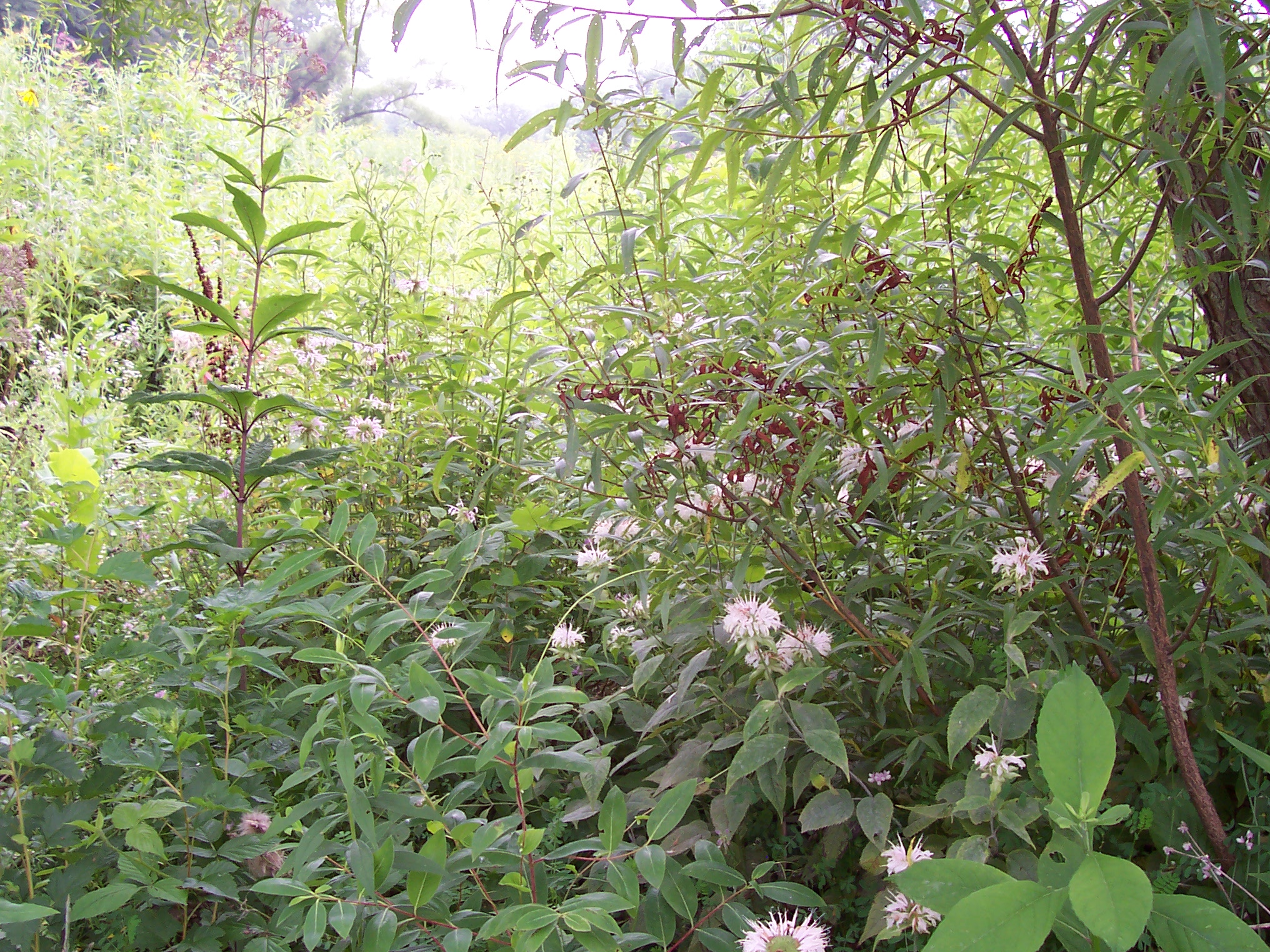
White to pinkish flowers in summer. Height: 2-4'. Width: 18". Morning sun to bright shade. Moist, fertile soil. Allow plenty of room as plants spread moderately fast by shallow rhizomes. Drier, less fertile soils will slow spread. Foliage susceptible to powdery mildew. Cut back to clean foliage and discard. (Do not compost.) Divide every 3 years. Good for naturalizing at the wood edge, in front of shrubs or in a low spot. Hummingbird and butterfly plant. Shadier rain garden plant. Deer resistant.
Bee Balm (Monarda clinopodia) - MORNING SUN TO BRIGHT SHADE
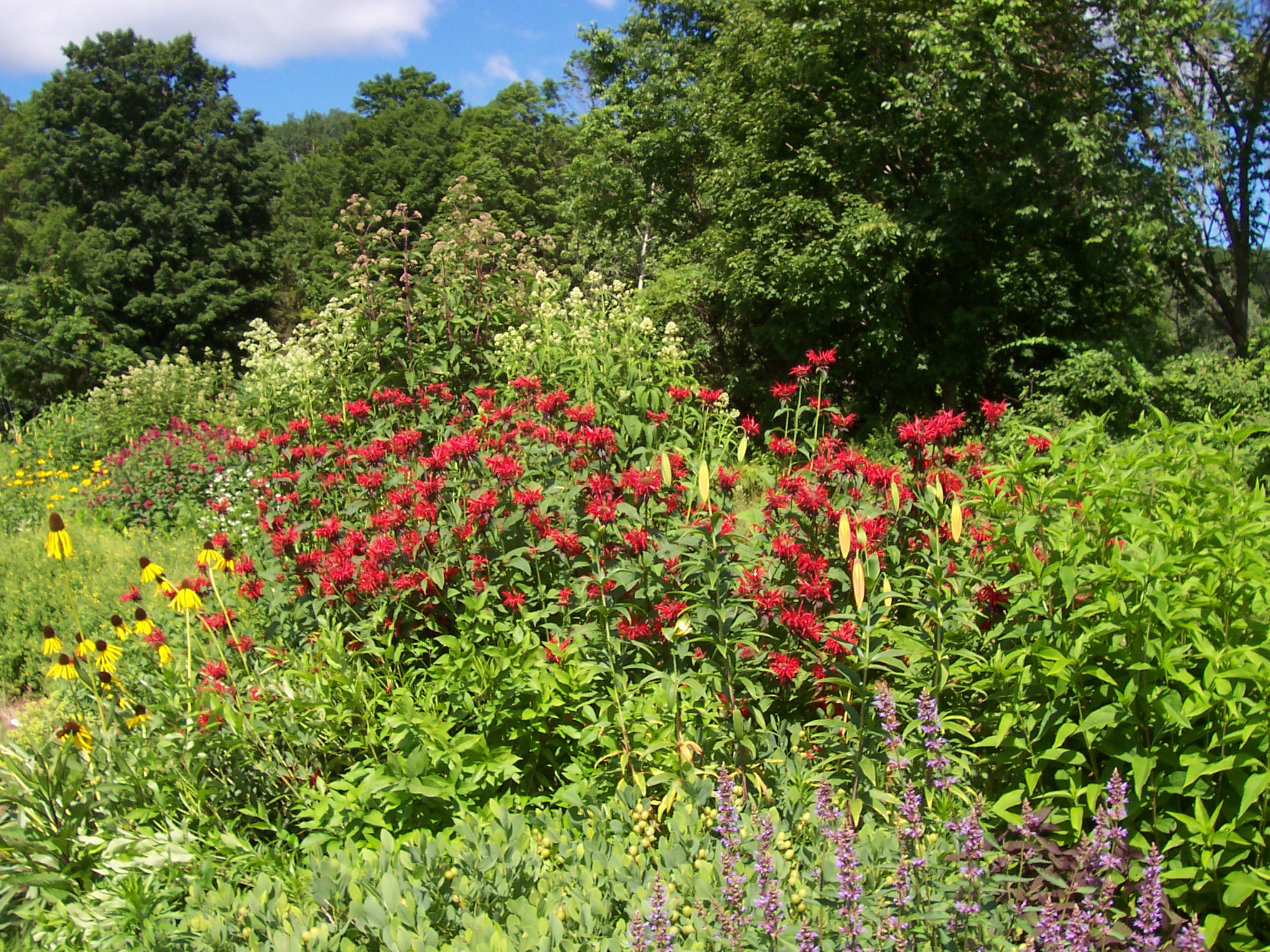
Also called Osewago Tea. Blooms red in summer. Height: 3-4'. Width: 18". Sun to part sun. Moist, fertile soil. See Monarda clinopodia for cultural information. Combine with other Monarda species for color contrast. Hummingbird and butterfly plant. Rain garden plant. Deer resistant.
Black Cohosh (Cimicifuga racemosa) - PART SHADE
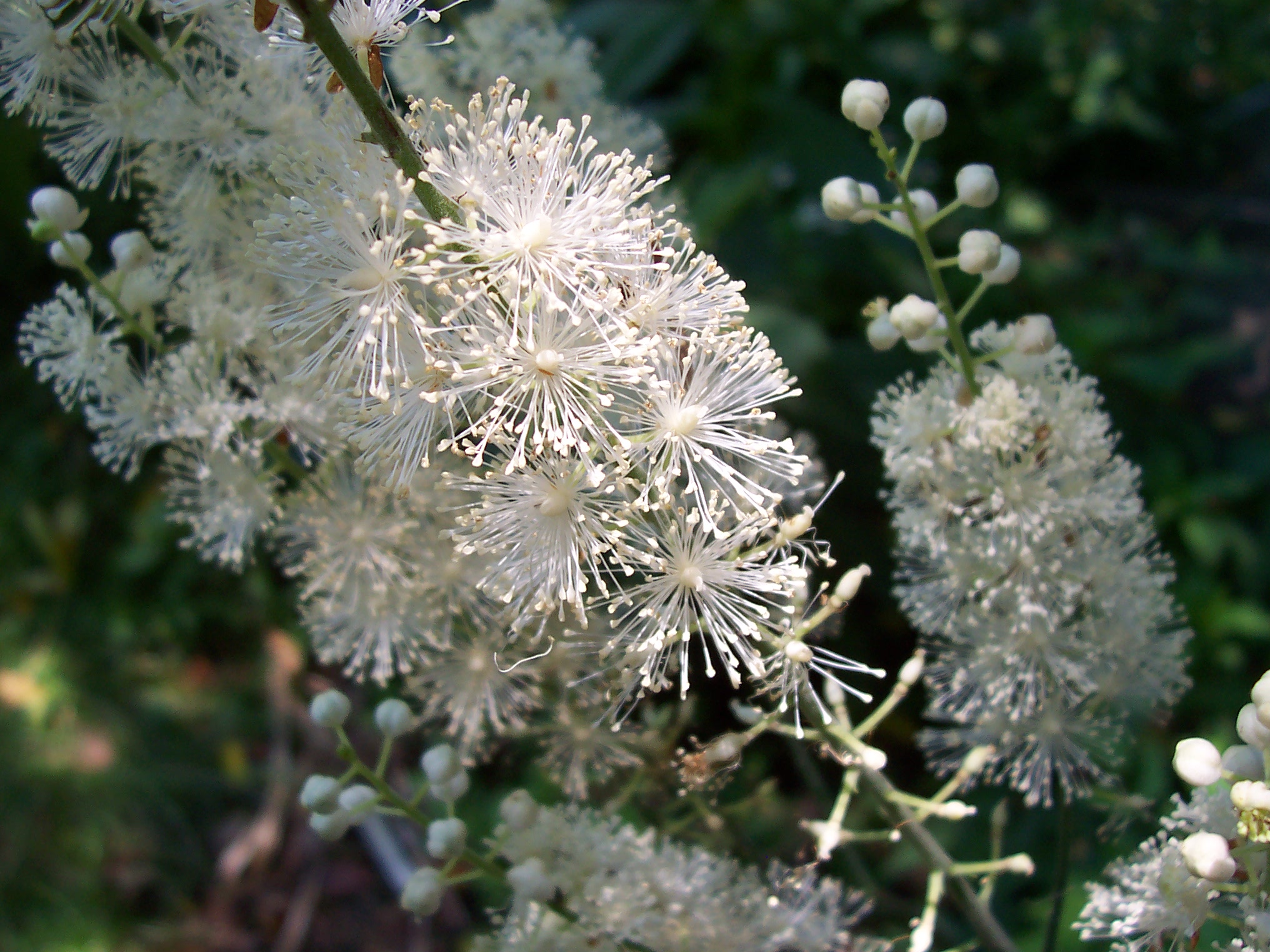
Tall, wand-like, white spikes in summer. Attractive foliage. A large, stately plant. Height: 3-5'. Width: 2-4'. Part shade. Moist but well-drained, rich soil. Long-lived. Division seldom necessary but should be done in spring. Easily transplanted. Dust soil occasionally with horticultural lime. Self-sows, but not aggressively. Deadhead to prevent. Keep free of aggressive competitors. Best used in groups of 3 or more plants. Excellent background plant for shade gardens behind ferns and groundcovers. Also effective in front of evergreens or other dark backgrounds, massed at the edge of a pond or stream or at the edge of woods. Carefree. Deer resistant.
Black Eyed Susan (Rudbeckia triloba) - PART SUN
Also called Three-Lobed Coneflower. Blooms gold with brown centers in mid- to late summer. Flowers a bit smaller than Black-eyed Susans. Height: 2-4'. Width: 1-2'. Same cultural requirements as for Rudbeckia laciniata. Short-lived but self-sows readily, so is nice for naturalizing in a meadow. In a garden, deadhead most but not all flower heads, or allow them to remain up through winter for the birds and pull out unwanted plants in spring. Rain garden plant.
Blazing Star (Liatris spicata) - SUN TO PART SUN
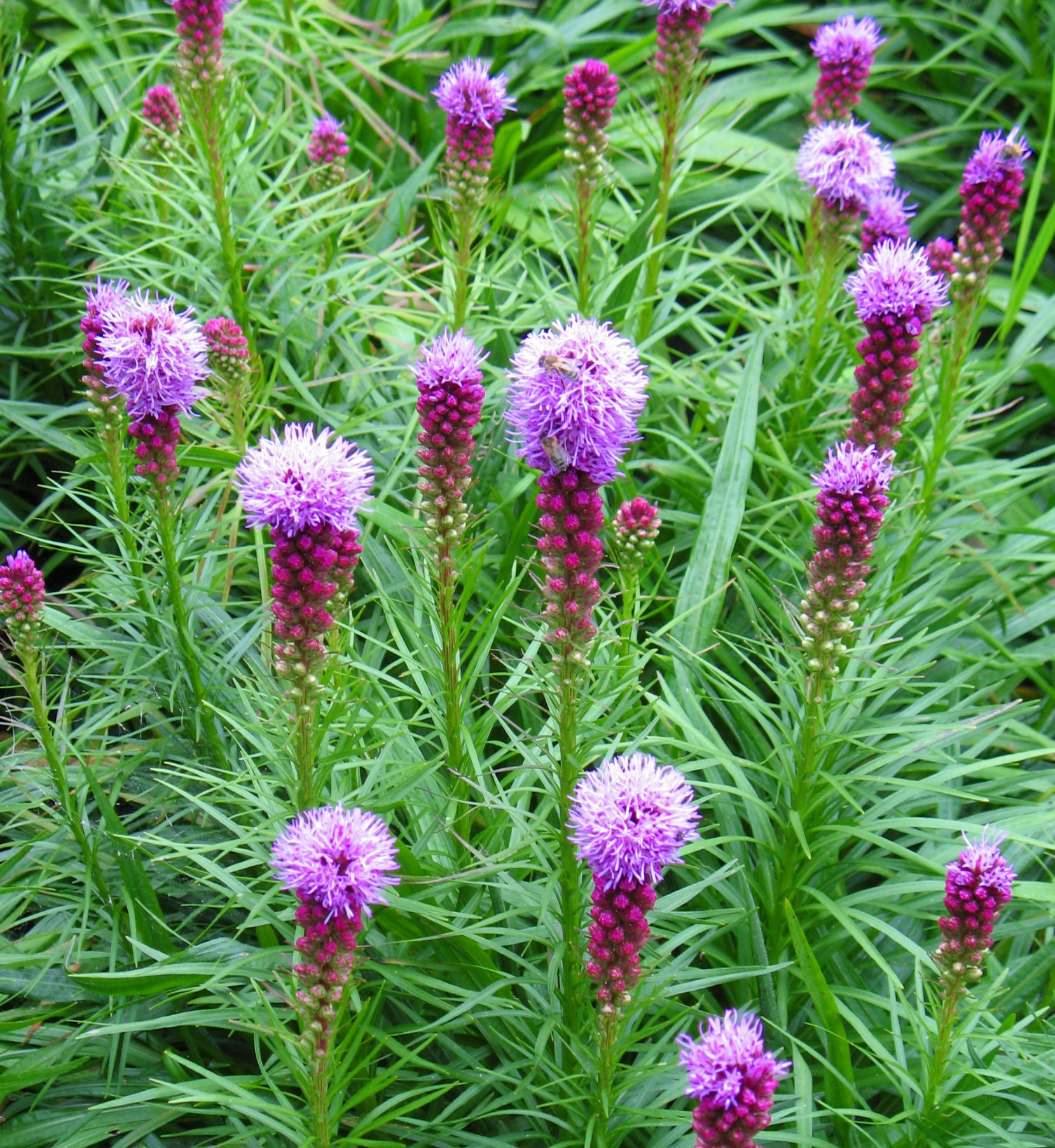
Bright, pink-purple blooms on tall spikes in summer. Height: 2-4'. Width: 18". Sun to part sun. Moist to wet, average soil. Good drainage. Drought tolerant after established. Do not over-fertilize. May need staking. Long-lived. Takes up to two seasons to develop into a large plant. Use as a vertical accent in borders, meadows or wild gardens. Combine with sunflowers, goldenrods, silphiums and other yellow composites for nice color contrast. Seeds attract birds. Butterfly plant. Rain garden plant. Deer resistant.
Bloodroot (Sanguinaria canadensis) PART SHADE TO SHADE
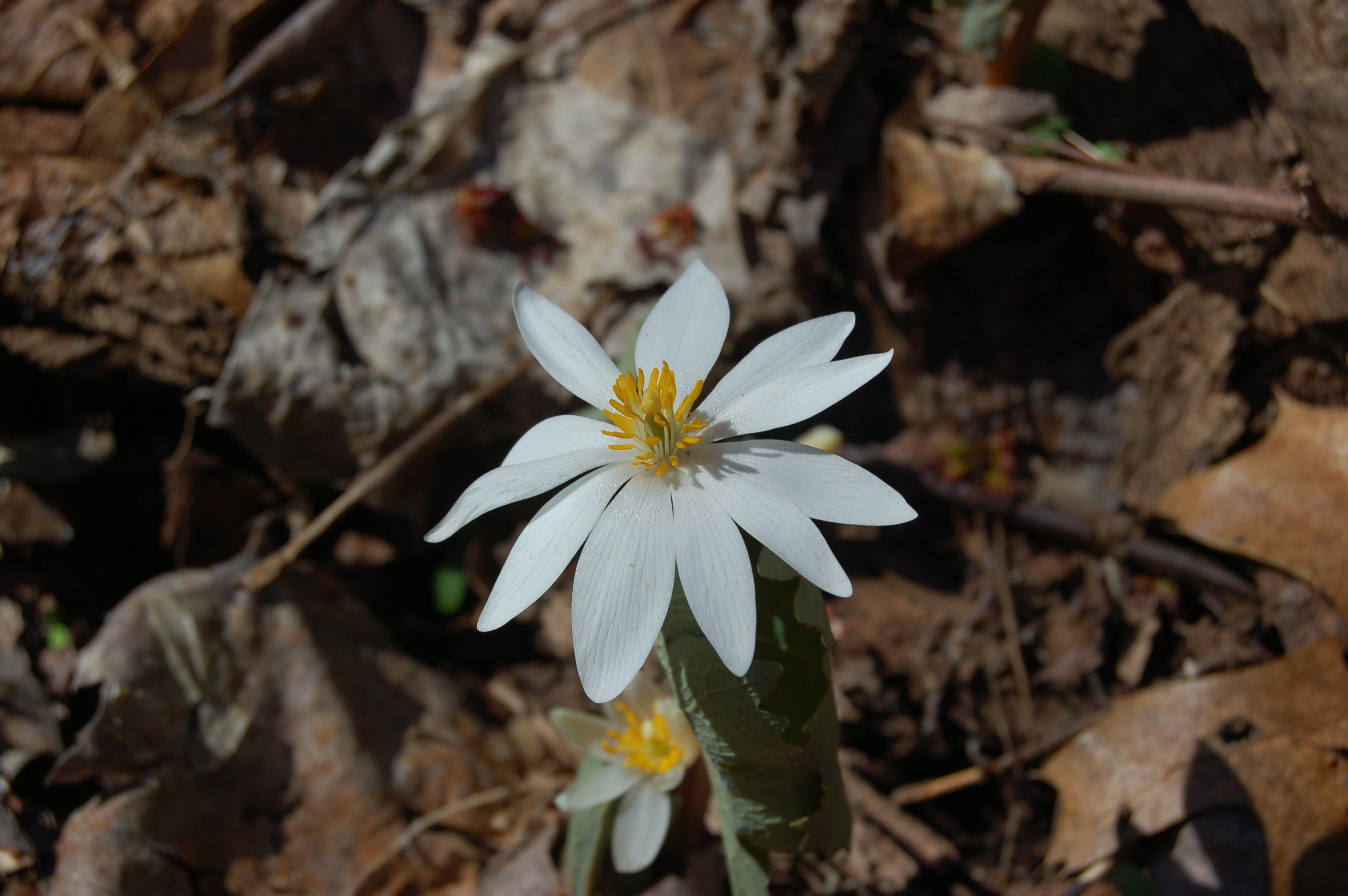
Blooms briefly in spring. Flowers white with yellow stamens. Leaves large, roundish, with wavy, lobed edges. Attractive foliage lasts in good condition into fall with enough moisture. Height: 5-12". Width: 12-16". Part shade to shade. Moist, rich, well-drained, near-neutral soil. Dust soil occasionally with horticultural lime. Add a little organic fertilizer in spring. Mulch only lightly to prevent stem rot. Mass for a groundcover in shade, or plant among spring ephemerals to cover bare spots. Deer resistant.
Blue Cohosh (Caulophyllum thalictroides) - SHADE
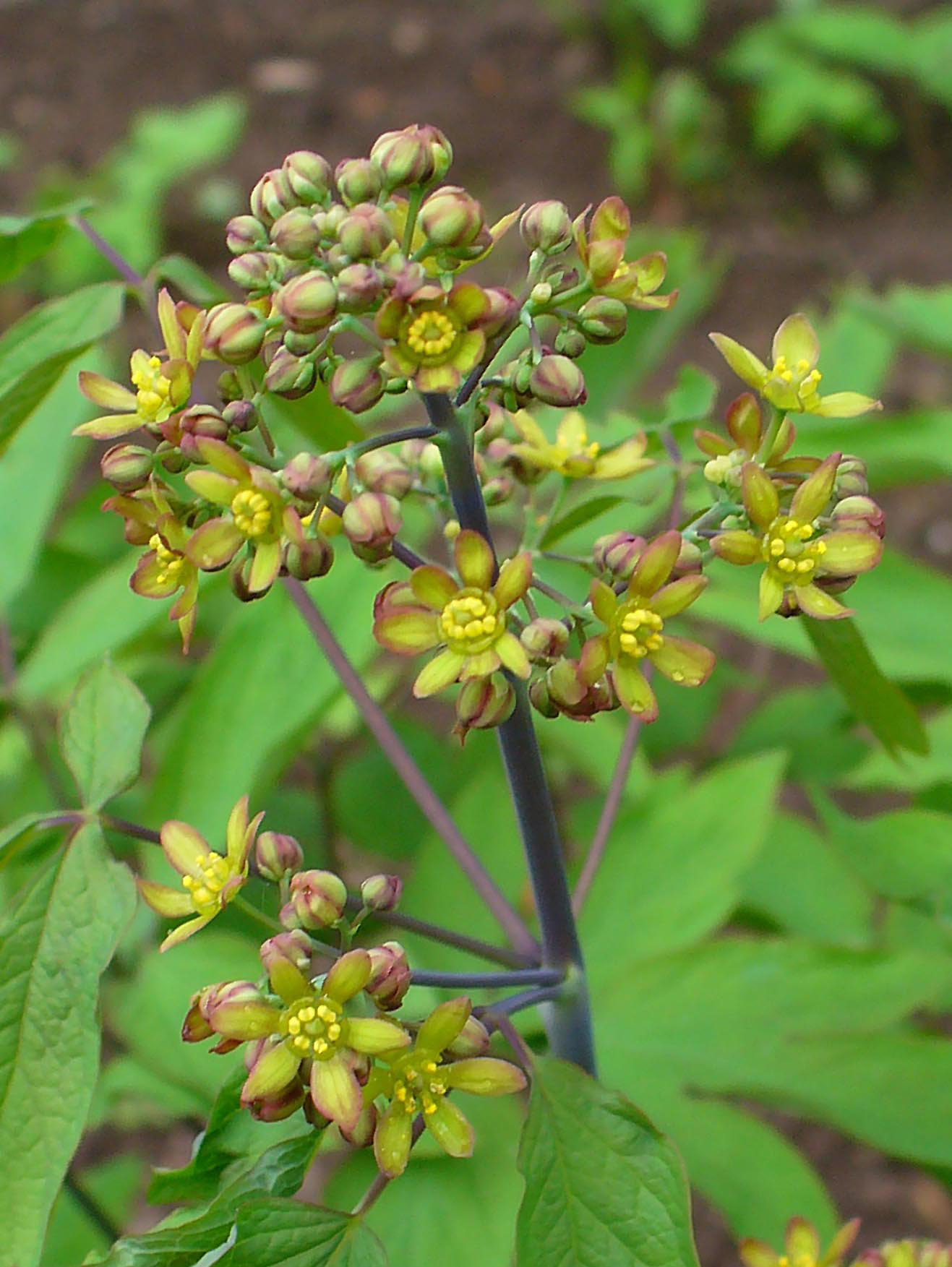
Emerging foliage deep, smoke-purple followed by greenish-yellow or purplish flowers where leaflets join stems in spring. Fully expanded leaves blue-green and airy looking. Large, blue berries in summer. Height: 2-3'. Width: 2'. Shade. Moist, rich, near-neutral soil. Dust soil occasionally with horticultural lime. Long-lived. Division possible in spring or fall, but not usually necessary. Often found in large stands on moist woodland slopes. Good in combination with Doll's Eyes. Also nice as an accent plant or as a step-down layer between shrubs and shorter plants. Deer resistant.
Blue False Indigo (Baptisia australis) - SUN TO PART SUN
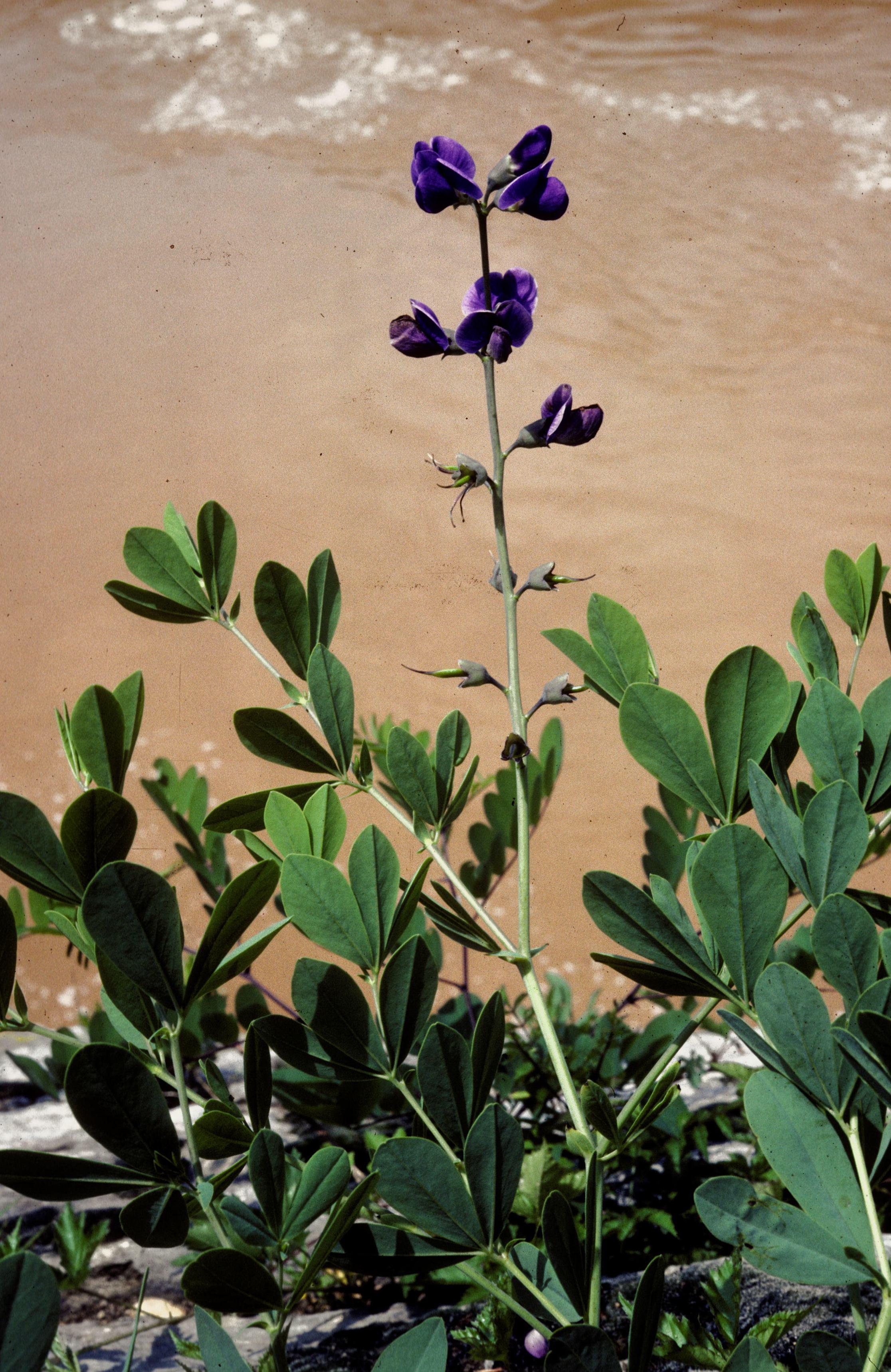
Inch-long, blue-violet blossoms on spikes in late spring. Blue-green foliage stays attractive through the season. Height: 3-4'. Width: 3'. Sun to part sun. Average, well-drained soil. Extensive woody rootstock takes several years to develop. Shrubby. Allow enough space for mature size as species resents transplanting. Excellent foliage backdrop for smaller plants or among low groundcovers. Adaptable and carefree. Butterfly plant. Deer resistant.
Blue Heart-Leaved Aster (Symphotrichum cordifolium) - PART SHADE
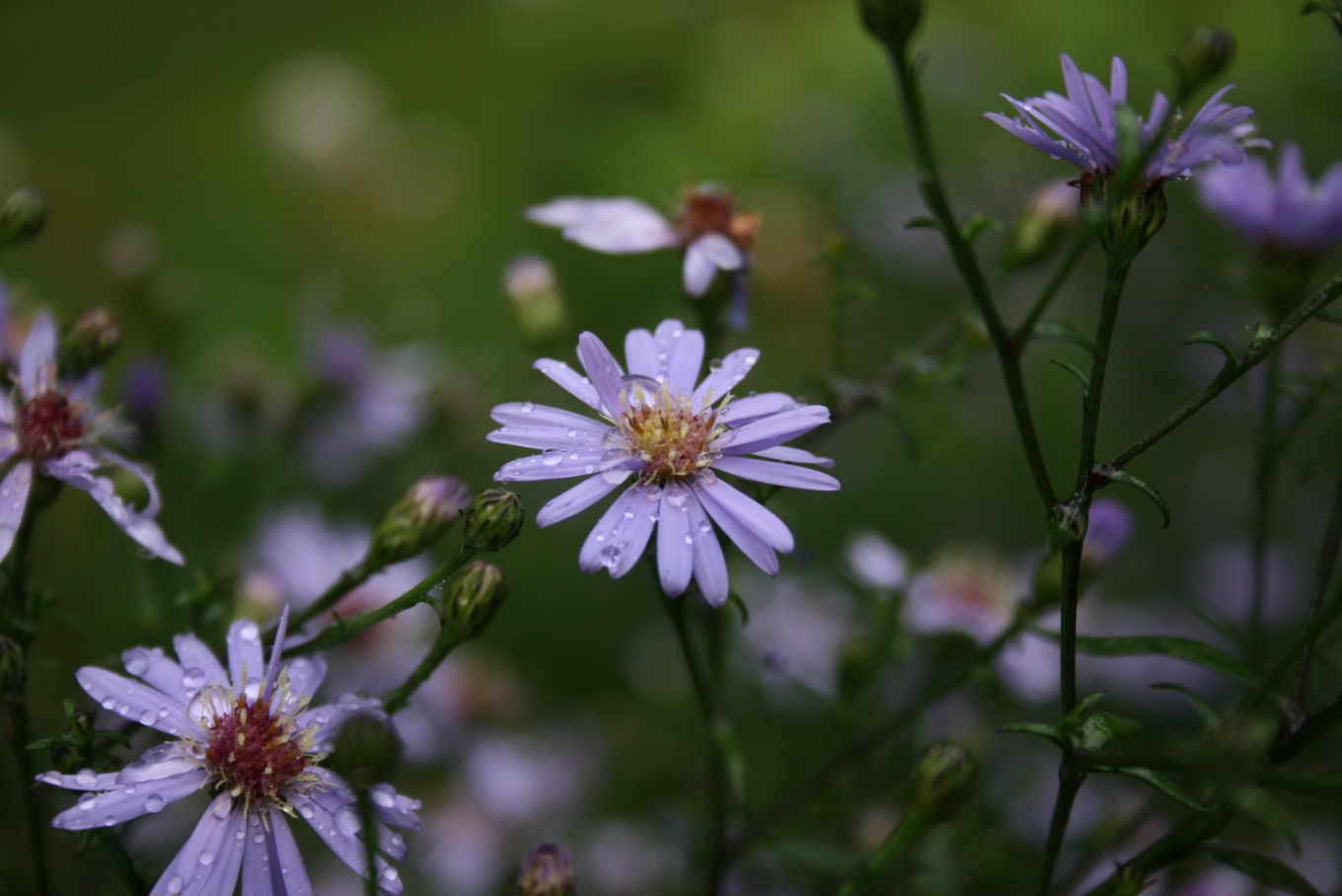
Clusters of 1" wide, blue, pink or white flowers along arching stems in fall. Height: 2-4'. Width: 18". Average soil. Part shade. Lovely in a woodland garden. Competes well with tree and shrub roots. Readily self-sows. Deadhead to prevent. Nice on steep banks where Tall Bellflower is a good companion. Good fall nectar source and food plant for butterfly larva.
Blue Vervian (Verbena hastata) - SUN TO PART SUN
Blooms dark, blue-violet on stiff, upright stems from summer to fall. Height: 2-6'. Width: 12-16". Sun to part sun. Moist to wet, moderately fertile soil. Forms clumps. Self-sows. Deadhead to prevent. Use at edge of pond or stream or in a moist meadow. A nice companion to yellow-blooming meadow species and other blue-purple late bloomers such as Joe-Pye-Weed and ironweeds. Rain garden plant. Deer resistant.
Blue-eyed Mary (Collinsia verna) - PART SUN
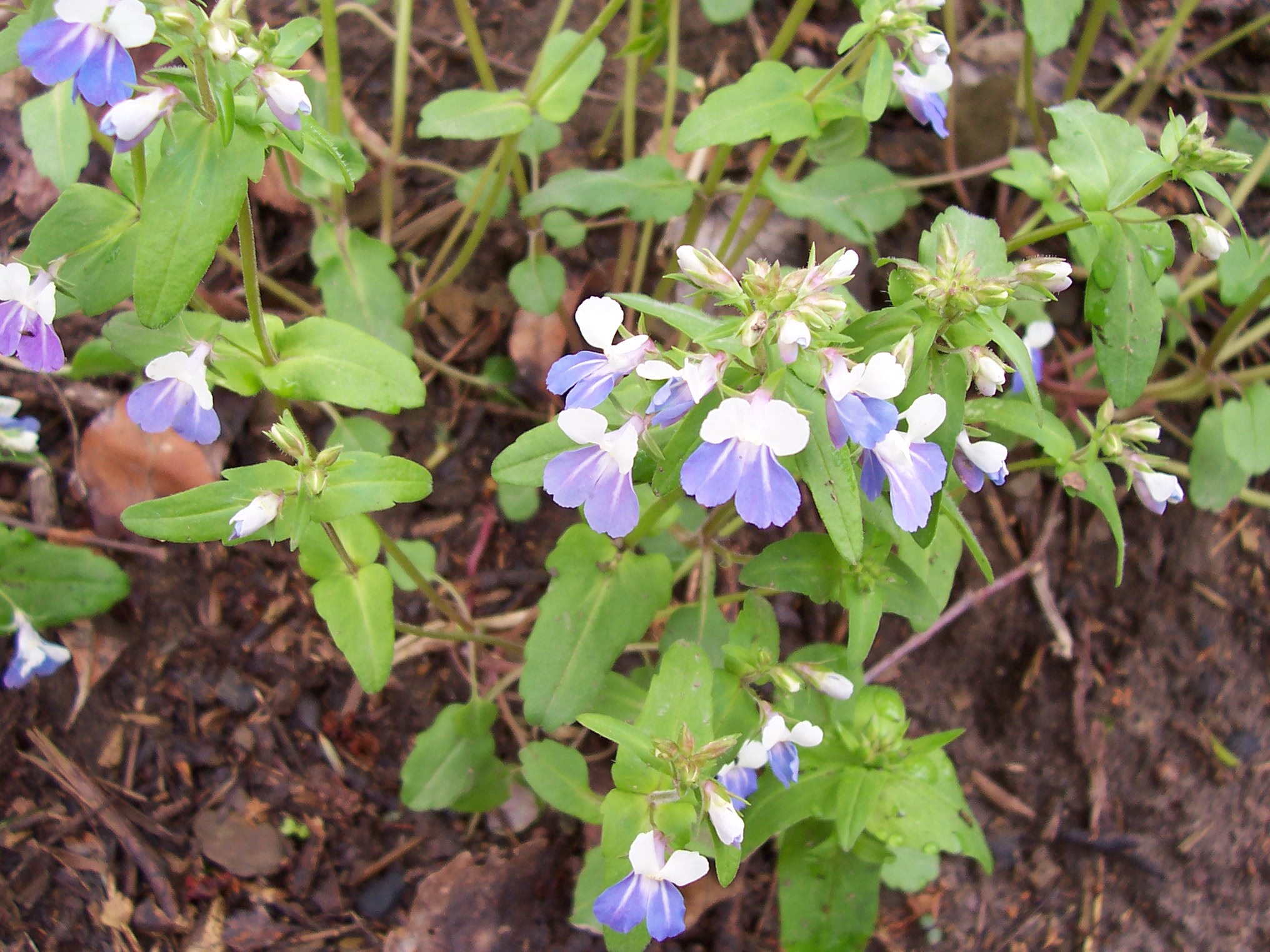
Annual. Charming, blue and white flowers in spring. Height: 6-18". Part sun in spring. Moist, near-neutral, rich soil. Dust soil occasionally with horticultural lime. Plants emerge in fall, stay green through winter, bloom in late April and May, set seed and die. Self-sows. Lovely under deciduous trees. Deer resistant.
Bluets (Houstonia caerulea) - PART SUN TO PART SHADE
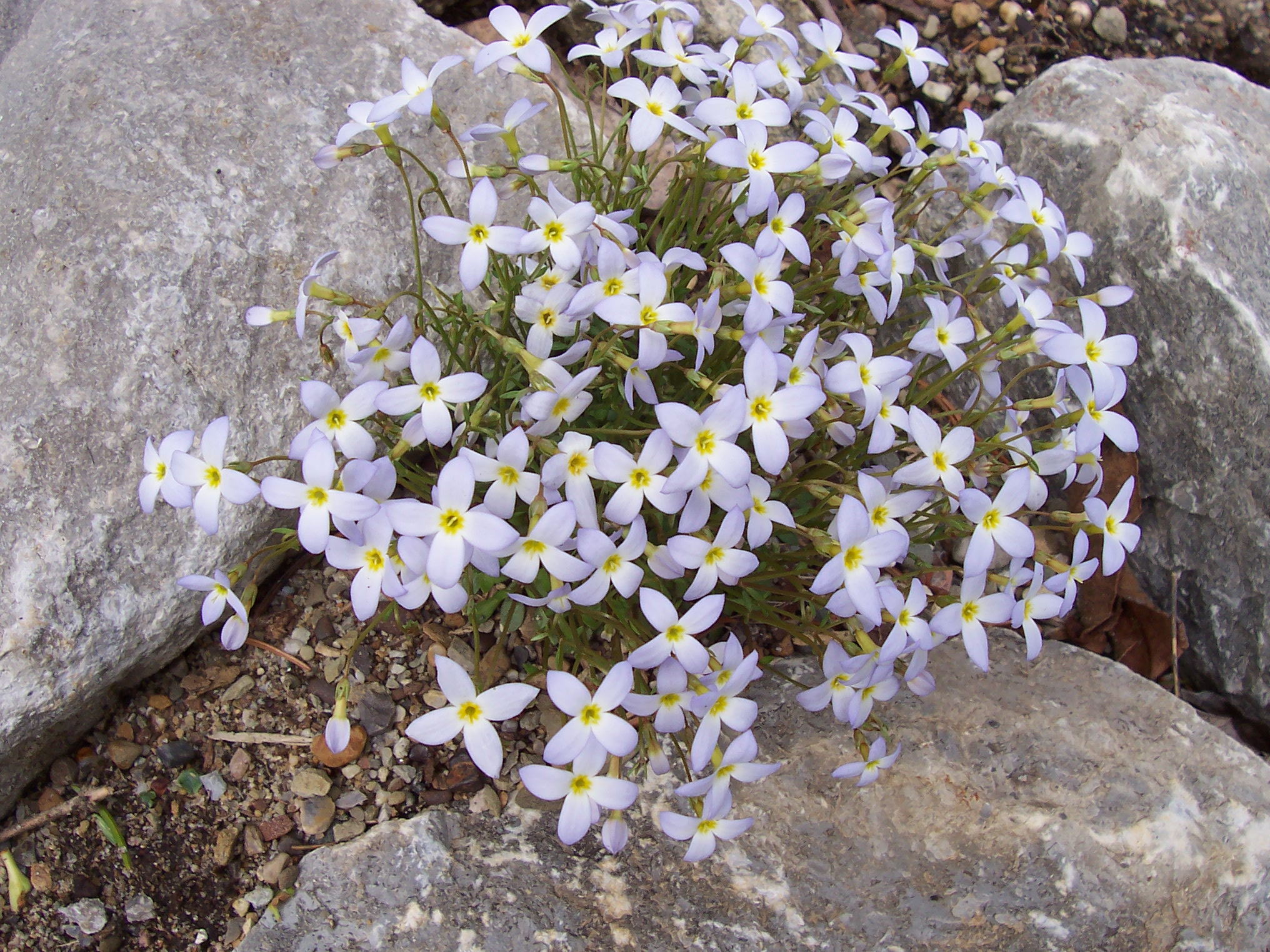
Dainty, light blue flowers with yellow centers in spring. Charming, diminutive plants form tight clumps only 1-4" high. Part sun, light shade or dappled light. Requires moist, but well-drained, open ground. Will not tolerate competition. Favors places where moss grows, as between shaded patio stones. Does well planted in damp sand in rock gardens. Adding a little peat moss to the soil when planting, and mulching lightly are beneficial. Plants may be short-lived but will self-sow in open soil or moss where happy.
Boneset (Eupatorium perfoliatum) - PART SUN
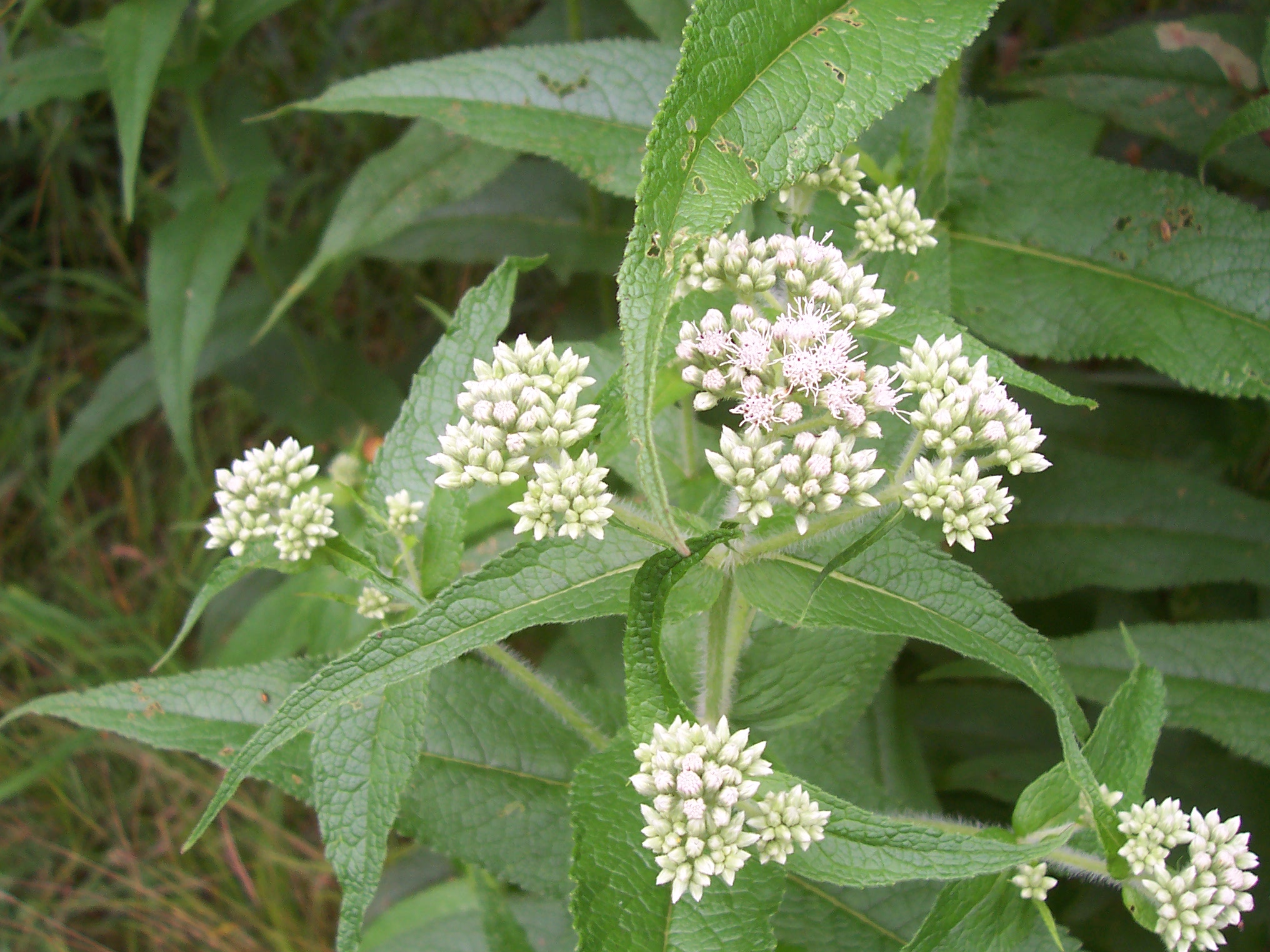
Blooms in hazy, white, flat heads in late summer. Height: 2-4'. Width: 2'. Part sun. Moist to wet, average soil. Foliage interesting as stem appears to pierce leaves. Emerges late in spring. May be short-lived but self-sows. Lovely massed or used in meadows, wild gardens or at the edges of ponds or streams. Good in combination with Joe-Pye Weed and ironweeds. Lovely with cattails. Good cut or dried flower. Excellent nectar plant. Rain garden plant.
Bottle Gentian (Gentiana clausa) - PART SUN
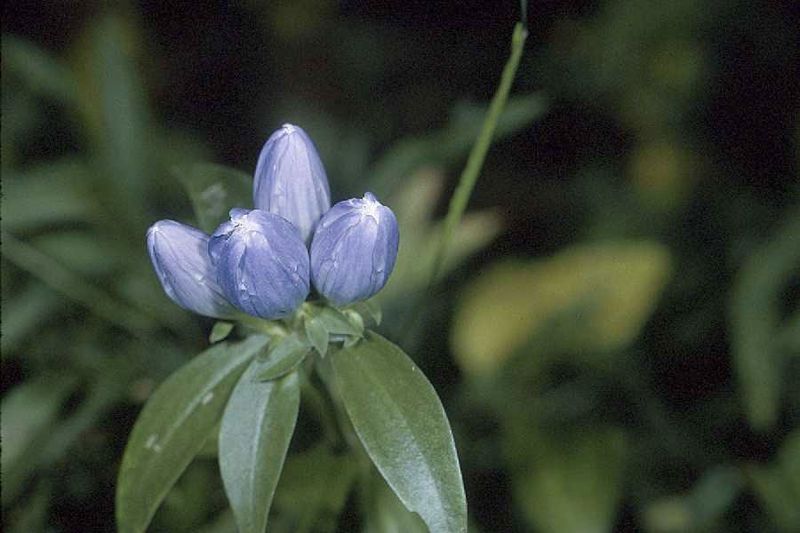
Deep, blue-purple blooms in late summer. Flowers remain closed in a bottle shape, as if still in bud. Height: 14-18". Width: 2-3'. Part sun. Moist to wet, fertile soil. Clumping habit. Water very regularly throughout the first season. Do not disturb roots once established. Scatter in a border, mass or use as an edger. Pollinated by bumblebees burrowing down inside bloom. Rain garden plant.
Butterflyweed (Asclepias tuberosa) - SUN TO BRIGHT SHADE
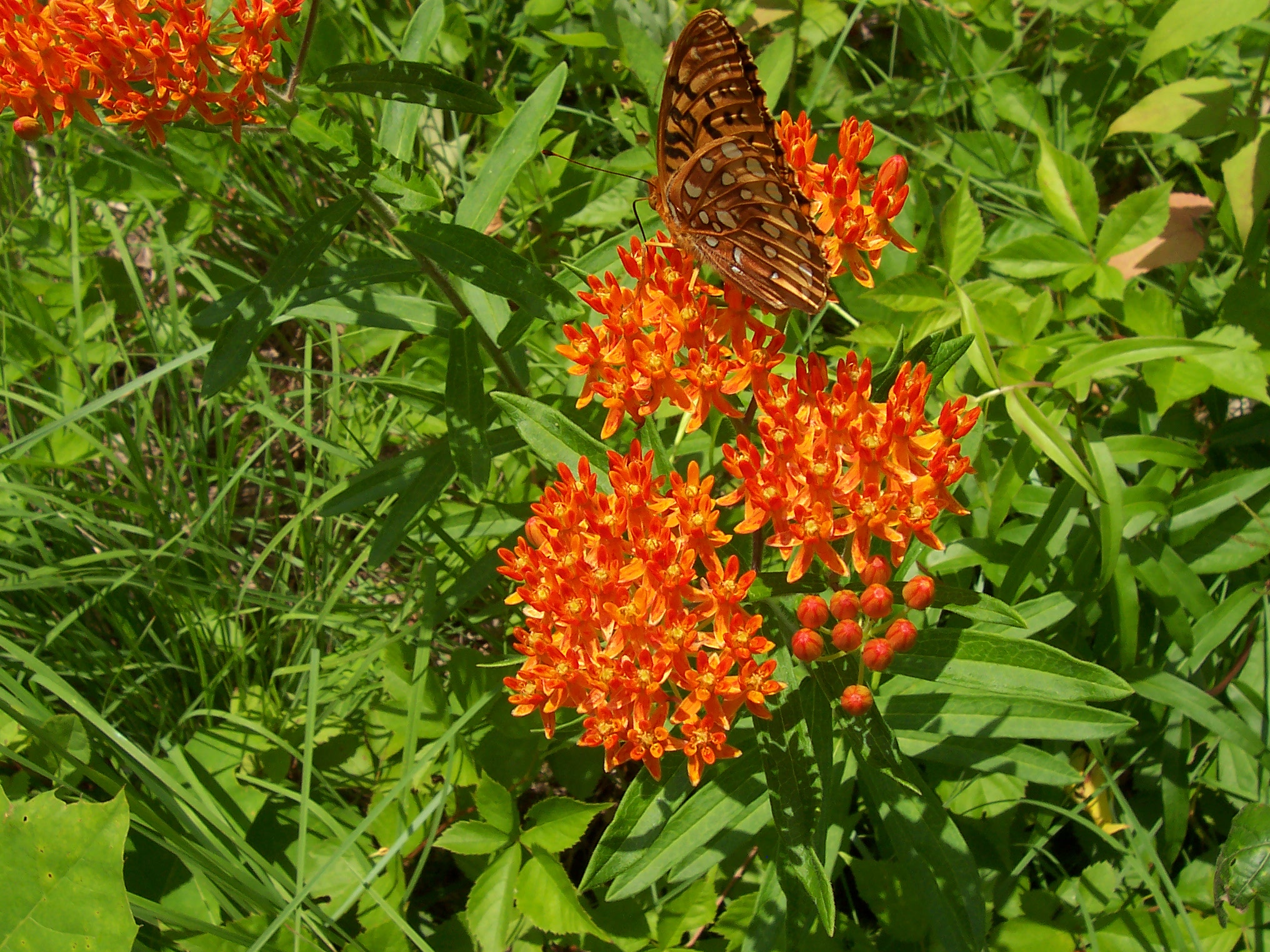
Compact, bushy plant with brilliant orange flowers in mid-summer. Height: 2-3'. Width: 2'. Sun to bright shade. Sandy to average soil. Good drainage. Will not tolerate wet soil. Mark locations as plants break dormancy late. To avoid empty spots in early summer, plant among earlier bloomers. Long-lived. Deep taproot makes transplanting difficult. Avoid digging close to plants because roots, if damaged, are easily infected. Choose a permanent location and allow to die back naturally. Mulch to prevent frost heaving. Nice with native grasses and coreopsis species. Long-lived. Butterfly plant.
Canada Mayflower (Maianthemum canadense) - PART SUN TO FULL SHADE
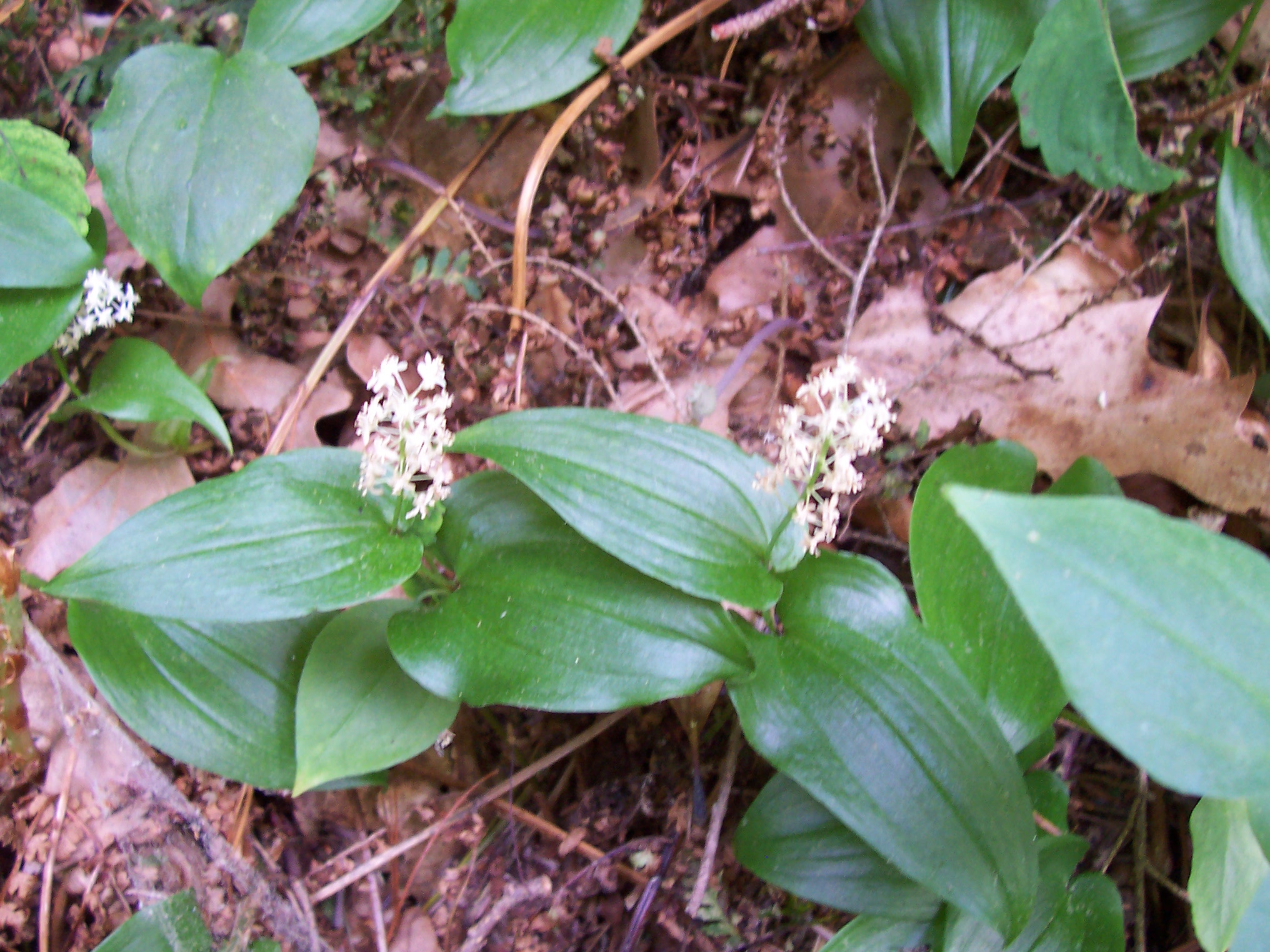
Deciduous groundcover. Resembles lily-of-the-valley. Blooms white in spring. Red berries taken by birds in fall. Height: 2-4". Spread: 1'. Part sun to full shade. Average soil. Extremely adaptable. A rapid spreader. Nice interplanted with taller species, or under trees and shrubs, but does not like competition. Deer resistant.
Canada Violet (Viola canadensis) - PART SHADE
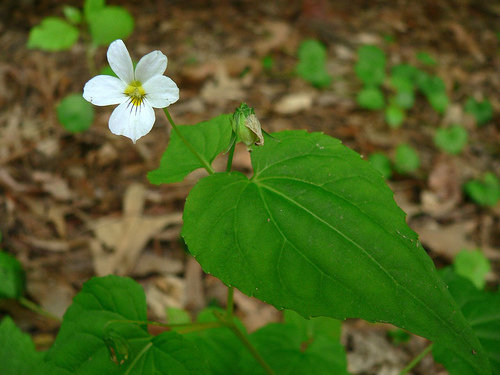
White blooms tinged purple with yellow centers throughout spring and well into summer. Height: 10-16". Width: 12". Part shade. Moist, fertile soil. An erect species. Forms mounds. Good as a groundcover for woodland gardens or for naturalizing. Also good in partly shaded rock gardens or as a filler in an awkward corner. Cut back when foliage declines. Self-sows readily. Good wildlife plant.
Cardinal Flower (Lobelia cardinalis) - PART SUN
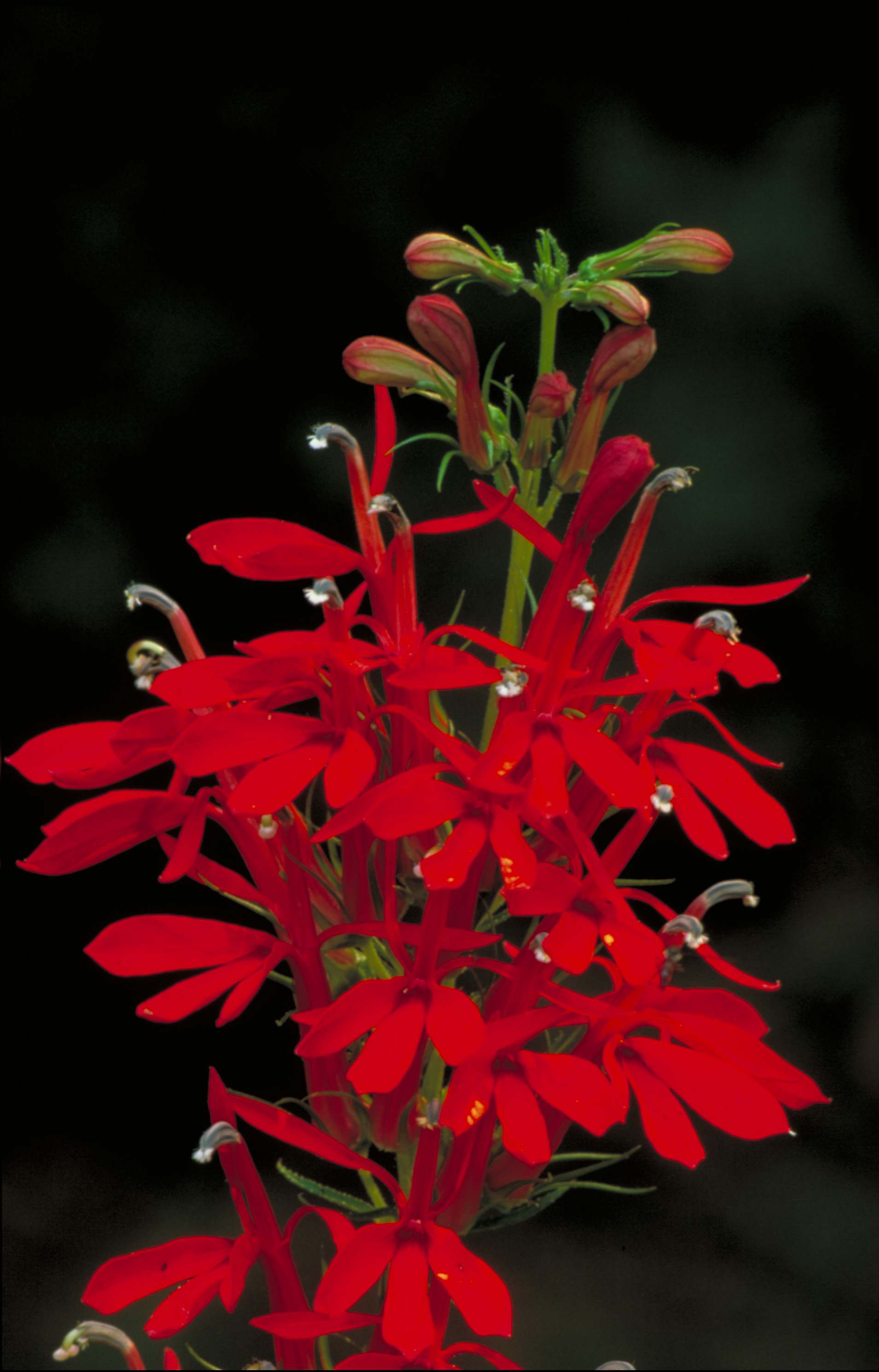
Blooms red (occasionally white or salmon) on a spike from an evergreen rosette in mid-summer. Height: 2-4'. Width: 1'. Part sun. Moist, well-drained, rich soil. Protect offsets for next year's growth by keeping plants free from heavy mulch and all weeds in fall. Mulch with pine straw or other light material in winter, but pull back early in spring to prevent rot. Water during drought. Striking in borders or near a pond or stream. Self-sows where happy. Hummingbird and butterfly plant. Rain garden plant.
Christmas Fern (Polystichum acrostichoides) - PART SHADE
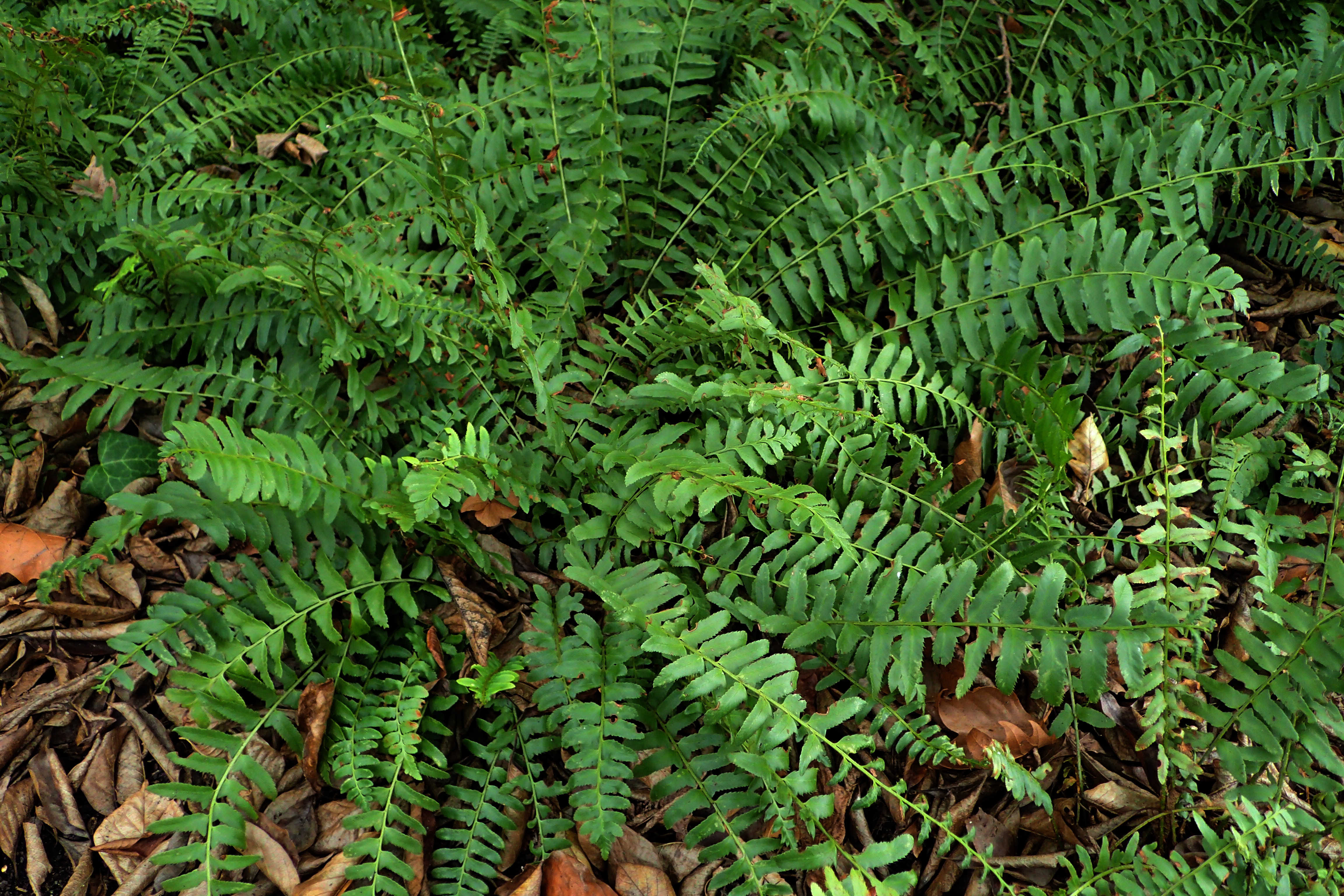
Dark, leathery, evergreen fronds. Forms clumps. Often grows on slopes.
Common Milkweed (Asclepias syriaca) - SUN OR PART SUN
Purple and green blooms in summer followed by interesting seed pods. Height: 3-4'. Sun or part sun. Average soil. Allow for wide-spreading, running root system and permit to die back naturally. An aggressive plant best used for naturalizing in fields and meadows. Forms extensive colonies. Butterfly plant.
Coral Bells (Heuchera americana) - PART SHADE
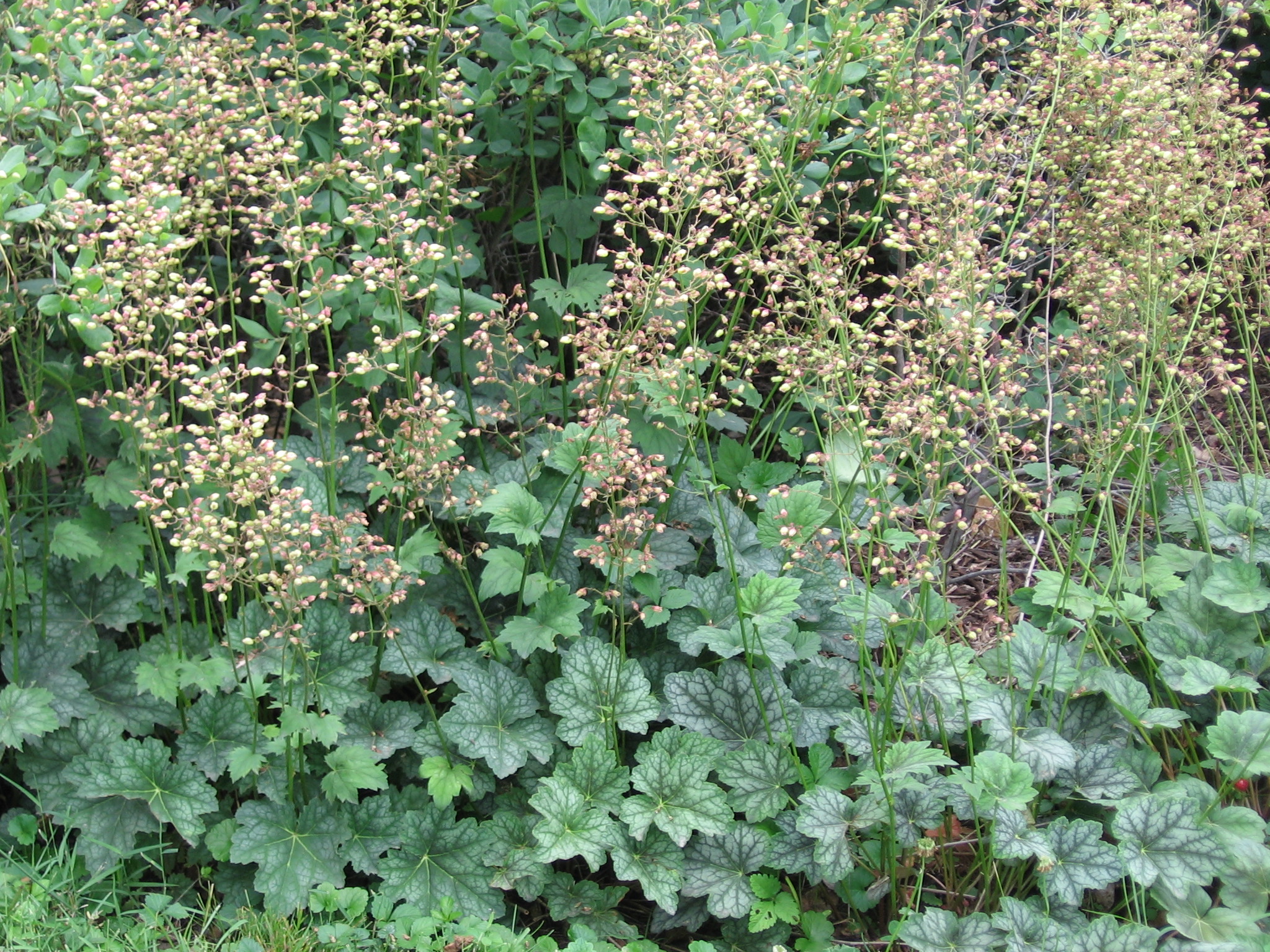
Also called Alumroot. Small, green or purplish flowers held on stiff stems high above the foliage in early summer. Height: 1-2'. Width: 12-16". Part shade, especially in the afternoon. Moist, rich soil. Good drainage. Do not plant in heavy clay. Fertilize in April and May. Dust soil occasionally with horticultural lime. Crowns may heave over winter. Mulch with pine boughs for winter and press crowns gently back into soil in early spring. Mainly a foliage plant. Use at the front of a border as an edger, massed in sweeps or as a groundcover. Also nice around rocks or at the wood edge in groups. Good native substitute for Japanese pachysandra. Drought tolerant once established. Good companions are White Wood Aster and Wild Stonecrop.
Creamy Violet (Viola striata) - PART SHADE

Blooms white with violet lines on lower flower petals in late spring. Forms rather erect mounds. Height: 8-12". Width: 8". Part shade. Moist, fertile soil. Self-sows aggressively. Best used for naturalizing. Good wildlife plant. Shadier rain garden plant.
Creeping Phlox (Phlox stolonifera) - PART SHADE TO SHADE
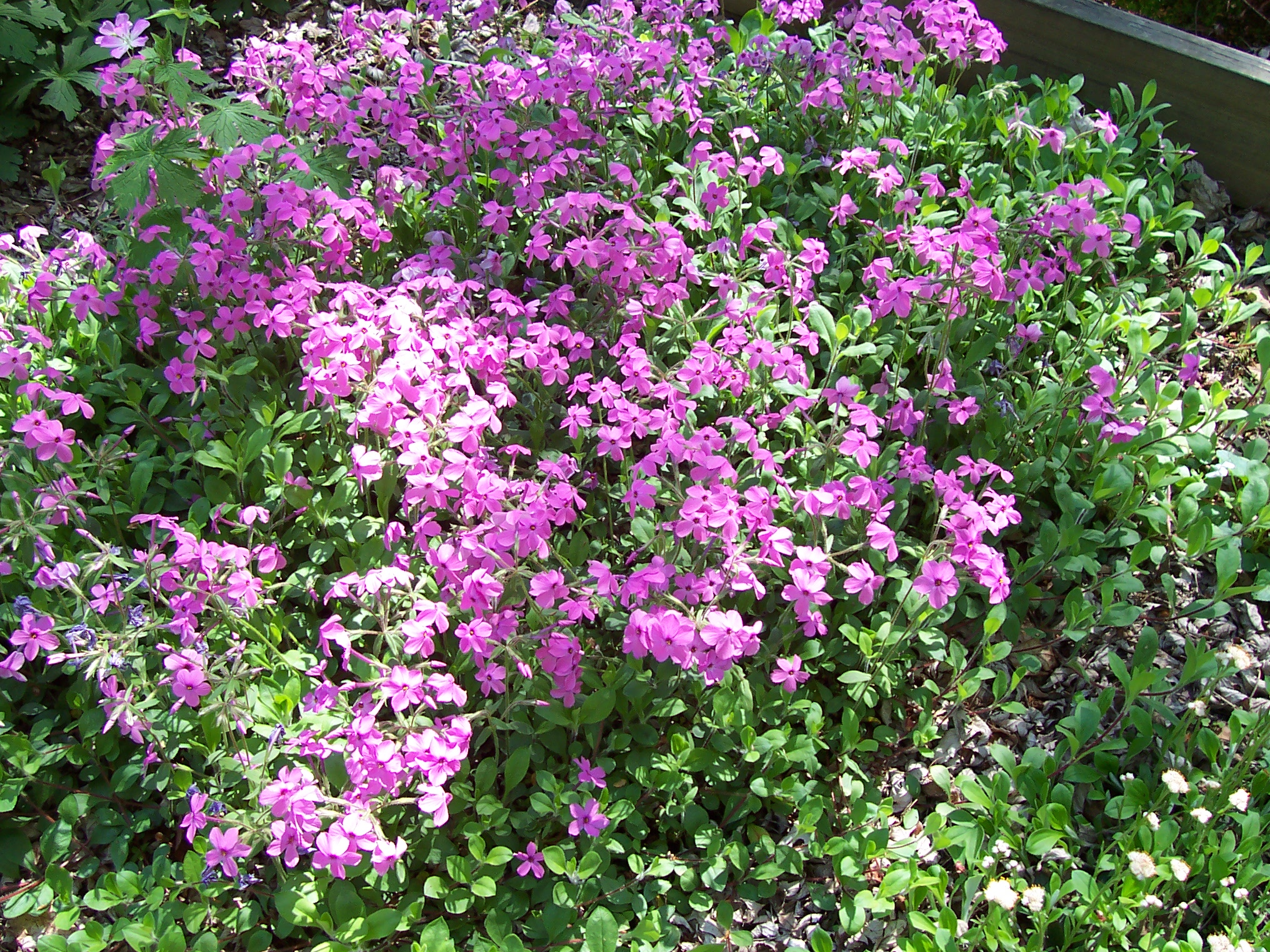
Evergreen, woodland groundcover. Blooms rose-pink in spring. Height: 6-10". Spread: to 2'. Part shade to shade. Moist, acidic, rich soil. Seed heads may be cut off after bloom for neat appearance. Remove leaf litter in winter as it can smother plants. Cannot survive drought. Transplant in early spring. Plant among other low woodlanders such as Foamflower. Nice at wood edge.
Crooked-Stem Aster (Symphotrichum prenanthoides) - PART SHADE
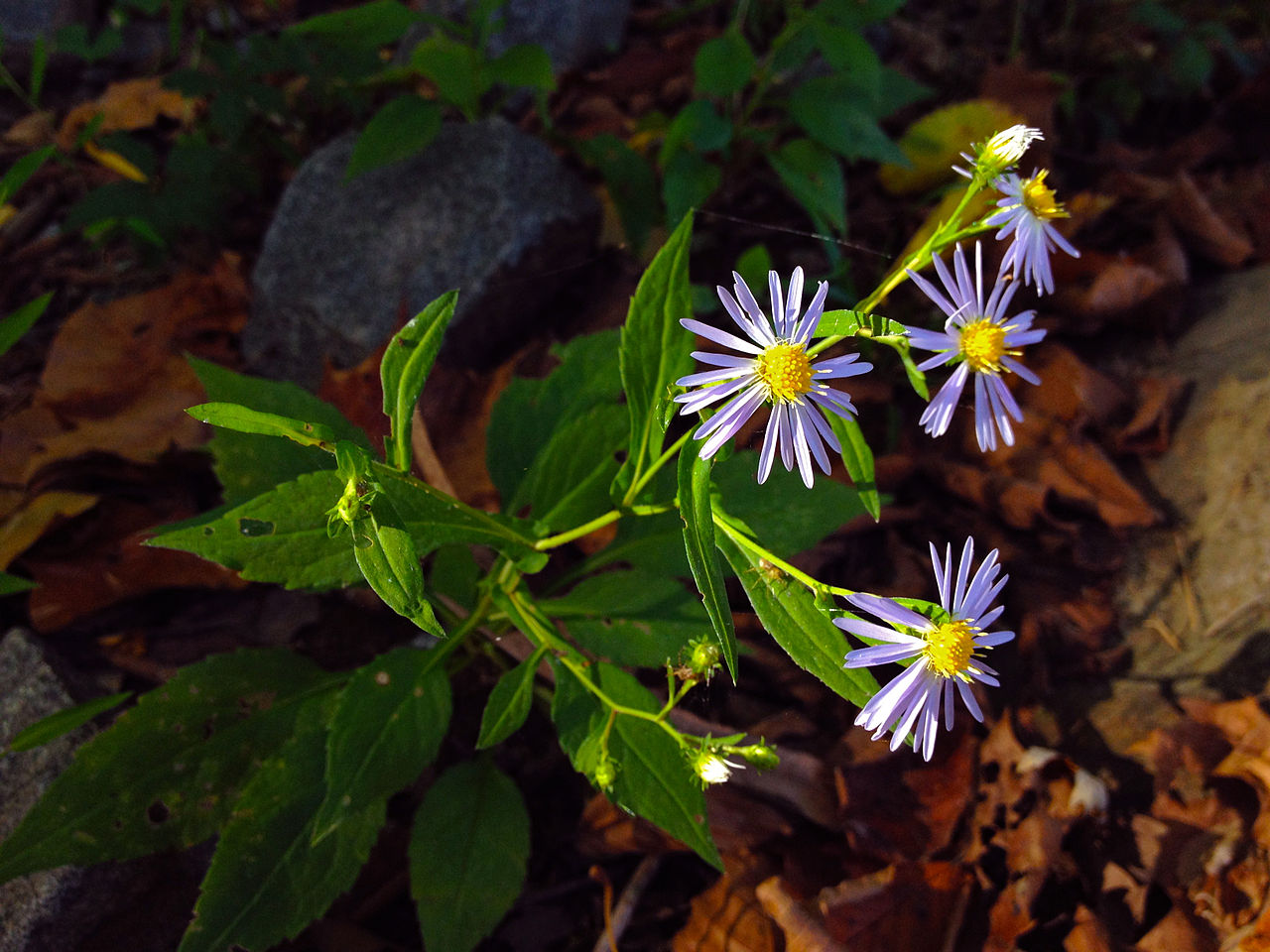
Pale violet, 1-2" wide flowers in fall. Stem zig-zags. Height: 1-3'. Part shade. Moist, rich soil. Readily self-sows. Deadhead to prevent. Good fall nectar source and food plant for butterfly larva. Shadier rain garden plant.
Culver's Root (Veronicastrum virginicum) - SUN TO PART SUN
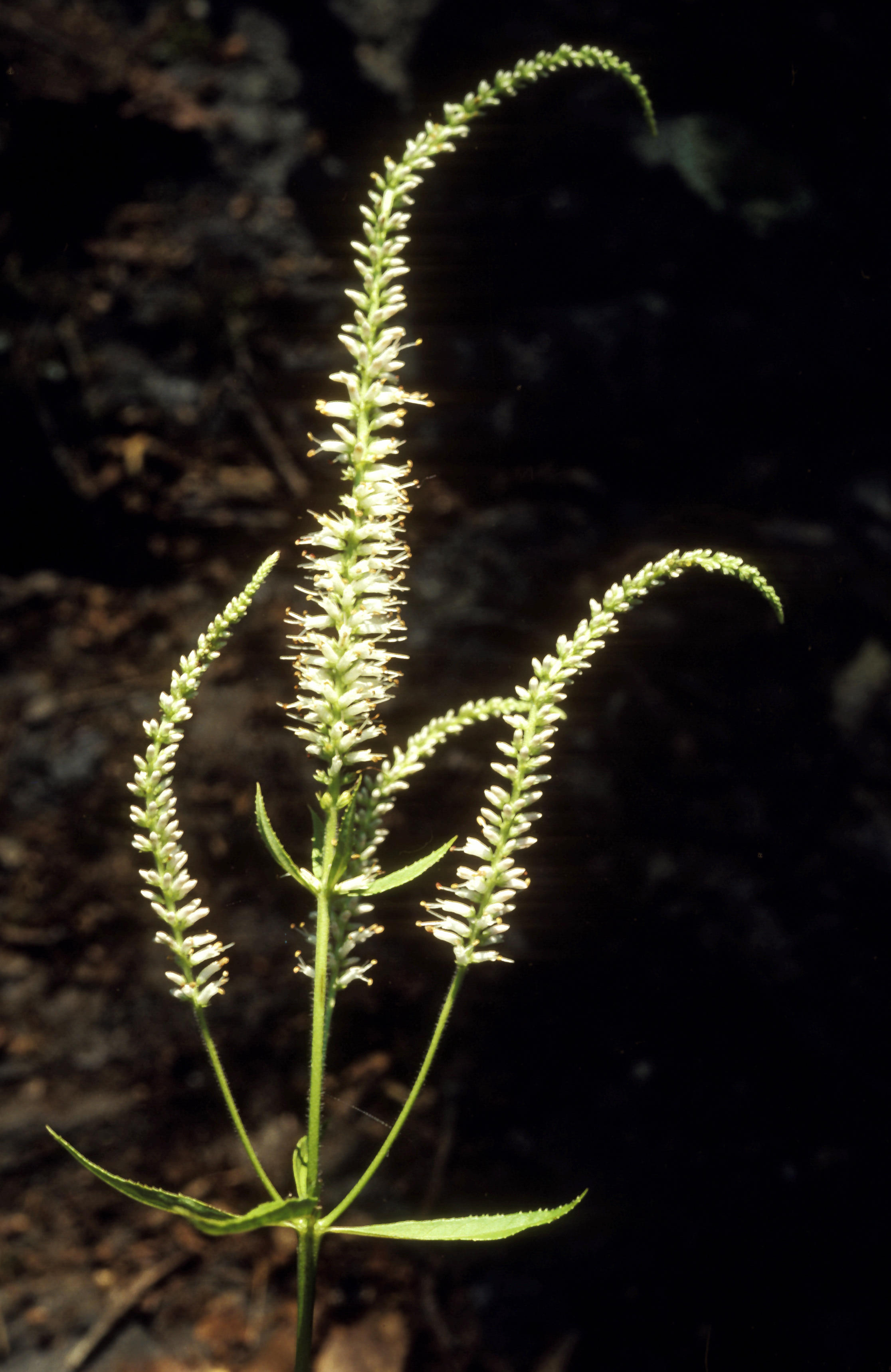
Long, white flower spikes above whorled leaves in mid-summer. Height: 3-6'. Width: 2'. Sun to part sun. Moist, moderately fertile soil. Forms clumps. Divide every 3-5 years in spring before plant emerges. Roots are thick. Elegant, vertical plant to grow with other meadow plants such as asters, ironweeds, goldenrods, Joe-Pye-Weed, coneflowers and Blazing Star. Nice massed or in groups of 5 or more as a background plant in a perennial or mixed shrub border. Shows up nicely in front of a dark background. Rain garden plant.
Cut-Leaf Toothwort (Cardamine concatenata) - PART SHADE
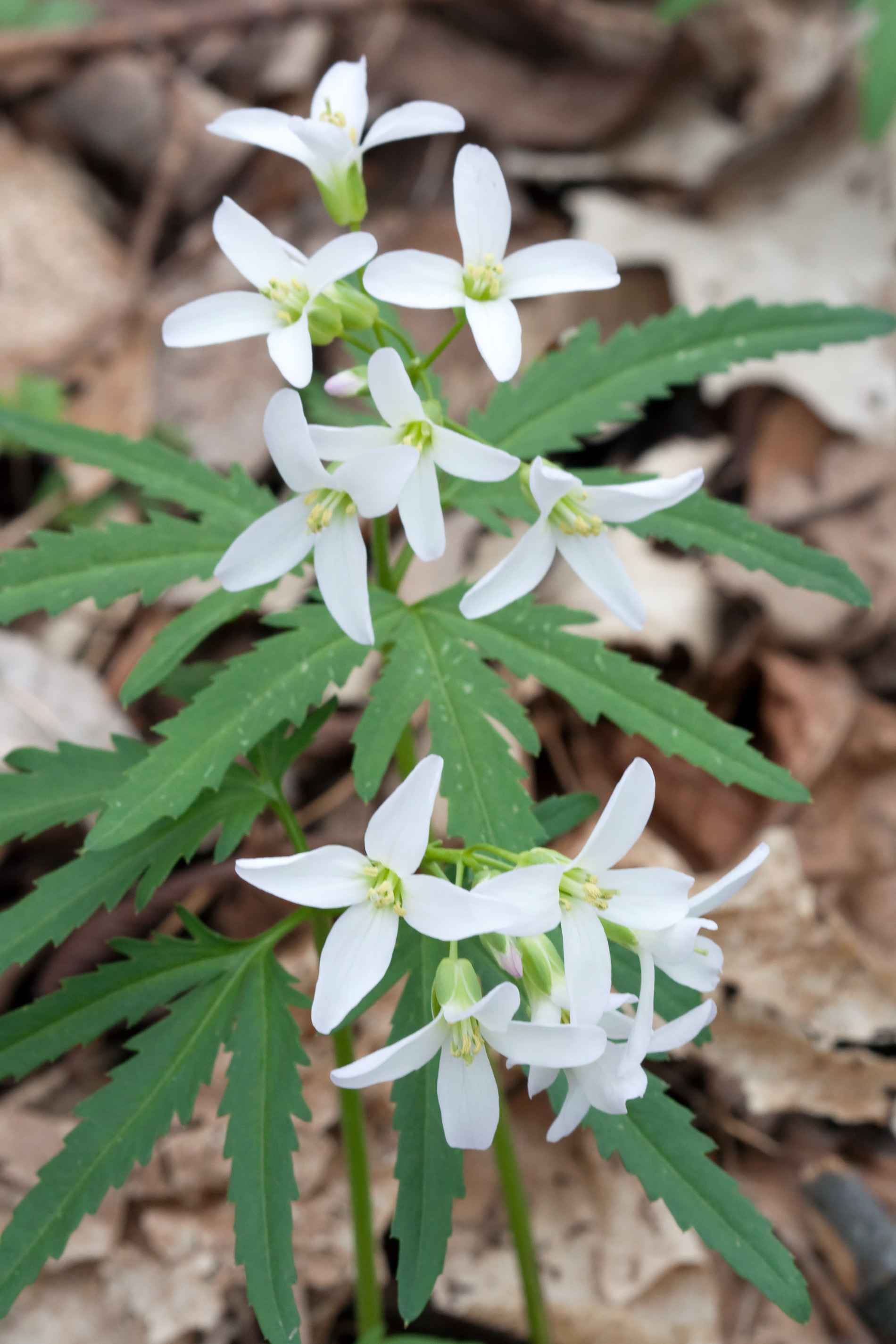
Spring ephemeral. Flower clusters white tinged with pink on short spikes in early spring. Finely cut foliage. Forms colonies. Height: 3-5". Part shade. Rich, moist soil. Nice to scatter in a woodland garden, especially around plants that emerge later such as ferns. Butterfly plant. Deer resistant.
Doll's Eyes (Actaea pachypoda) - PART SHADE
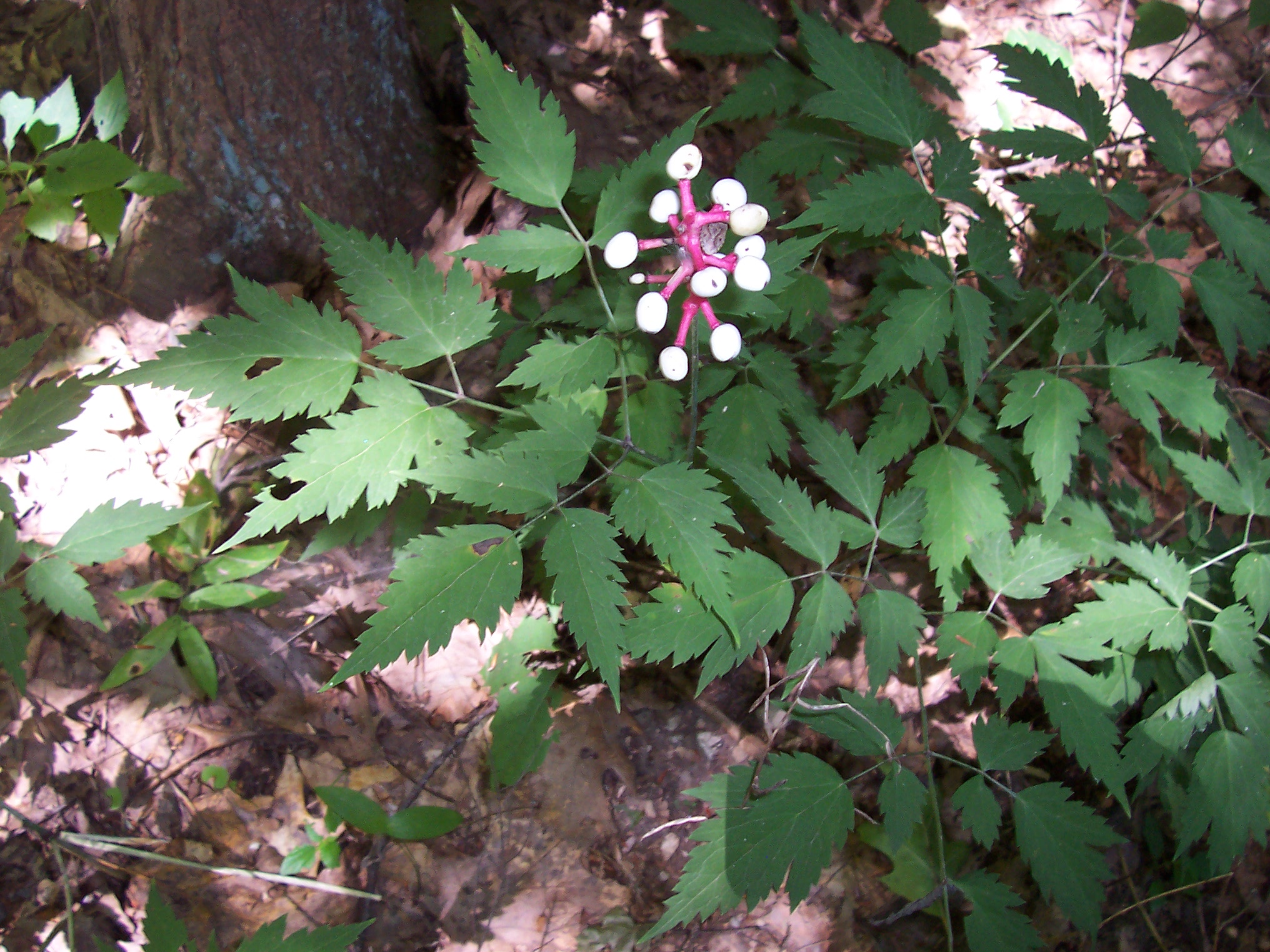
Small white flowers in May. Fruit a white berry with purplish "eye" in late summer. Bushy. Height: 1-3'. Width: 12-16". Medium to moist, rich soil. Nice intermediate height to use between shrubs and groundcover. A good companion to Virginia Bluebells or as a focal point among lower plants. Long-lived. Easily grown. Always attractive. Deer resistant.
Downy Skullcap (Scutellaria incana) - PART SHADE
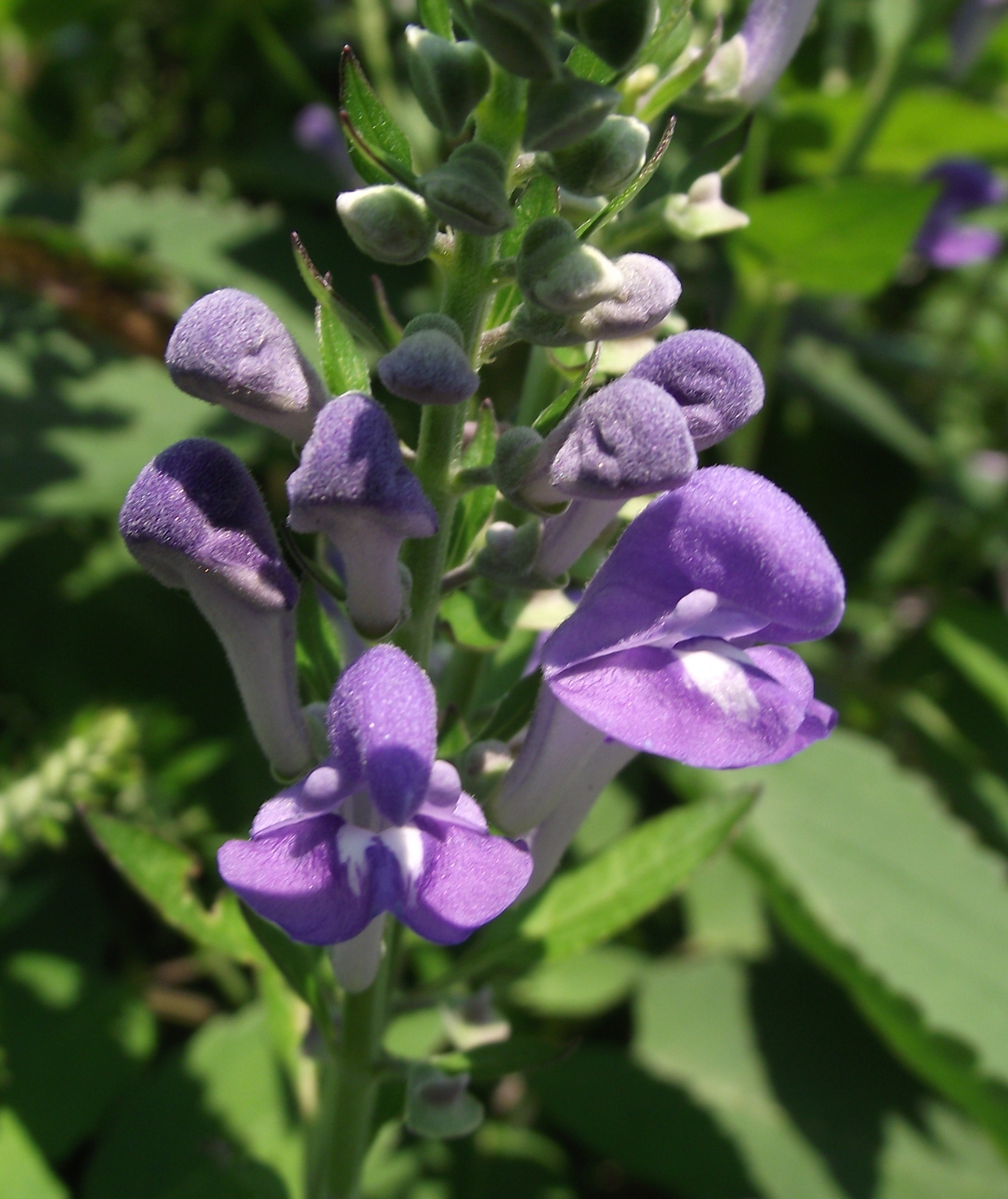
Blooms violet-blue or pink on spikes in mid- to late summer. Clumping habit. Height: 2-3'. Width: 12-16". Part shade. Moist to dry, average soil. Adaptable. Deadhead after flowering for neater appearance. Foliage may be slightly disfigured by a tiny moth. Best if scattered among other perennials in borders, or used in groups in meadow gardens or open woods. Self-sows. An alternative for dry shade. Deer resistant.
Downy Yellow Violet (Viola pubescens) - PART SHADE
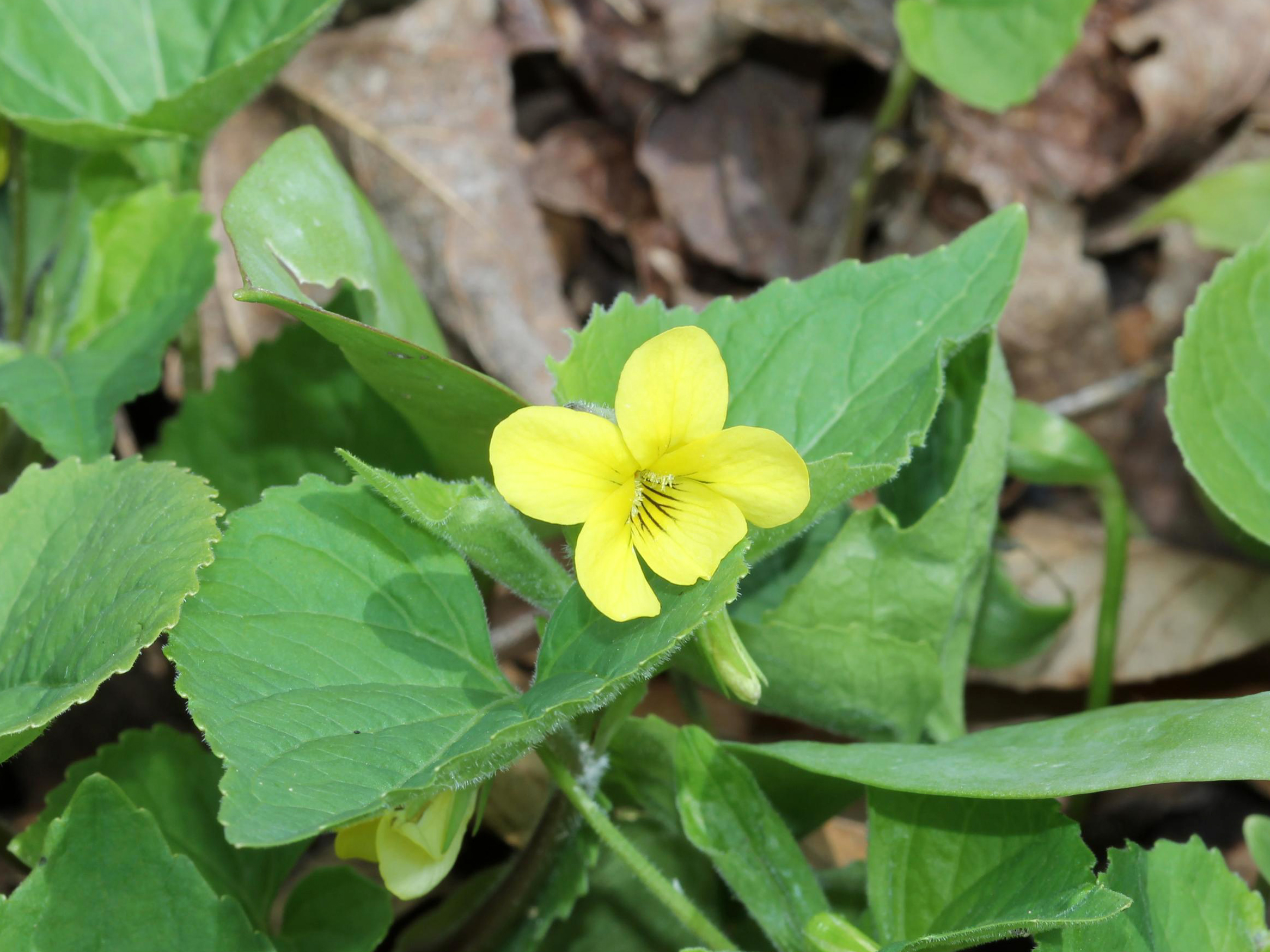
Yellow blooms in spring. Forms clumps with 3" long, heart-shaped leaves. Height: 8-12". Part shade. Moist, rich soil. Self-sows. New plants easy to move in spring or may be divided. Plants may be affected by thrips and mildew over the growing season. Cut back and they will recover for next spring. Use as a woodland groundcover, in a shady rock garden or for naturalizing. Good wildlife plant.
Dutchman's Breeches (Dicentra cucullaria) - PART SHADE
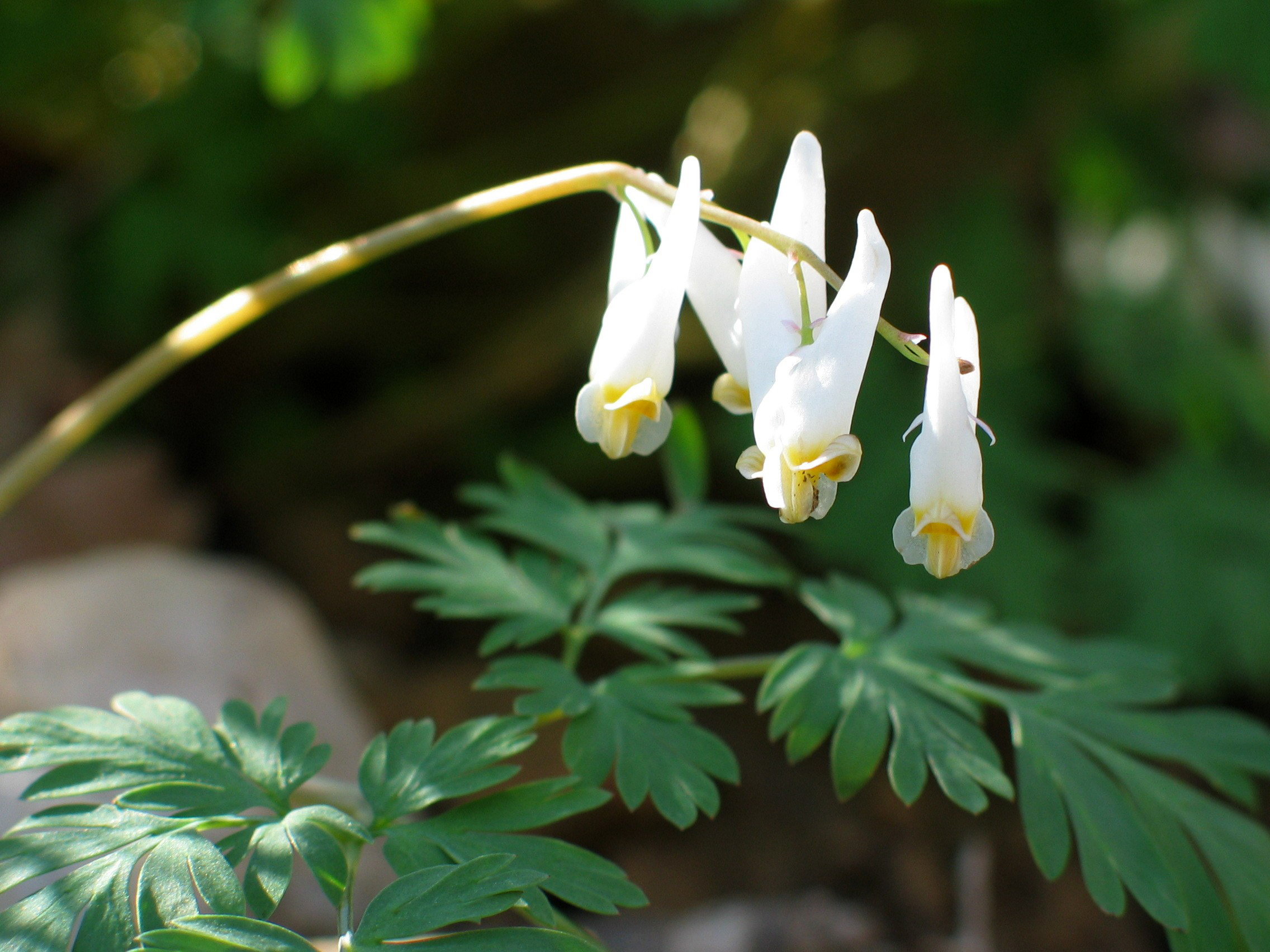
Spring ephemeral. Similar to Dicentra canadensis, above, except flowers have pointed rather than rounded lobes and plant blooms a little earlier. Culture the same. Nectar plant for bumblebees. Deer resistant.
Dwarf Larkspur (Delphinium tricorne) - PART SHADE
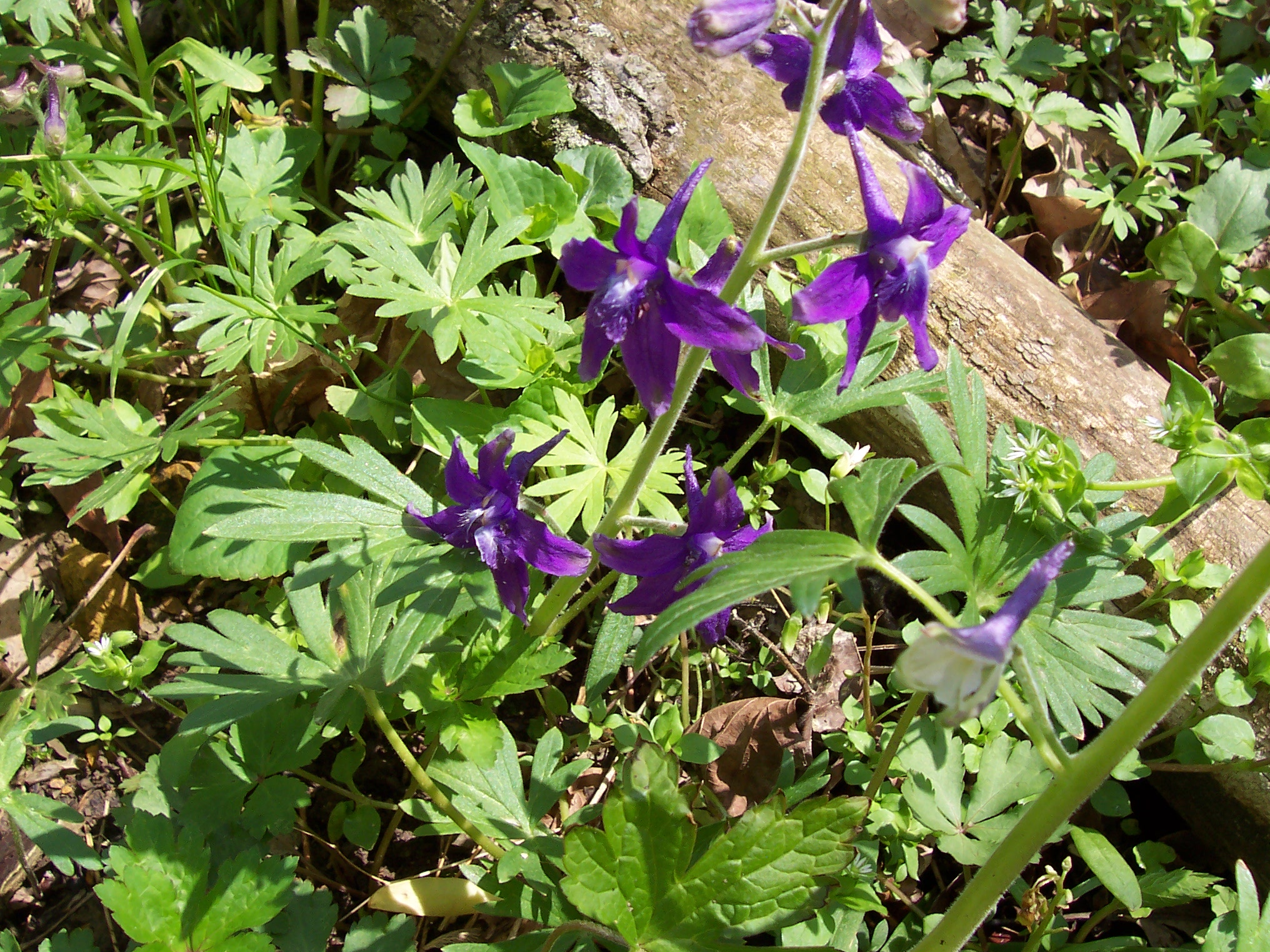
Spring ephemeral. Showy, large purple blooms above deeply cut foliage. Height and width: 1'. Part shade. Moist but well-drained, near-neutral soil. Dust soil occasionally with horticultural lime. Plants go dormant soon after bloom. Mark site well so as not to disturb roots. Interplant with other species such as ferns, Wild Ginger or White Wood Aster to follow. May be moved in early spring, but do not divide woody crown. Lovely at wood edge, near a stream or in a rock garden.
Early Meadow Rue (Thalictrum dioicum) - PART SHADE
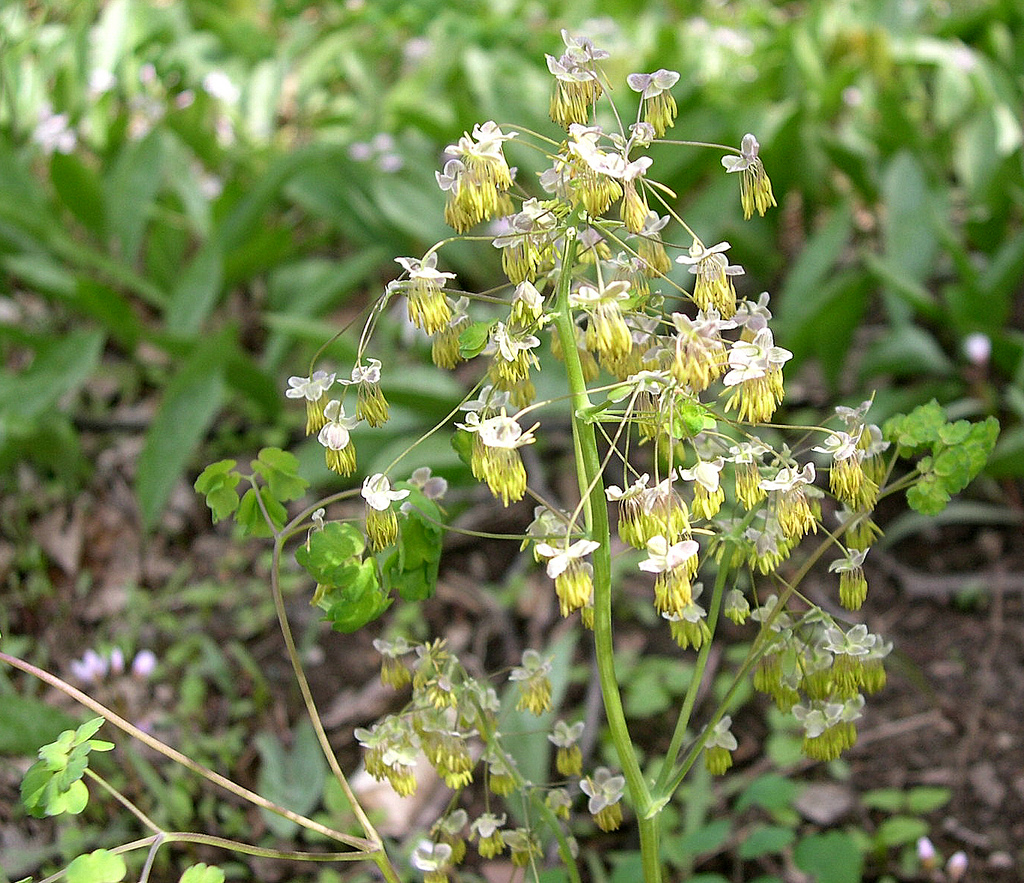
Tassel-like, yellow-g reen blooms in spring. Fine-textured foliage dies back in summer. Bushy. Height: 1-2'. Width: 1½'. Part shade. Average or even rocky soil that stays moist, especially in spring. Use as an accent plant in a woodland garden, on a rocky bank or as an airy groundcover under deciduous trees. Deer resistant.
Early Saxifrage (Saxifraga virginiensis) - PART SUN TO FULL SHADE
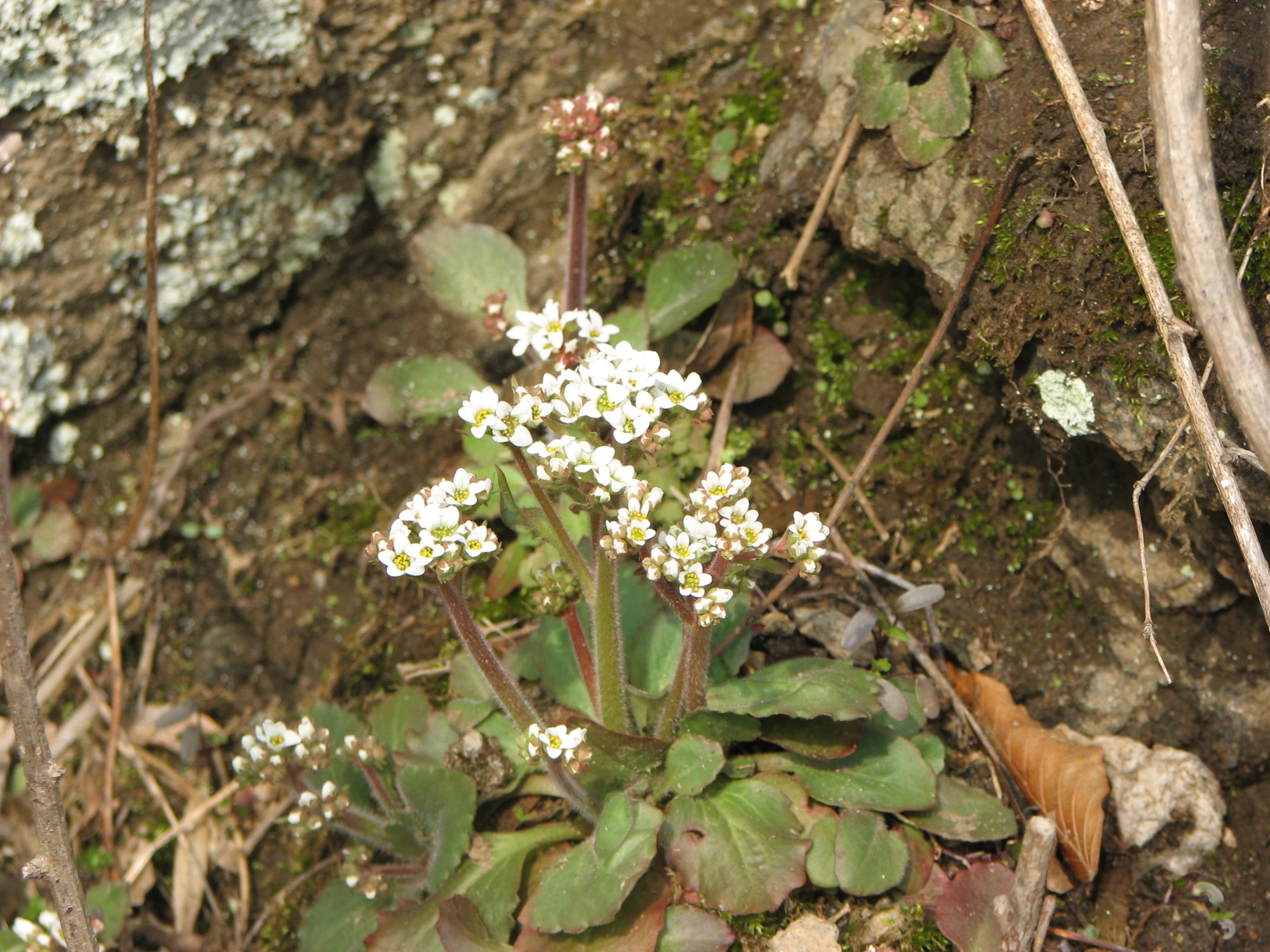
Small, white flowers bloom in clusters successively up lengthening stems and branches in early spring. Leaves are basal rosettes. Height: 4-12". Part to full shade. Moist, well-drained, rich, near-neutral soil in rock crevices or on damp, rocky banks or slopes; or create a slightly raised area with a few rocks at the edge of some trees. Dust soil occasionally with horticultural lime.
False Solomon’s Seal (Maianthemum racemosum) – PART SHADE
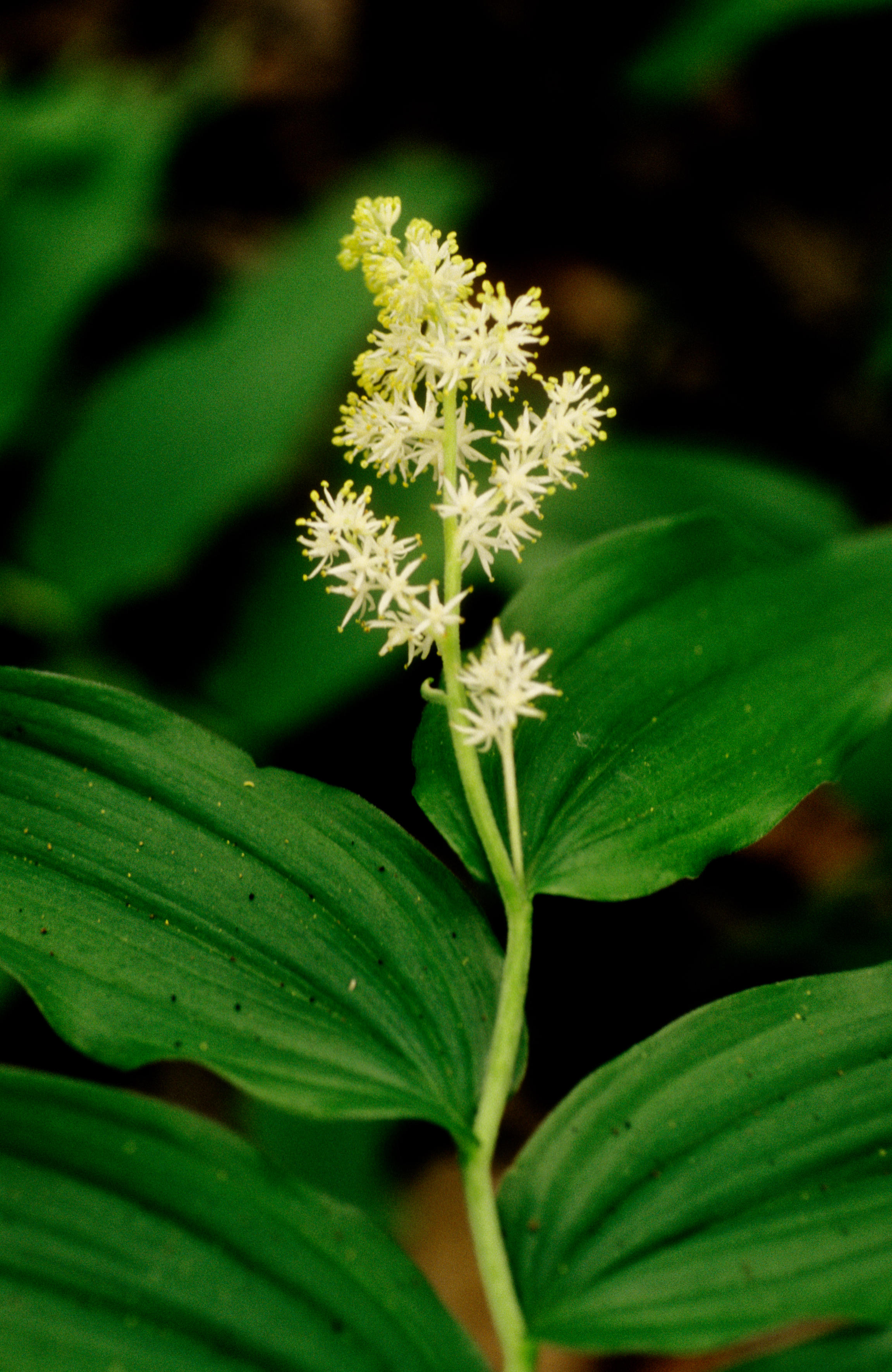
White flowers in clusters at the ends of arching stems in late spring. Berries which turn from white to red follow. Height: 1-3'. Moist, rich soil. Part shade. Forms colonies over time. Foliage benefits from extra water. Combines well with Wreath Goldenrod, Wild Ginger or Bloodroot.
Fire Pink (Silene virginica) – PART SUN
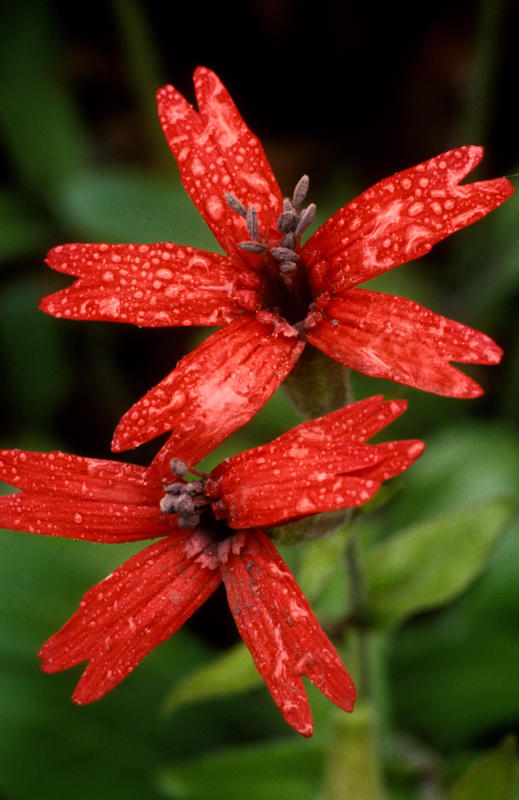
Blooms crimson, star-like flowers in summer. Height: 8-14". Width: 12". Part sun. Moist, but very well-drained, rich soil. Add generous amounts of sand and humus to soil when planting. Usually found growing on steep slopes or in open woods. May be short-lived due to heavy bloom. Deadhead at least half the spent flowers to prevent seed production and promote growth of new crowns. Division of clump after bloom may also spur strong new growth. Self-sows when conditions are right. Move new plants in spring. Cut back if affected by thrips or powdery mildew. Good rock garden plant.
Flowering Spurge (Euphorbia corollata) – SUN TO PART SUN
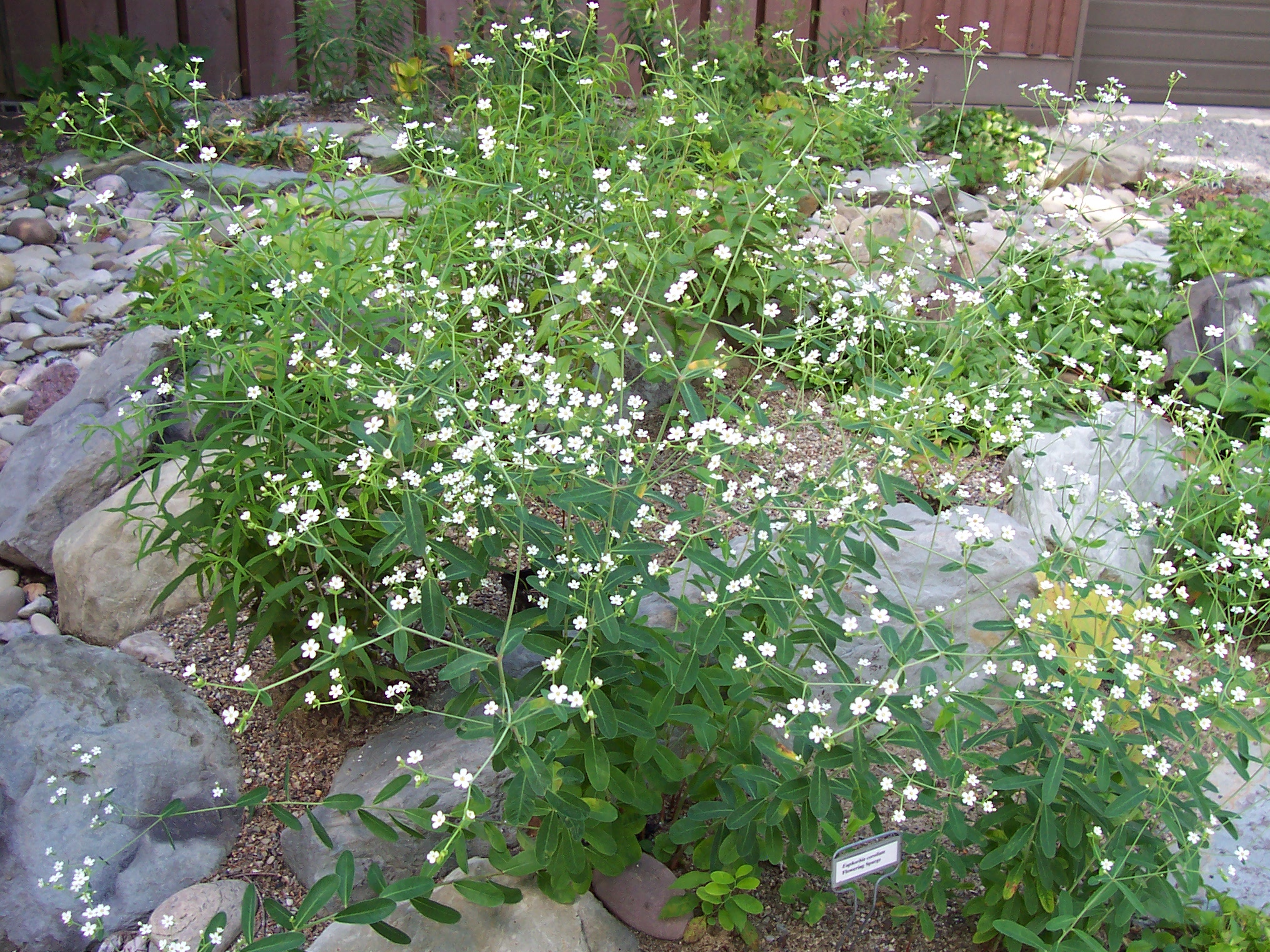
Blooms baby's breath-like, dainty white flowers in summer. Height: 2-3'. Width: 1-2'. Sun to part sun. Average soil. Very adaptable. Long taproot, so do not disturb once established. Stem sap may be mildly irritating. Use in rock gardens or in dry meadows, or for a softening effect among bright flowers such as Butterflyweed or Blazing Star. Also, plant here and there among other species to unify a garden. Leaves turn colors in fall. Good cut flower. A tough, carefree species. Deer resistant.
Foamflower (Tiarella cordifolia) – DAPPLED SUN TO SHADE
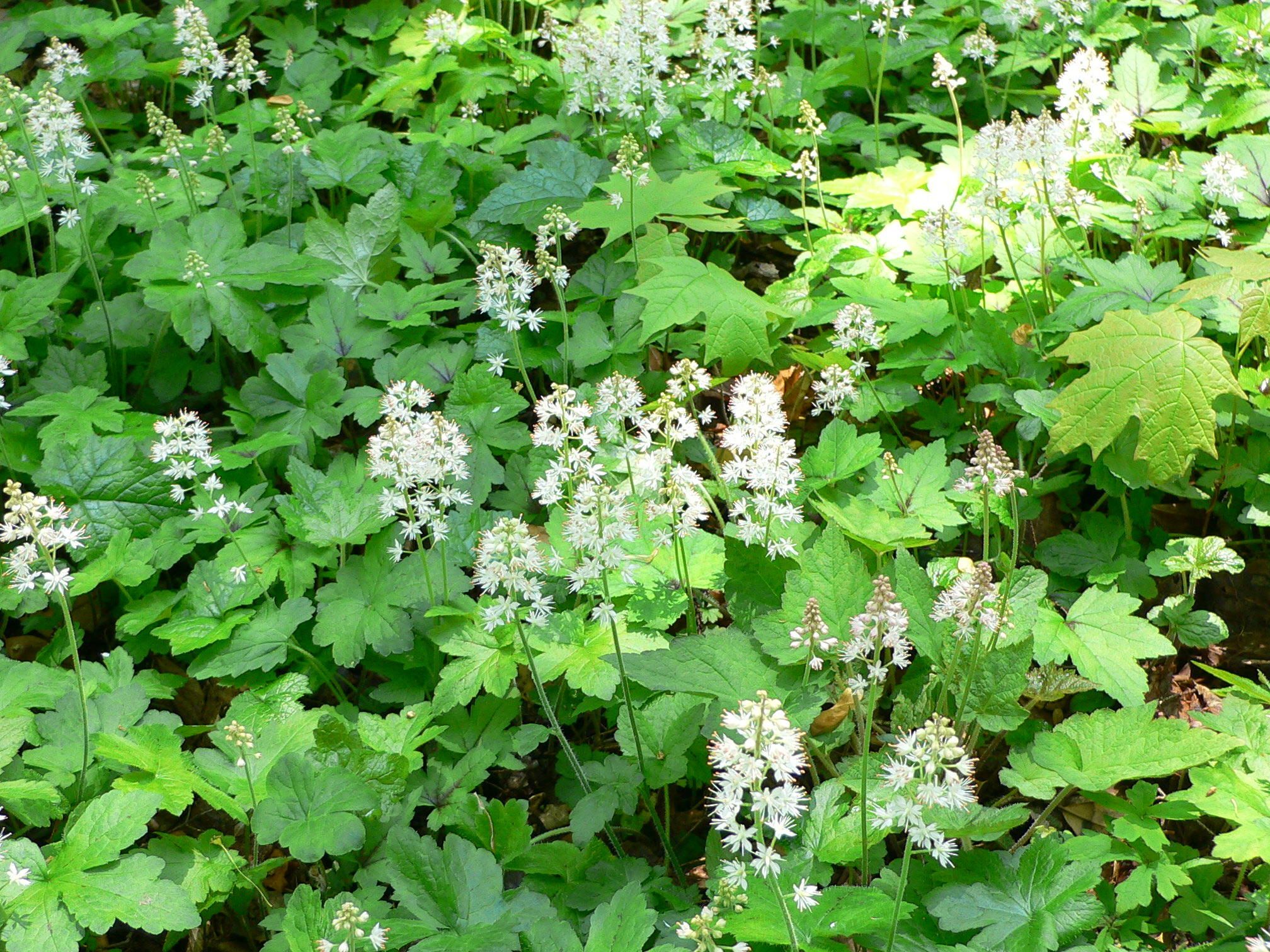
Spires of white flowers above maple-like leaves in spring. Height: 3-10". Width: to 2'. Dappled sun to shade. Moist, rich, near-neutral soil. Dust soil occasionally with horticultural lime. Semi-evergreen. This is a running form. Plant in spring and shear back after seeding. Use as a groundcover under deciduous trees or in drifts in wooded areas. Nice mixed with Christmas Fern, Virginia Bluebells or Creeping Phlox.
Fringed Loosestrife (Lysimachia ciliata) - PART SUN
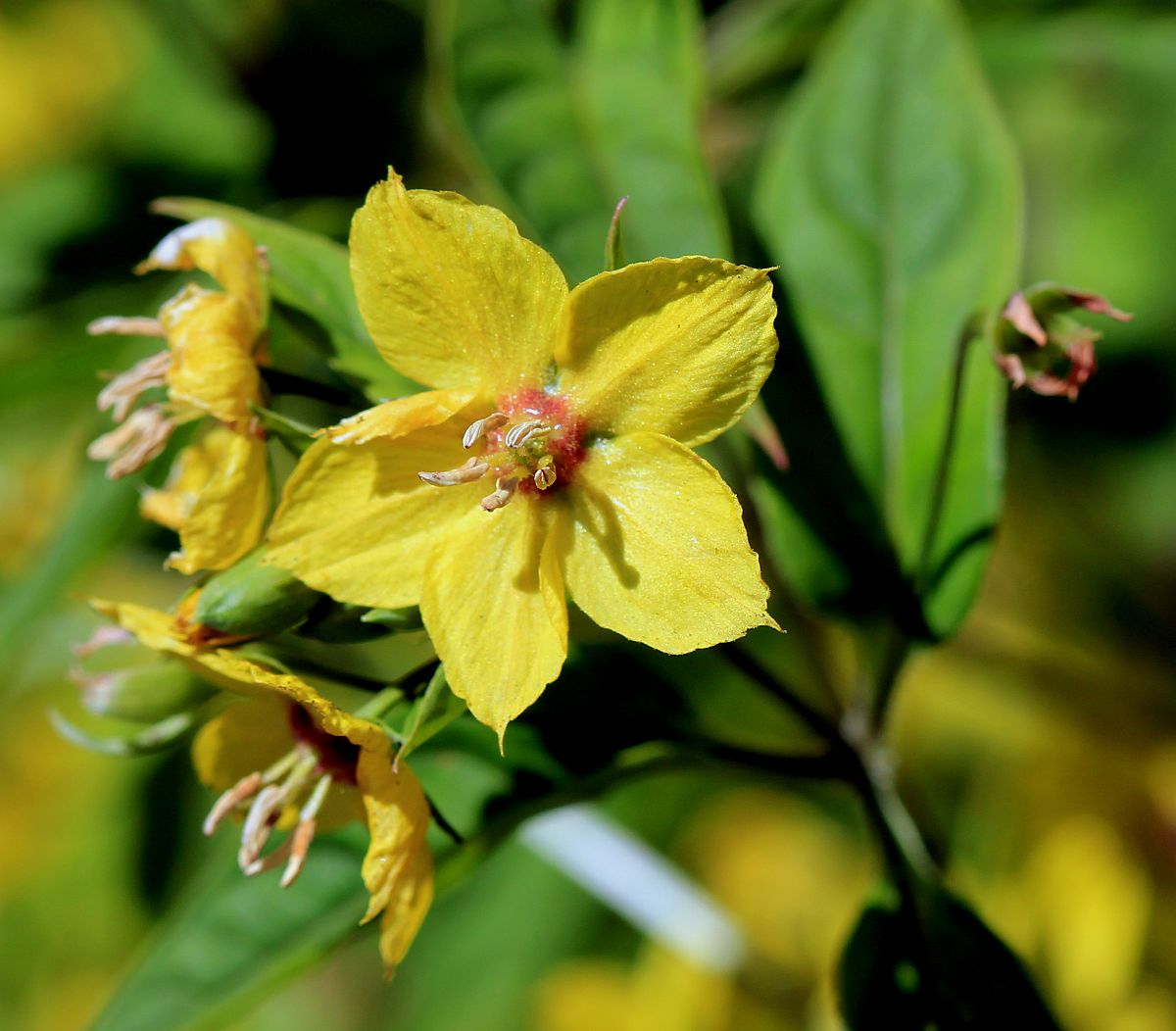
Inch-wide, yellow flowers with fringed petals growing from the axils on erect plants. Height: 1-4'. Part sun. Moist, average soil.
Goat's Beard (Aruncus dioicus) – PART SHADE
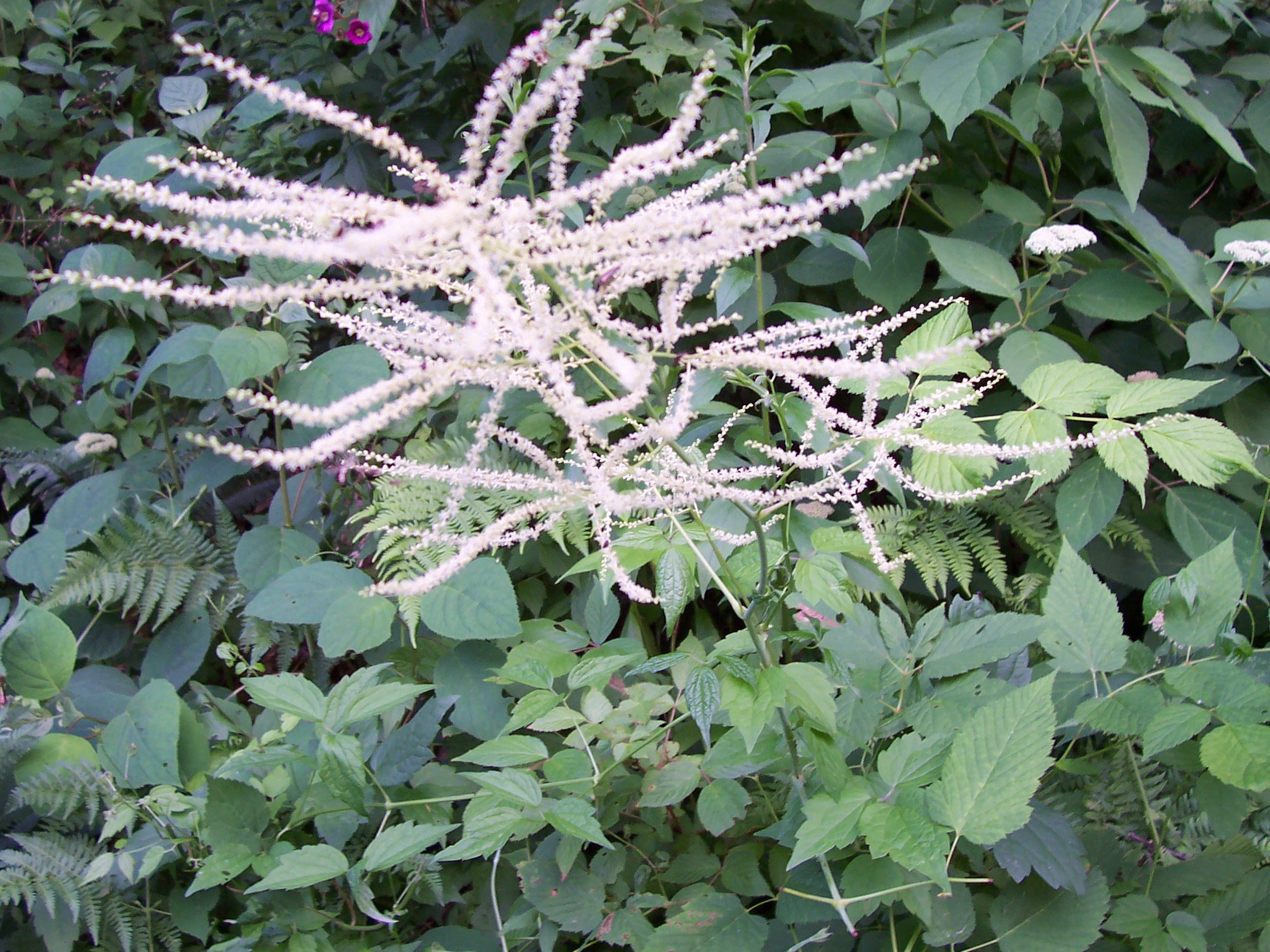
Inch-wide, yellow flowers with fringed petals growing from the axils on erect plants. Height: 1-4'. Part sun. Moist, average soil.
Golden Alexanders (Zizia aurea) – PART SHADE
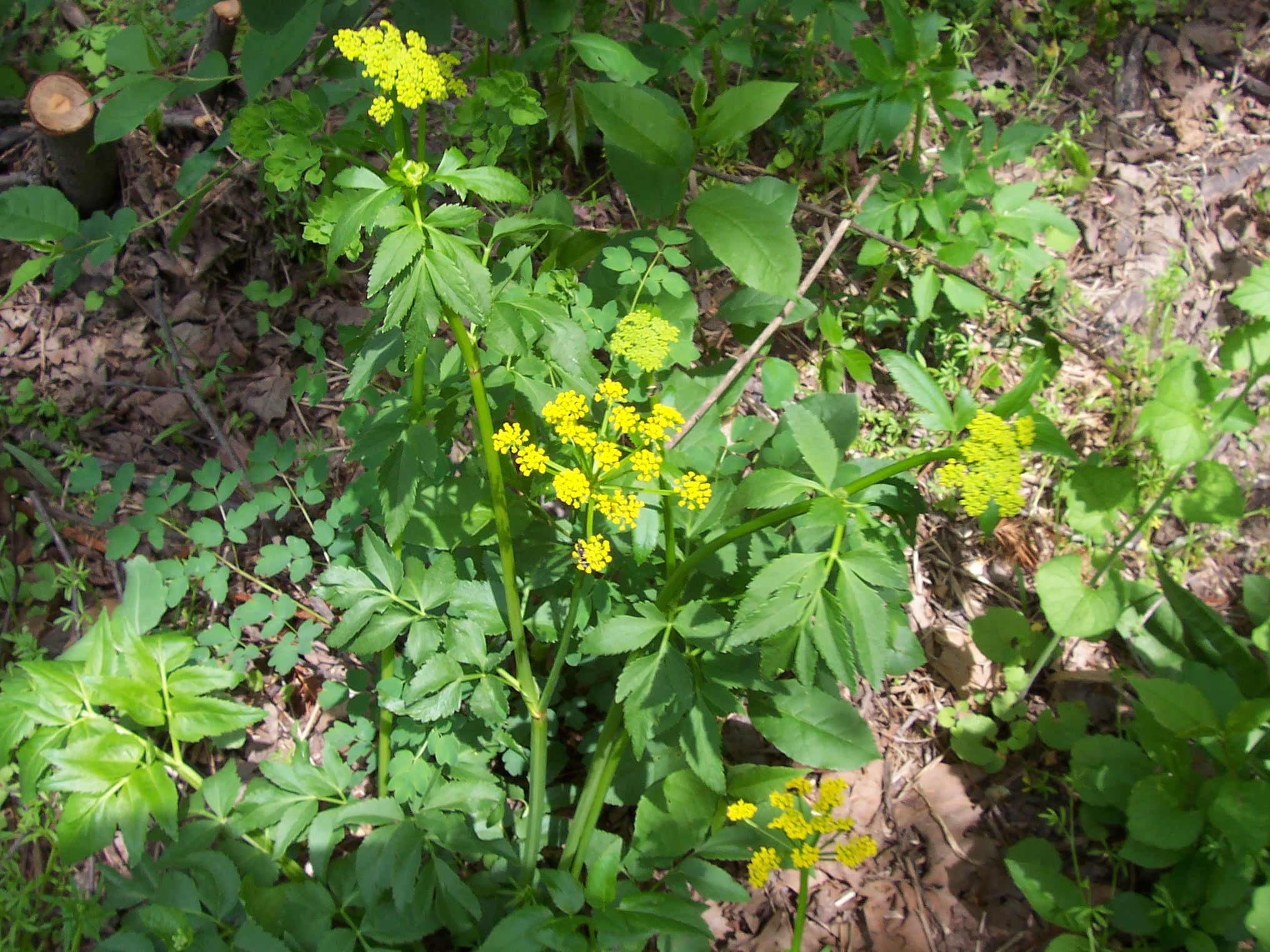
Flat clusters of small yellow flowers in spring, similar to Queen Anne's Lace. Height: 1-3'. Width: 12-16". Part shade, especially in the afternoon. Moist to wet, moderately fertile soil. A naturalizing species for open woods or meadows. Best in groups. Can be used as a medium height groundcover. Easy. Shadier rain garden plant. Deer resistant.
Golden Ragwort (Senecio aureus) – PART SHADE
Gold flowers held on stiff stems above foliage in May. Height: 1-3'. Width: 1'. Part shade. Very moist, rich soil. Ever-widening clump needs occasional division. Self-sows. Deadhead to prevent. Good for naturalizing in shady, wet areas beside ponds and streams or in low spots. Shadier rain garden plant.
Great Blue Lobelia (Lobelia siphilitica) – SUN TO PART SUN
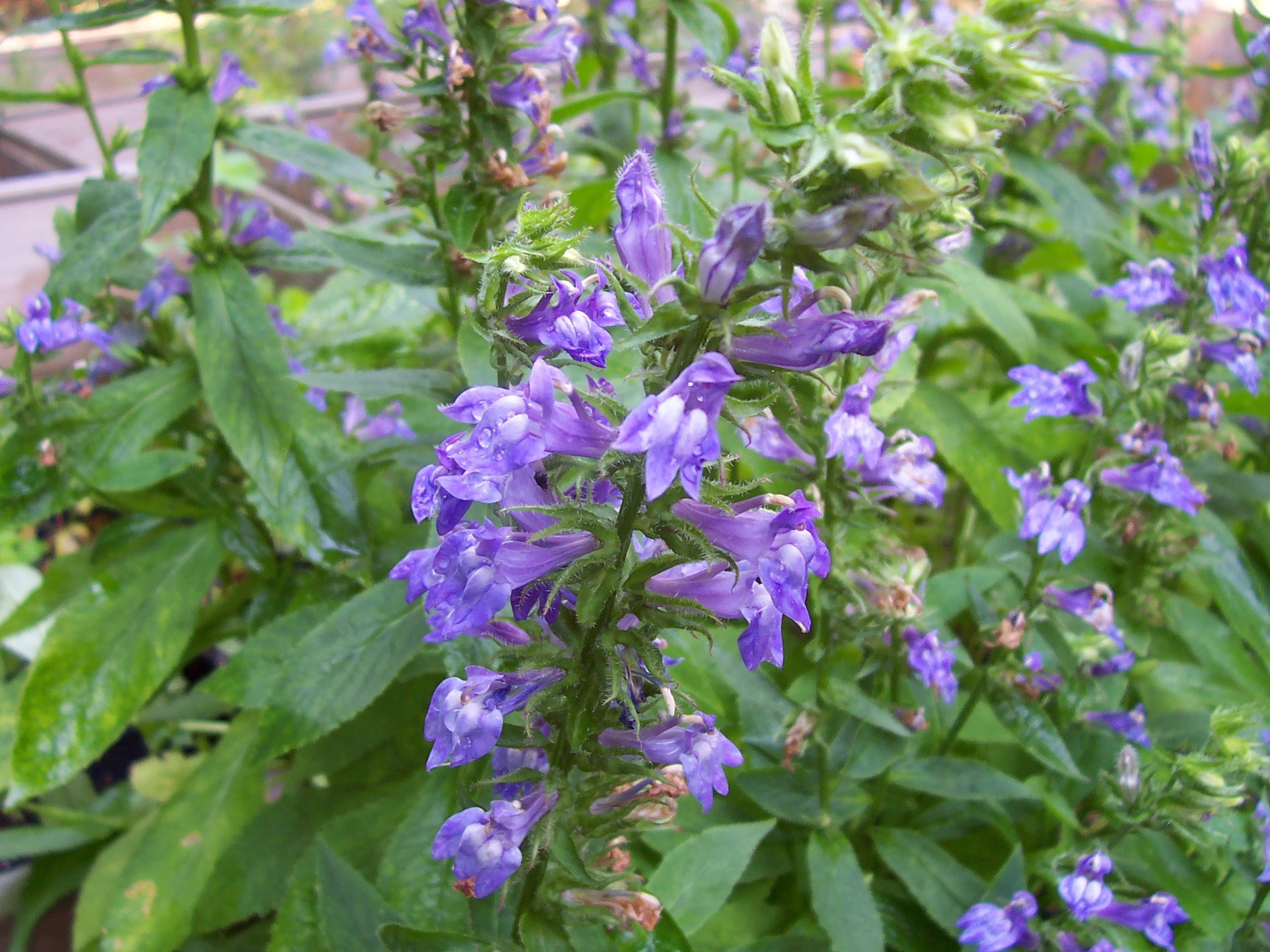
Blooms blue on a thick spike from an evergreen rosette from mid-summer to early fall. Height: 2-4'. Width: 12-16". Sun to part sun. Moist to wet, rich soil. Dust soil occasionally with horticultural lime. Easier to grow than Cardinal Flower. Nice contrasted with it, or with the yellow of goldenrod. Self-sows freely. Deadhead to prevent. Hummingbird plant. Rain garden plant.
Greek Valerian (Polemonium reptans) – MORNING SUN OR DAPPLED LIGHT
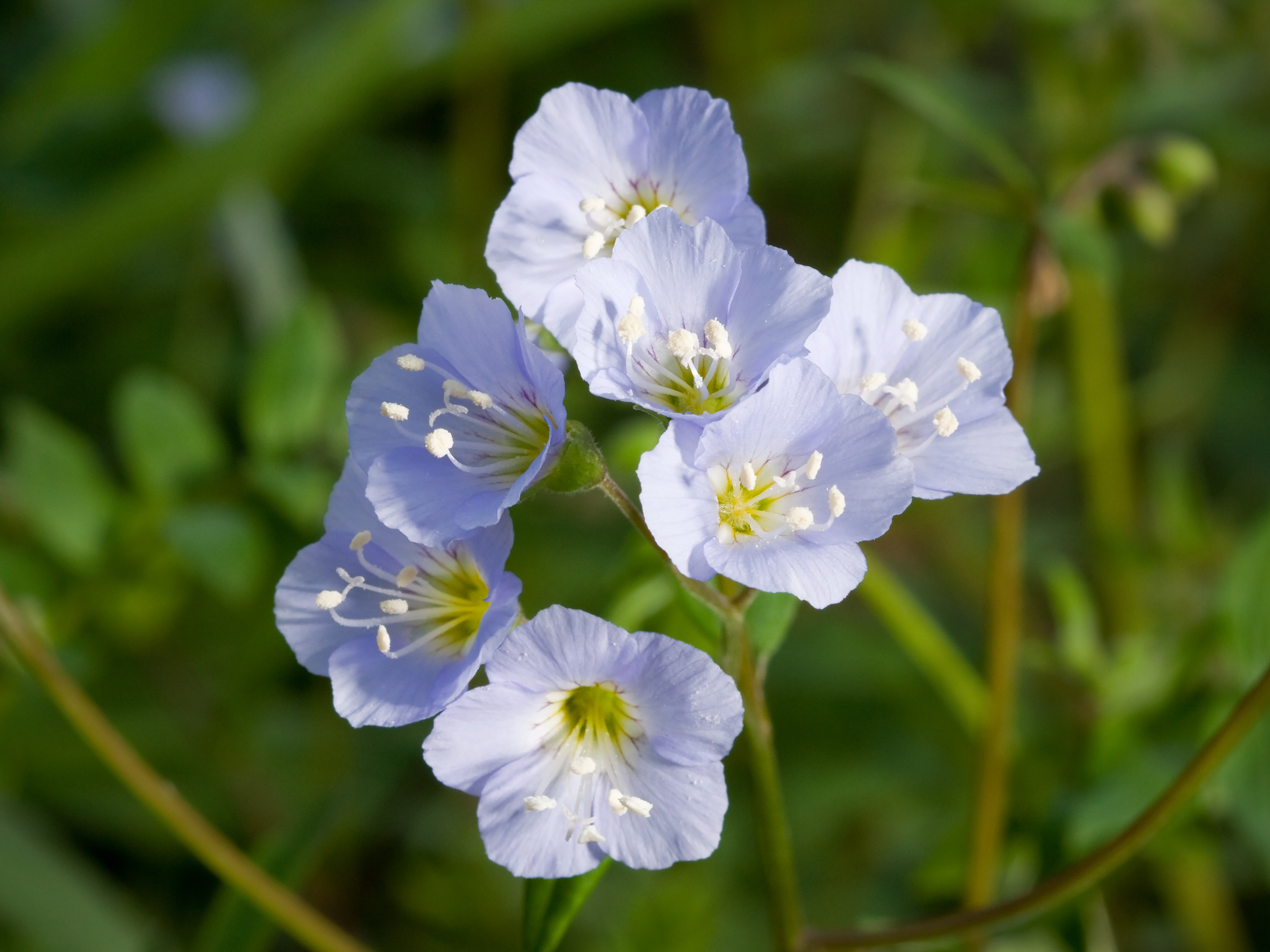
Also called Spreading Jacobs Ladder. Blooms in clusters of blue, bell-shaped flowers over attractive, fern-like foliage in spring. Clump-forming. Height: 10-16". Width: 1-2'. Morning sun or dappled light. Moist, fertile soil. Shear back hard after seeds are shed to tidy plants and encourage new growth. Self-sows, but not aggressively. Woodland gardens. Always attractive. Easy. Shadier rain garden plant.
Green-headed Coneflower (Rudbeckia laciniata) – PART SUN
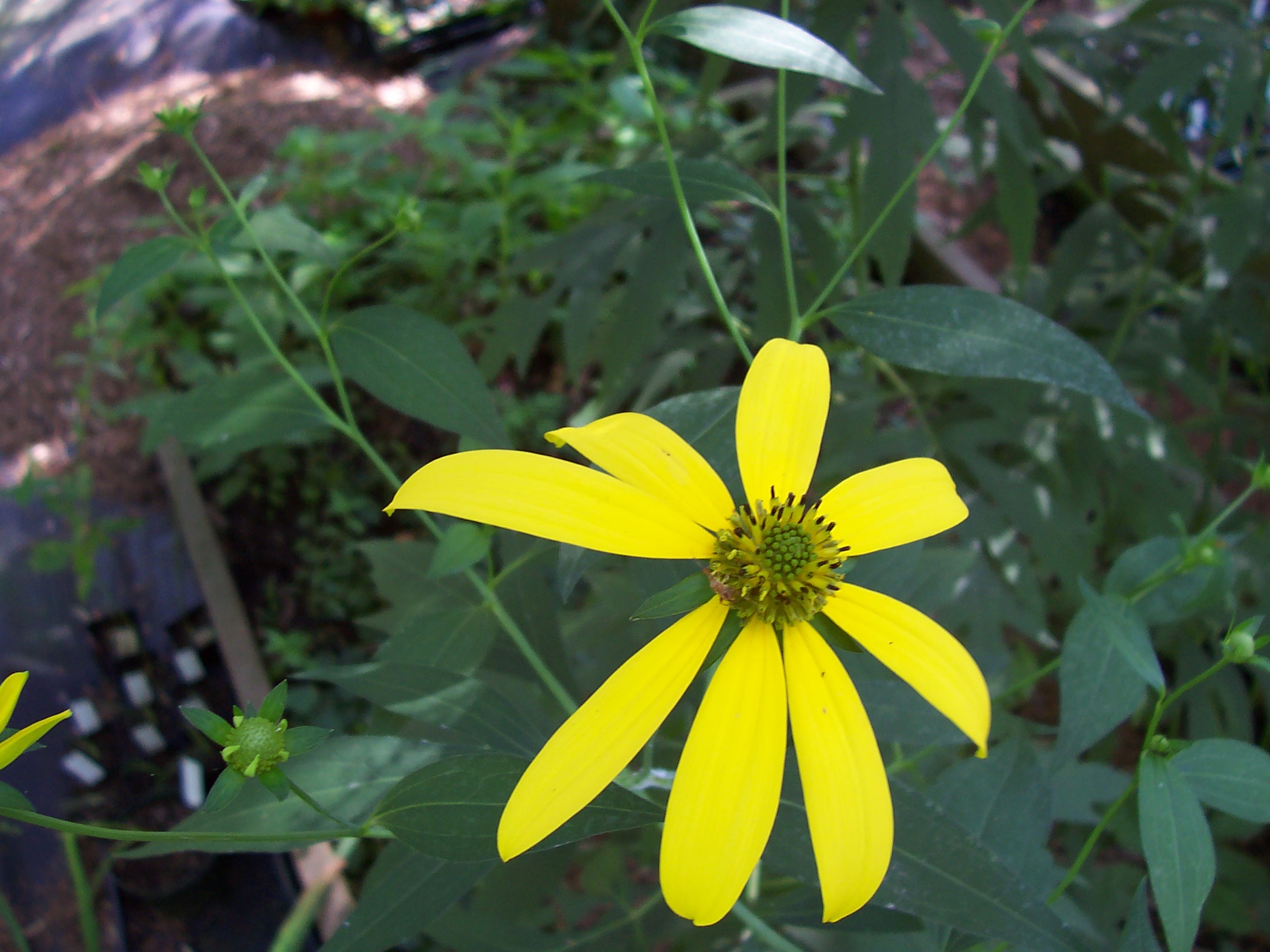
Light yellow flowers with green centers in summer to early fall. Height: 3-9'. Width: 3-4'. Part sun. Moist, well-drained, moderately fertile soil. Cut back by half in June to control height, plant among tall grasses for support, or stake. Self-sows aggressively. Deadhead to prevent. Divide occasionally in spring. Nice with ornamental grasses, other coneflowers, Blazing Star, ironweeds or Culver's Root in a meadow or wild garden. Also good at the back of a border. Seeds attract birds. Rain garden plant.
Hairy Beardtongue (Penstemon hirsutus) – SUN TO PART SUN
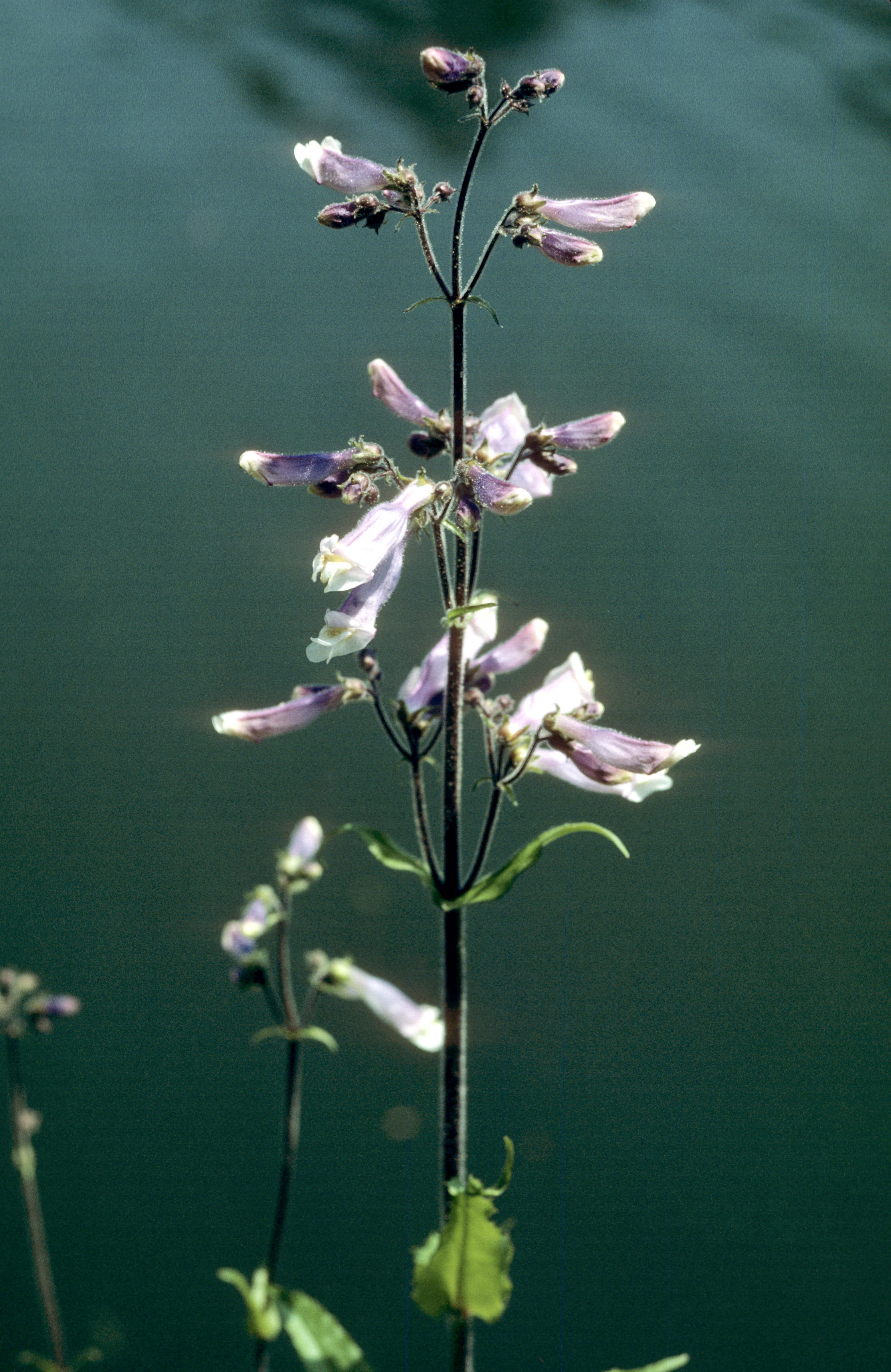
Airy clusters of lavender and white, 1" long, tubular flowers on stiff stems above the foliage from spring into summer. Semi-evergreen. Height: 12-18". Width: 12". Sun to part sun. Well-drained, average soil. Use in mixed plantings and for naturalizing, especially on dry, rocky banks. Can be an aggressive self-sower. Deadhead to prevent. Easy. Deer resistant.
Helen’s Flower (Helenium autumnale) – SUN TO PART SUN
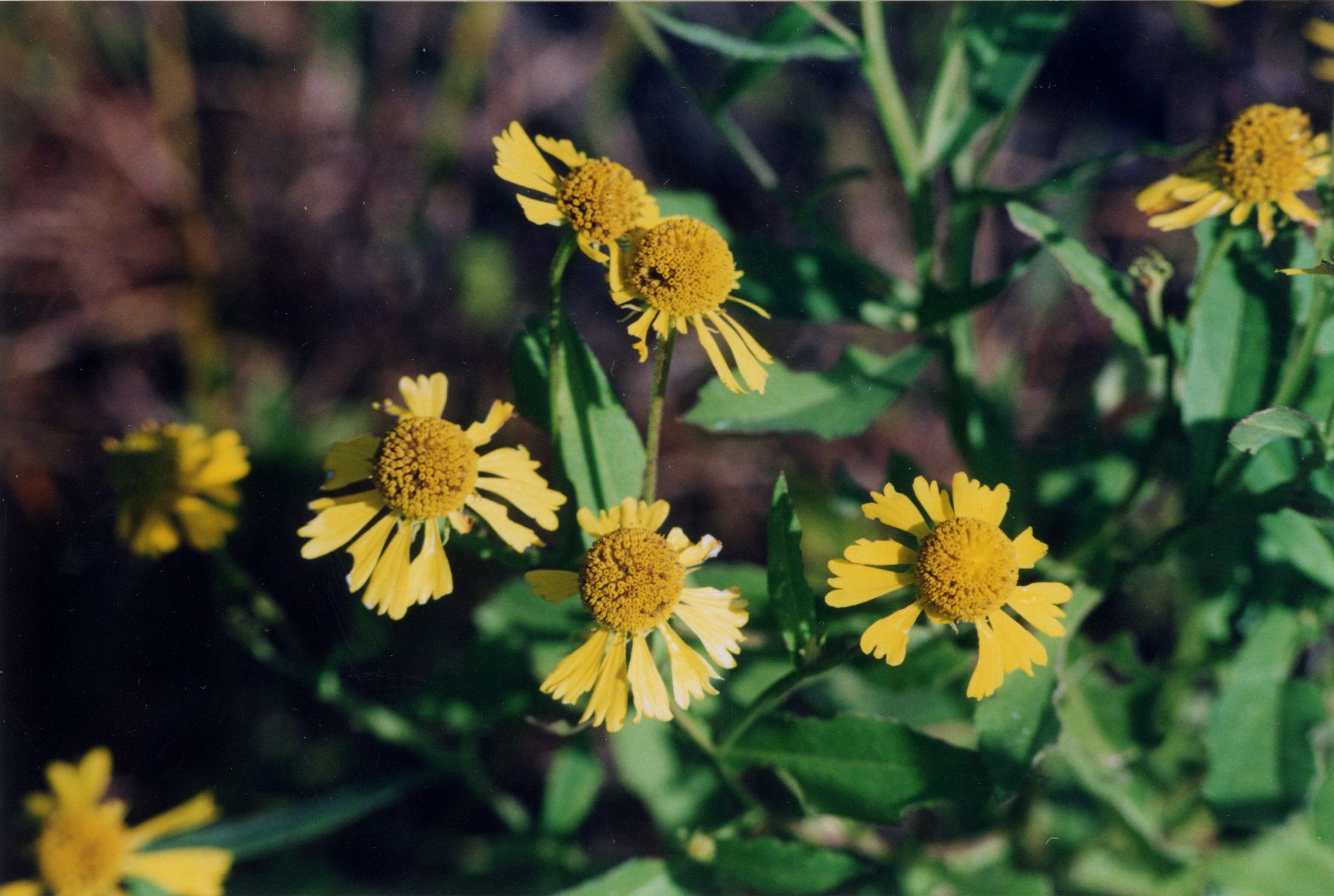
Also called Common Sneezeweed. Daisy-like yellow flowers with squared-off edges bloom on stout stems in late summer. Height: 3-5'. Sun to part sun. Moist to wet, average soil. Transplant only in spring. Pinch plants in mid-May and again in early June for more compact growth and more flowers, or cut back by half in June. Deadheading prolongs bloom. Individuals short-lived, but plant self-sows freely. Nice with other tall, late-blooming moisture lovers such as New England Aster and New York Ironweed. Rain garden plant. Deer resistant.
Jack-in-the-Pulpit (Arisaema triphyllum) – PART SHADE
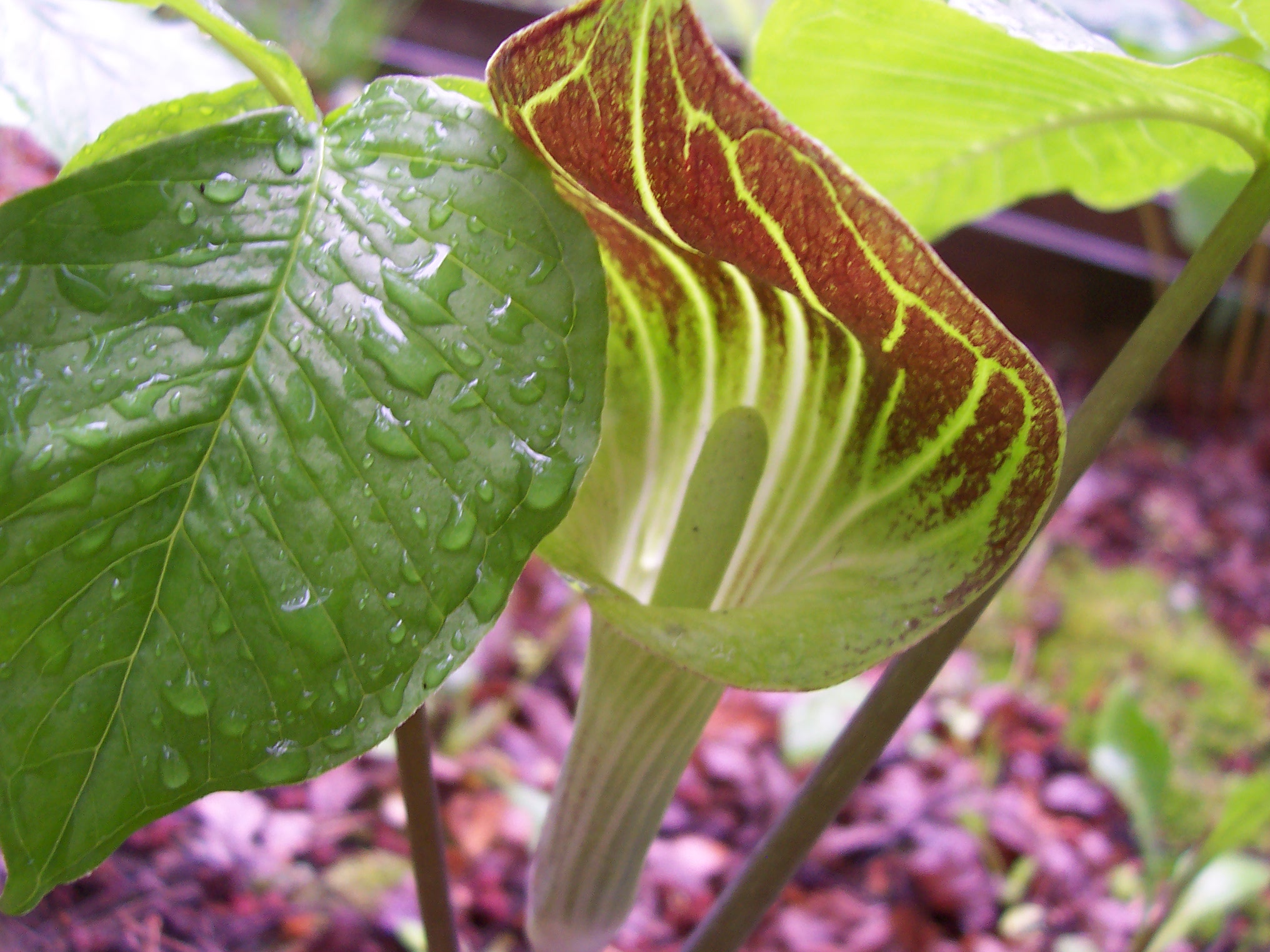
Green and brown or mahogany striped hood around fleshy spadix in spring. Red fruits on vigorous individuals in late summer. Height: 12-28". Width: 12-16". Part shade. Moist, rich soil. Forms colonies. Bold leaves. Nice when grown with Creeping Phlox or White Wood Aster to fill in bare spots since weaker plants disappear by midsummer. Woodland, pond or streamside gardens. If any plant develops orange rust, remove and discard. (Do not compost.) Shadier rain garden plant. Deer resistant.
Joe-Pye Weed (Eupatoriadelphus fistulosus) – PART TO FULL SUN
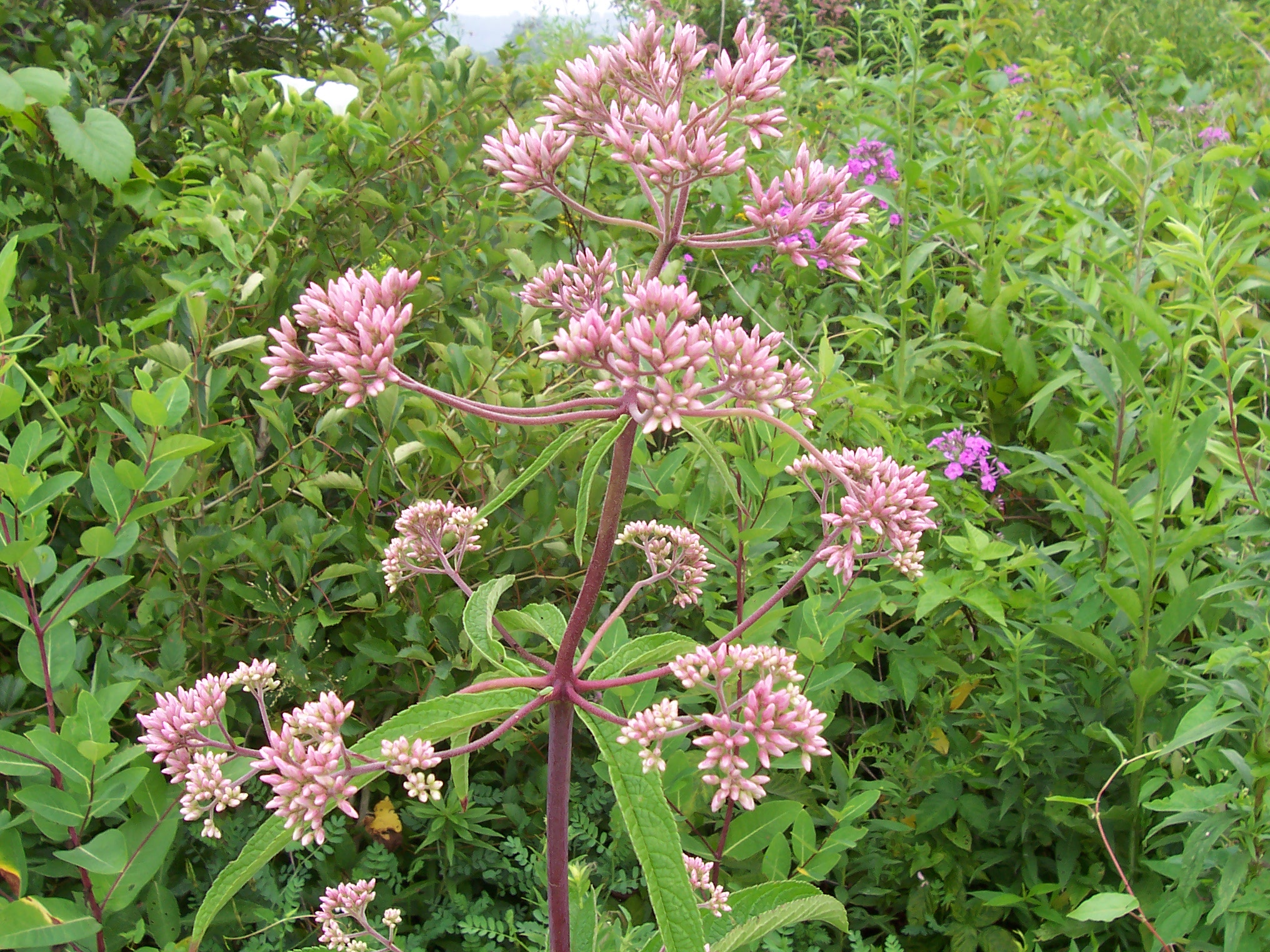
Also called Trumpetweed. Blooms in flat clusters of mauve flowers in late summer. Height: 4-8'. Width: 3-4'. Part to full sun. Moist to wet, fertile soil. Emerges late in spring. Pinch plants to promote fullness, or cut back by up to half in June to control height. Use at back of border, in butterfly and wild gardens, in meadows or at edges of ponds or streams. Easy and trouble-free except for some minor foliage damage from insects. Excellent nectar plant. Rain garden plant.
Lyre-Leaved Sage (Salvia lyrata) – PART SUN
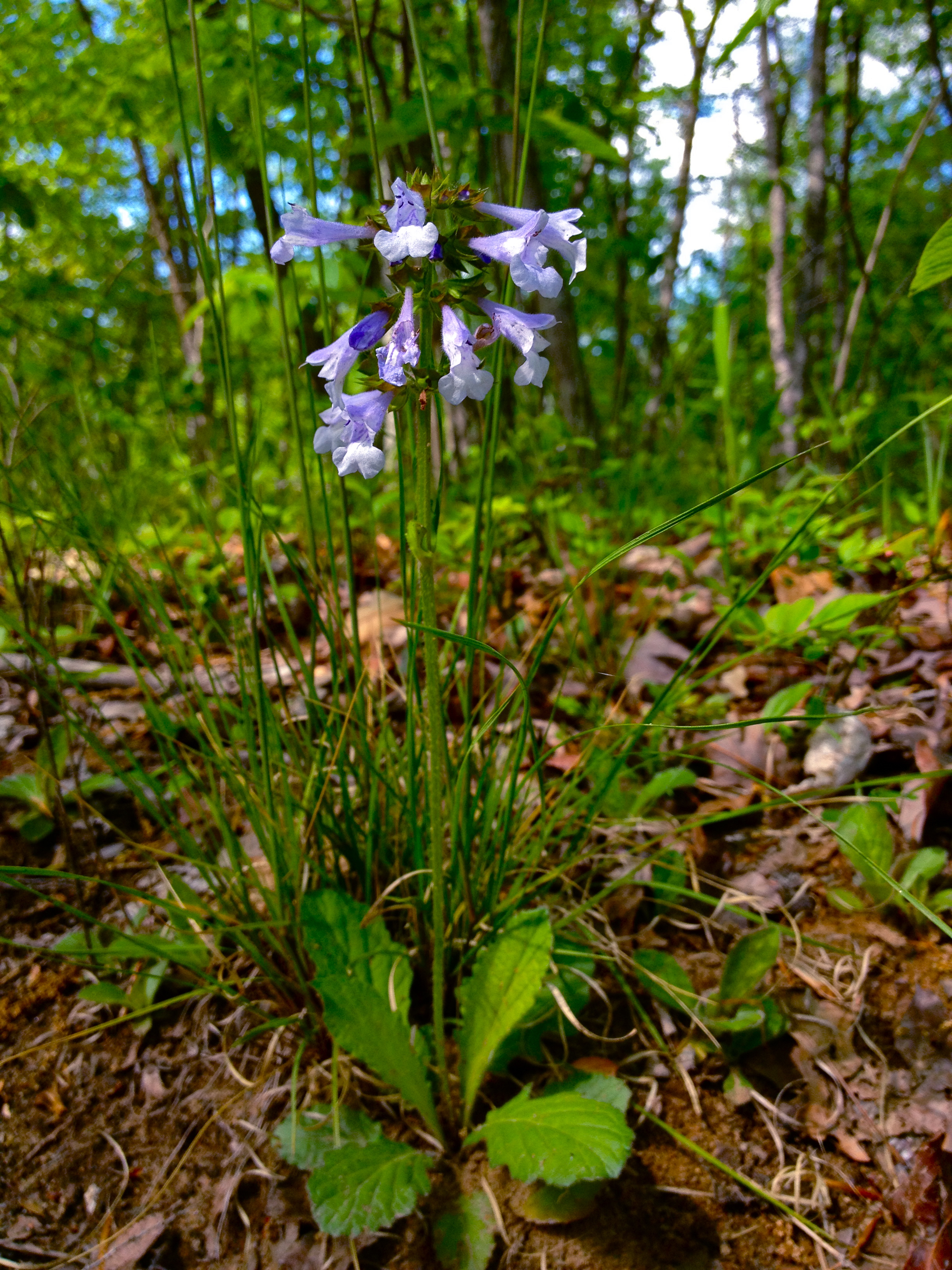
Blooms violet on a spike rising to 18" from a ground-hugging rosette of scalloped green or reddish leaves in late spring. Part sun. Well-drained, rich soil. Mainly a foliage plant. Will create a groundcover in time if allowed to self-sow. Nice in a rock garden or in an open woodland garden
Maple-Leaved Waterleaf (Hydrophyllum canadense) – PART SHADE
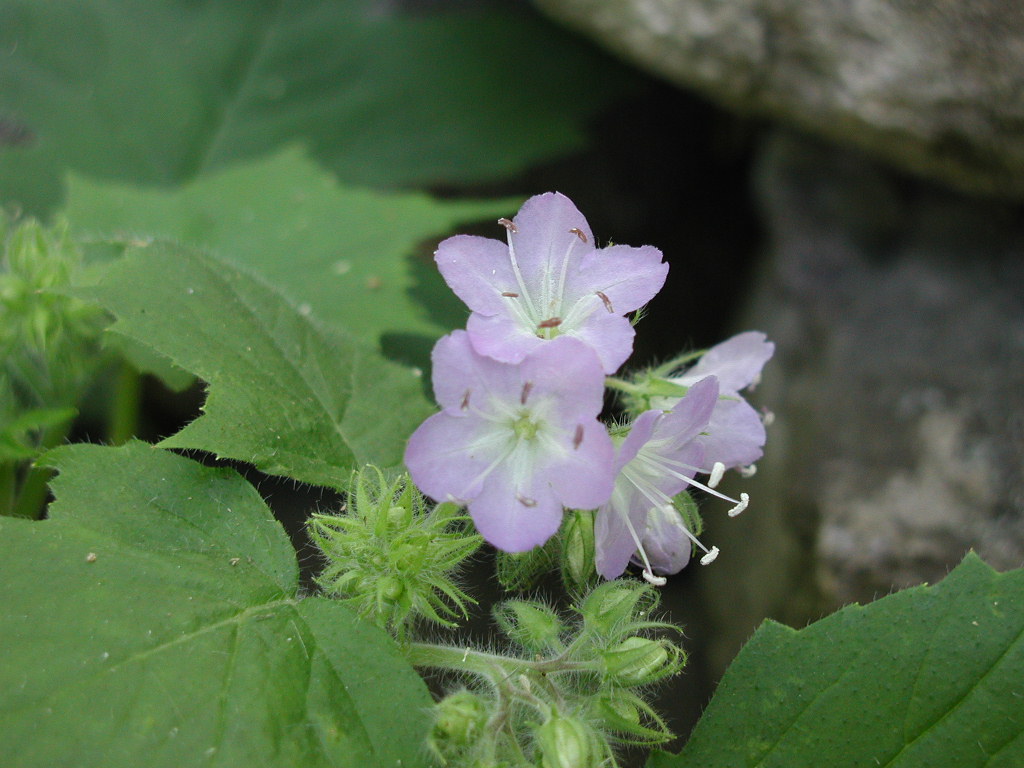
Violet, bell-like flowers in clusters held above leaves on stiff stalks in spring. Attractive, silver-gray waterspotting on emerging, maple-like leaves, fading as foliage expands. Height and width: 10-16". Part shade. Moist, rich soil. Self-sows aggressively. Deadhead to prevent. Cut back in summer when foliage deteriorates. Re-emerges in fall. Best in an informal woodland garden or in shade near ponds or streams. Shadier rain garden plant. Deer resistant.
Marsh Marigold (Caltha palustris) – PART SUN
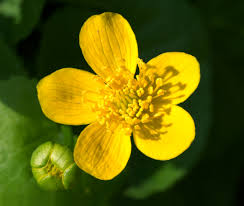
Loose clusters of yellow-gold, 1-1½" blooms in early spring. Shiny, round leaves. Height: 1-2'. Width: 1'. Part sun. Moist to wet, rich soil. Clumping habit. Will grow in shallow water, but requires very moist soil at least in winter and spring. Mulch well. Good beside ponds or streams or in boggy spots that are shaded in summer. Older plants may go dormant after seed set, but reappear in fall. Rain garden plant.
Mayapple (Podophyllum peltatum) - PART SHADE TO SHADE
Deciduous, woodland groundcover. Bold, umbrella-like leaves shade single, 2" white flowers in spring. A few apple-like fruits loved by box turtules may develop. An aggressive, colony-forming, woodland groundcover for larger, shady places or under shrubs. Height: 8-16". Spread: 4-6'. Part to full shade. Best in moist, fertile soils, but will grow under dry conditions after established. Nice with large stands of Virginia Bluebells or Wood Poppies on a floodplain. Use gloves when handling rhizomes as sap can irritate eyes and skin. Evergreen ferns are good companion plants since Mayapple goes dormant in late summer. Carefree. Deer resistant.
Meadow Phlox (Phlox maculate) – MORNING SUN OR DAPPLED LIGHT
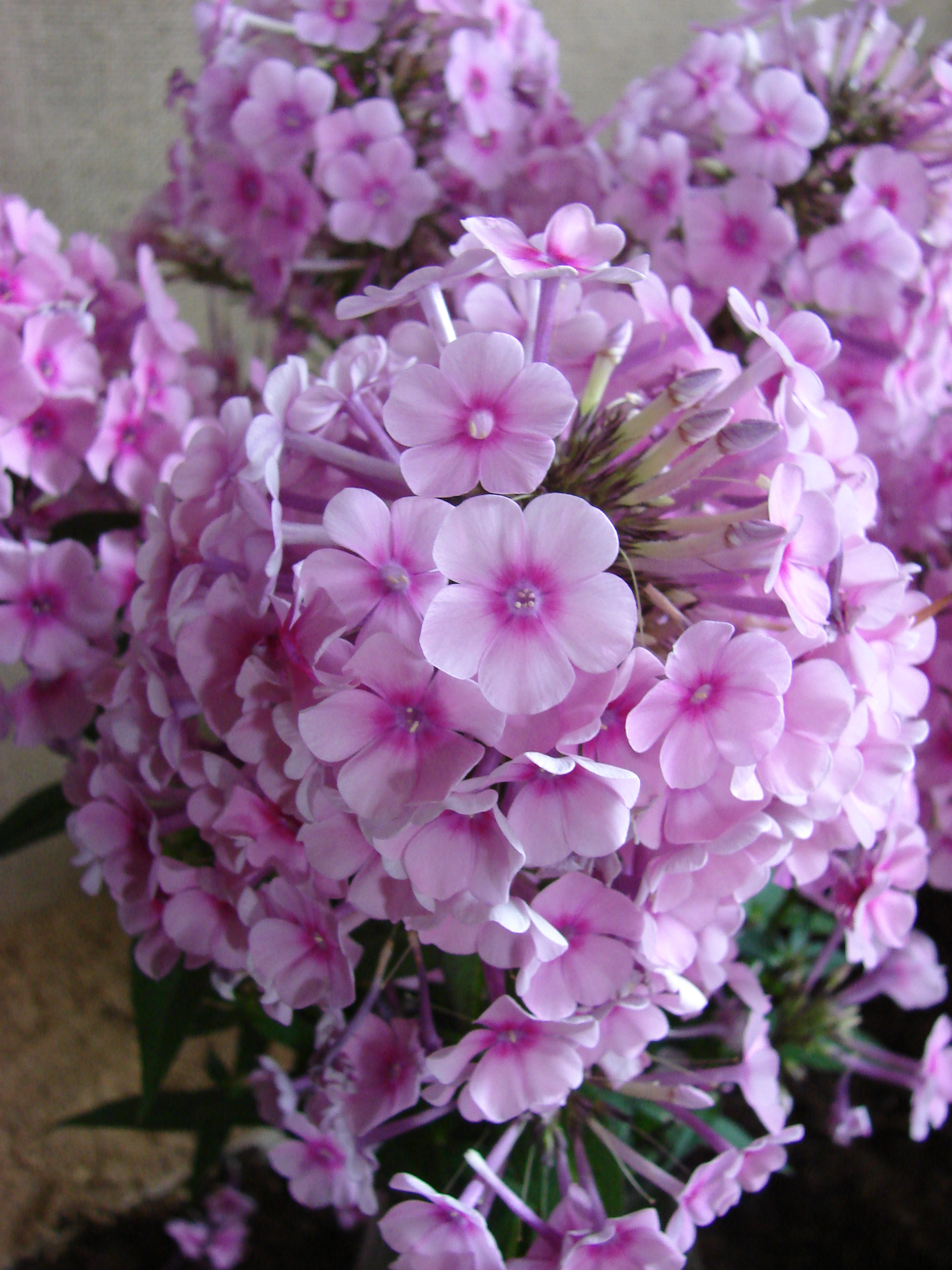
Blooms pink to lavender in summer on stiff stems. Height: 2-3'. Width: 2'. Morning sun or dappled light. Moist, rich soil. Fertilize in spring. Water during drought. Spreads to form colonies over time. Use in borders, moist meadows or open woods. Shadier rain garden plant. Butterfly plant.
Mistflower (conoclinium coelestinum) – PART SHADE
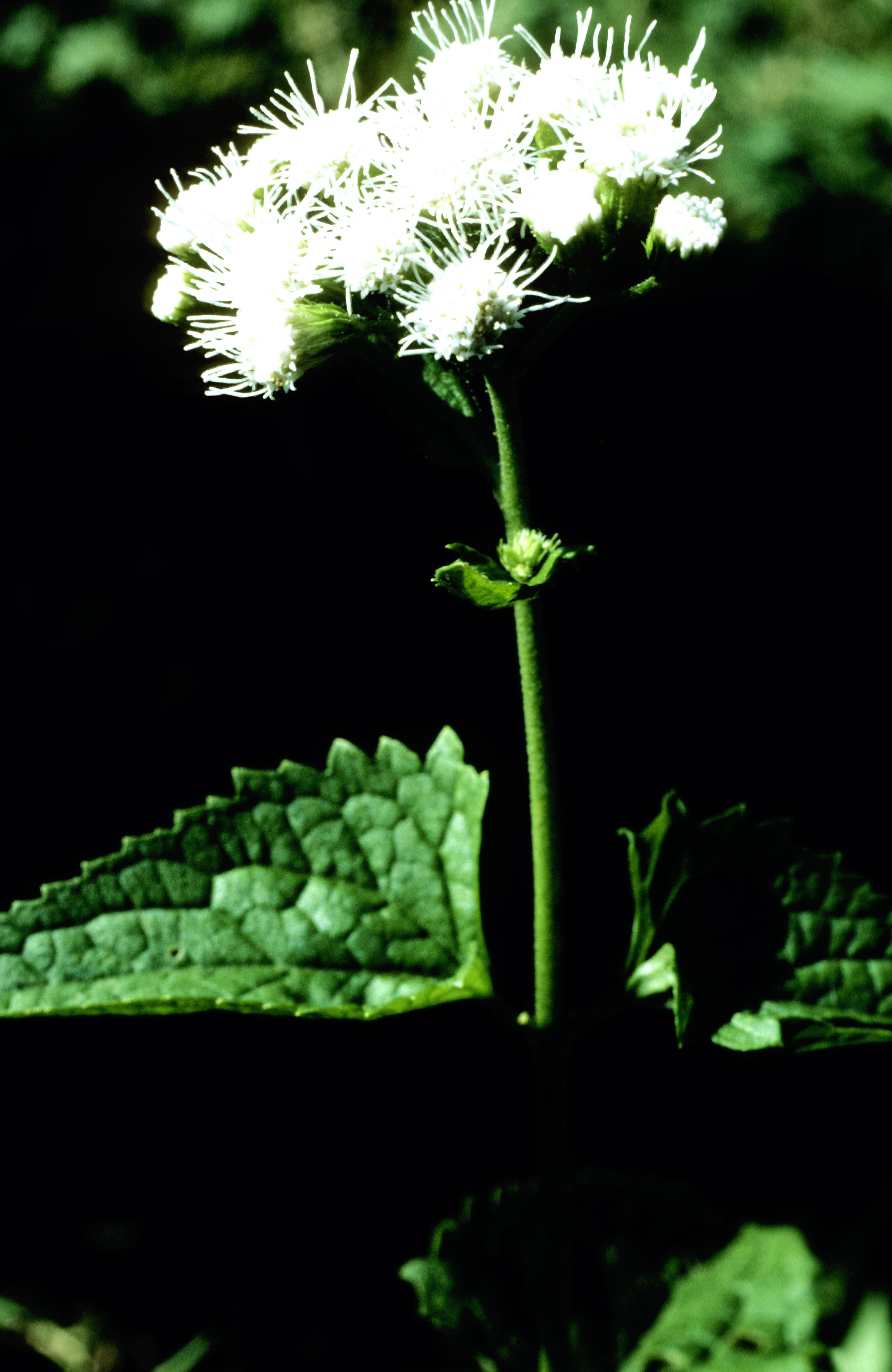
Blue-violet flower clusters in late summer. Resembles ageratum. Height: 1-3'. Part shade. Moist, rich soil. Very aggressive and so is best used for naturalizing in woods, on stream banks, in meadows and fields. Butterfly plant. Deer resistant.
Mitrewort (Mitella diphylla) – PART TO FULL SHADE
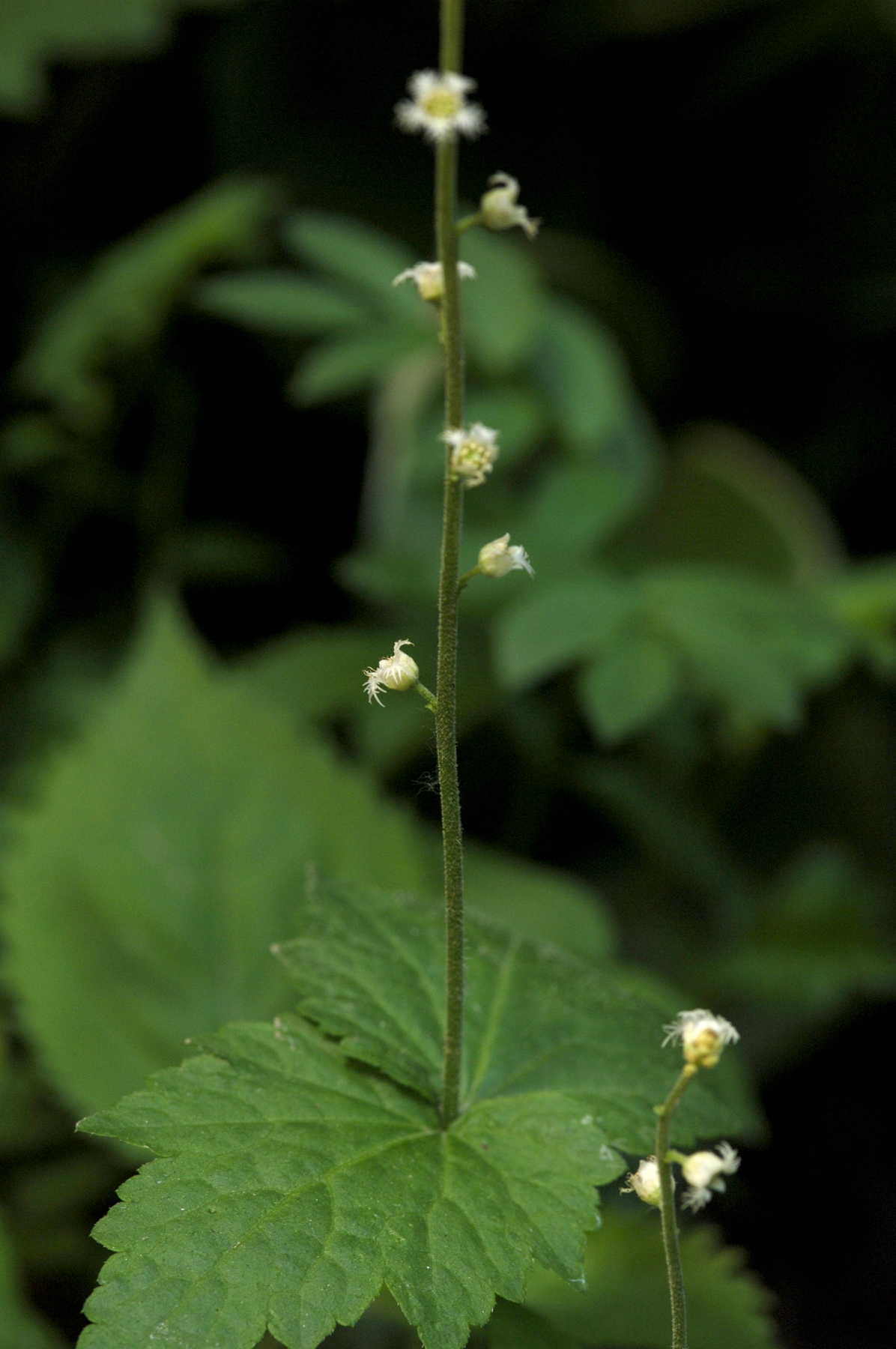
Also called Bishop's Cap. Spires of dainty, white blooms in spring. Height: 6-12". Width: 8". Part to full shade. Moist, rich, near-neutral soil. Good drainage. Dust soil occasionally with horticultural lime. Keep free of accumulating leaves. Naturally grows on banks or steep slopes, often with trillium and violet species, or on mossy logs. Lovely as a groundcover under deciduous trees in a woodland garden. May be hard to establish.
Monkeyflower (Mimulus ringens) – SHADE
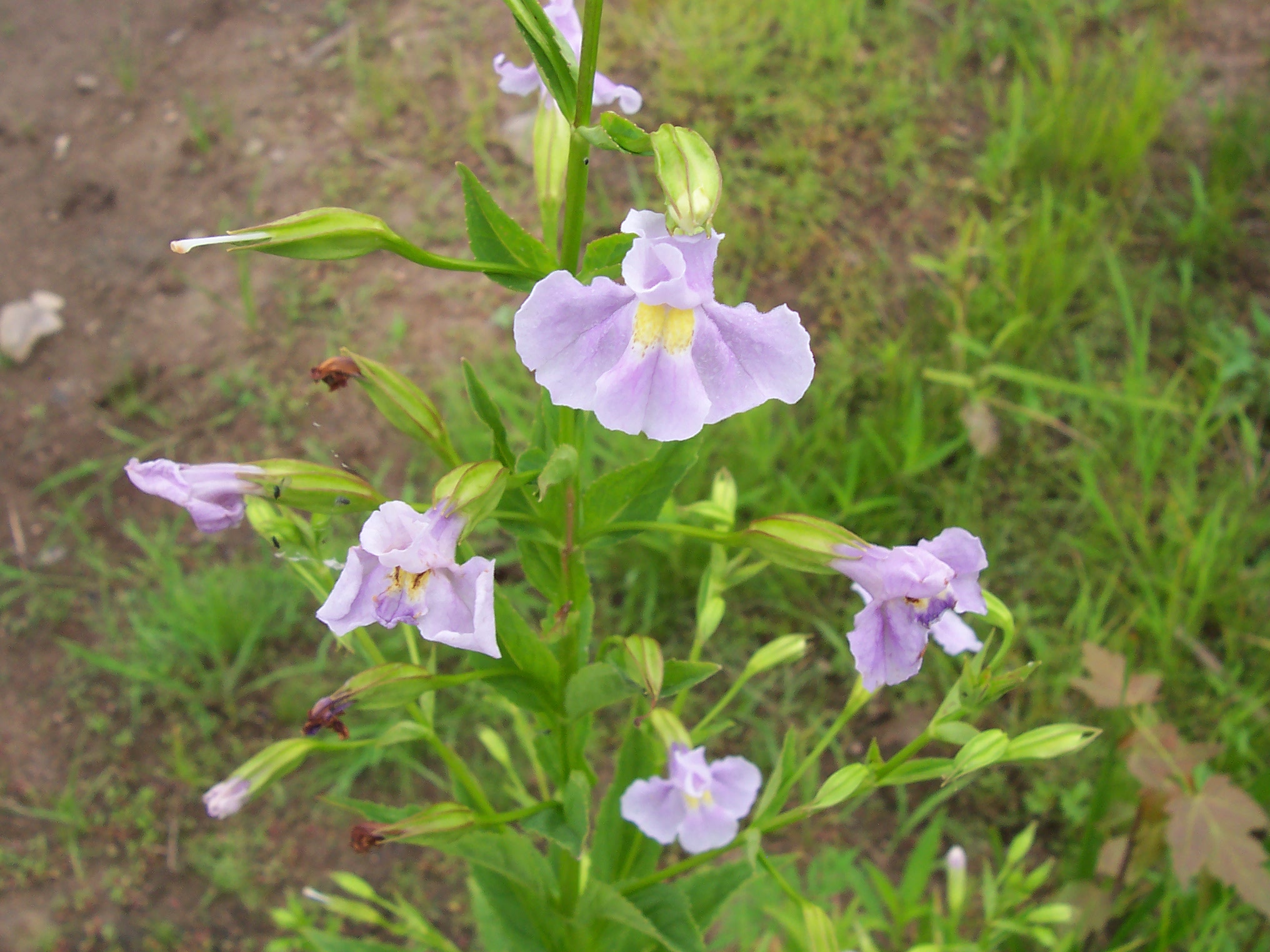
Blooms light violet in mid-summer. Height: 2-4'. Width: 1'. Part shade. Moist to wet, rich, near-neutral soil. Dust soil occasionally with horticultural lime. Individuals may be short-lived, but plant self-sows aggressively. Deadhead to prevent. Site with other moisture lovers in borders, low areas or near ponds or streams. Shadier rain garden plant. Deer resistant.
New England Aster (Symphotrichum novae-angliae) – PART SUN
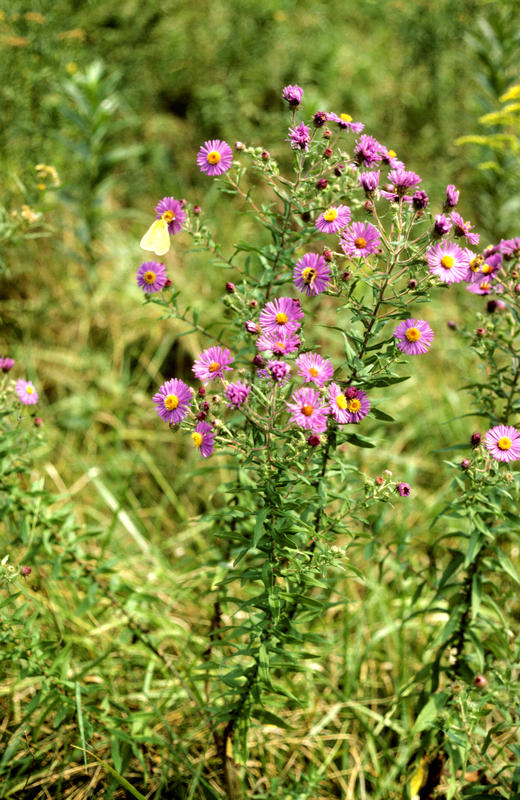
Showy clusters of 1-2" wide, violet-purple to pink flowers with orange centers in fall. Height: 3-7'. Width: 2-3'. Part sun. Moderate to moist, average soil. Forms thick clumps in time. Cut back by half in June to promote bushiness and control height, or stake. Readily self-sows. Deadhead to prevent. Divide every 3 years in spring. Often suffers from leaf blight on lower stems. Plant shorter species in front to hide. Good fall nectar source and food plant for butterfly larva. Rain garden plant.
New York Ironweed (Vernonia noveboracensis) – SUN TO PART SUN
Intense purple flower clusters in late summer. Height: 4’-6’. Width: 3-4’. Sun to part sun. Moist to wet, rich soil. Somewhat drought tolerant after established. Self-sows. Deadhead to prevent. Plant emerges late. Use for vertical accent or anchor plant in large borders, or for screening or naturalizing in moist meadows or near ponds or streams. Choose planting site carefully as plant is hard to move or divide. Easy. Long-lived. Rain garden plant.
Nodding Onion (Allium cernuum) – SUN TO PART SUN
Dainty, with slender, grass-like leaves and nodding, purplish-pink flowers on wiry stems in July and August. Height: 12-18". Width: 1'. Sun to part sun. Average, well-drained soil. Drought tolerant. Effective when massed behind lower-growing plants, in a rock garden or a wild garden. Will grow on steep, rocky banks. Self-sows aggressively. Deadhead to prevent. Bulbs multiply. Flowers at a time when few other plants are in bloom. Carefree. Hummingbird plant. Rain garden plant. Deer resistant.
Northern Blueflag (Iris versicolor) – PART SUN TO BRIGHT SHADE
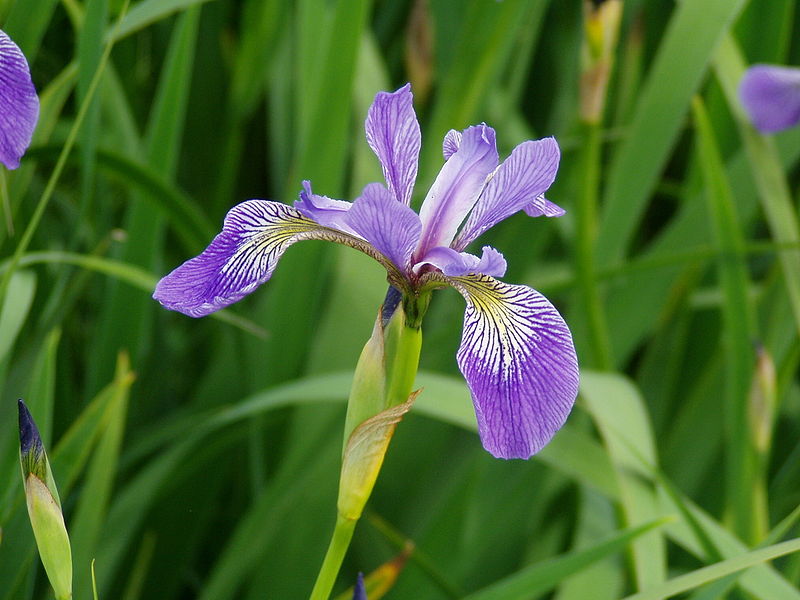
Blooms blue-violet to purple in late spring. Height: 2-3'. Part sun to bright shade. Moist to wet soil, even in shallow water. Will tolerate drier soils, but not extended drought. This is a robust species. Clean up all dead foliage around plants in March to discourage borers. Streaks or necrosis on leaves may indicate a virus. Remove and discard infected plants. (Do not compost.) Fertilize in spring. Divide every 3-5 years in summer. Nice beside ponds or streams or in any area that stays fairly moist. Shadier rain garden plant. Deer resistant.
Northern Wild Senna (Senna hebecarpa) – SUN TO PART SUN
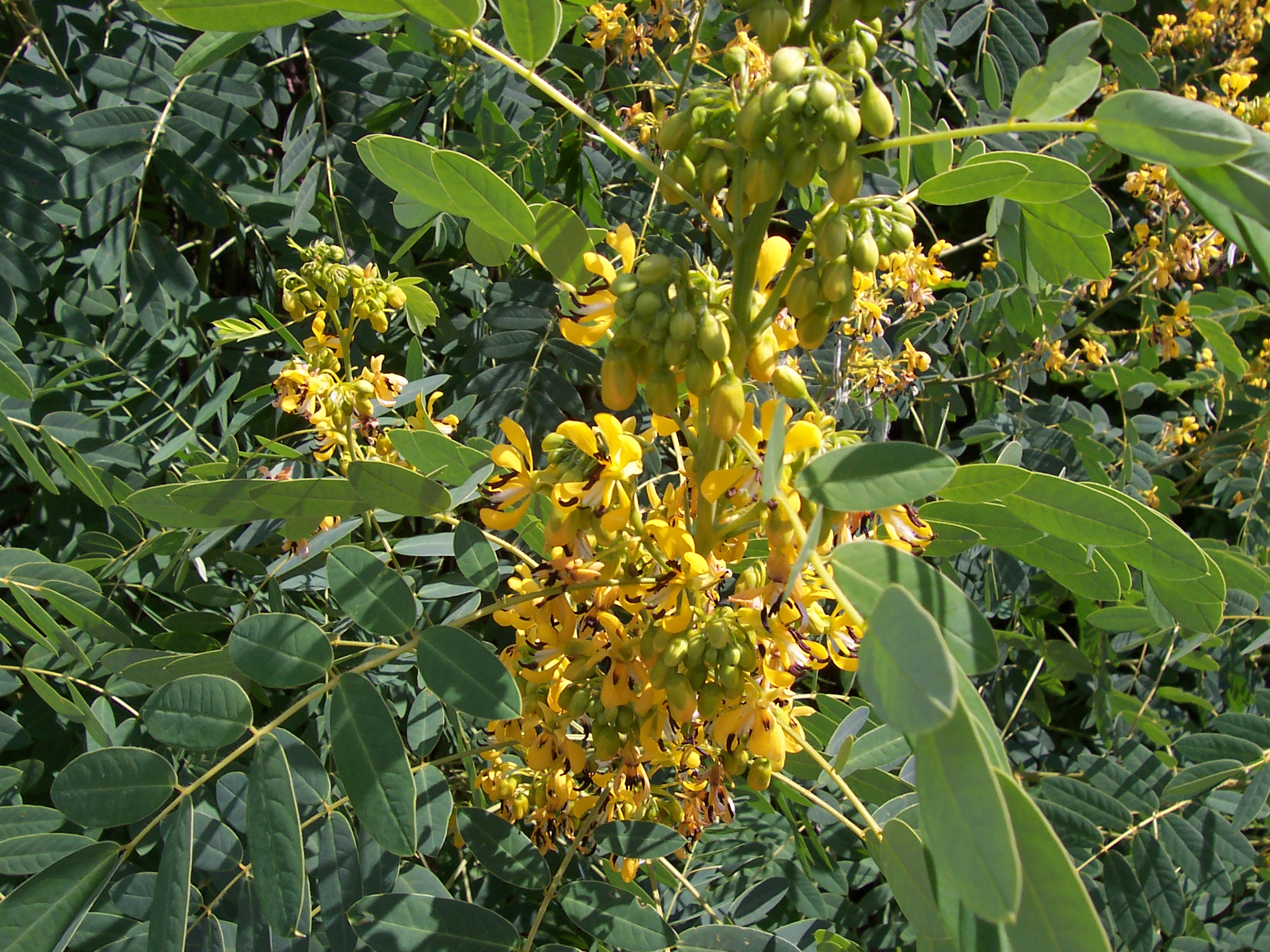
Clusters of yellow flowers in summer. Attractive seed pods. Height: 3-7'. Width: 4-6'. Sun to part sun. Moist to moderately dry, rich soil. Drier, leaner soils produce shorter, less floppy plants. Choose planting site carefully as it is difficult to move or divide. Self-sows. Use for vertical impact in large borders or as a screen. Seeds attract birds. Rain garden plant. Deer resistant.
Ostrich Fern (Matteuccia struthiopteris) – PART SUN TO SHADE
Fiddleheads unfurl bright green in spring. Brown, fertile fronds appear in mid-summer. Height: 2-4'. Width: 3-6'. Part sun to shade. Moist to wet, near-neutral soil. Dust soil occasionally with horticultural lime. Good foundation planting as plants receive a bit of lime leached from the concrete. Spreads by underground rhizomes to form extensive colonies. Dig and transplant daughter rhizomes which grow near mother plants while dormant, or just as fiddleheads begin to emerge in early spring. Easy. Deer resistant.
Oxeye (Heliopsis helianthoides) – PART SUN
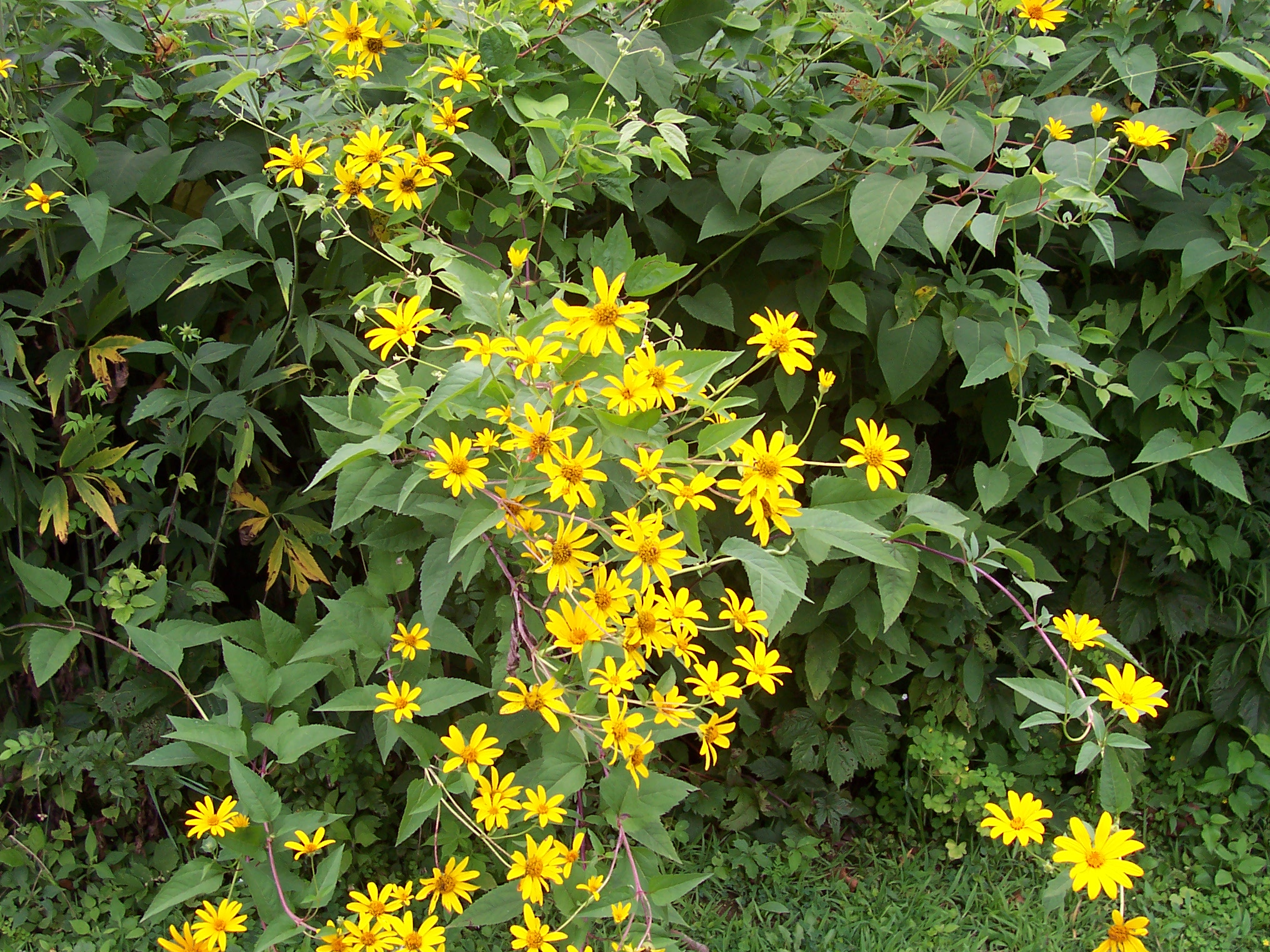
Also called False Sunflower. ellow, 2-3" wide blooms from mid-summer to fall. Height: 3-5'. Width: 3'. Part sun. Average soil. Forms thick, non-spreading clumps. Use in the middle of a border, in a meadow with grasses, in open woods or at the wood edge. Long-blooming, easily grown and transplanted. Carefree. Bird and butterfly plant. Rain garden plant.
Partridgeberry (Mitchella repens) – PART TO FULL SHADE
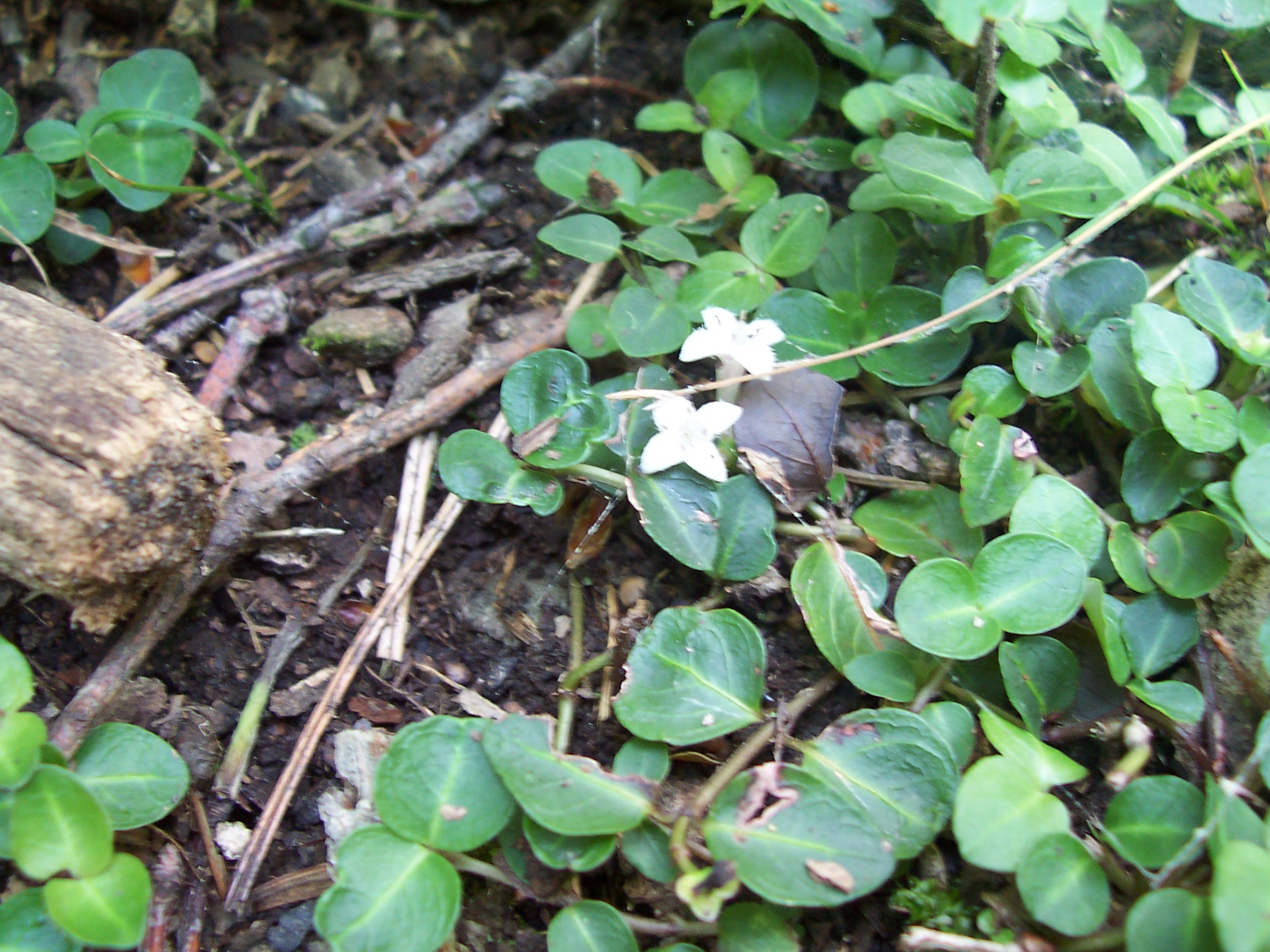
Evergreen, slow-spreading groundcover. Sparse white blooms from spring into summer. Tiny, round, dark, shiny leaves. Red berries, also sparse, through winter. Height: 1-2". Spread: to 16". Part to full shade. Acidic, moisture-retentive soil. Does not like competition and resents leaf cover in winter. Slow to establish, but will form a thick patch in time. Must have adequate moisture until well-established. Use around shaded stepping stones or under acid-loving deciduous and evergreen trees and shrubs. Incorporate plenty of well-moistened sphagnum peat into planting soil and mulch with pine needles. Deer resistant.
Plantain-leaved Pussytoes (Antennaria plantaginifolia) – PART SUN
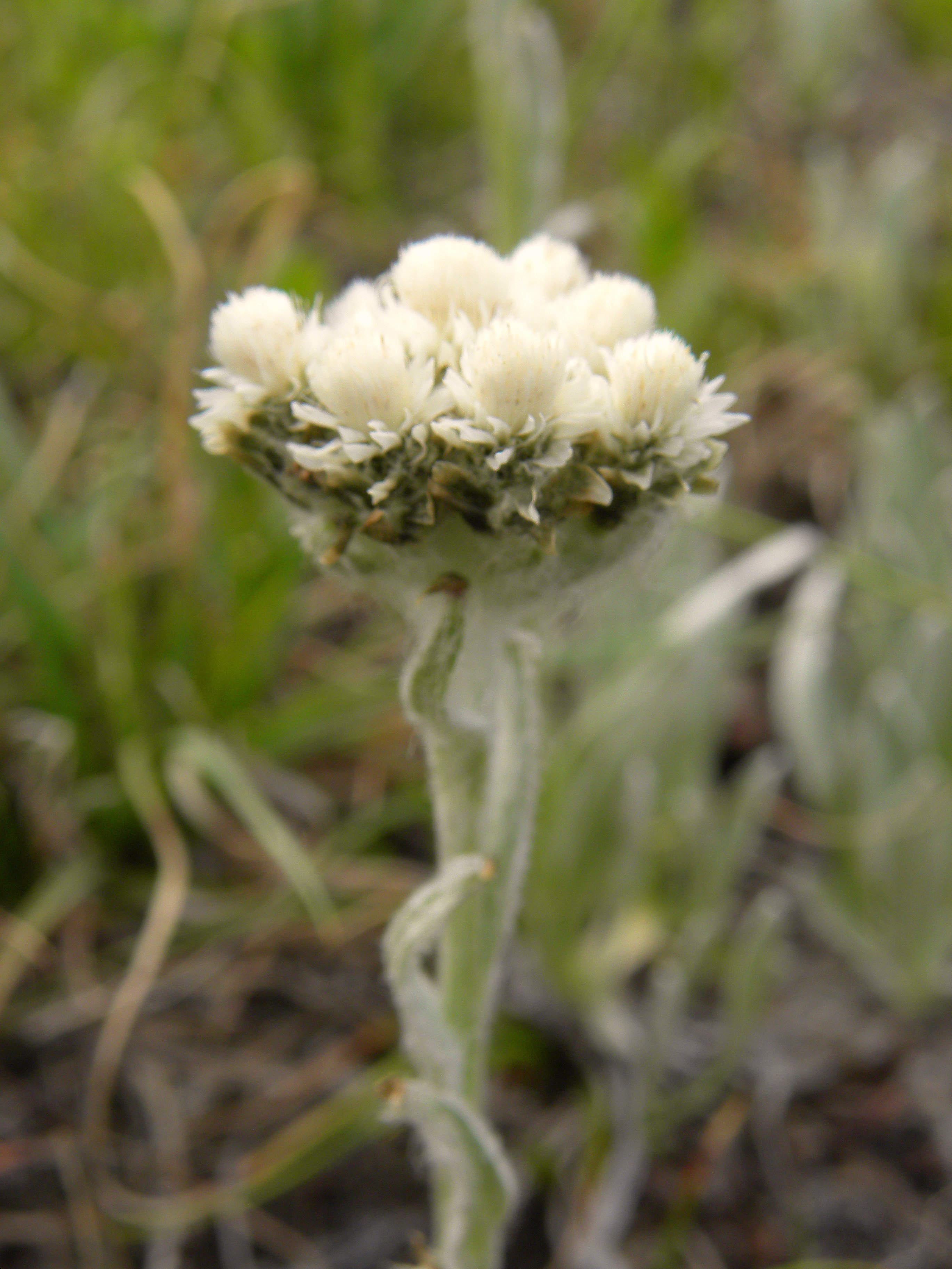
Semi-evergreen groundcover forming ever-expanding, dense mats. White blossoms in early spring. Small, closely-clustered flower heads resemble cats' paws. Foliage dark green above, silvery below. Height: 3-6". Average soil. Excellent drainage a must. Will not tolerate competition from other plants. Shear after flowering for neat appearance. Sections may be dug and moved in summer. Use in rock gardens, near paving stones or on banks. Deer resistant.
Poke Milkweed (Asclepias exaltata) – PART SUN
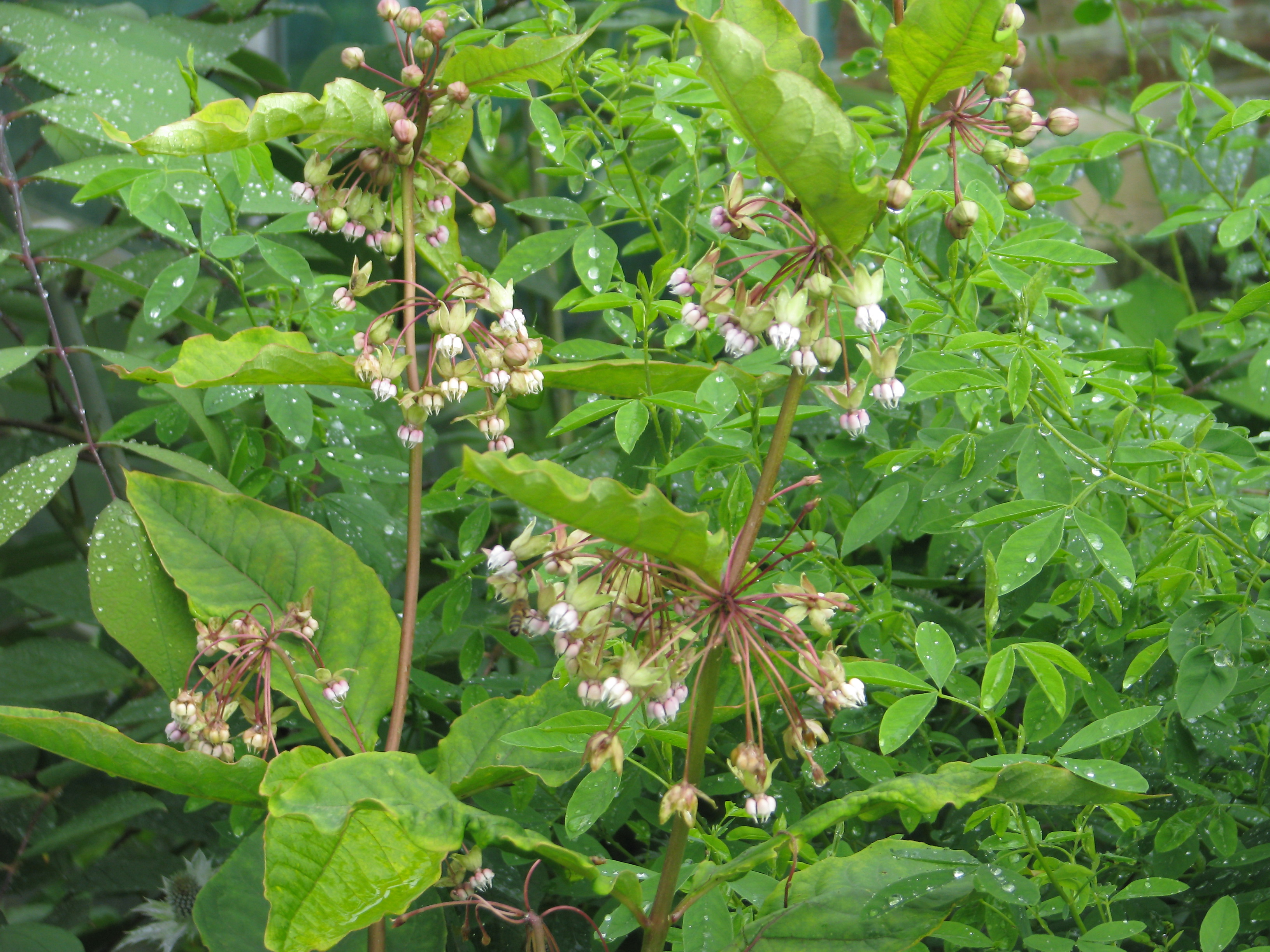
Also called Tall Milkweed. Elegant clusters of drooping, greenish-white flowers in summer. Blooms earlier than common milkweed. Leaves similar to those of common milkweed, but this is a clumping form and is thus better suited to suburban yards. Height: to 5'. Width: 2'. Part sun. Moist soil. Butterfly plant.
Purple Bergamot (Monarda media) – SUN TO PART SUN
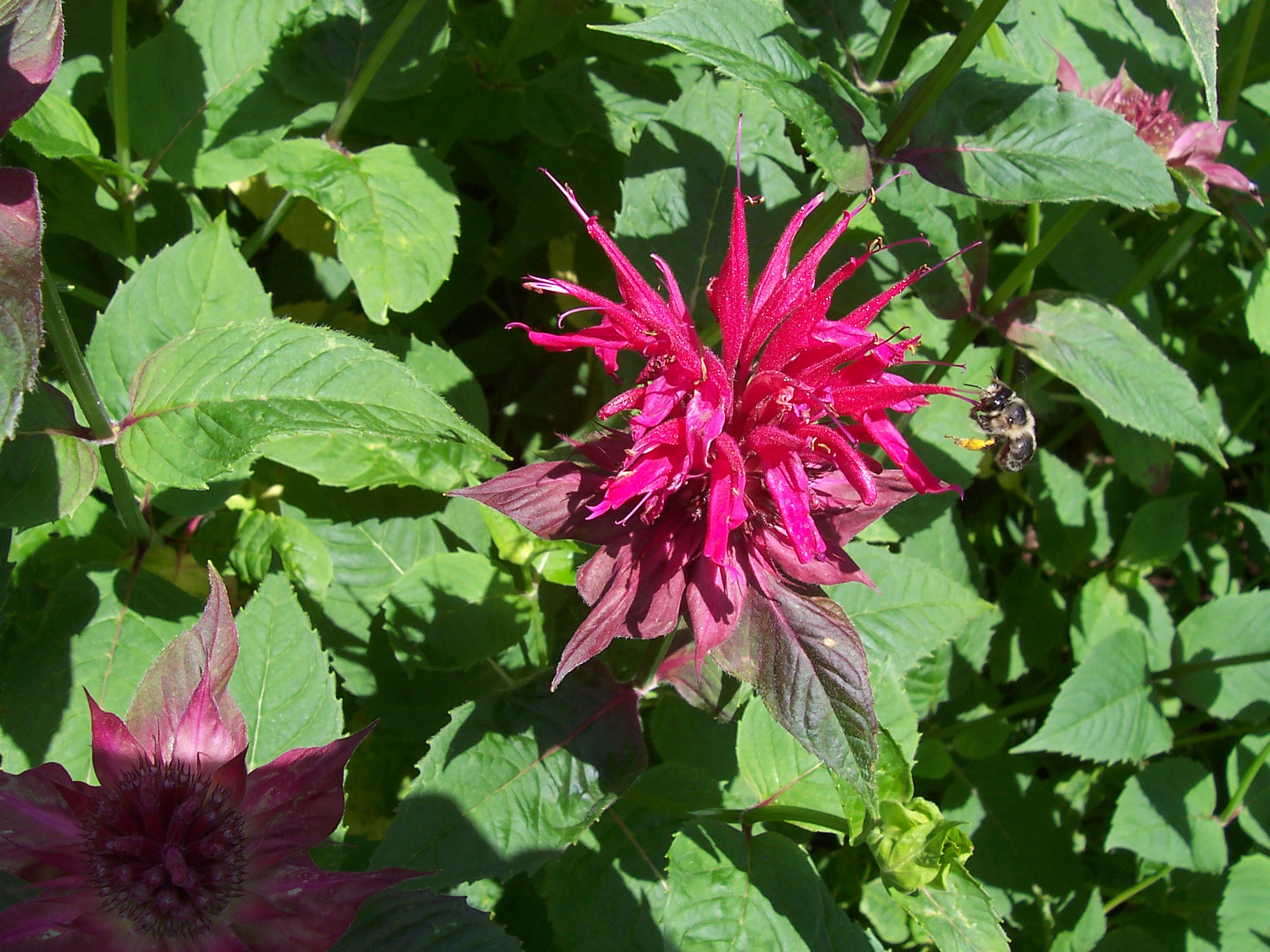
Blooms magenta in summer. Similar to Monarda didyma. See Monarda clinopodia for cultural information. Butterfly and hummingbird plant. Rain garden plant. Deer resistant.
Purple Trillium (Trillium erectum) - PART SHADE OR DAPPLED LIGHT
Also called Wake Robin. Three-petaled, maroon blooms held above 3-leaved plants in spring. Height: to 18". Moist, well-drained, acidic soil. Part shade or dappled light. Plant container bulbs at the same level as in the pots. Add organic mulch in spring. Dig and divide older plants when they begin to go dormant.
Ramps (Allium tricoccum) – PART SHADE
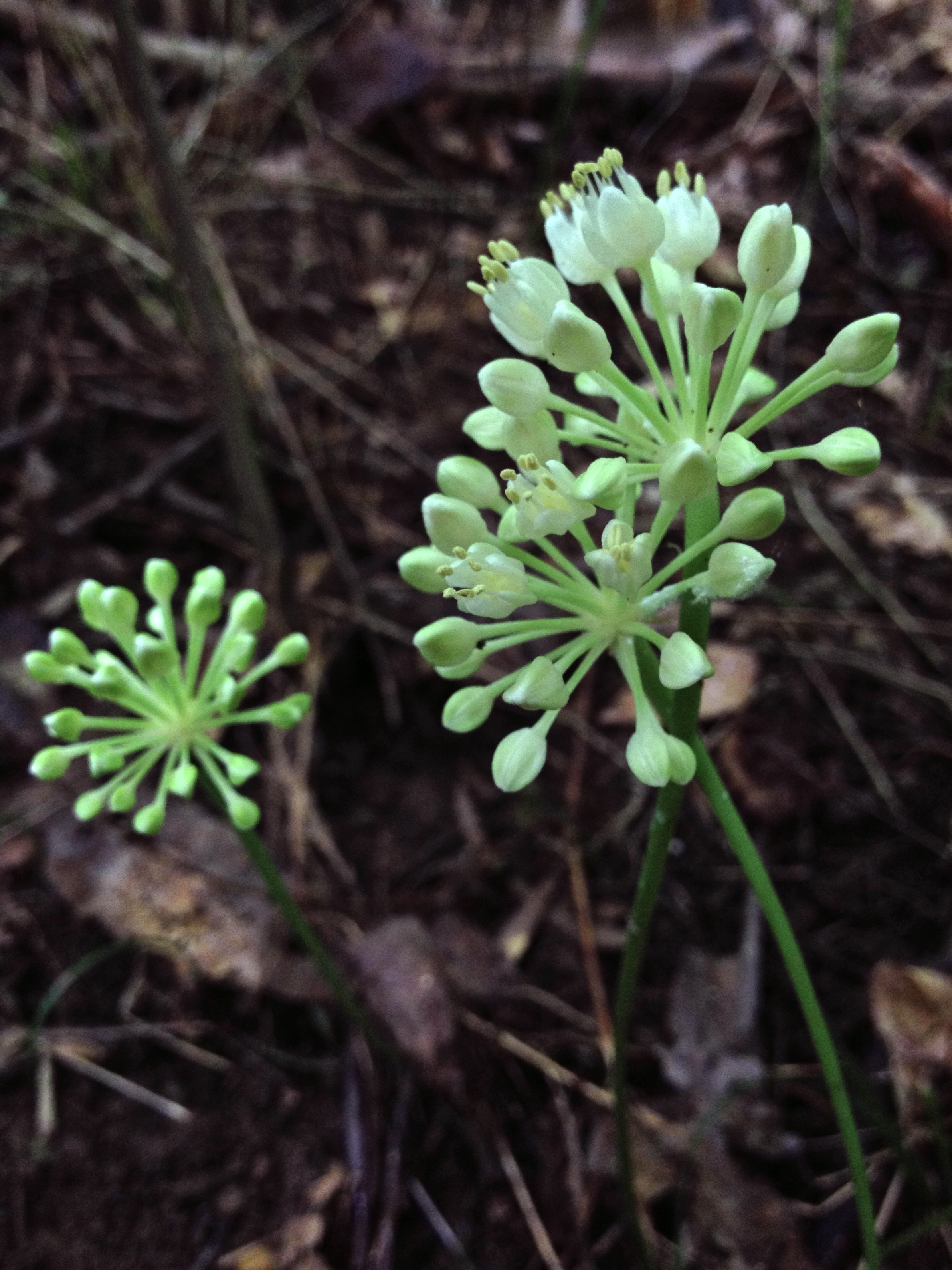
Lily-of-the-valley-like foliage dies back in June and is followed by small, roundish heads of white bells on leafless, 6-18" stalks. Shiny, round, black seeds in dried clusters may remain through winter. Height: 6-12". Width: 8". Rich soil. Moist, especially in spring. An interesting woodland groundcover, often grown for its very strong, leek-like flavor. Slowly forms colonies. Deer resistant.
Rattlesnake Weed (Hieracium venosum) – MORNING SUN
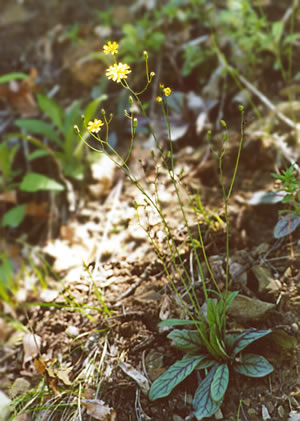
Interesting, red-veined, hairy leaves that hug the ground, forming mats. Small, yellow flowers on stiff, mostly leafless stalks through summer. Flower height: 1-2'. Morning sun. Moist, fertile soil. Grows in moss at the base of trees in wild areas. Acts more like an annual than a perennial, with many, fast-germinating self-sows, but winter survival only by stronger plants. Deer resistant.
Rough-stemmed Goldenrod (Solidago rugose) – SUN TO PART SUN
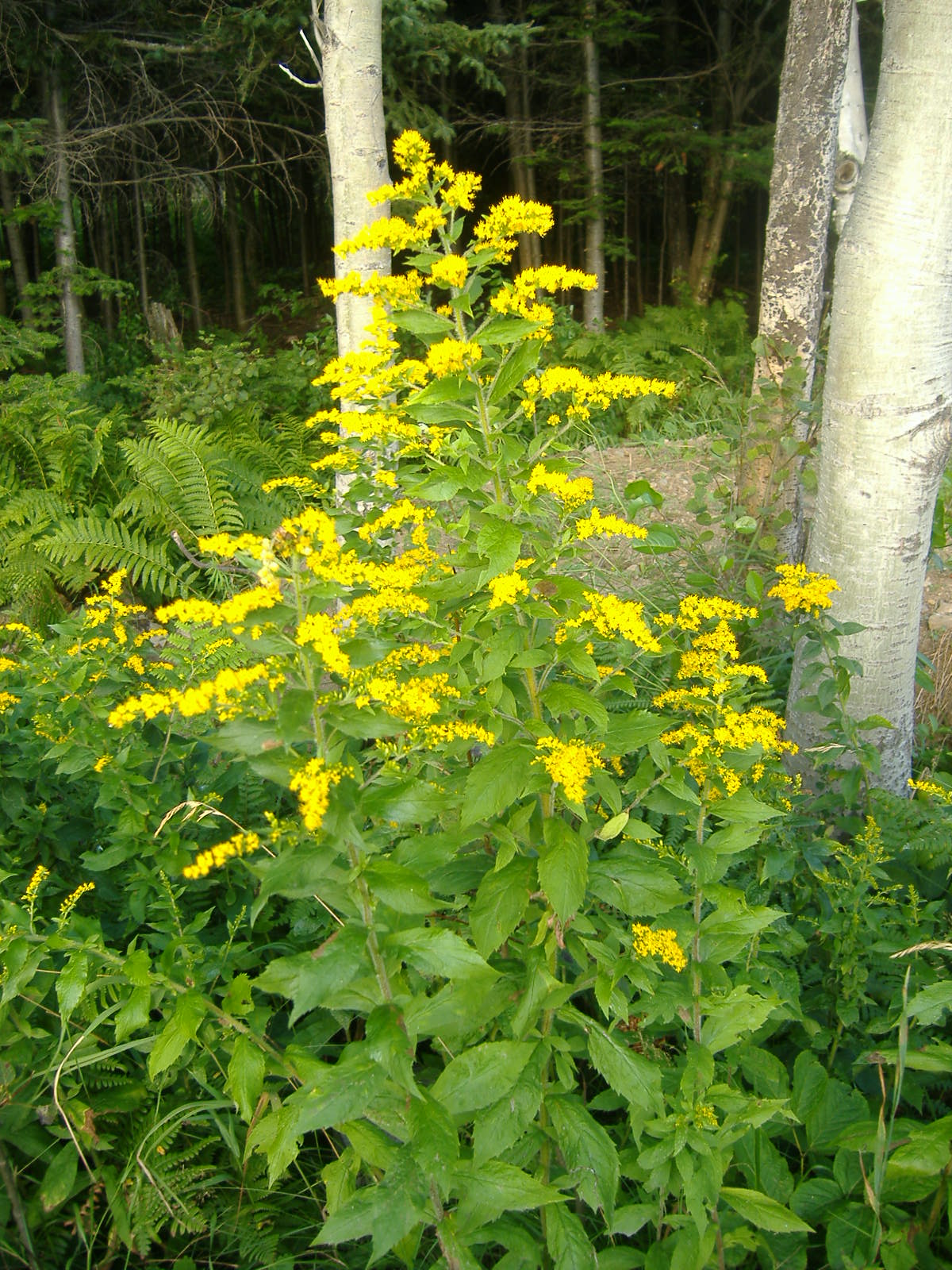
A species of goldenrod. Goldenrods play important roles in native ecosystems, stabilizing soil on hillsides and banks, providing excellent nectar sources as well as food and shelter for wildlife. Blooms yellow in late summer to fall. Height: 2-6'. Width: 3'. Sun to part sun. Cultural requirements same as for Solidago caesia. This is an aggressive species best used for naturalizing in large areas such as meadows and fields. Forms large clumps. Rain garden plant.
Rue anemone (Thalictrum thalictroides) – PART SHADE TO SHADE
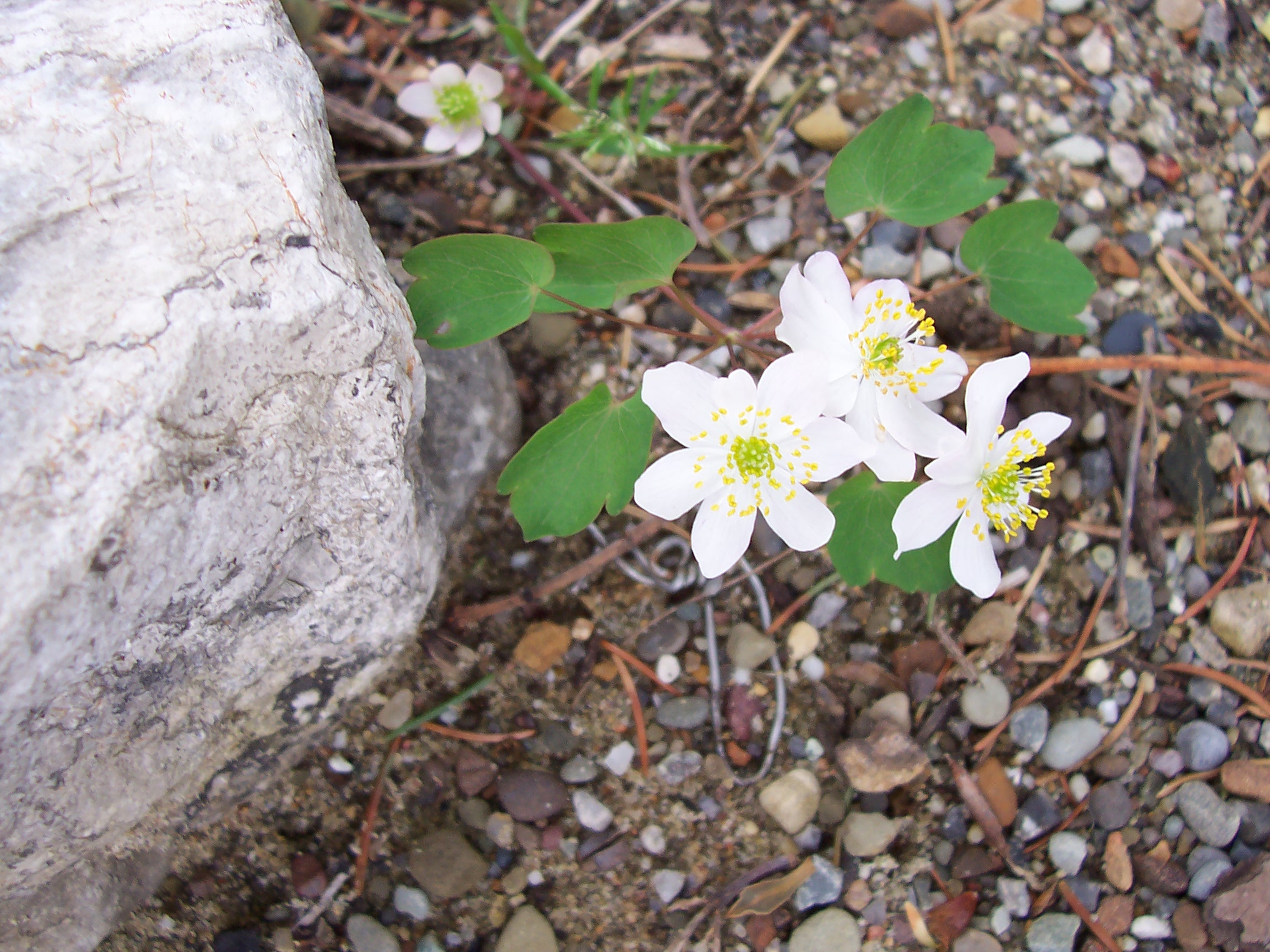
Dainty, white to pink blooms in spring and early summer. Will continue blooming longer with moisture. Height: 4-8". Width: to 12". Part shade to shade. Moist, but very well-drained, near neutral-soil. Dust soil occasionally with horticultural lime. Add compost and sand to improve drainage. Use in a woodland garden, a shady rock garden or under deciduous shrubs. Best in drifts. Self-sows. Delicate-looking but tough. Deer resistant
Sensitive Fern (Onoclea sensibilis) – PART SHADE
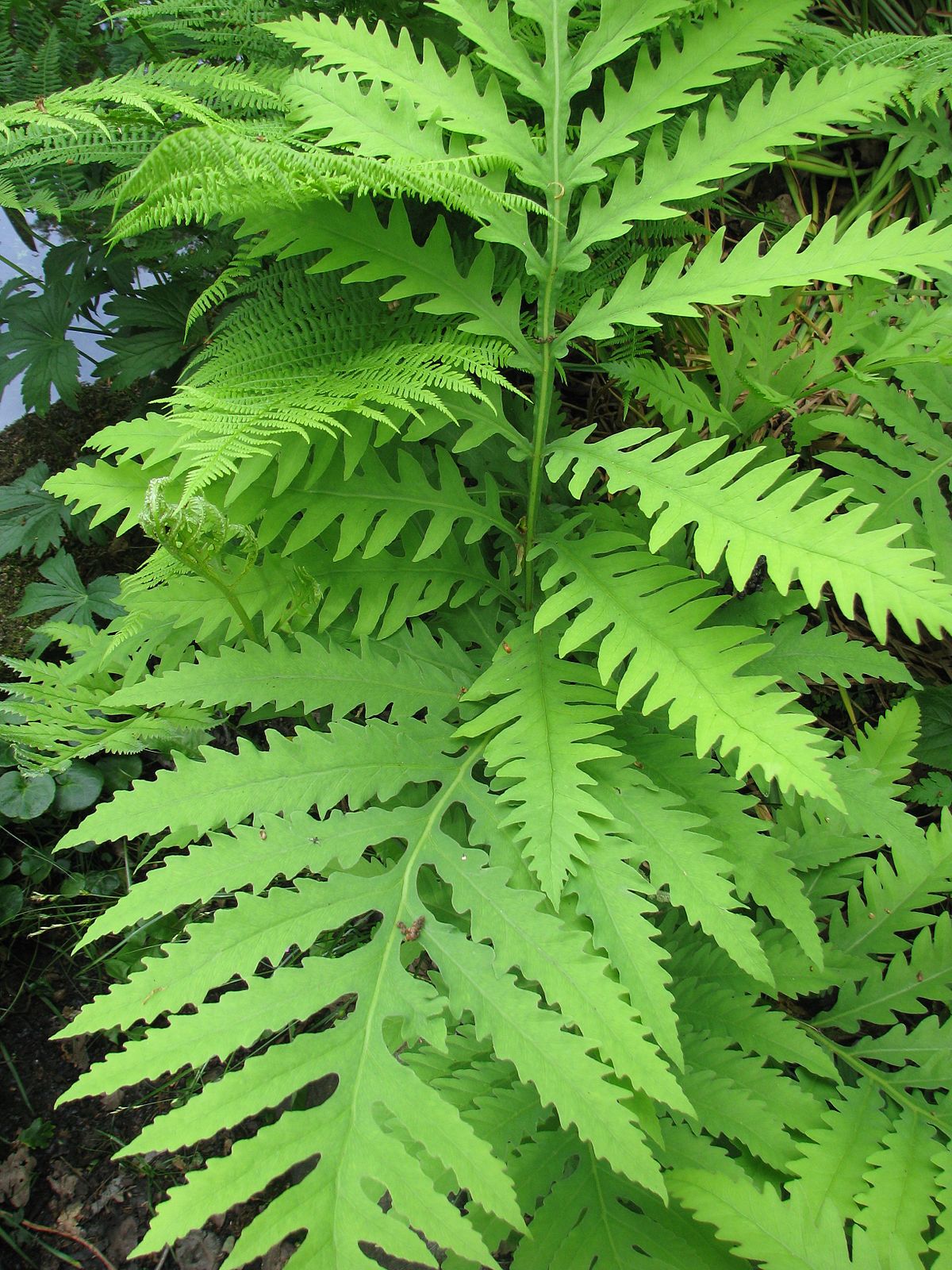
Light green fronds, usually deeply lobed. Height: 1-2'. Width: 2-3'. Part shade. Moist, fertile soil. Establishes, then spreads quickly to form large colonies. Grows continually through the season and stays looking fresh till first frost. Self-sows aggressively. Great in masses as a groundcover, at the wood edge or mixed with other aggressive ferns such as Ostrich Fern. Easy. Shadier rain garden plant. Deer resistant.
Silverrod (Solidago bivolor) – MORNING SUN TO LIGHT SHADE
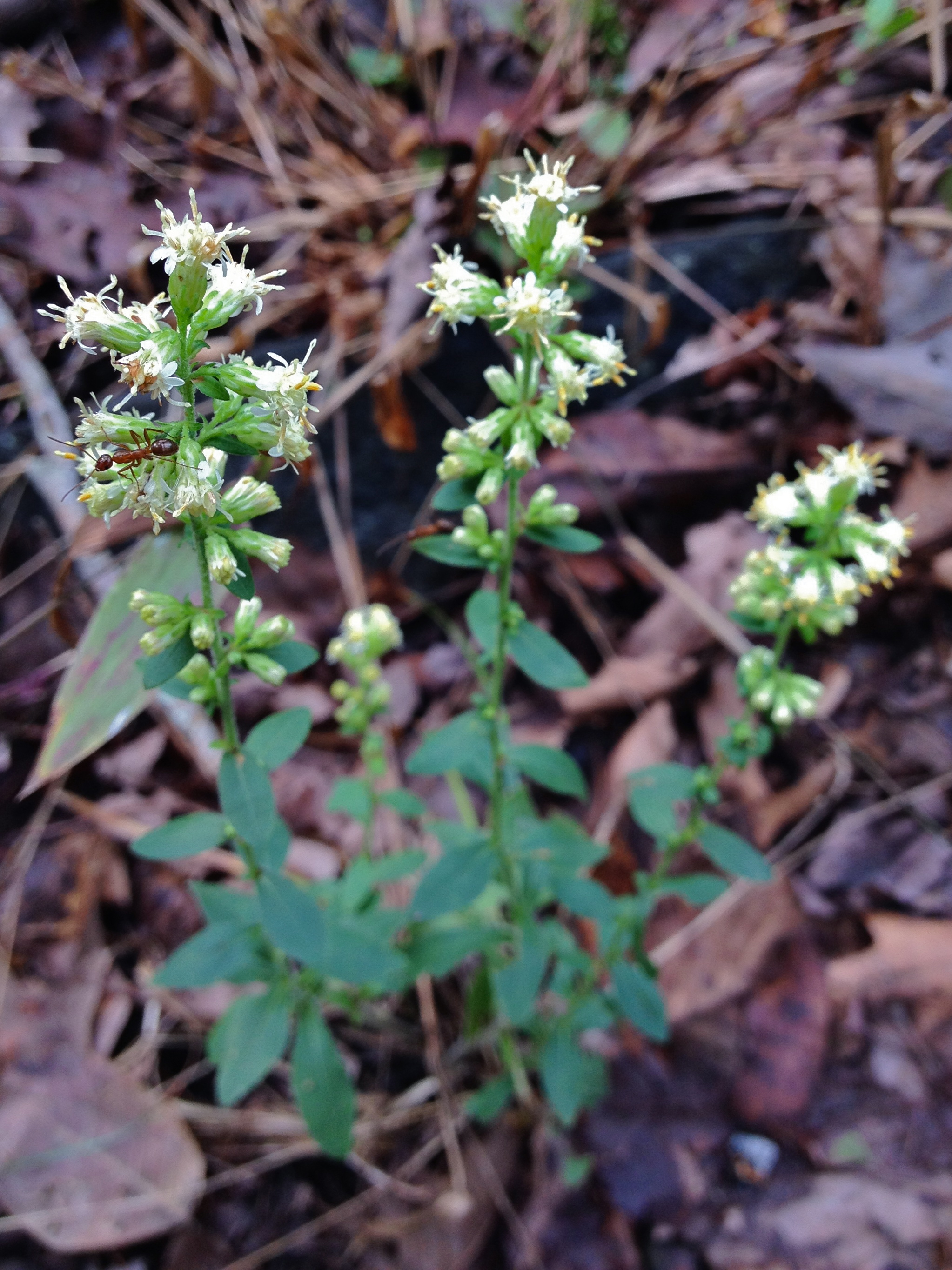
A species of goldenrod. Goldenrods play important roles in native ecosystems, stabilizing soil on hillsides and banks, providing excellent nectar sources as well as food and shelter for wildlife. Silver-white blooms along a spike in late summer and fall. Height: 2-3'. Width: 2'. Morning sun to light shade. Average soil. Will self-sow. A rugged plant, especially in drier soils. An alternative for dry shade, even under evergreen trees.
Skunk Cabbage (Symplocarpus foetidus) – PART TO FULL SHADE
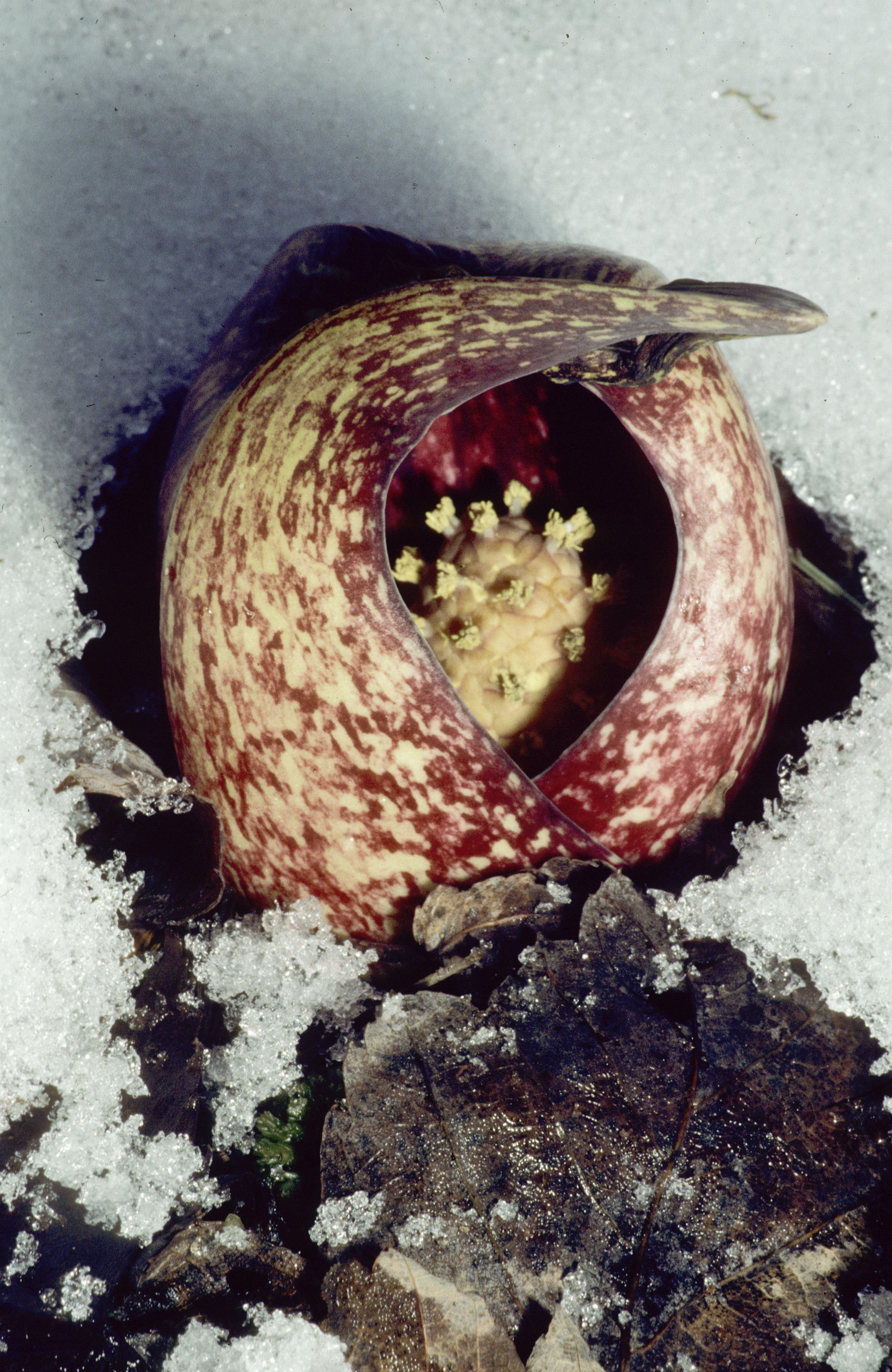
Large, maroon and white, hooded blooms in late winter to early spring. Huge, tropical-looking leaves follow. Plants go dormant by mid-summer. Height and width: to 3'. Part to full shade. Mucky to wet soil, at least in spring. The wetter the soil throughout the season, the more sun the plants will tolerate. Site carefully as huge rhizome makes it hard to eradicate once established. Best for naturalizing in swampy areas. Deer resistant.
Solomon’s Seal (Polygonatum biflorum) – PART SHADE
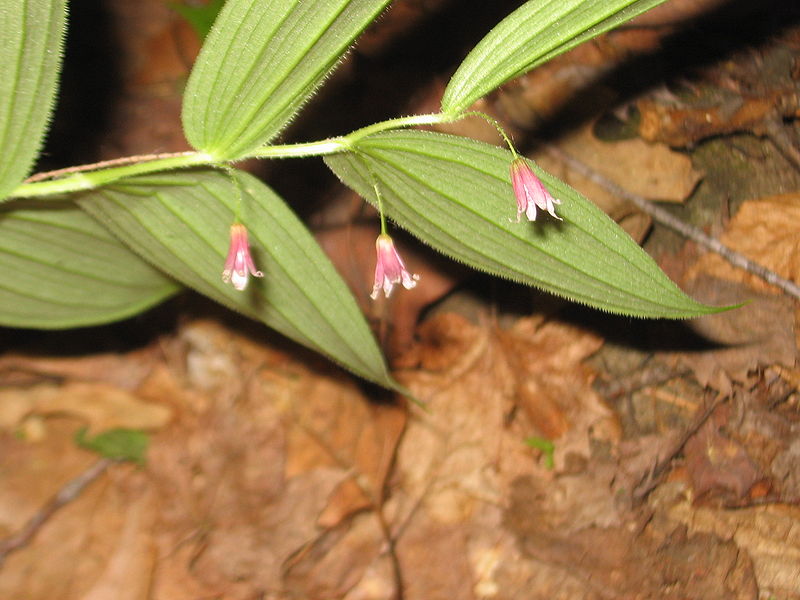
White, bell-shaped flowers tipped in green dangle beneath elegant, arching foliage in spring. Blue-black fruits taken by wildlife in late summer. Height: 1-3'. Width: 16-24". Part shade. Moist, well-drained, rich soil. Intermingle with large-leaved groundcovers such as Bloodroot or Wild Ginger, or with ferns to add height. Divide every 5 years.
Spikenard (Aralia racemose) – PART SHADE
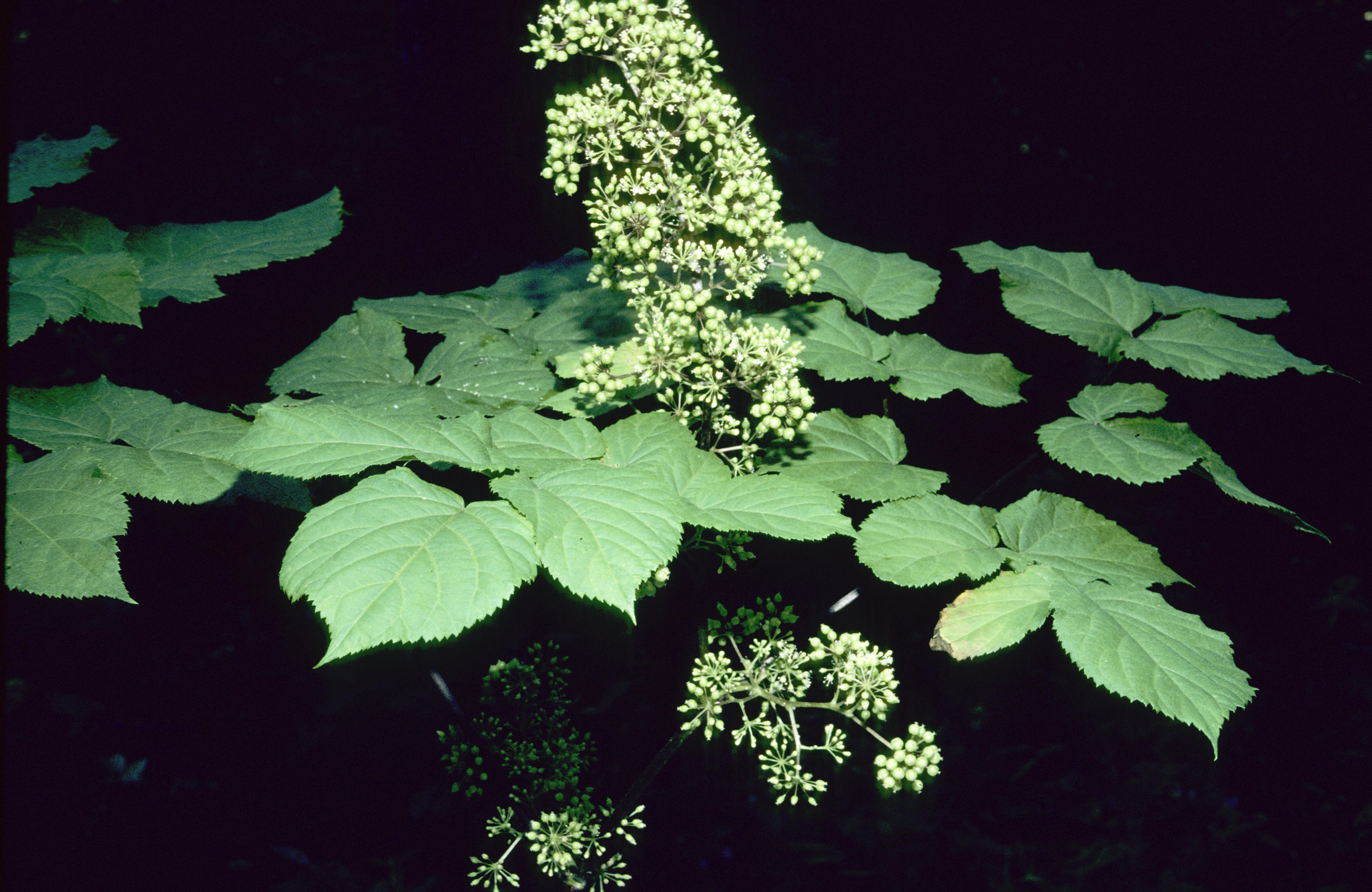
Shrubby, but dies back to the ground in fall. Greenish-white flower clusters in summer. Bold-textured foliage. Dark purple berries attractive to wildlife in fall. Black stems. Large, heart-shaped leaflets. Height and spread: 3-6'. Part shade or at wood edge. Moist, rich soil.
Squirrel Corn (Dicentra Canadensis) – PART SHADE

Spring ephemeral. White, heart-shaped flowers dangle on stiff stems above a mound of finely cut, blue-green foliage. Height: 5". Width: 1'. Part shade. Moist, well-drained, near-neutral, rich soil. Dust soil occasionally with horticultural lime. Bulblets may be dug and divided or moved only when plants are dormant in summer. Nectar plant for bumblebees. Deer resistant.
Starry Campion (Silene stellate) – PART SHADE
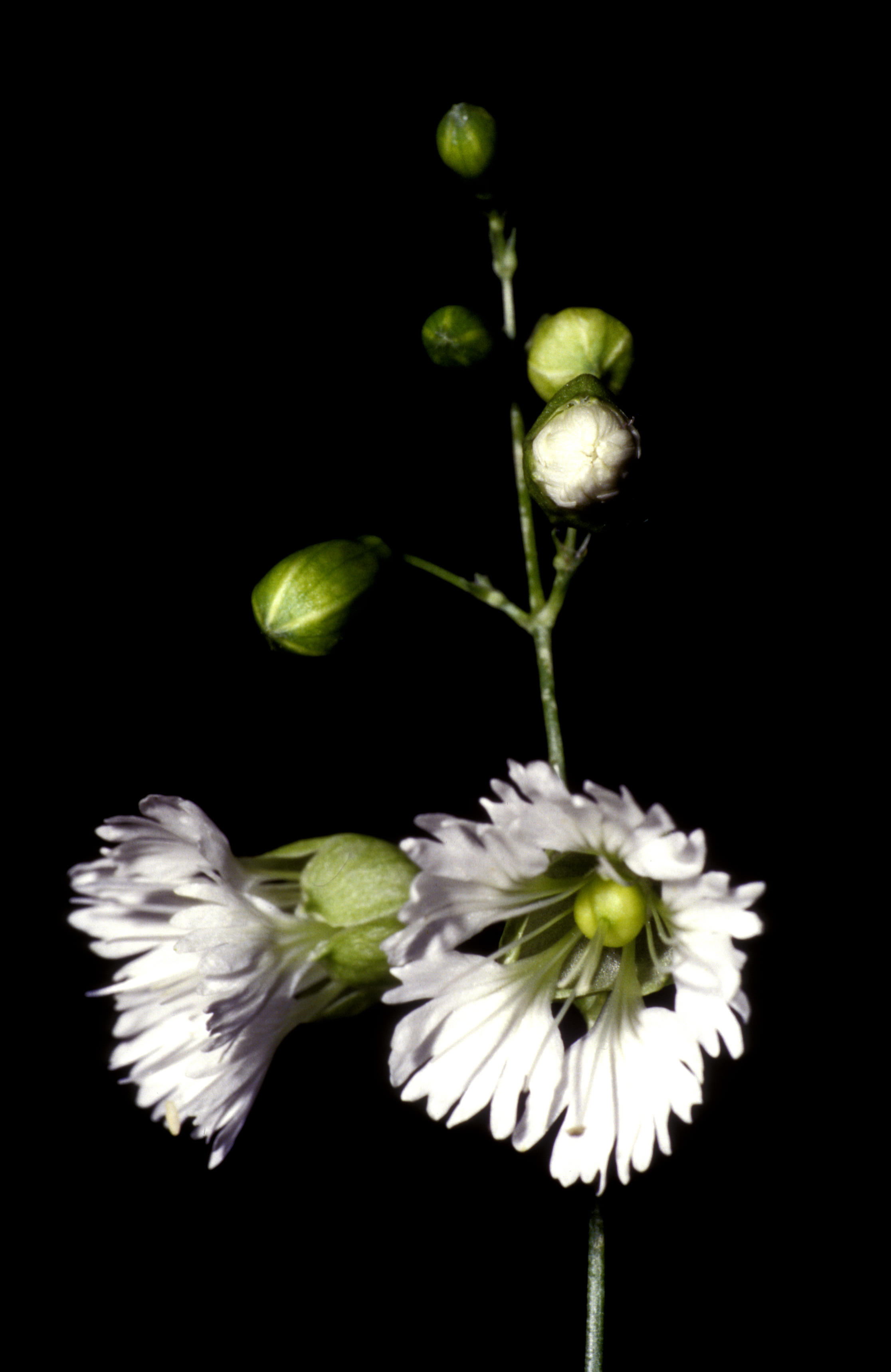
Nodding, ¾", white flowers with fringed edges in summer. Height: 2-3'. Plant is taller than wide. Part shade. Average to dry, moderately rich soil. Use in borders or in dry, open woods, especially along paths or at the wood edge. Will self-sow but not excessively. A delicate-looking yet rugged, undemanding plant.
Summer Phlox (Phlox paniculata) – MORNING SUN OR DAPPLED LIGHT
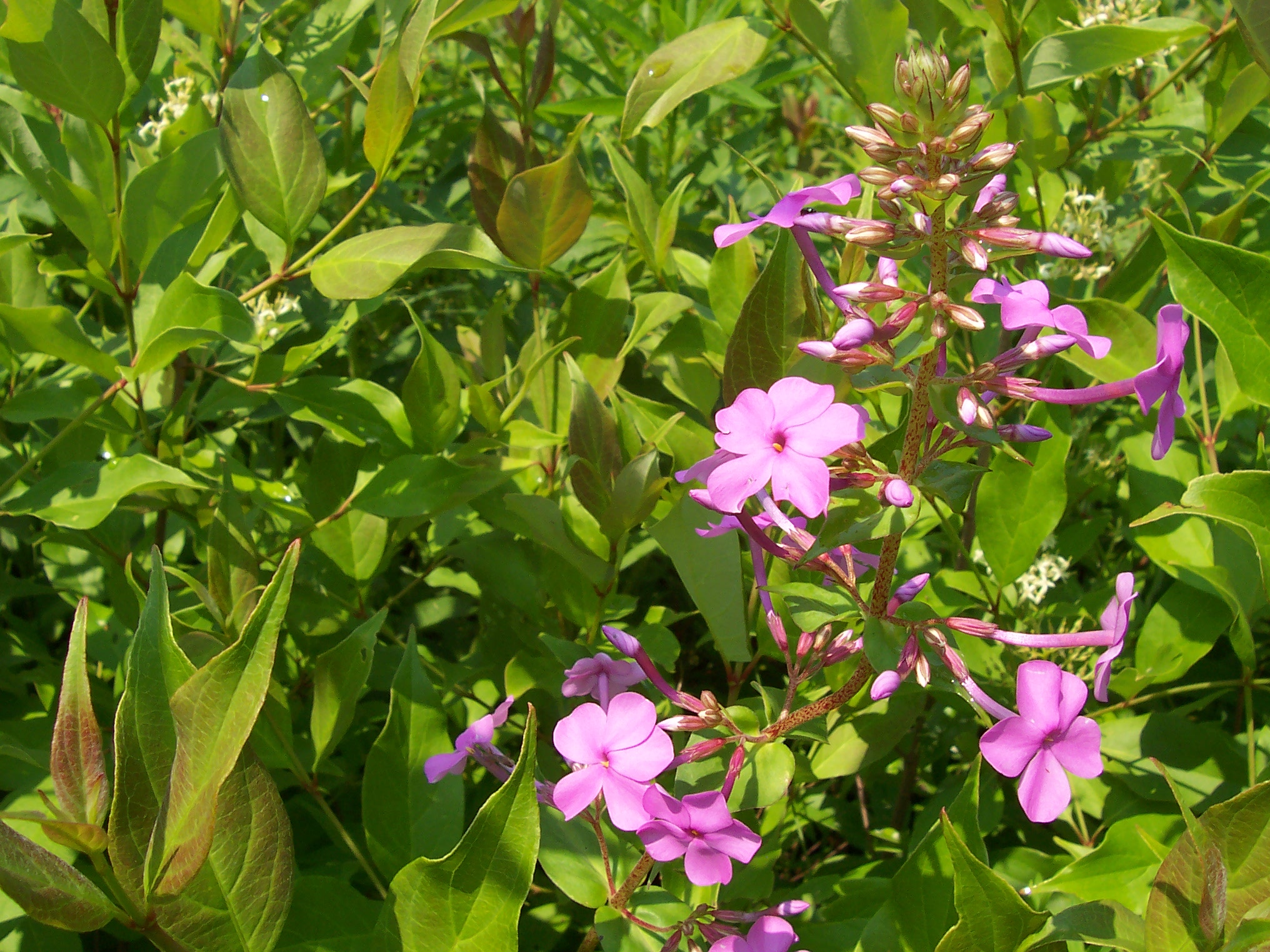
Also known as Perennial Phlox or Garden Phlox. Blooms pink, lavender or white in late summer. Height: 3-5'. Width: 2-3'. Morning sun or dappled light. Evenly moist, very fertile soil. This plant is usually found on floodplains. It will not survive drought. May develop powdery mildew. Allow space for air circulation and avoid overhead watering to help prevent. The native species is more vigorous and disease resistant than the cultivars. Shadier rain garden plant. Butterfly plant.
Swamp Milkweed (Asclepias incarnate) – SUN
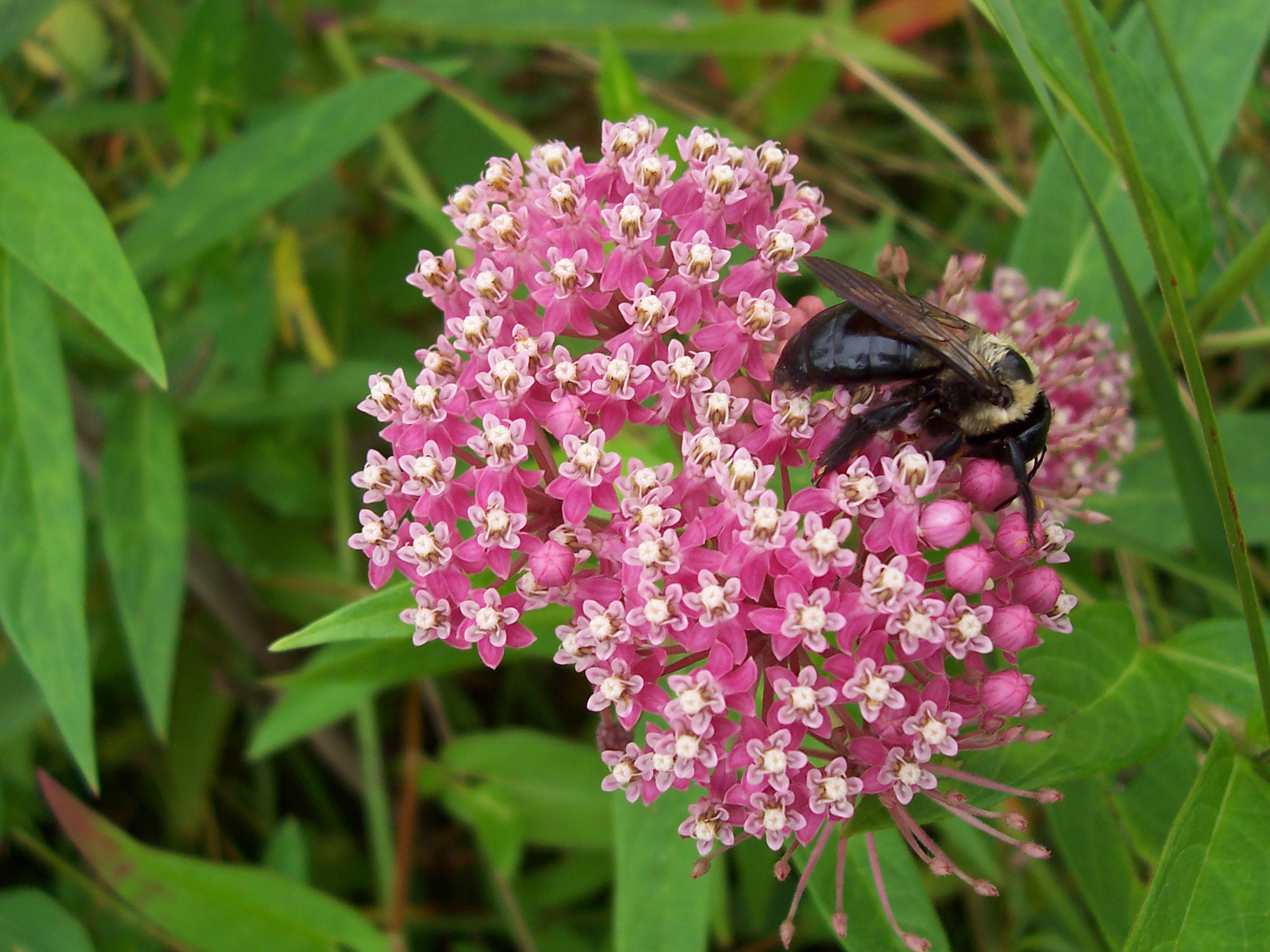
Also called Pink Milkweed. Flat clusters of rosy-pink flowers on stiff stems in July and August, followed by interesting seed pods. Height: 3-4'. Width: 2'. Sun. Medium to very moist, average soil. Clumping habit. Never needs dividing. Plant in a permanent location and allow to die back naturally. Self-sows. Deadhead to prevent. Use in a meadow, beside a pond or stream or massed in an informal garden. Butterfly plant. Rain garden plant. Deer resistant.
Swamp Rose Mallow (Hibiscus moscheutos) – SUN TO PART SUN
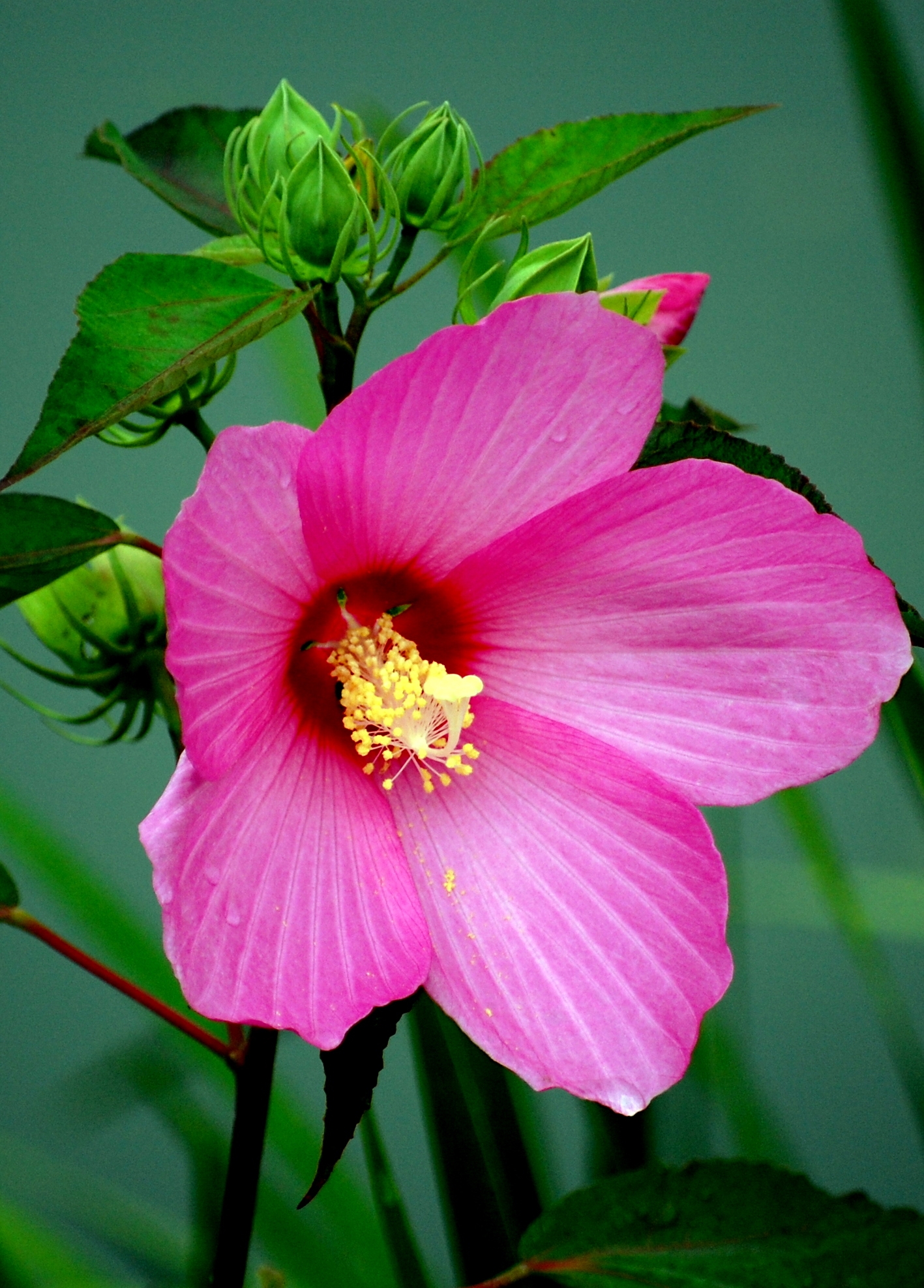
Large, white or pink flowers with darker centers in late summer. Height: 4-7'. Width: 3-4'. Sun to part sun. Must have moist to wet, fairly rich soil. Plant emerges late in spring and grows very fast. Long-lived. Forms large clumps over time, so allow space. Mulch to retain moisture in summer and to protect roots in winter. Japanese beetles may be a problem. Use at pond edge, in low, wet spots or water deeply and consistently in summer. Rain garden plant.
Swamp Saxifrage (Saxifraga pensylvanica) – PART SHADE
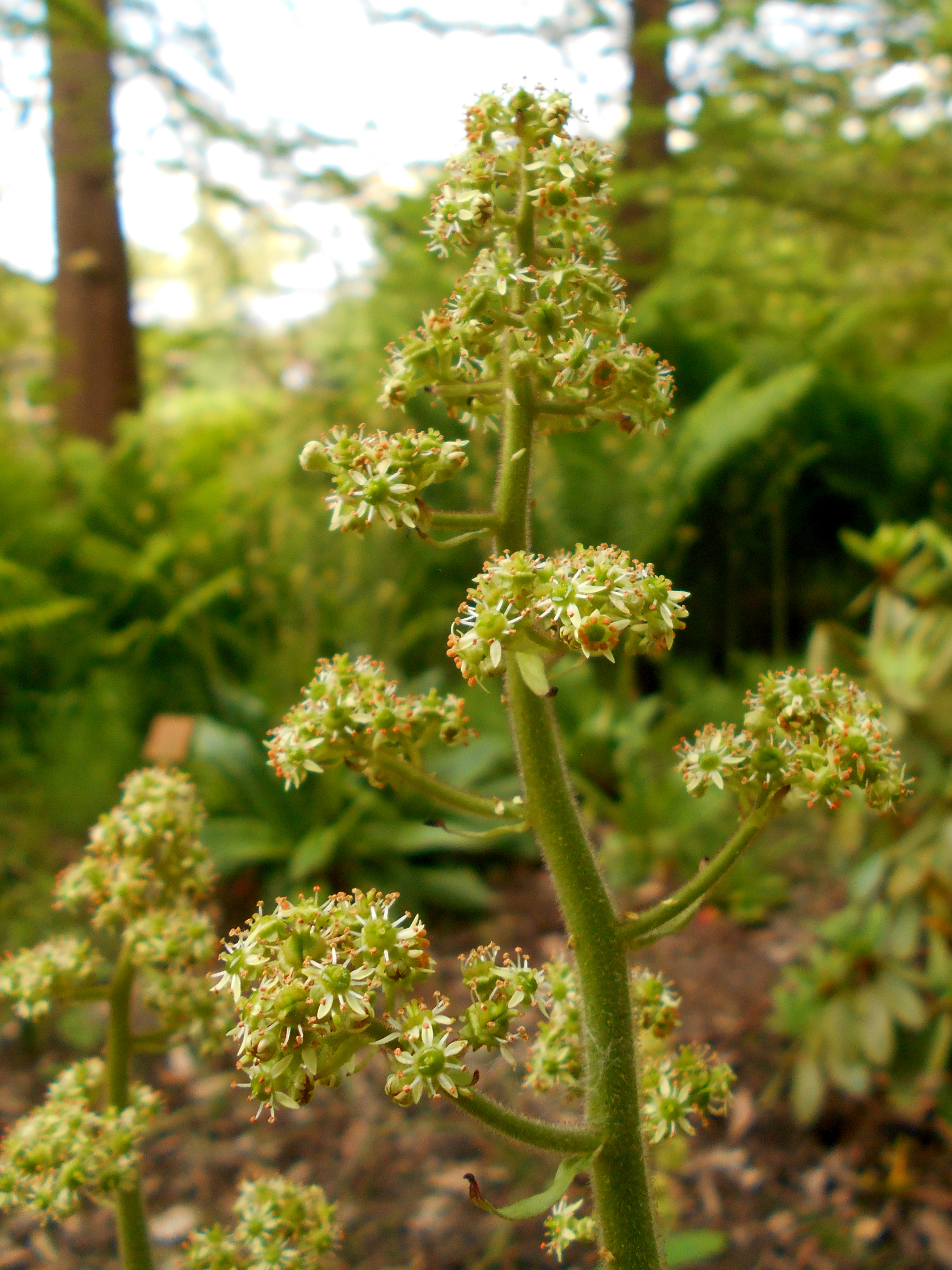
Greenish-white flowers in branched clusters on stout, 1-4' high stalks in spring. Leaves are basal rosettes. Part shade. Wet soil. A dramatic plant for use in standing water near the edge of a pond or stream, or in a swampy area. Produces offsets which may be divided with a sharp knife after bloom.
Tall Bellflower (Campanula amerciana) - PART SUN TO LIGHT SHADE
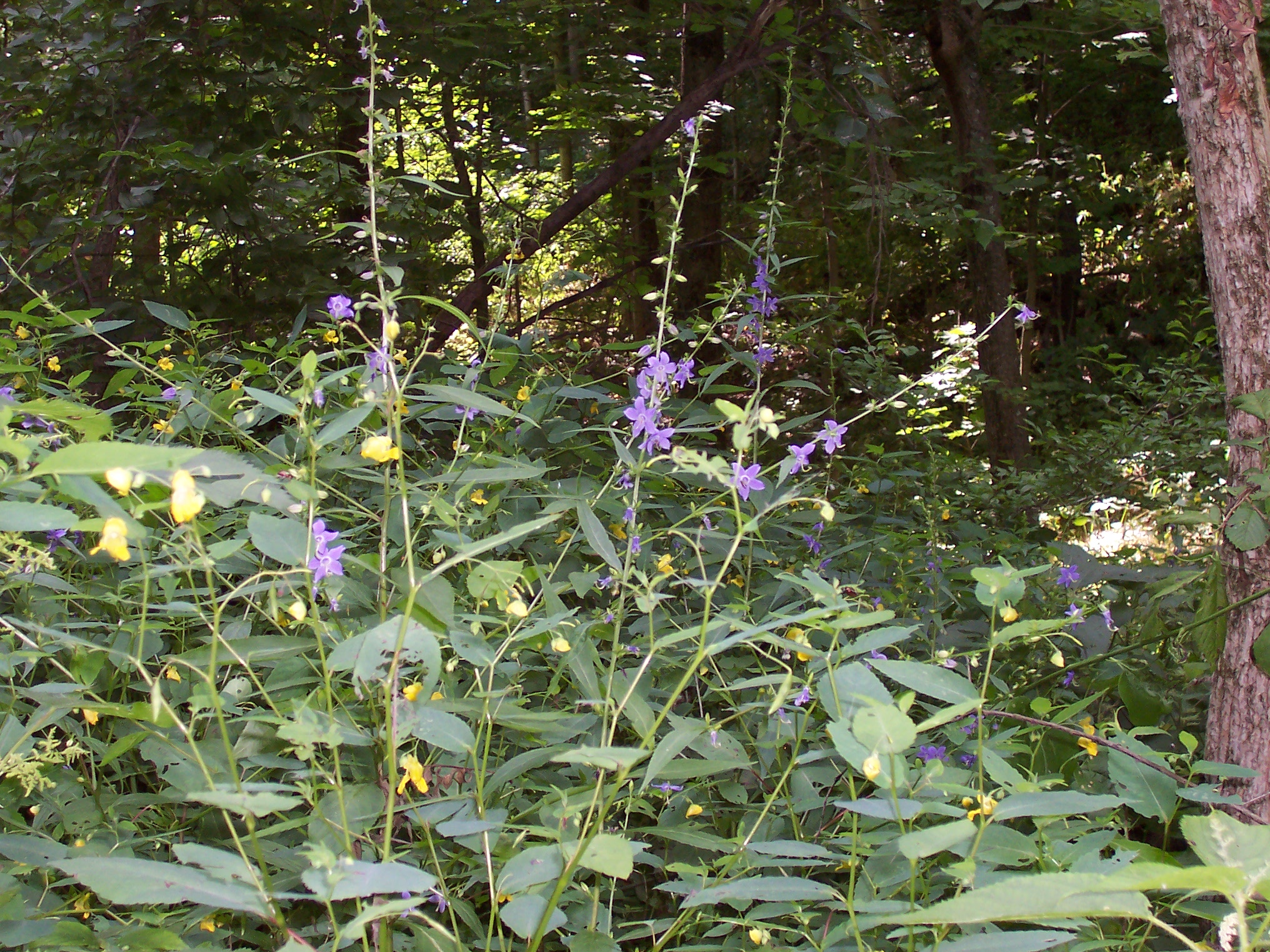
Annual or biennial. Blue, star-shaped flowers on leafy spikes in summer and early fall. Basal rosettes appear first, followed by tall stems and blooms. Self-sows where happy. Height: 2-6'. Part sun to light shade. Average soil. Nice for naturalizing in combination with White Wood Aster or Blue, Heart-leaved Aster. Often found growing on steep banks along roadsides. Shadier rain garden plant.
Tall Ironweed (Vernonia gigantea) - SUN TO PART SUN
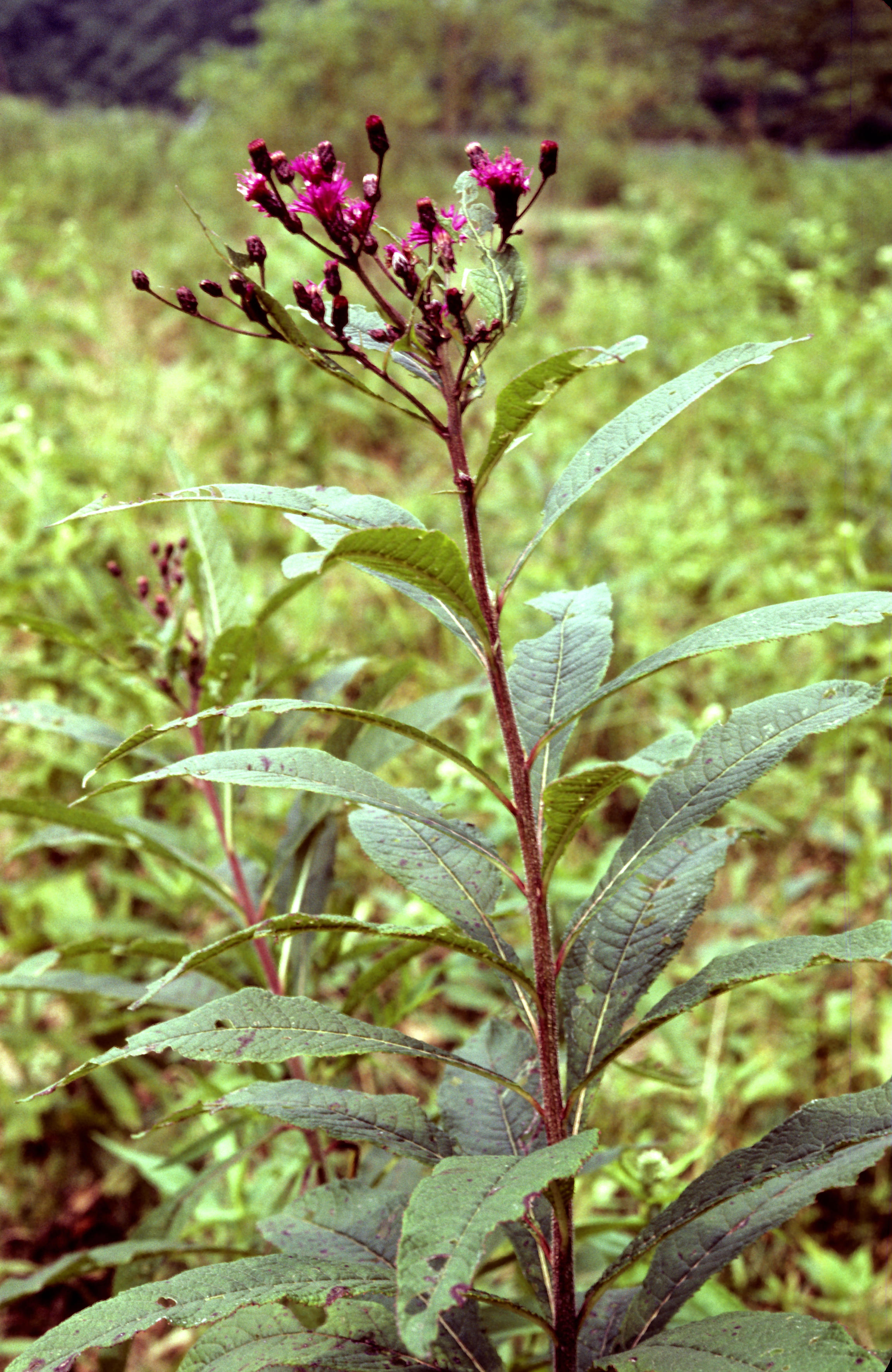
Intense purple flower clusters in late summer. Height: 4-10'. Width: 2-3'. Sun to part sun. Moist to wet, rich soil. Somewhat drought tolerant after established. Self-sows. Deadhead to prevent. Plant emerges late. Use for vertical accent or anchor plant in large borders, or for screening or naturalizing in moist meadows or near ponds or streams. Nice in low spots with Joe-Pye Weed and Boneset, or with tall yellow composites. Choose planting site carefully as plant is hard to move or divide. Easy. Long-lived. Rain garden plant
Tall Larkspur (Delphinium exaltatum) - PART SUN TO BRIGHT SHADE
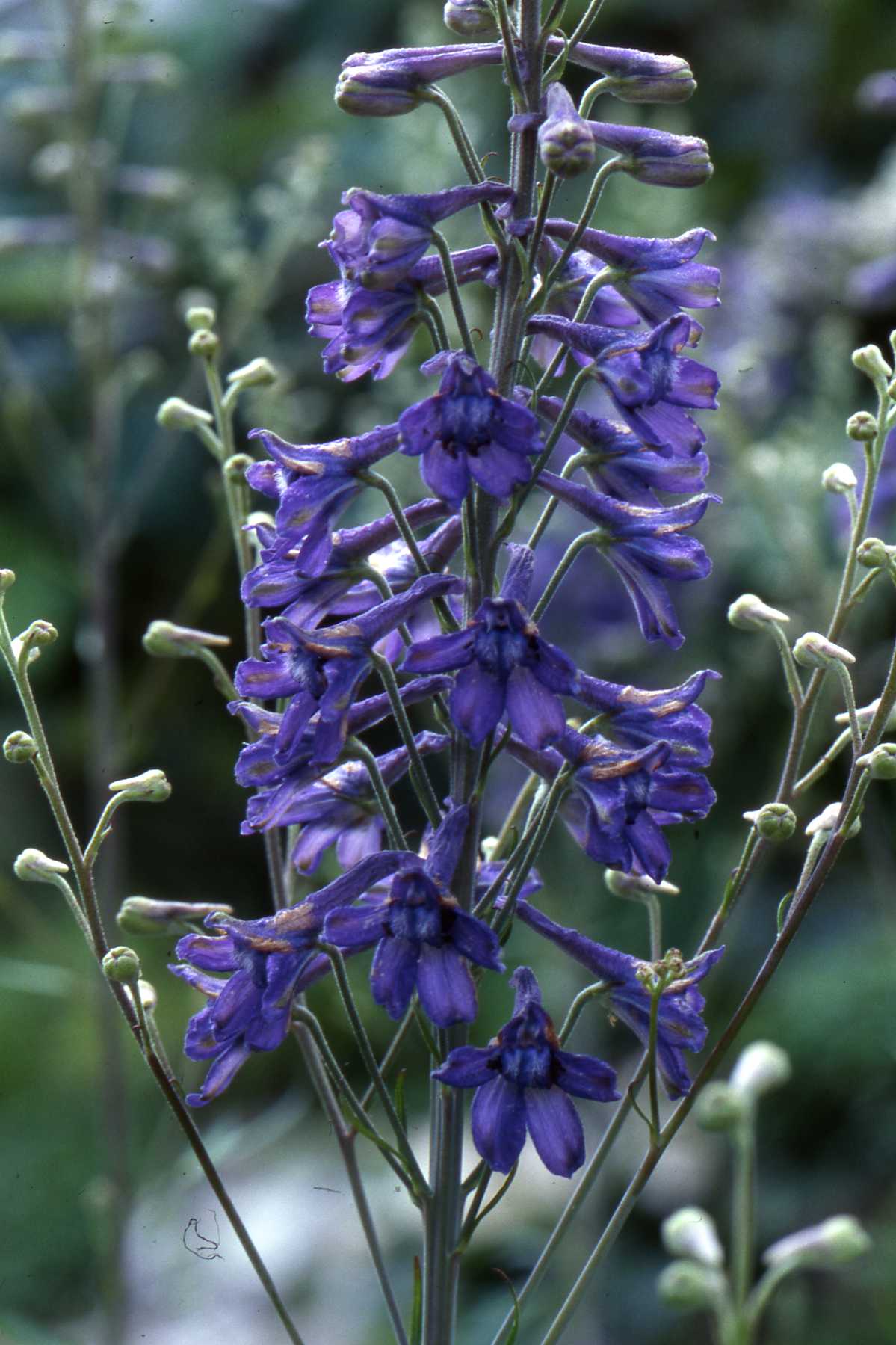
Blooms blue-purple on tall spikes in summer. Exquisite cut foliage. Height: 3-6'. Width: 16-24". Part sun to bright shade. Moist, near-neutral, rich soil. Dust soil occasionally with horticultural lime. Takes time to develop into sizeable clump, but rugged and long-lived. Must be protected from slugs beginning late June. Move only in early spring. Division not recommended. Easily grown. Good tall accent in a border or naturalized in a meadow.
Tall Meadow Rue (Thalictrum Pubescens) - PART SUN TO LIGHT SHADE
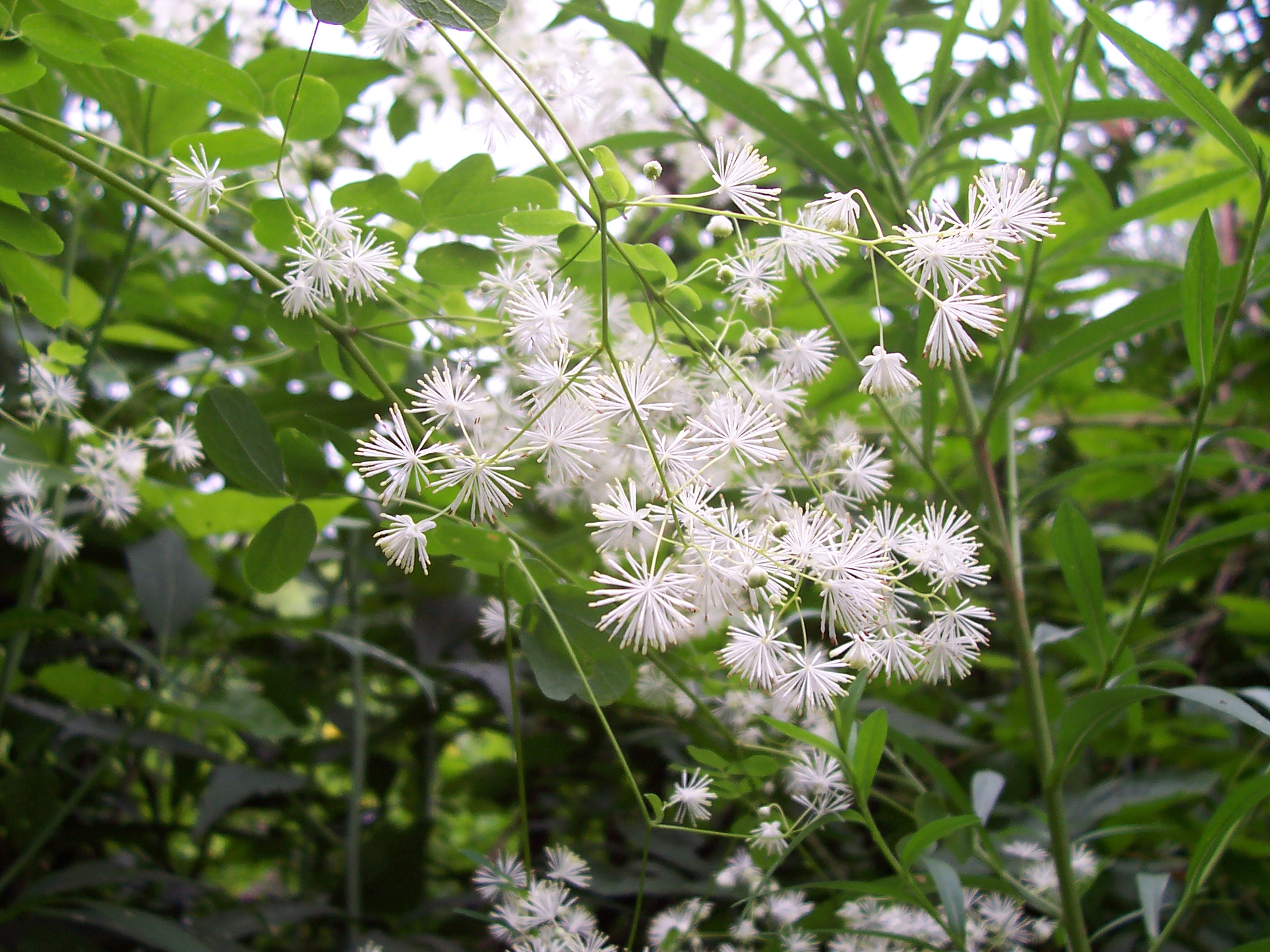
White, airy blooms in summer. Fine- textured foliage. A tall, graceful species. Height: 3-9'. Width: 2'. Part sun to light shade. Moist to wet, rich soil. Easy to grow and long-lived with plenty of moisture. Use as a vertical presence in borders, moist meadows, at the edge of woods, in open woods or beside a pond or stream. Nice filler for tight spaces. Blends well with other tall species. Shadier rain garden plant. Deer resistant.
Tall Sunflower (Helianthus giganteus) - SUN TO PART SUN
Yellow, 2-3" wide, daisy-like flowers from mid-summer to fall. Height: 6-10'. Width: 4-5'. Sun to part sun. Moist to wet, rich to average soil. Culture as for Helianthus decapetalus, above. Plant may be cut back by half in June to control height and promote bushiness. Dramatic at the back of a border or among tall grasses in a wild garden or meadow. Bird and butterfly plant. Rain garden plant.
Tall Tickseed (Coreopsis tripteris) - SUN TO PART SUN
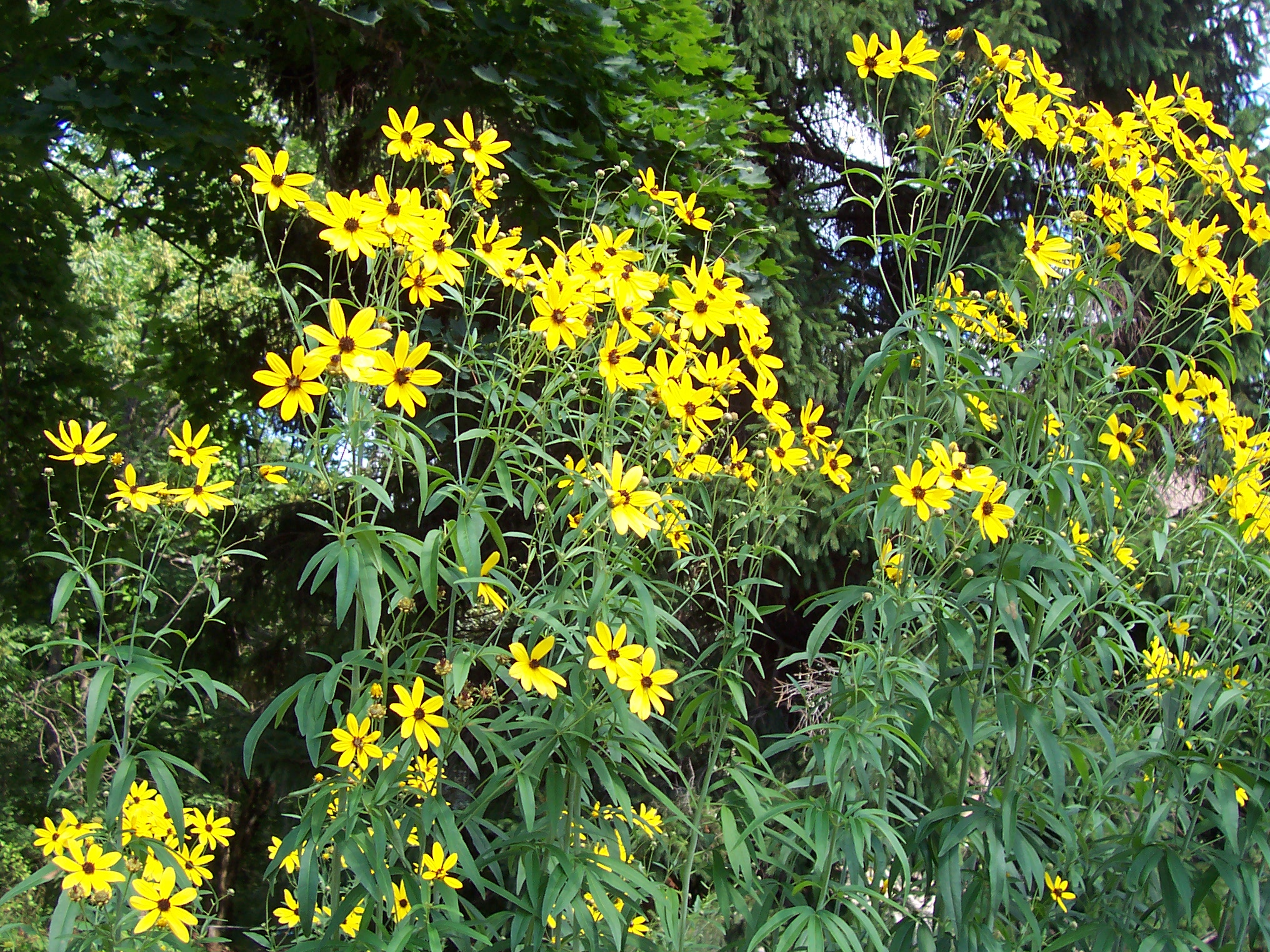
Blooms yellow, 2" wide, daisy-like flowers on strong stems in mid-summer. Height: 4-7'. Width: 3'. Sun to part sun. Moist to wet, average soil. A clumping plant. Divide in spring every 3-5 years. Cut back by half in June to control height and promote bushiness. Impressive species for back of border or to mix with tall grasses and asters in a meadow. Self-sows. Deadhead to prevent. Rain garden plant.
Tassle Rue (Trautvetteria caroliniensis) - MORNING SUN TO LIGHT SHADE
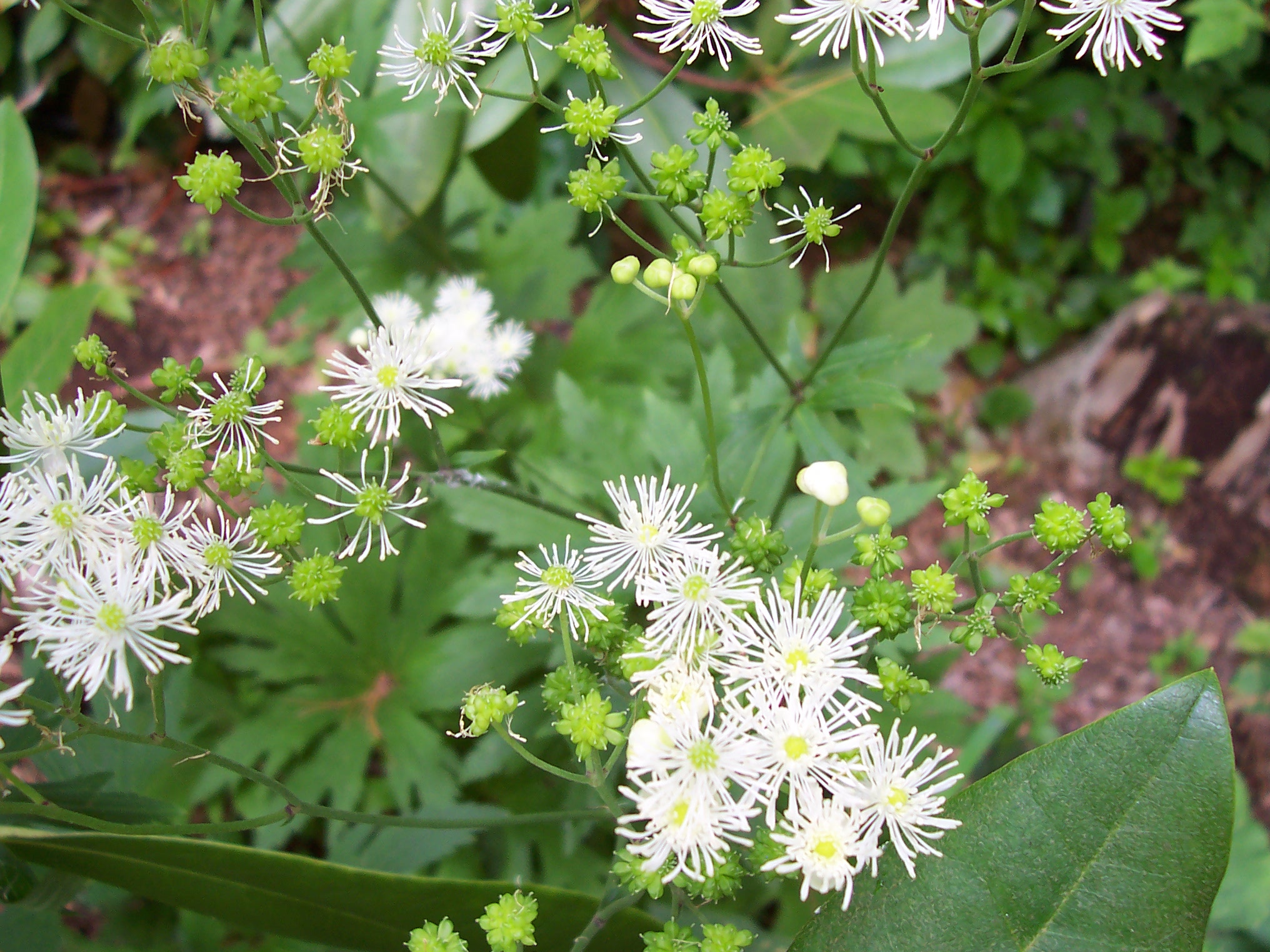
Flat clusters of white flowers with long stamens produce a tassel-like effect above large, lobed leaves. Blooms early summer. Height: 2-3'. Taller than wide. Morning sun to bright shade. Moist, rich soil. Use near a pond or stream or in an open woodland garden. Shadier rain garden plant.
Thimbleweed (Anemone virginiana) - PART SHADE
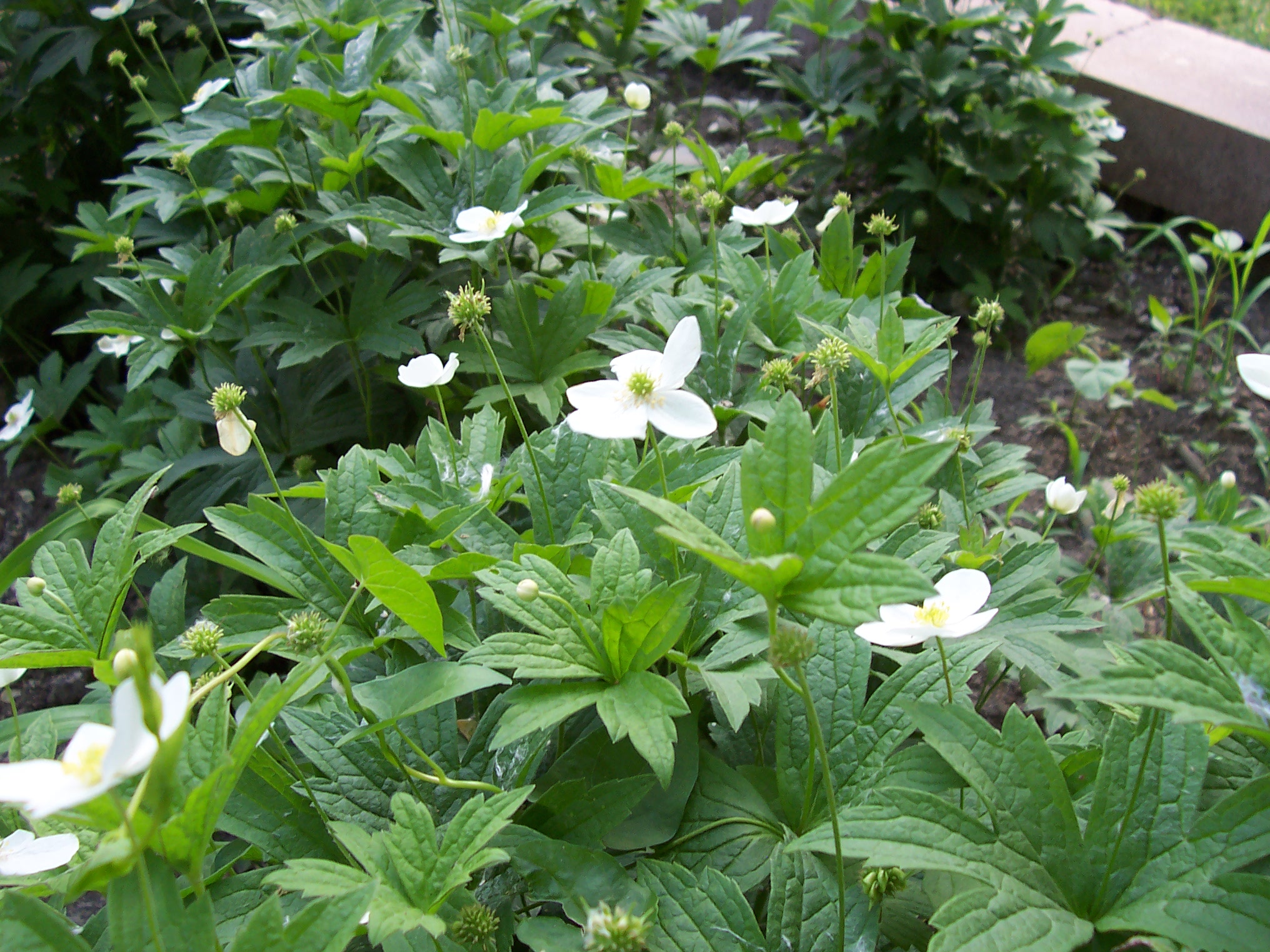
Blooms greenish-white on stiff stems above leaves in early summer. Erect. Leaves widely spaced in levels along stems producing an appealing architectural effect. Ornamental, thimble-shaped seed heads last through winter. Height: 2-3'. Width: 12-16". Medium to dry, average soil. Wood edge, or in open woods where Wild Geranium is a good companion. Self-sows freely. Deadhead to prevent.
Thin-Leaved Sunflower (Helianthus decapetalus) - PART SHADE
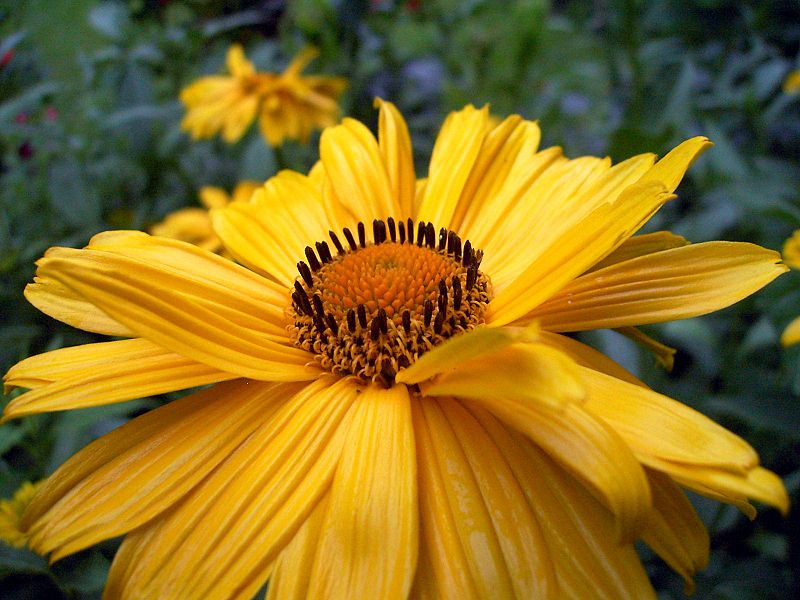
Yellow, 2-4" wide, daisy-like flowers in late summer and early fall. Height: 2-5'. Part shade. Moist, average soil. Spreads aggressively by underground rhizomes. Circle clump with a sharp spade in spring and pull out undesired stems. Best used for naturalizing, especially on banks. Bird and butterfly plant. Shadier rain garden plant.
Toadshade (Trillium sessile) - MORNING SUN TO BRIGHT SHADE
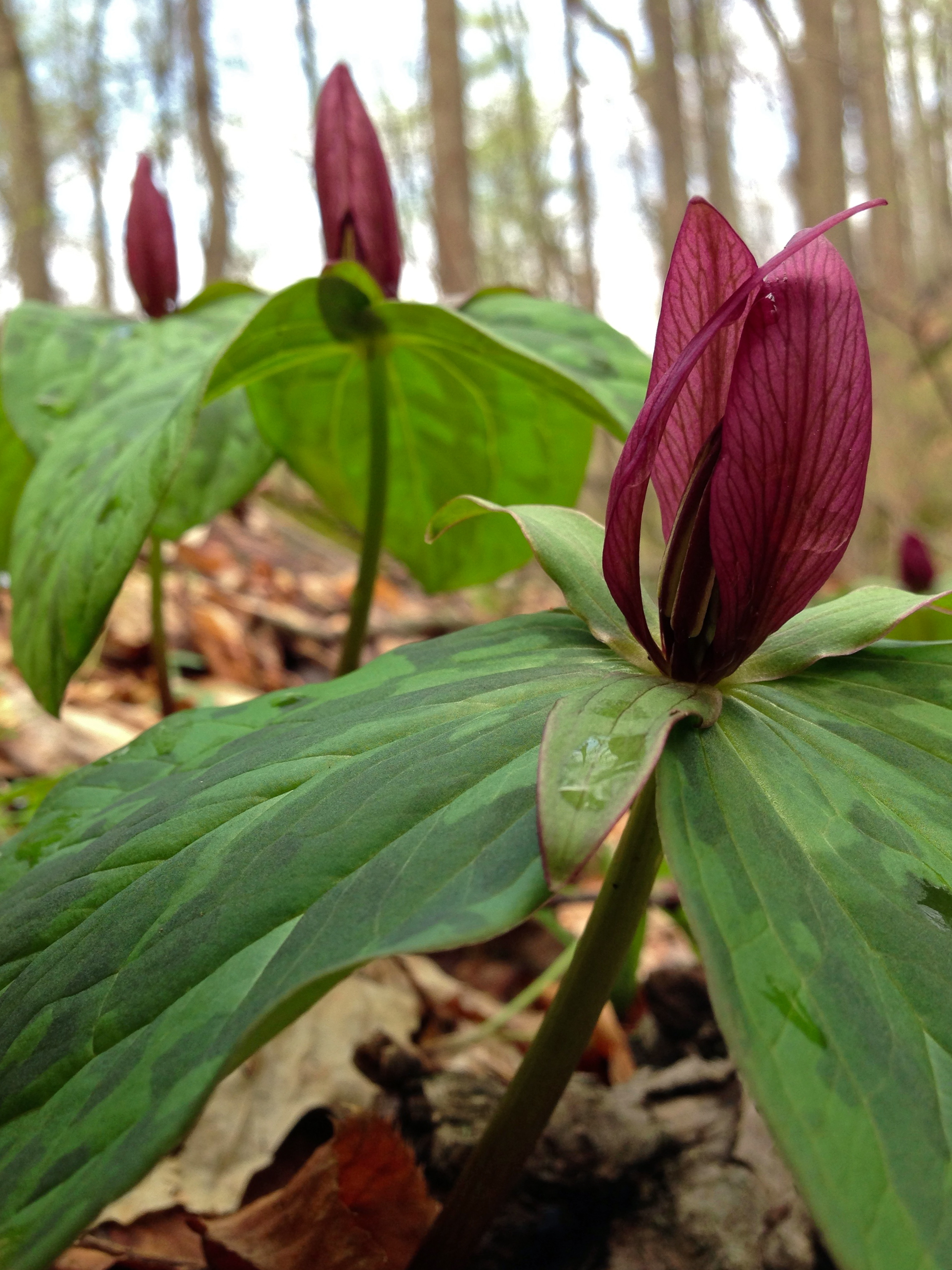
Deep red, bud-like, 3-petaled flowers held close to the center of 3-leaved plants. Foliage mottled. Height: to 12". Other cultural requirements the same as for Trillium erectum. Often found growing on slopes with Trout Lily in wild areas. This is the most deer resistant trillium species.
Trumpet Honeysuckle (Lonicera sempervirens) - PART SUN OR SUN
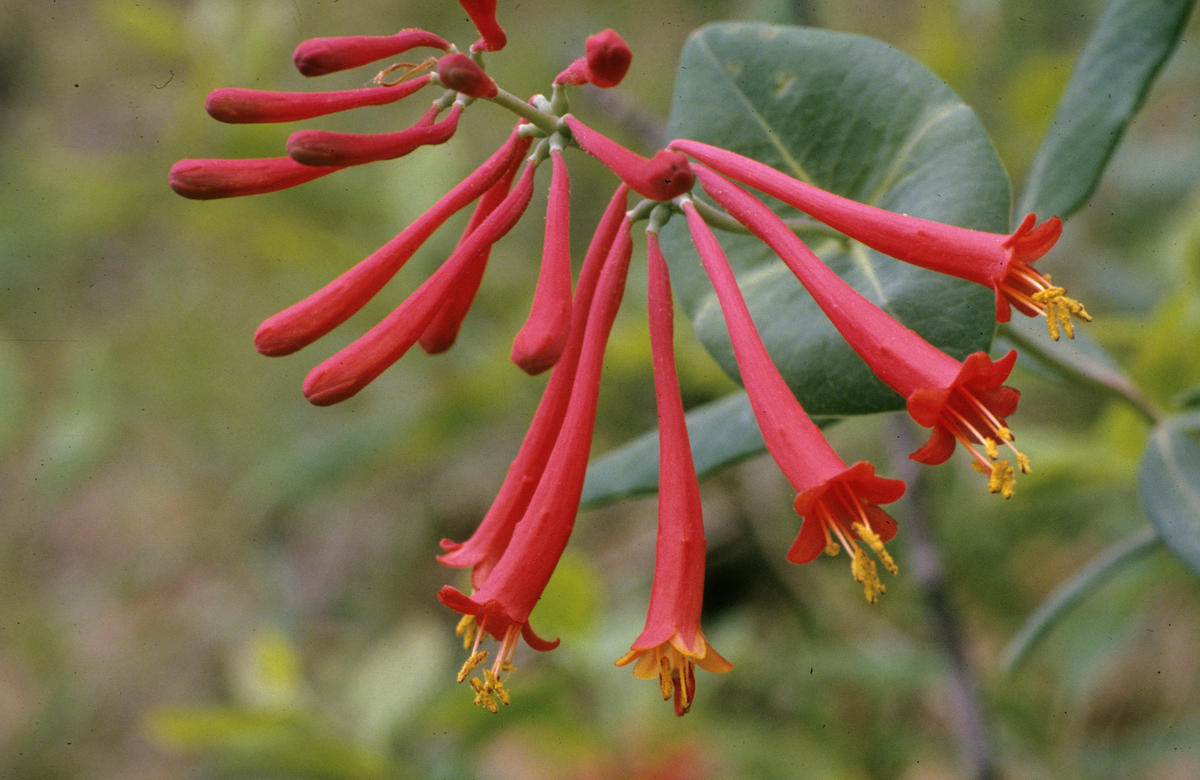
Deciduous vine. Clusters of 1-2" long, red, tubular blossoms throughout the growing season. Red berries. Paired leaves pierced by the stem. Requires strong support, but vines become thicker and woodier with age. At least part sun for longer blooming season. Rich, moist soil. Prune to several large stems and remove most suckers at the plant base in late fall. Aphids may be a problem. Use a strong spray of water to dislodge, but, in general, avoid overhead watering. Lovely along a fence. Great wildlife plant, especially for hummingbirds.
Turk's Cap Lily (Lilium superbum) - PART SUN
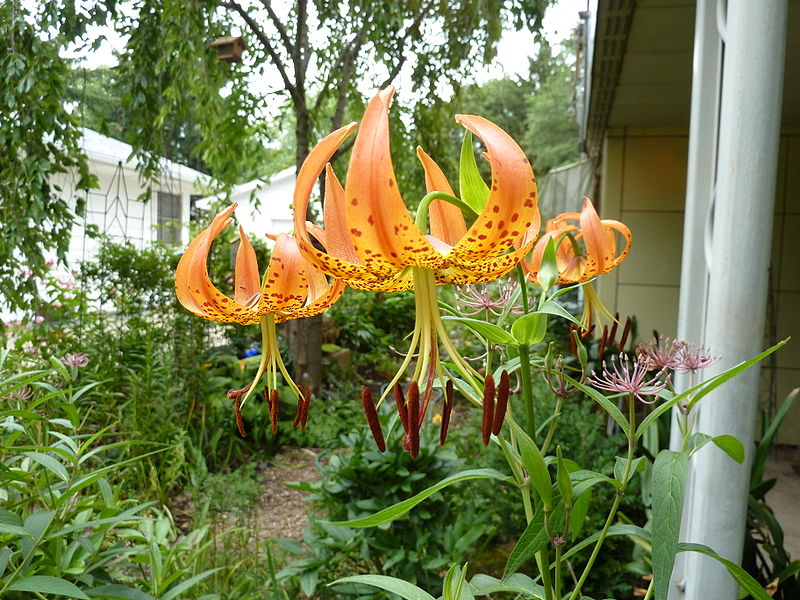
Multiple, orange blooms with strongly recurved petals on tall stems in July. Whorled leaves. Height: 8'. Width: 18". Part sun. Consistently moist, but not wet, soil, especially during active growth period. Incorporate plenty of compost to improve water retention and drainage. Plant bulb no deeper than 6", depending on size. Best to protect from rodents with underground cage of hardware cloth or with coarse gravel mixed into surrounding soil. Top growth must be protected from rabbits and deer. Mulch to keep roots cool, or plant so roots will be shaded. Elegant near water, in a moist meadow or scattered in a border. Dig and divide bulbs after foliage declines in fall.
Twinleaf (Jeffersonia diphylla) - PART SHADE
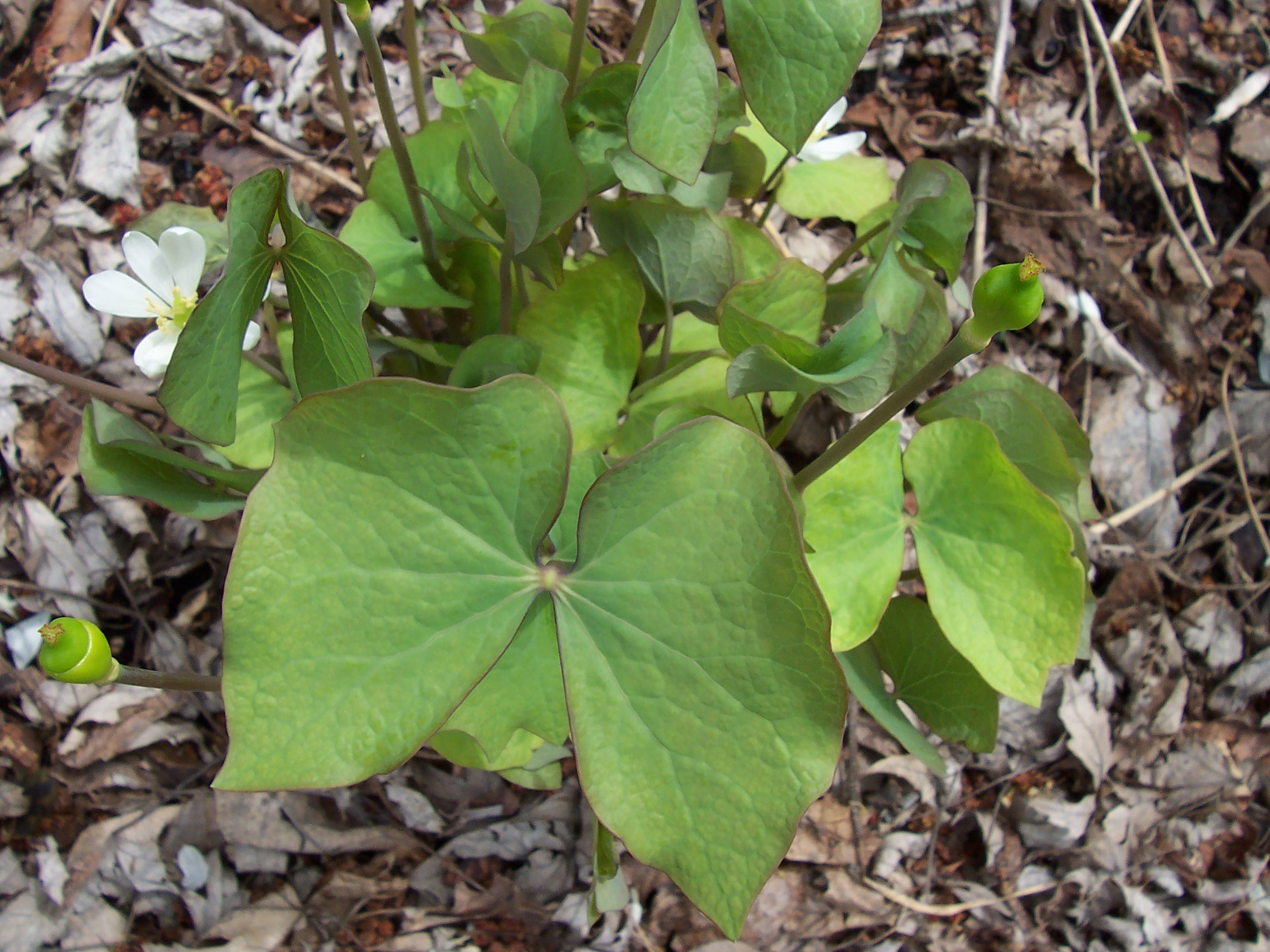
Blooms white, very briefly, in early spring. Mainly a foliage plant. Leaves resemble large butterfly wings. Height and width: 12-16". Part shade. Moist, near-neutral, rich soil. Dust soil occasionally with horticultural lime. Use as a taller groundcover under deciduous trees or in a woodland garden, setting plants one foot apart, or combine with finer foliage plants such as ferns for a nice texture contrast. Self-sows. Deer resistant.
Virginia Bluebells (Mertensia virginica) - PART SHADE TO SHADE
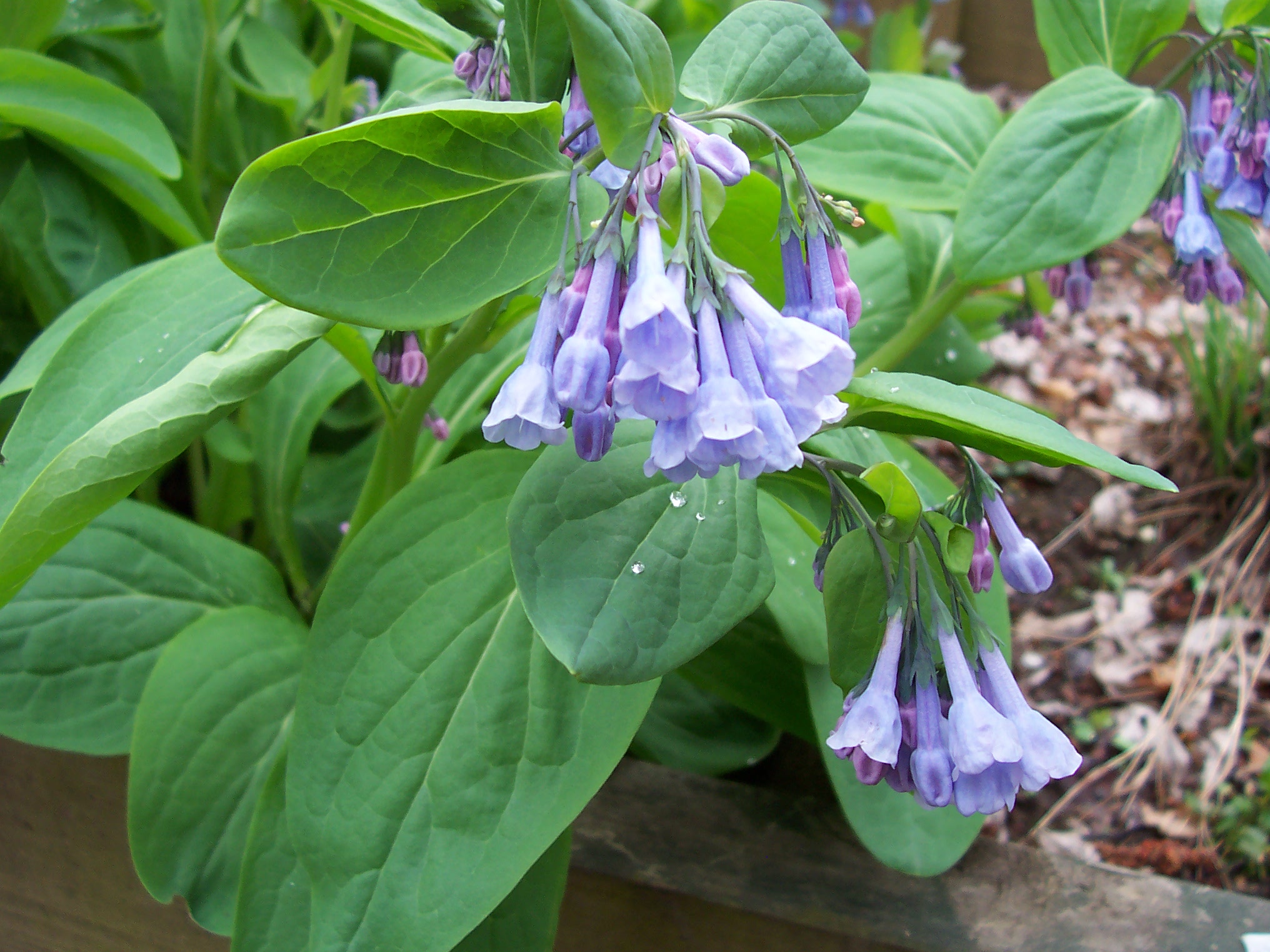
Spring ephemeral. Pink in bud, light blue in bloom in spring. Flowers bell-shaped and in clusters. Height: 14-20". Width: to 16". Part shade to shade. Moist, rich soil. Dust soil occasionally with horticultural lime. Just after bloom, leaves turn yellow and plants go dormant. Plant with other species such as ferns, Wild Ginger or White Wood Aster to follow. Will grow well under deciduous trees and shrubs. Use in shade borders, woodland gardens and for naturalizing in low areas. Easy to grow. Multiplies steadily. Long-lived. Shadier rain garden plant. Deer resistant.
Virginia Mountain Mint (Pycnanthemum virginianum) - PART SUN OR SUN
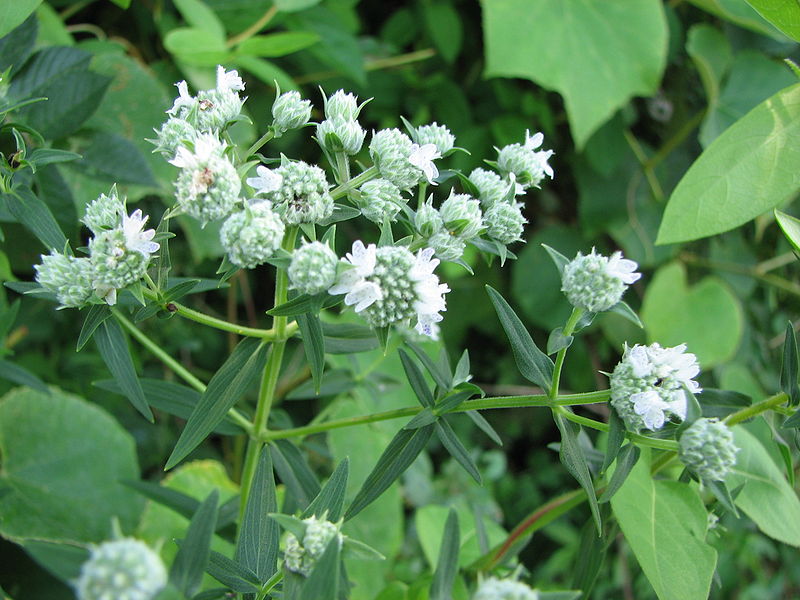
Blooms white in roundish heads in mid- to late summer. Minty fragrance. Height: 2-3'. Width: 2-3'. Sun to part sun. Average soil. Needs space as it spreads aggressively on rhizomes. Use for naturalizing in a meadow or wildlife garden, especially a butterfly garden as the plants are excellent nectar sources. Tough. Drought tolerant. Rain garden plant. Deer resistant
Virginia Waterleaf (Hydrophyllum virginianum) - SHADE
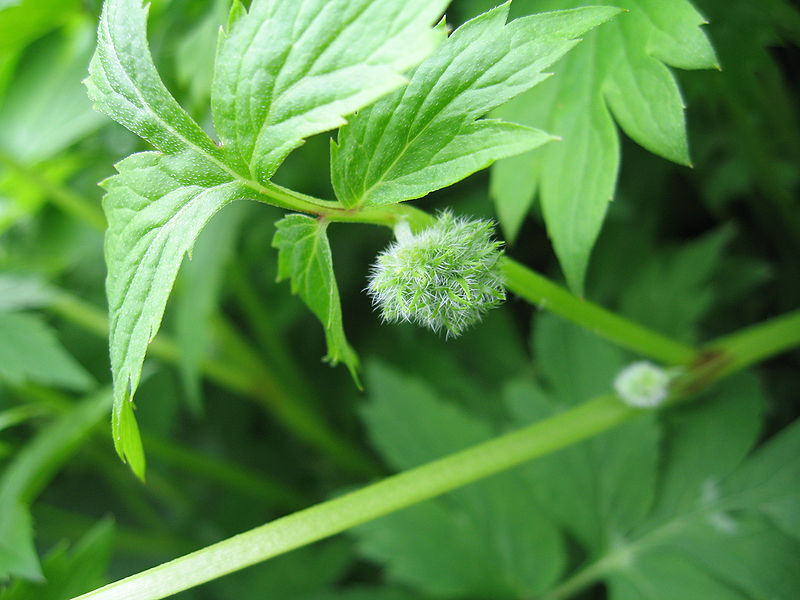
Similar to Hydrophyllum canadense. Culture and use information the same. Shadier rain garden plant.
Virgin's Blower (Clematis virginiana) - MORNING SUN TO BRIGHT SHADE
Vine. Produces masses of fragrant white flowers in late summer. Seed heads are clusters of silky hairs, attractive into fall. Length: to 30'. Morning sun to bright shade. Moist, average soil. Transplant with care in early spring. Stems are brittle. One to two years required to adapt to new location. Provide support. This is an aggressive species best used for naturalizing among shrubs or to grow over a strong pergola or along a fence. Shadier rain garden plant.
White Beardtongue (Penstemon digitalis) - SUN TO LIGHT SHADE
White, tubular blossoms on tall, stiff stems above the foliage in late spring and early summer. Height: 2-4'. Width: 14-18". Sun to light shade. Moist, average soil. Clumping habit. Semi-evergreen. Fertile soil encourages heavy bloom. Use in borders, open woods, meadows or on slopes. Can be an aggressive self-sower. Deadhead to prevent. A showy, yet low maintenance plant. Bowman's Root is a nice companion. Rain garden plant. Deer resistant.
White Flat-topped Aster (Doellingeria umbellata) - PART SUN
Flat clusters of white flowers with yellow-green centers in late summer. Clean foliage. Bushy. Needs space. Height: 3-7'. Width: 3-4'. Part sun. Moist, average soil. Cut back by half in June to control height. Self-sows aggressively. Deadhead to prevent. Divide every 4-5 years. One of the earliest blooming asters. Adaptable and easy. Good fall nectar source and food plant for butterfly larva. Rain garden plant.
White Trillium (Trillium grandiflorum) - MORNING SUN TO BRIGHT SHADE
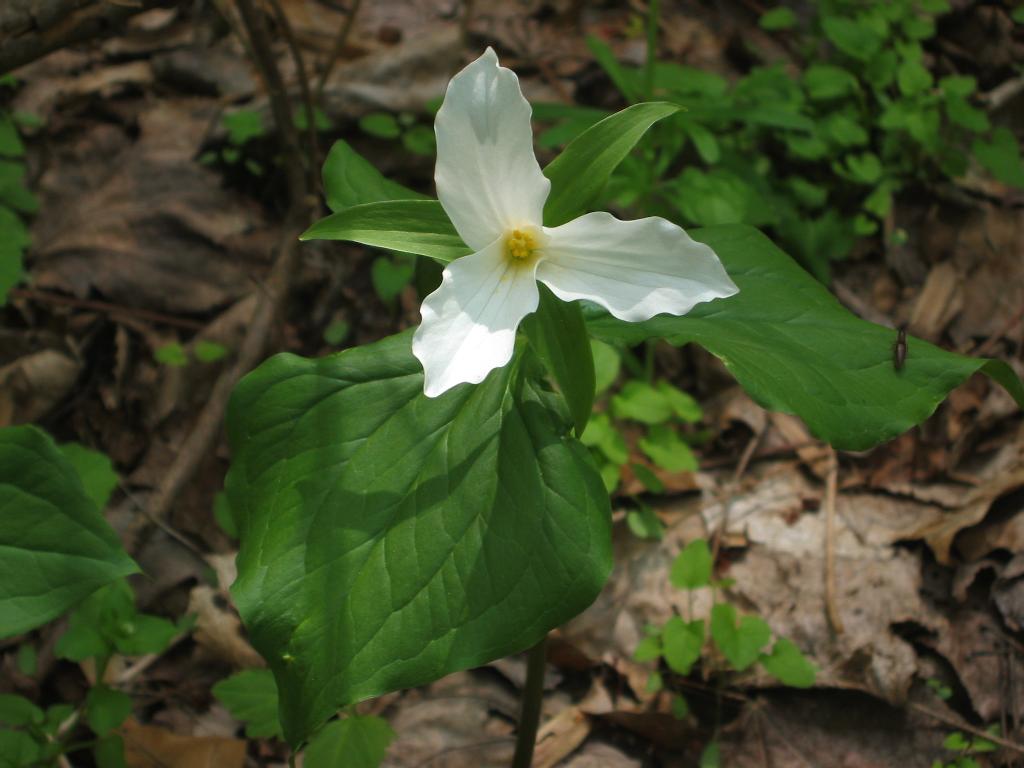
Large, white, 3-petaled, showy blooms which fade to pink as they decline. Flowers held well above 3 leaves. Height: to 20". Moist, well-drained, near-neutral soil. Dust soil lightly with horticultural lime each fall. Morning sun to bright shade. Other cultural requirements the same as for Trillium erectum, above.
White Turtlehead (Chelone glabra) - PART SUN
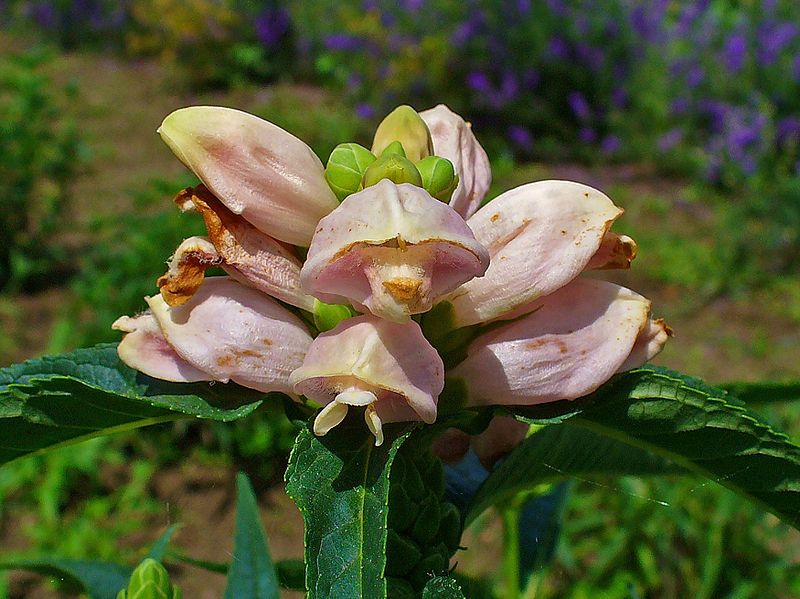
Flowers white tinged with pink and clustered among top-most leaves in late summer. Height: 3'. Width: 2'. Part sun. Moist to wet, average soil. Good for somewhat shady spots, but blooms best with at least a few hours of sun. Adaptable, but cannot tolerate drought. Pinch tips in June to control height and promote bushiness. Easy to divide and transplant in spring. Foliage will remain attractive into October with enough moisture. Difficult to confine to neat clumps due to wide-ranging rhizomes, so best used for naturalizing. Cardinal Flower and Great Blue Lobelia are nice companions. Trouble free. Shadier rain garden plant. Deer resistant.
White Wood Aster (Eurybia divaricata) - MORNING SUN TO BRIGHT SHADE
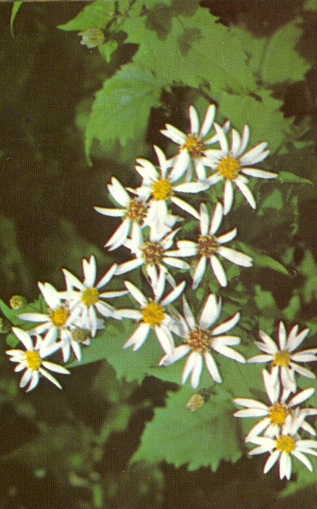
White flowers with rose centers in fall. Bushy plants if they have good strong light. Height: 1-3'. Width: 1-1½'. Morning sun to bright shade. Average soil. Spreads by rhizomes and self-sows. Deadhead to prevent. A good transition plant between woodland or shrubs and lawn. An alternative for dry shade. Nice mixed with mainly foliage plants such as Coral Bells. Adaptable and easy. Good fall nectar source and food plant for butterfly larva. Deer resistant
Whorled Aster (Oclemena acuminatus) - PART SHADE TO SHADE
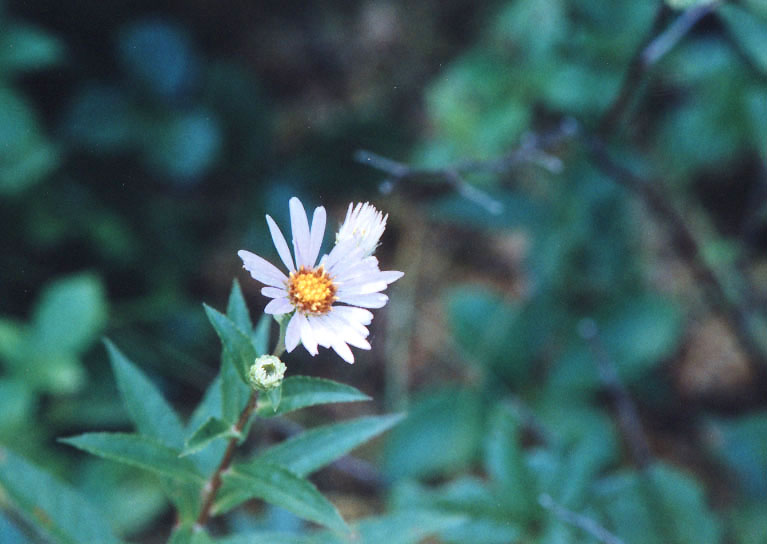
Also called Sharp-Leaved Aster. White or purple-tinged, daisy-like flowers to 2" wide in fall. Leaves appear to be whorled around stems. Height: 8-36". Part shade to shade. Rich soil. Average moisture. Prune tips in late spring to control height. Deadhead after flowering to prevent self-sowing. Provides fall color for the woodland garden. Good fall nectar source and food plant for butterfly larva.
Whorled Rosinweed (Silphium trifoliatum) - SUN OR PART SUN
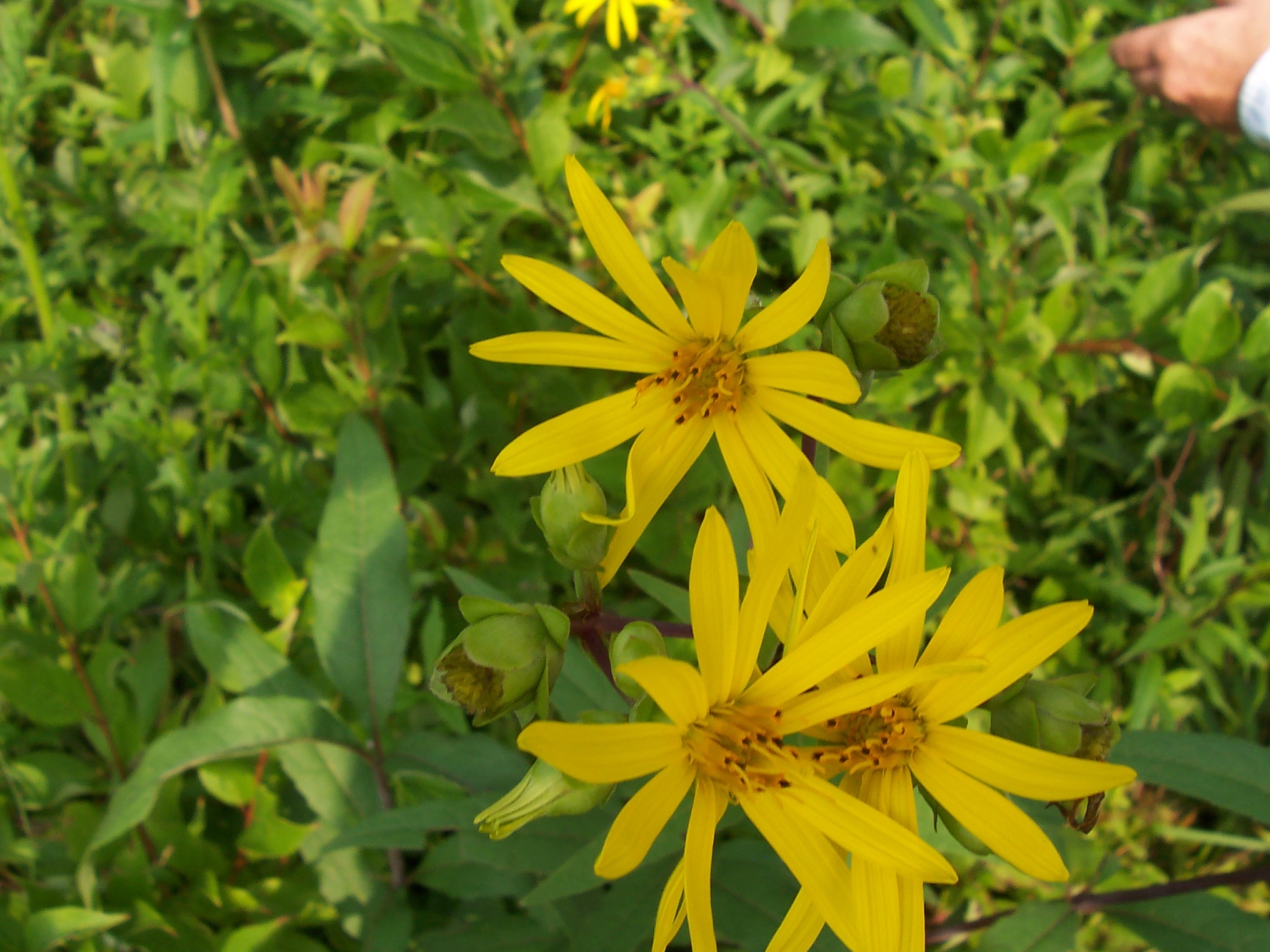
Clusters of yellow, daisy-like blooms in mid-summer. Height: 3-6'. Width: 2-3'. Sun or part sun. Moist to dry, rich soil. Drought tolerant once established. Choose planting site carefully as it is difficult to divide. Whole plants can be moved. Be sure to get the entire taproot out or it may resprout. Nice at the back of an informal border or in meadows. Seeds attract birds.
Wild Bergamot (Monarda fistulosa) - PART SUN
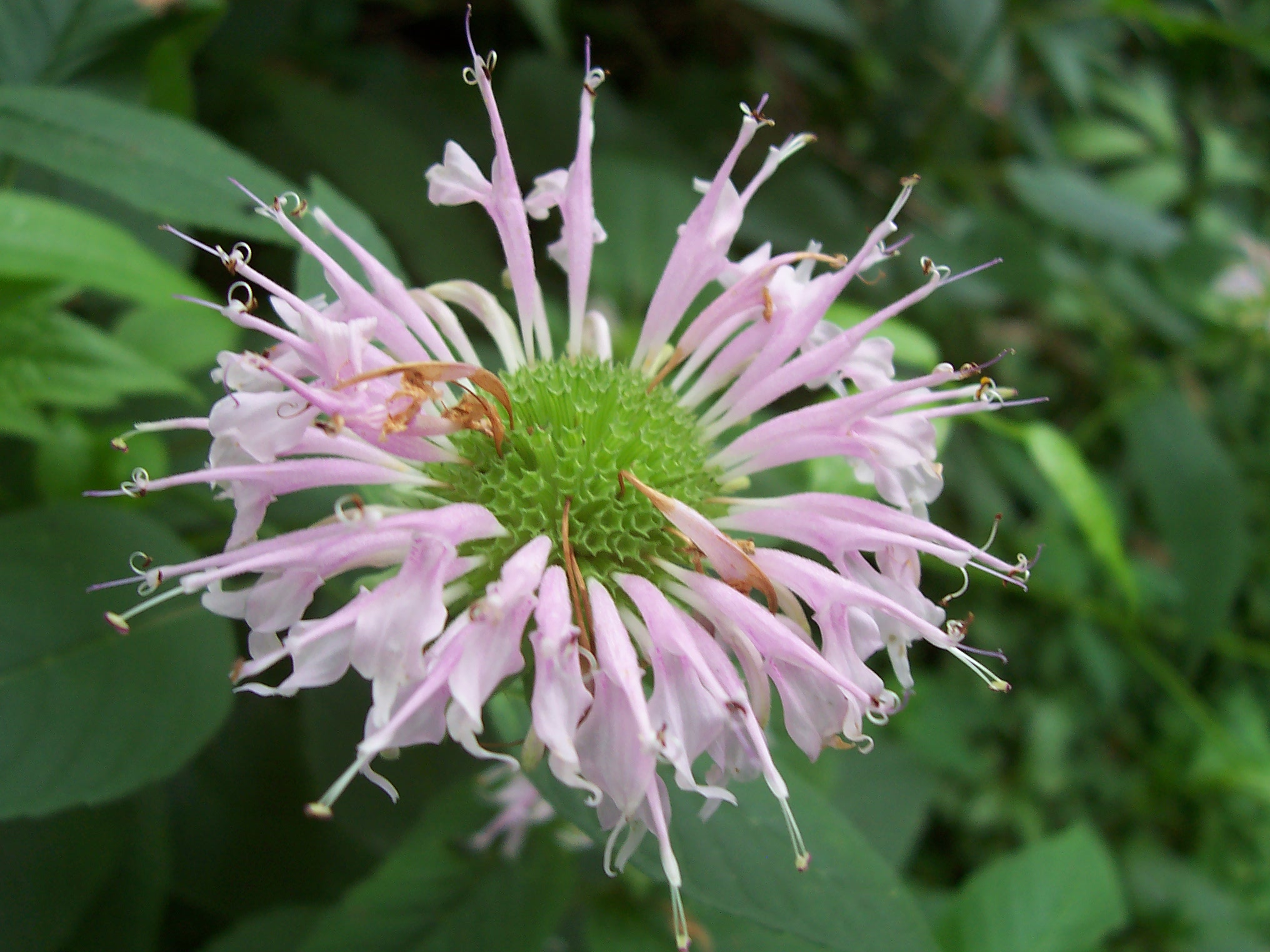
Blooms violet in summer. Height: 3-4'. Width: 18". Part sun. Will tolerate drier soils than the other Monardas. See Monarda clinopodia, above, for cultural information. This species is very nice in combination with Monarda media, or with the many yellow composite species which bloom at the same time. Hummingbird and butterfly plant. Deer resistant.
Wild Blue Phlox (Phlox divaricata) - PART SHADE
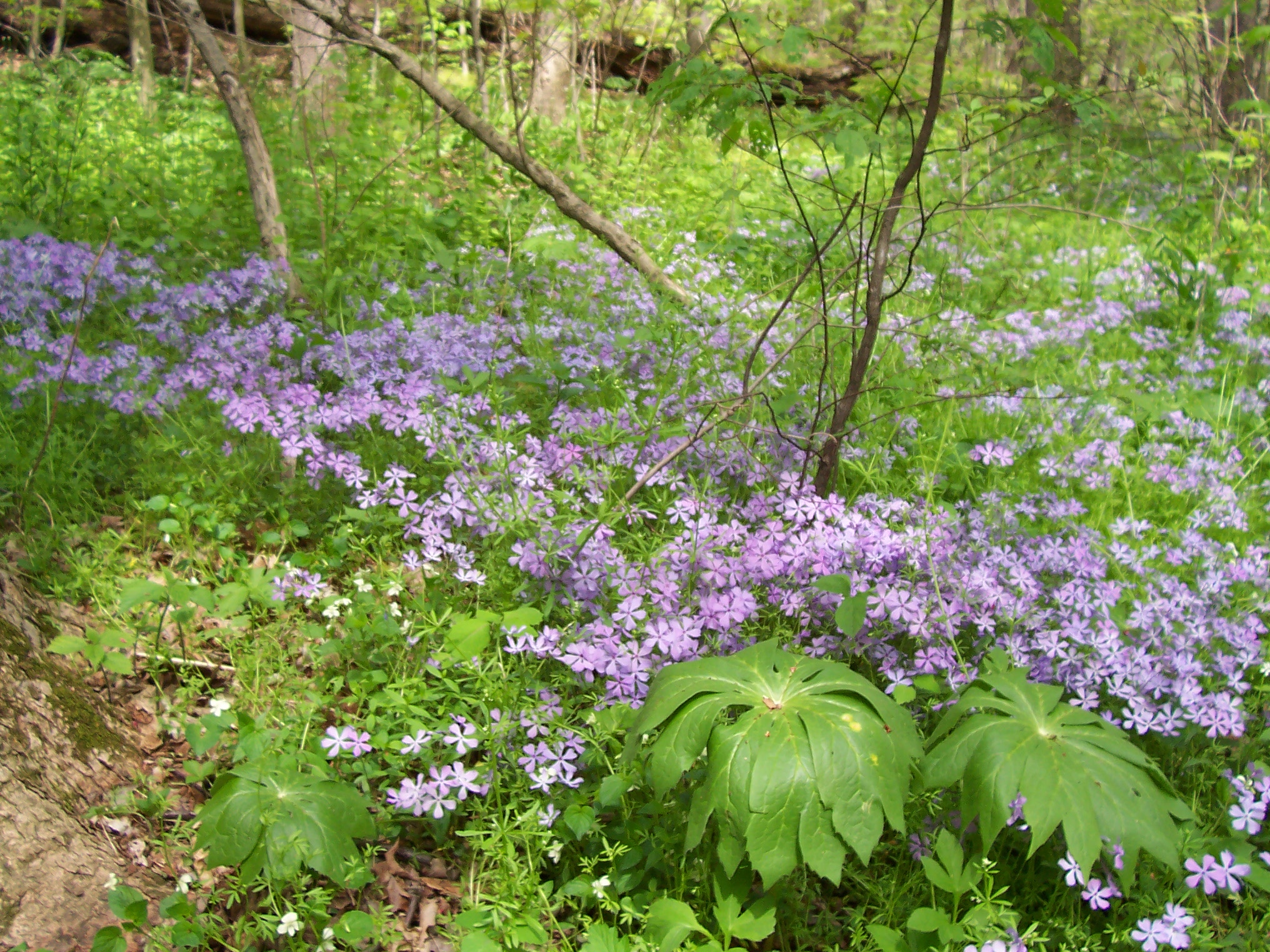
Lavender blue flowers in spring. Evergreen foliage. Height and width: 12-16". Part shade. Moist but well-drained, rich soil. Mulch to protect shallow roots. Flower stems die after bloom and seed set. Clip back to lower leaves. Forms ground-covering drifts. Good companions are Foamflower, later-blooming Creeping Phlox or spring bulbs. Mats may be lifted and moved in early spring. Fragrant. Easily grown but not deer or rabbit resistant. Shadier rain garden plant.
Wild Columbine (Aquilegia canadensis) - PART SHADE
Elegant, yellow and red, spurred blossoms on stiff stems above leaves in late spring. Height: 2'. Width: 1'. Part shade, especially in the afternoon. Average soil, moist in spring. Good drainage. Individuals may be short-lived, but plant self-sows. Use in rock gardens, massed or scattered here and there along a wood edge. Plants die back but do not disappear in summer. Cut back to basal foliage for neat appearance. Hummingbird plant.
Wild Geranium (Geranium maculatum) - PART SHADE
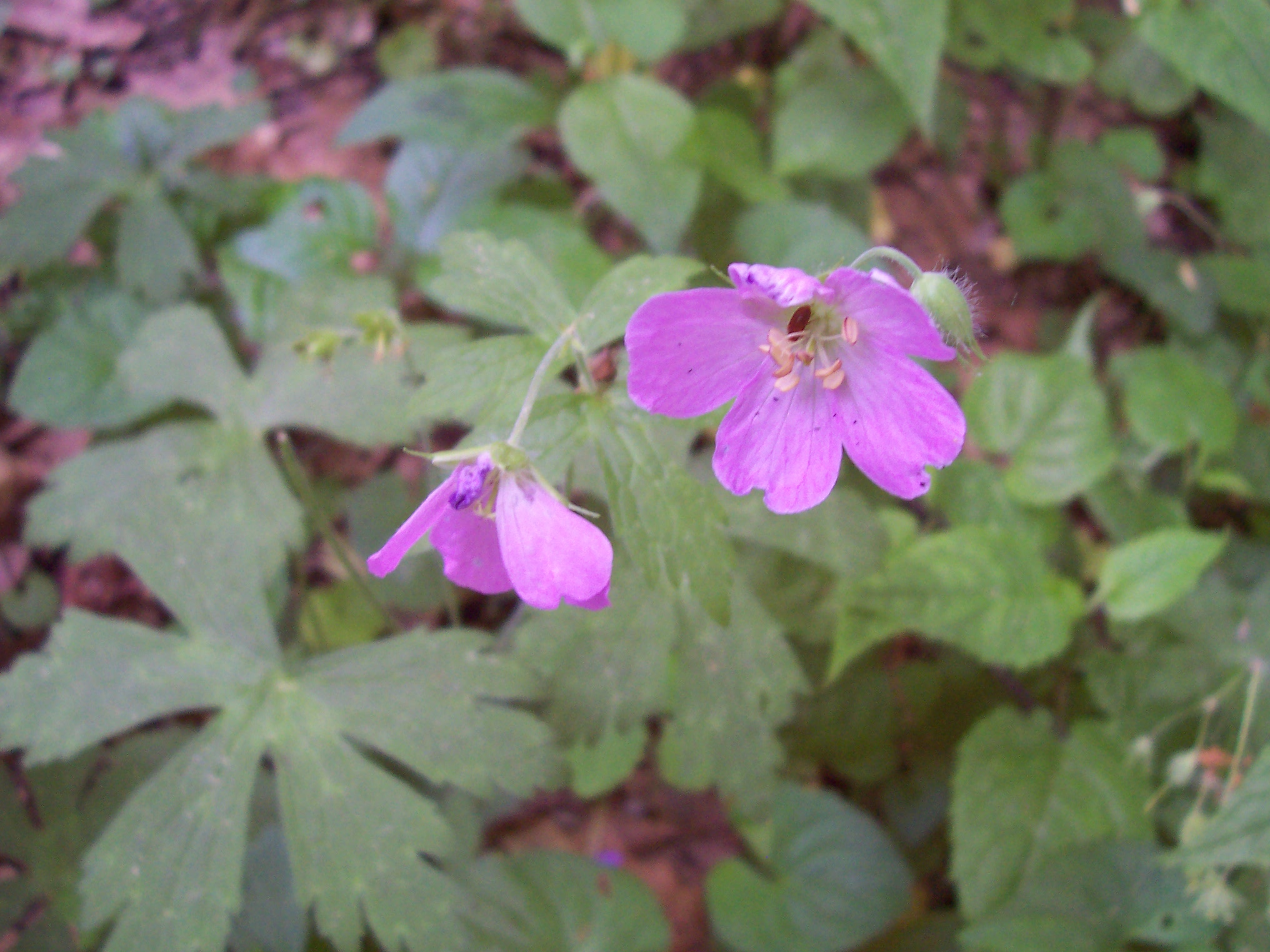
Blooms purplish-pink in spring. Deeply cut foliage which may turn red-purple in fall. Height: 14-18". Width: 1'. Part shade. Moderately fertile soil that stays moist, at least in spring. Readily self-sows and so is best used as a groundcover or filler in woodland gardens or at the wood edge. Smothers weeds. Spreads too quickly for a planned border. Rust may disfigure leaves but plants survive. Thimbleweed is a good companion plant as it can compete. Tough and adaptable. Easy. Shadier rain garden plant.
Wild Ginger (Asarum canadense) - PART SHADE
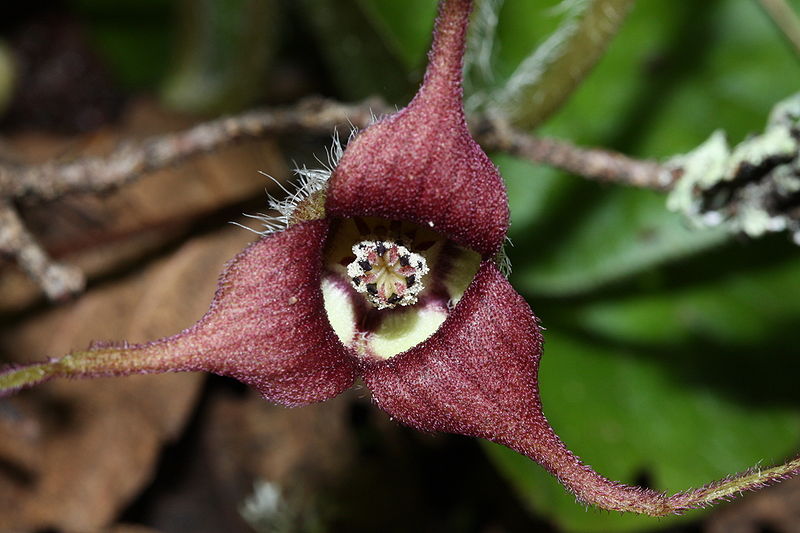
Deciduous groundcover. Bold, heart-shaped foliage. Inconspicuous, maroon, jug-shaped blooms under leaves in spring. Height: 6-8". Part shade. Moist, rich soil. Spreads moderately fast. Good stabilizer for a woodland slope or under shrubs. Nice contrasted with fine-textured foliage plants such as ferns. Carefree. Shadier rain garden plant. Deer resistant.
Wild Hydrangea (Hydrangea arborescenes) - PART SHADE
Deciduous, suckering shrub. Blooms creamy white in flat-topped clusters in early to mid-summer. Large, bold leaves. A woodland understory species. Height: 5'. Width: 10'. Part shade. Fairly moist, fertile soil. Often grows on moist, rocky banks in wild areas. Add a little balanced, organic fertilizer when planting. Benefits from cutting to the ground each year after leaves drop in fall. Shadier rain garden plant.
Wild Sarsaparilla (Aralia nudicaulis) - PART SHADE
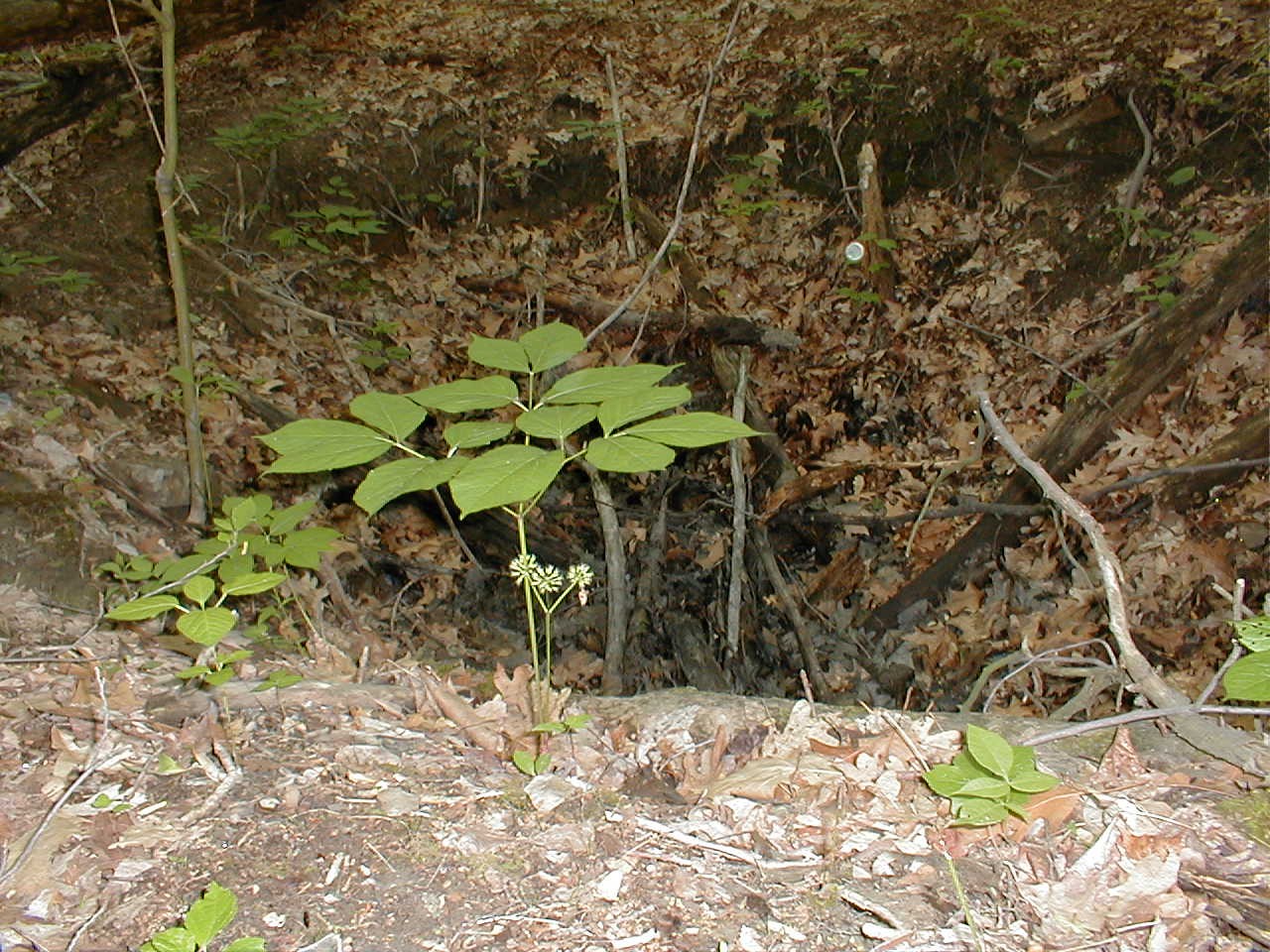
Greenish-white, round flower clusters on separate stalks held under umbrella-like leaves in late spring. Purplish-black berries follow. Height: to 15". Part shade. Average to dry soil. May be aggessive. Best for naturalizing in larger woodland gardens.
Wild Stonecrop (Sedum ternatum) -MORNING SUN TO SHADE
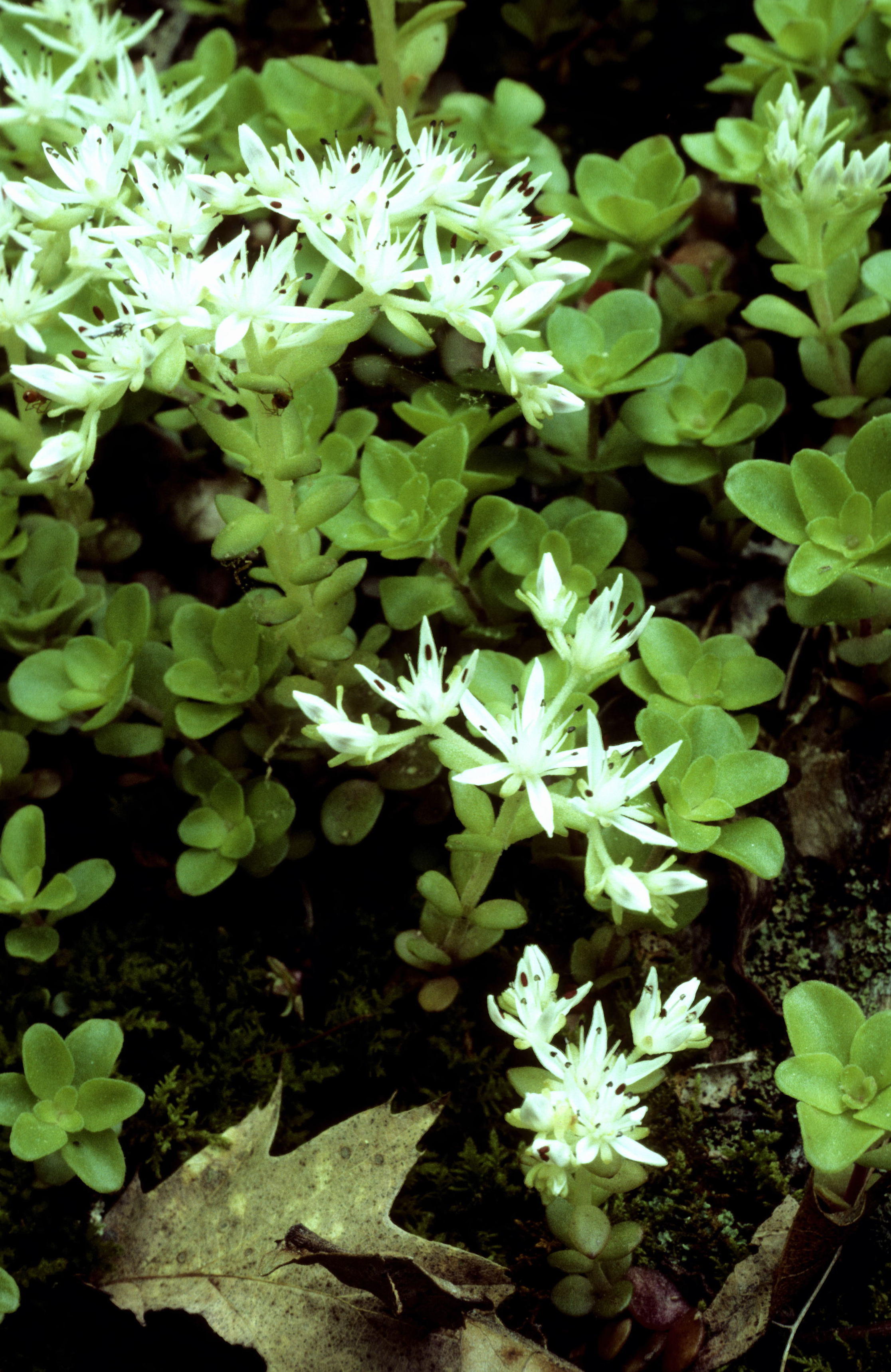
White, star-like blooms in spring. A fleshy plant. Height: 4-8". Spread: to 12". Morning sun to shade. Moist, well-drained, average soil. Easy to grow, evergreen groundcover. Spreads to form large mats. Use in rock crevices or in rocky soil, near stone walks or paths or under shrubs and trees. Also nice in pots. Deer resistant.
Wild Strawberry (Fragaria virginiana) - SUN TO PART SUN
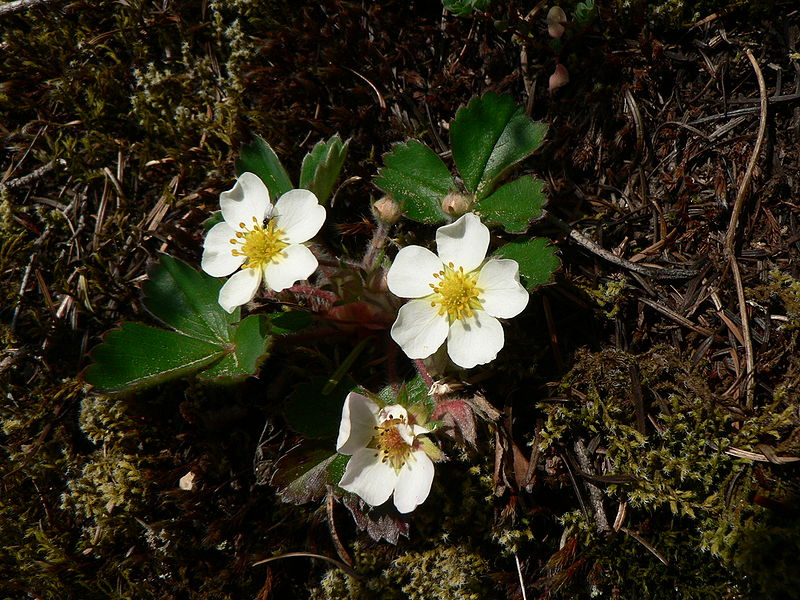
White flowers in spring followed by small, edible fruits in early summer. Spreads aggressively by runners. Height: 6-8". Sun to part sun. Moderate to dry, average soil. Loose groundcover for meadows among grasses and other meadow plants, or for open woods. Provides food for birds and small mammals.
Wintergreen (Gaultheria procumbens) - MORNING SUN TO BRIGHT SHADE
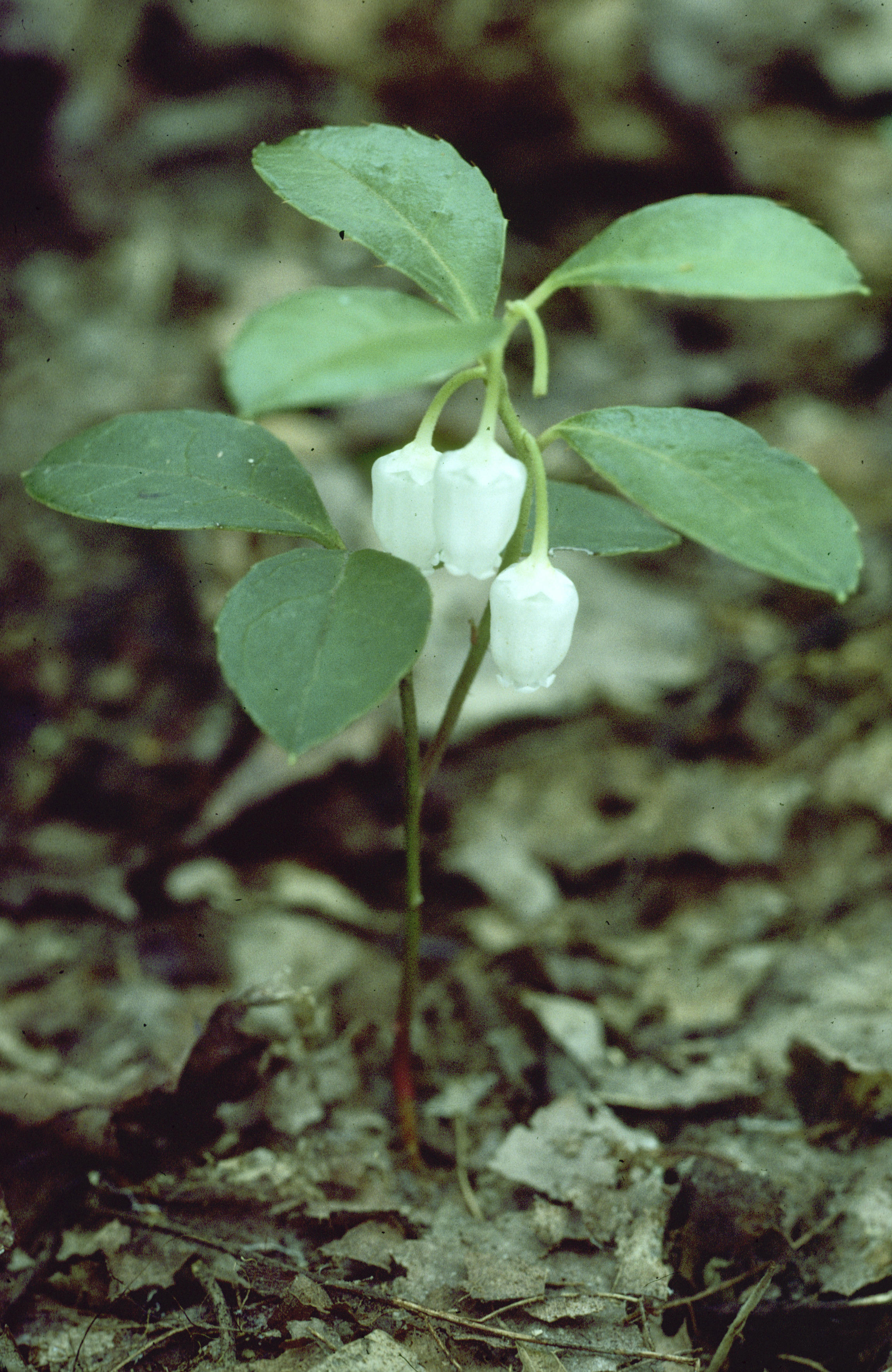
Evergreen groundcover. White-tinged-pink, bell-shaped flowers in summer. Shiny, bright green leaves. Edible, red berries in fall often remain on plants through winter. Height: 3-6". Spreads by underground runners to form loose colonies. Guide above-ground stems to produce more cohesive patches. Morning sun to bright shade. Moist to dry, humusy, acidic soil. Fertilize lightly in spring. An alternative for dry shade. Deer resistant.
Wood Poppy (Stylophorum diphyllum) - PART SHADE
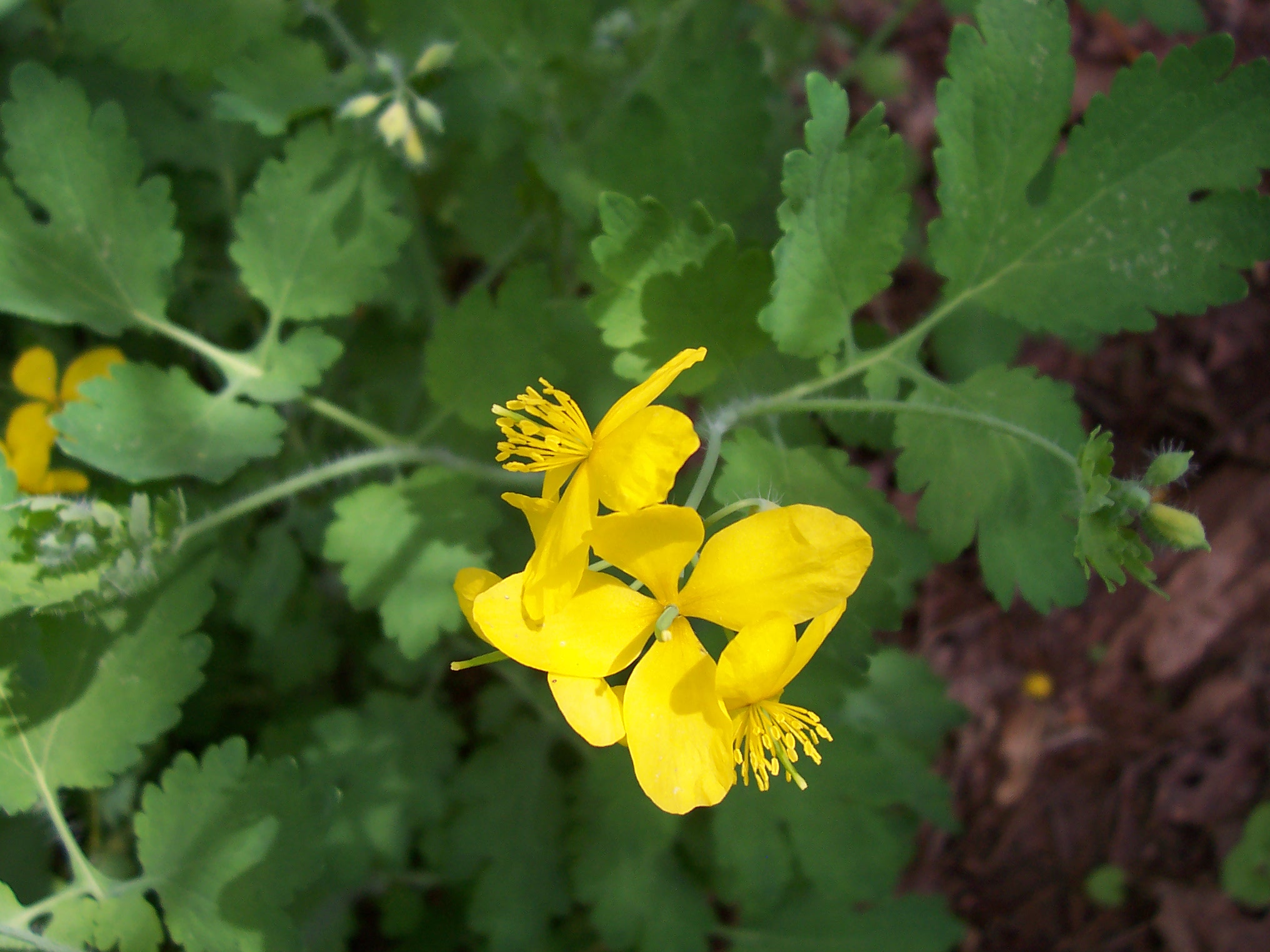
Large yellow-gold blooms in spring. Flowers light up shady areas. Height: 12-18". Width: 1'. Part shade, especially under deciduous trees. Moist, rich soil. Older individuals will go dormant after flowering. Ferns can be used to hide bare spots. Self-sows freely. Deadhead or remove seed pods to prevent. Best for naturalizing in woodland gardens in light shade. Good companions are Virginia Bluebells, Foamflower and Mayapple. Shadier rain garden plant. Deer resistant.
Woodland Sunflower (Helianthus divaricatus) - PART SHADE
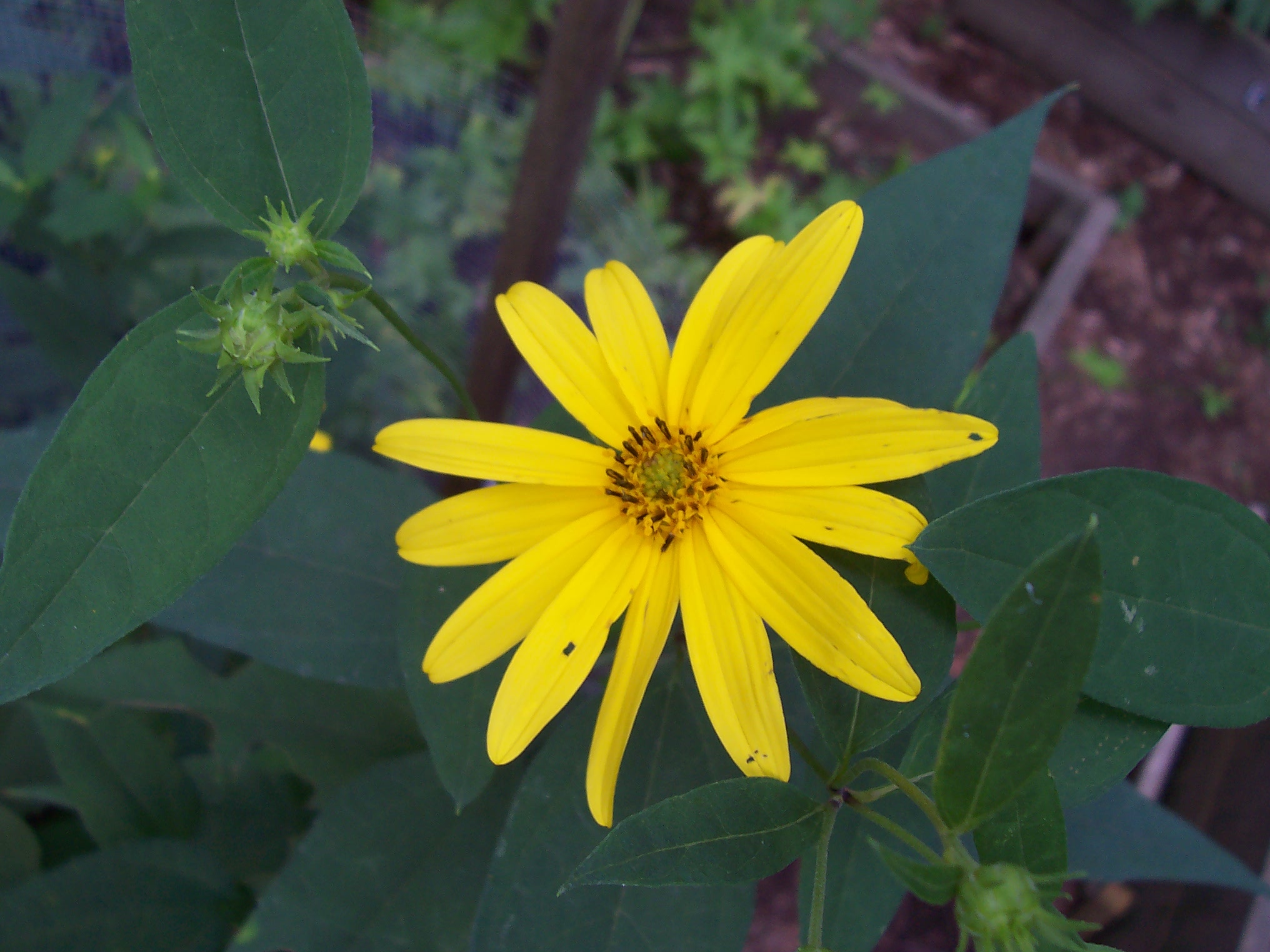
Yellow, 2-4" wide, daisy-like flowers in small clusters in summer. Height: 2-5'. Width: 3-6'. Moist, fertile to average soil. Part shade. Culture as for Helianthus decapetalus, above. Use for naturalizing in open woods or on banks. Bird and butterfly plant. Shadier rain garden plant.
Wreath Goldenrod (Solidago caesia) MORNING SUN TO LIGHT SHADE
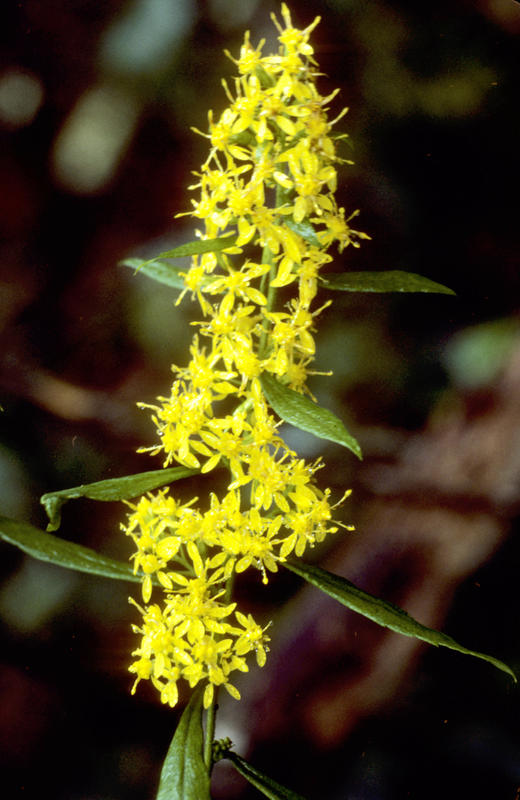
A species of goldenrod. Goldenrods play important roles in native ecosystems, stabilizing soil on hillsides and banks, providing excellent nectar sources as well as food and shelter for wildlife. Yellow flowers circle arching stems in fall. Height: 1-3'. Width: 1-2'. Morning sun to light shade. Moist to dry, rich soil. Transplant in spring to early summer only. Occasionally rust can be a problem. Remove affected plants and discard. (Do not compost.) Use at wood edge or in open woodland. Mix with asters and ironweeds for nice color contrast in meadows and borders. Can be used as a taller groundcover.
Yellow Harlequin (Corydalis flavula) - PART SHADE
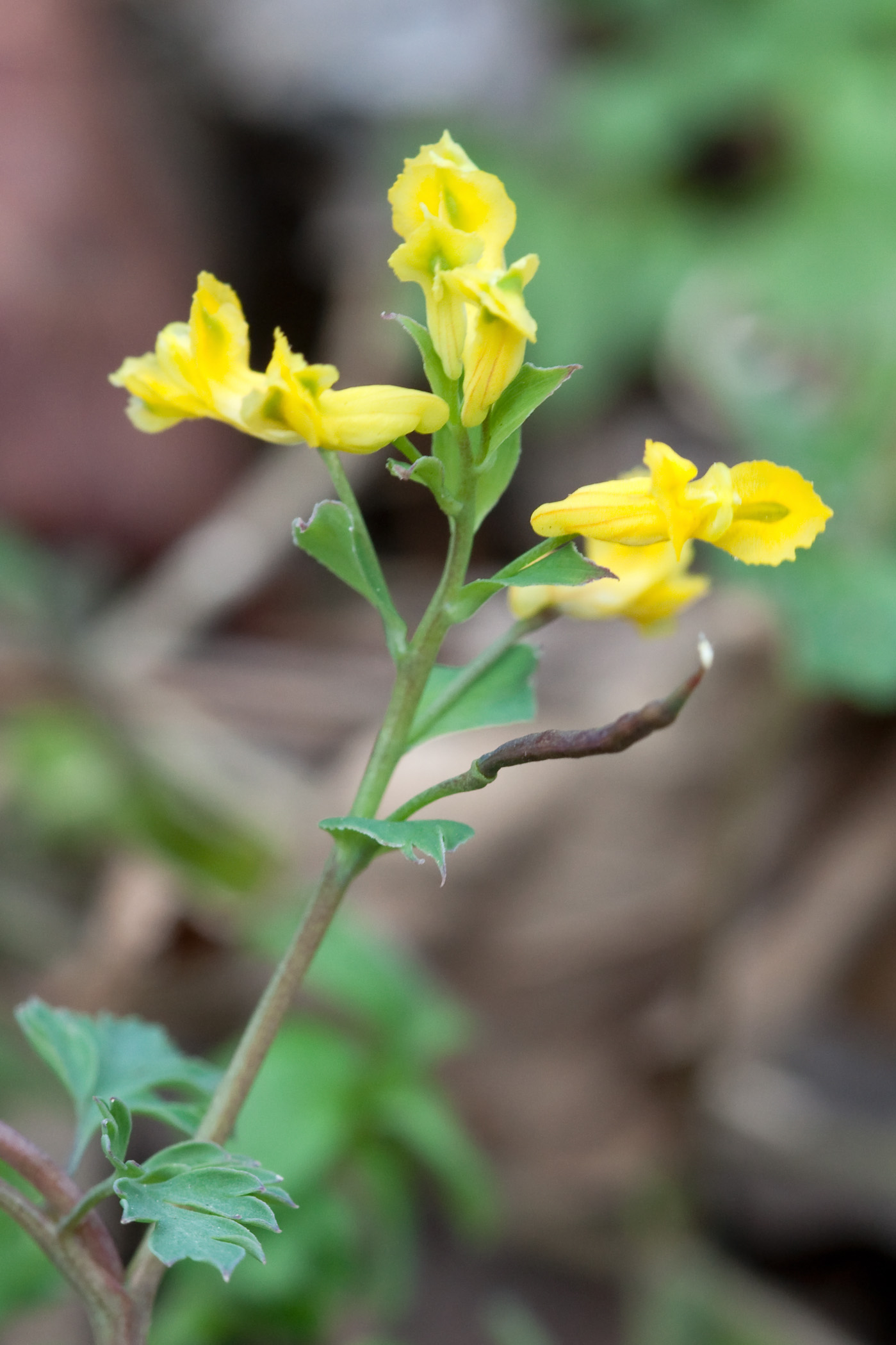
Biennial. Pale yellow, tubular flowers about ¼" long in spring. Foliage pale green and finely divided. Height: 6-15". Part shade. Rich, moist soil. Self-sows here and there. A filler plant for the woodland garden, open woods or wood edge. Deer resistant.
Zigzag Goldenrod (Solidago flexicaulis) - PART SHADE TO SHADE
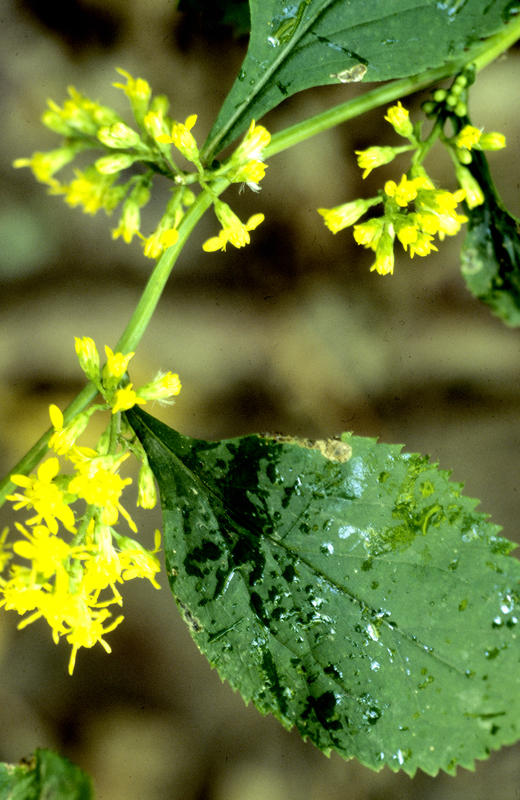
A species of goldenrod. Goldenrods play important roles in native ecosystems, stabilizing soil on hillsides and banks, providing excellent nectar sources as well as food and shelter for wildlife. Blooms yellow-gold in fall. Stems zigzag from leaf to leaf. Height: 1-3'. Width: 2-3'. Average soil. Part shade to shade. A species to brighten the woodland garden in fall. Goes well with the purples and blues of other fall-blooming species. Occasionally may develop rust. Remove badly infected plants and discard. (Do not compost.)
